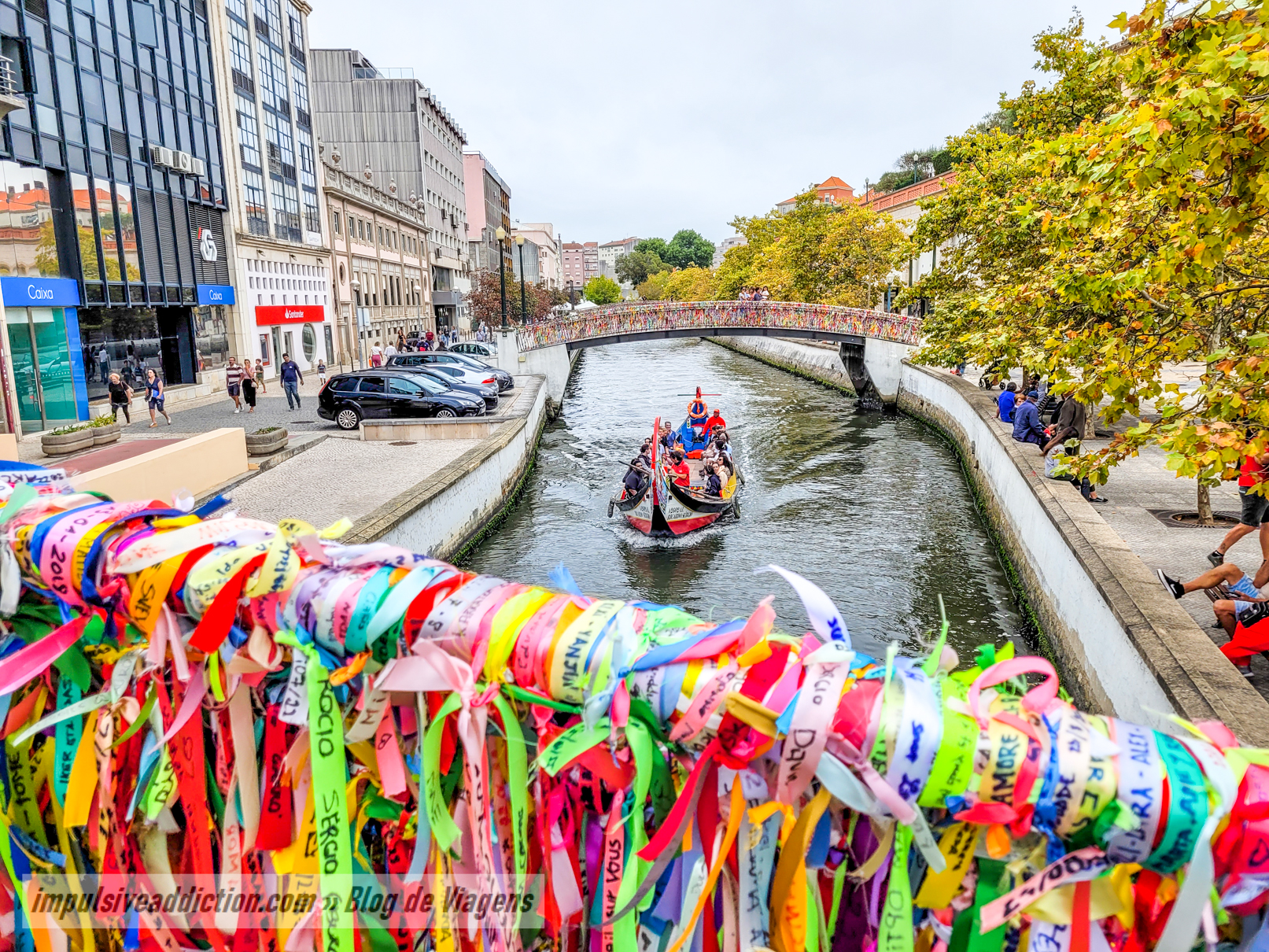Aveiro is a modern city, rich in Art Nouveau, and considered the Venice of Portugal, due to the canals of Ria de Aveiro that cross it in the heart of the historic center. In these canals you will love to take a cruise on a Moliceiro boat, typical of the region, and which is undoubtedly one of its highlights and attractions, decorated in a very daring way. 😉
I studied at the University of Aveiro during my degree, and since then I have the city in my heart. It is quieter than several other district capitals, and has the particularity of not having large differences in level, which allows for pleasant walks on foot or by bicycle, along fabulous trails or cycle paths. Aveiro has free bikes for you to use, called BUGAs, and I’ll write about them in this article. 😉
If you are thinking of visiting Aveiro in 1 day, I recommend a walk through the historic center. If you are going to visit Aveiro in 2 days, you should add a visit to the best beaches in Aveiro, in Costa Nova and Barra area. If you have 3 or more days to visit Aveiro, then you can dedicate yourself to many other activities in the region, such as crossing the estuary to São Jacinto. There are many things to do in Aveiro, as you will discover by reading this post.
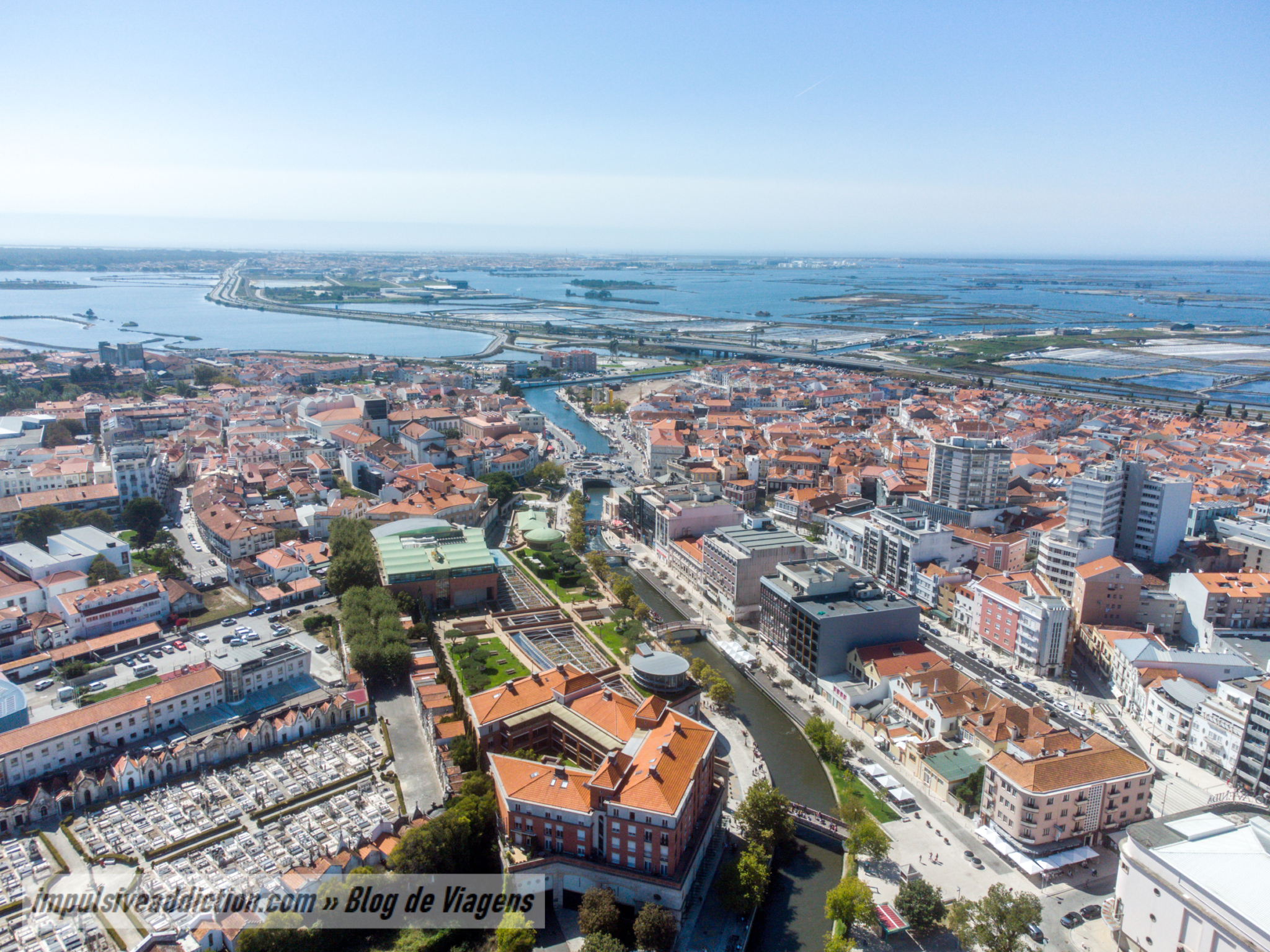
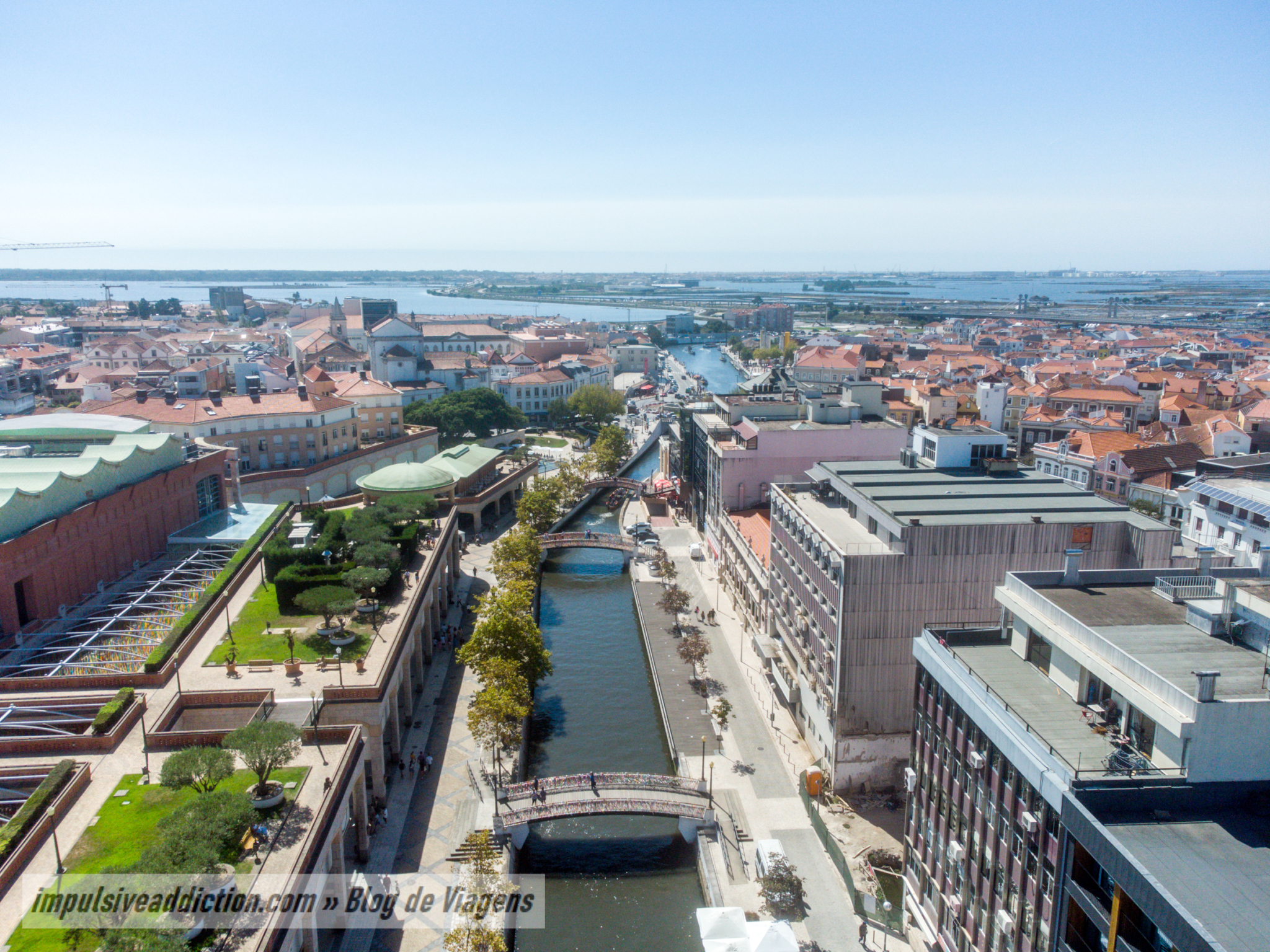
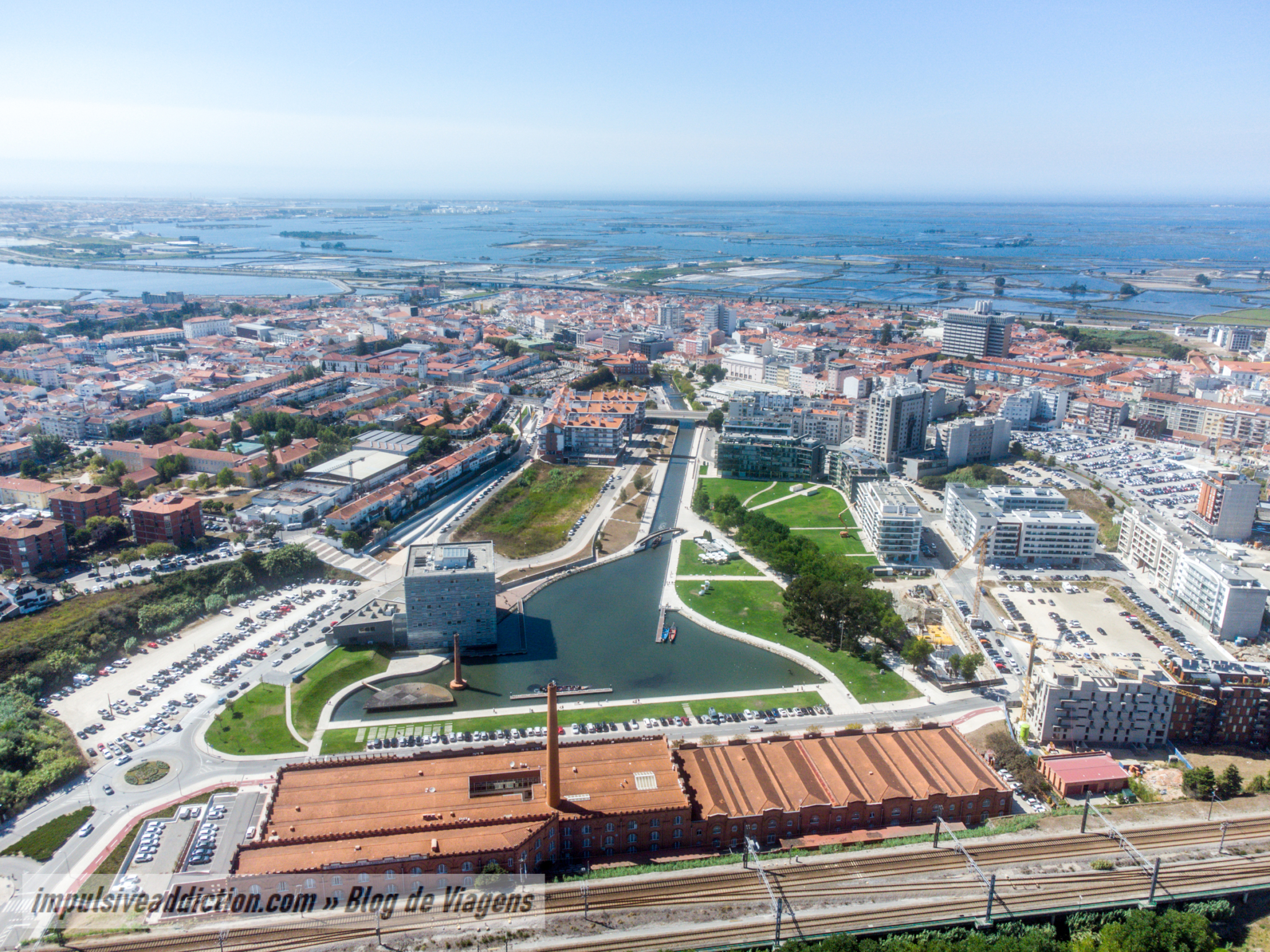
Where is Aveiro located, in Portugal?
Aveiro is a district capital of Portugal, located on the coast of the country between Coimbra and Porto. In it, Ria de Aveiro stands out, which extends over a good part of the district, with more than 45 km in length and 11 km at its maximum width.
MORE ARTICLES FROM CENTRAL PORTUGAL: - Things to do in Espinho - Things to do in Ovar - Aveiro to Costa Nova - Best beaches in Aveiro - Things to do in Mira beach - Things to do in Coimbra - Schist Villages in Portugal - Things to do in Figueira da Foz - Visit Monsanto in Portugal - Historical Village of Piódão - Historical Villages of Portugal - Things to do in Leiria - Visit Batalha Monastery and surroundings - Visit Alcobaça Monastery and surroundings - Things to do in Fátima - Visit Mira de Aire Caves - Things to do in Nazaré - Things to do in Peniche - Best beaches in Peniche - Visit Berlenga Island - Best beaches in Ericeira - Visit Ursa Beach - Best Beaches in Sintra - Best Beaches in Cascais - Best Costa da Caparica beaches - Best beaches in Setúbal - Best Beaches in Sesimbra - Visit Ribeiro do Cavalo Beach - Best beaches in Tróia, Comporta and Melides
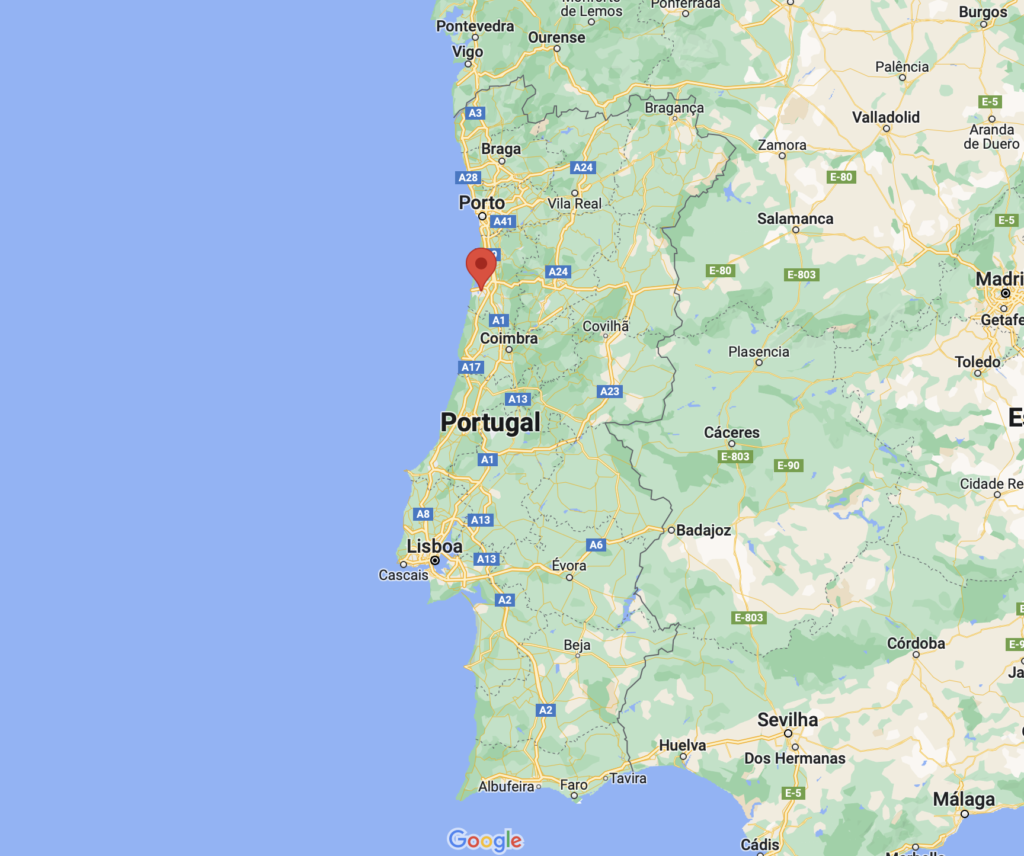
Travel Tips to visit Aveiro
1. Rent a car to visit Aveiro
No need to have a car to visit Aveiro, if you intend to just visit the city center. Just rent a car if you really want to go explore the surrounding area, going for a longer itinerary in Portugal.
If you do need a car, do your car research with Discover Cars before renting one. It allows very nice comparisons between the most common car rental companies.
2. How to get to Aveiro?
It is very easy to get to Aveiro, as there are frequent trains that arrive from Porto, Coimbra or even Lisbon. Aveiro Train Station can, in fact, be a starting point for an excellent 1-day itinerary of the city, entirely done on foot or by BUGA.
Always check Rome2Rio website to find out all the possible ways to reach your destination. Check also the trains website: CP – Comboios de Portugal, and Rede Expressos (buses). For public transport in Aveiro check Aveiro Bus website.
If you want to visit Aveiro but haven’t bought tickets to Portugal yet, I recommend that you use Skyscanner or Google Flights to do a search before buying them, comparing prices and flight conditions. You have many connections with Porto from abroad.
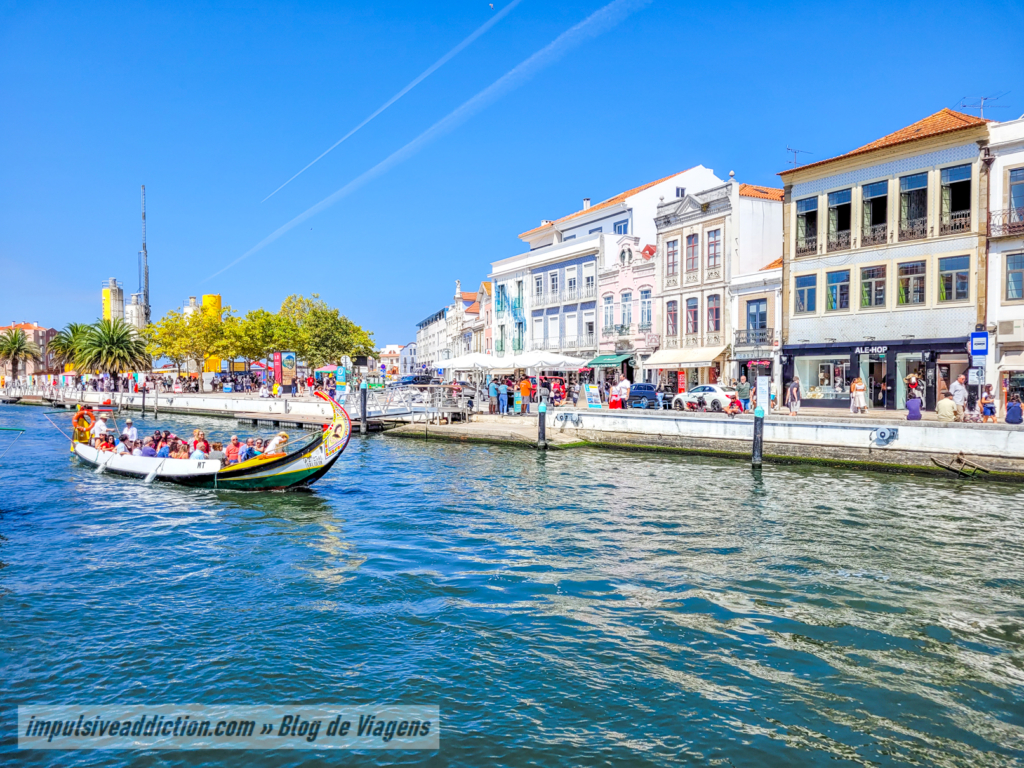
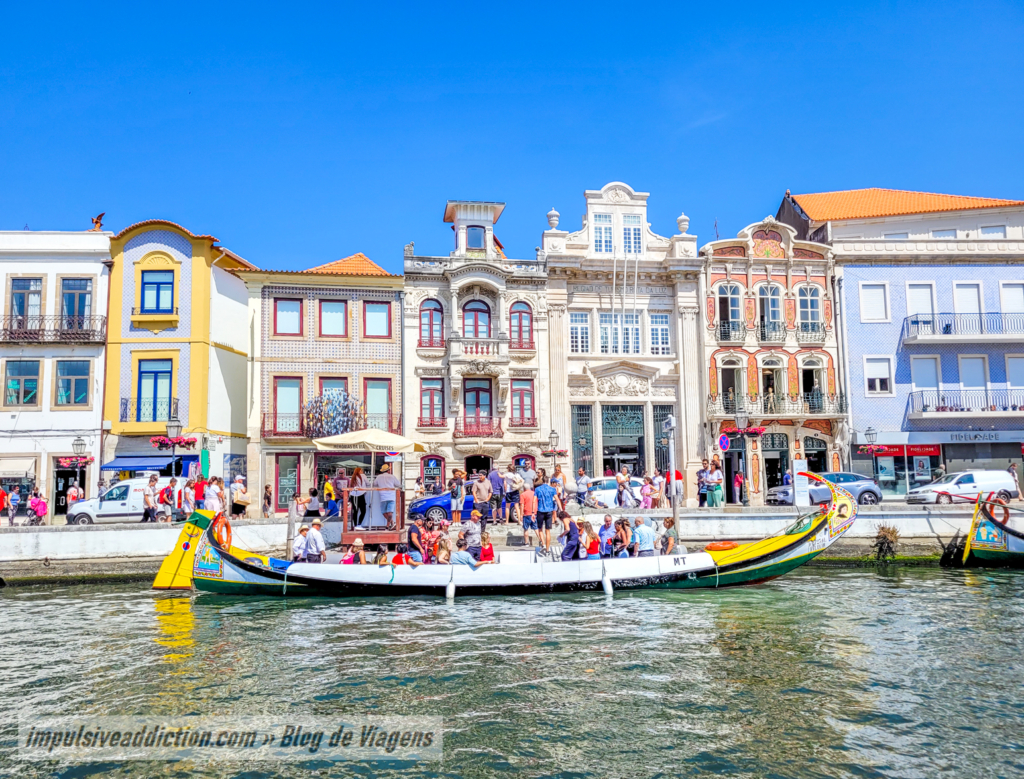
3. BUGAs – Free Use Bikes in Aveiro
BUGA bikes are really free to use in Aveiro and have been around for many years. They really do have zero cost, and are available to everyone at the BUGA store in Manuel Firmino Market. To get a bicycle, just leave an identification, and ensure the return of the bicycle at the same place by the appointed time. 😉
4. Take out Travel Insurance when visiting Portugal
To be protected against several types of travel hazards, I also recommend that you take out travel insurance for your stay in Portugal, and I recommend to do it with World Nomads.
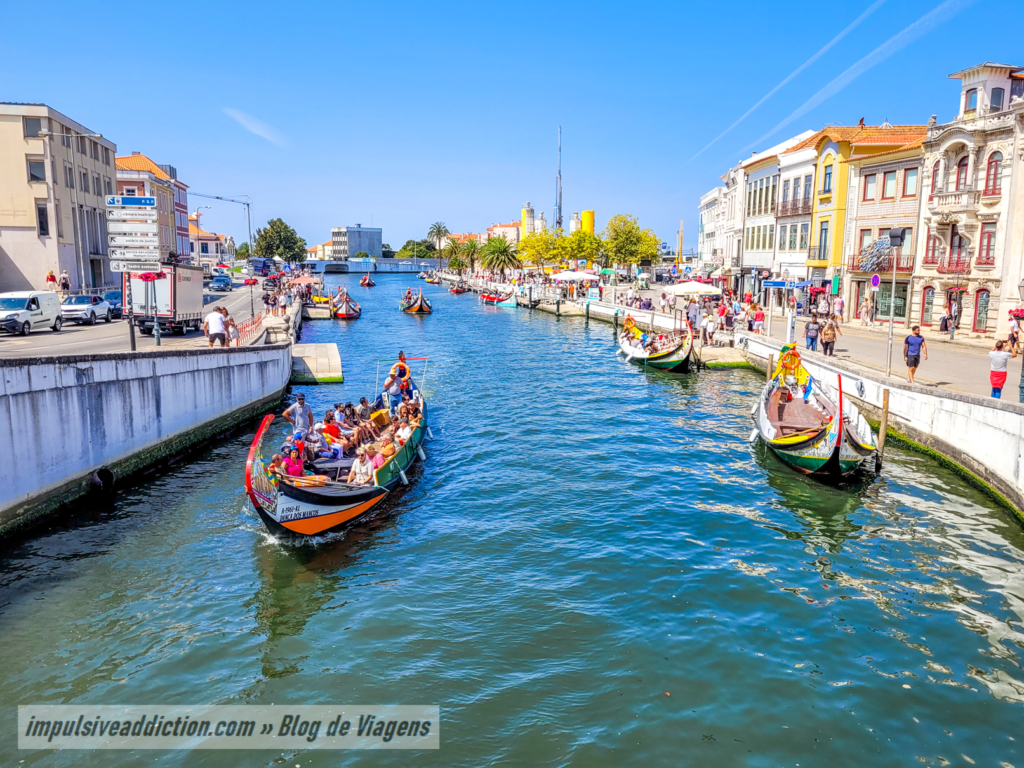
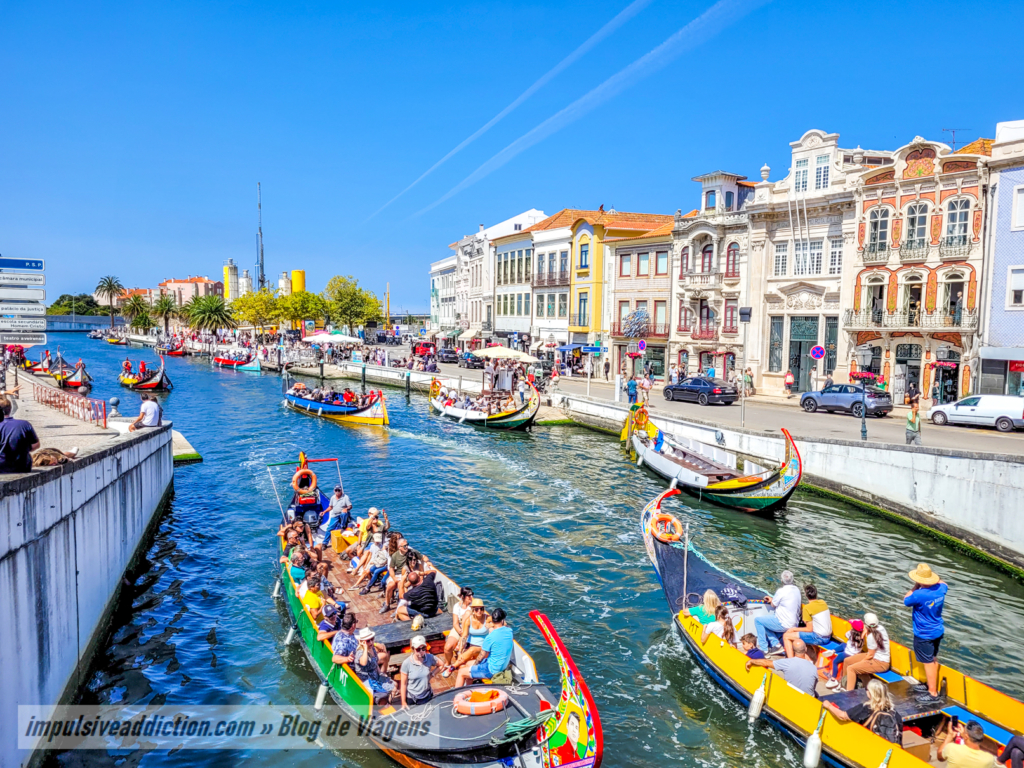
5. When to visit Aveiro?
Aveiro can be visited at any time of the year, without exception. Summer will be just perfect to enjoy the beaches or do some water activities, and of course, there are longer days to take full advantage of the sunlight.
With regard to festivities in the municipality, consider the following:
- The March Fair, with one of the largest amusement parks in the country. It takes place in the Park of Fairs and Exhibitions of Aveiro for a whole month.
- The Holy Week in Aveiro, around Easter.
- The Festivities of Santa Joana, in May, at the time of the municipal holiday.
- The Canals Festival in July. Contains events related to music, circus, theater, dance, visual arts, among others.
- São Jacinto Dunes Festival, in August. Close to the beach, to celebrate summer!
- The Codfish (bacalhau) Festival, in Gafanha da Nazaré / Ílhavo. Or the Sardine and Seafood Festival, in Costa Nova.
- And the festivities associated with Christmas and New Year’s Eve.
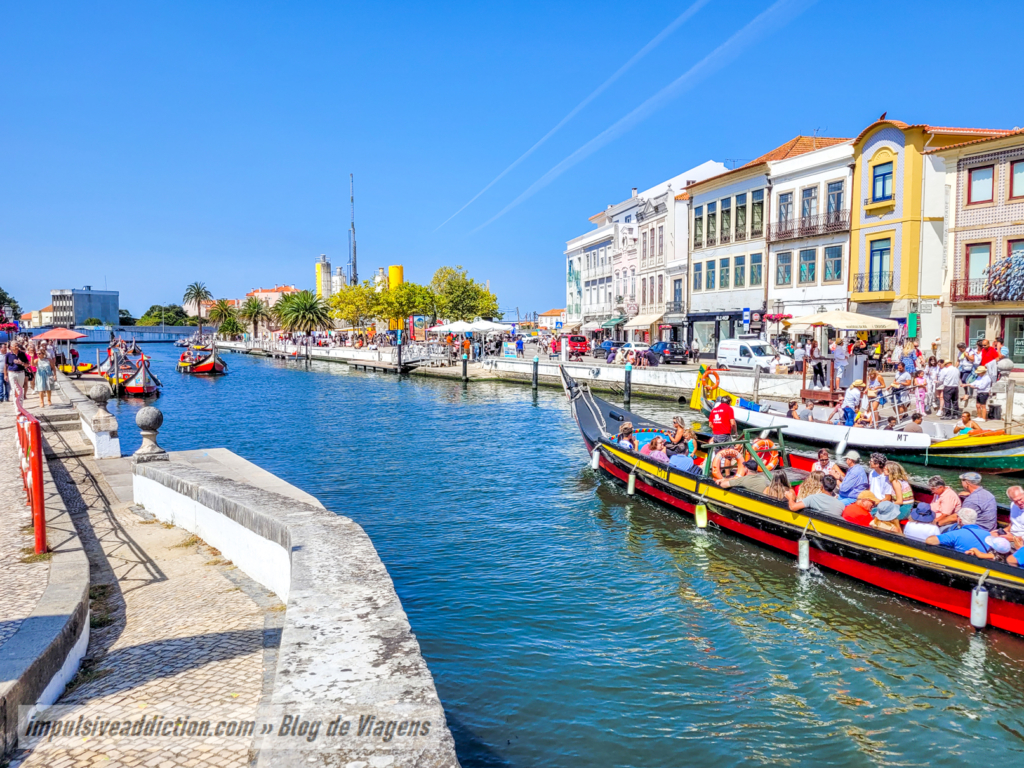
6. Gastronomy when visiting Aveiro
When visiting Aveiro, you should obviously opt for fish, such as codfish, made in different ways, mussels, oysters, eels, and seafood in general. For those who are not fond of fish, you will also find good Marinhoa meat.
As far as sweets are concerned, ovos-moles are the most typical, as well as Aveiro Tripes, which can be found in various places in the city, such as the Forum or next to Praça do Peixe. These tripes are, without a doubt, my favorite sweet in the region, and you can fill them with different flavors.
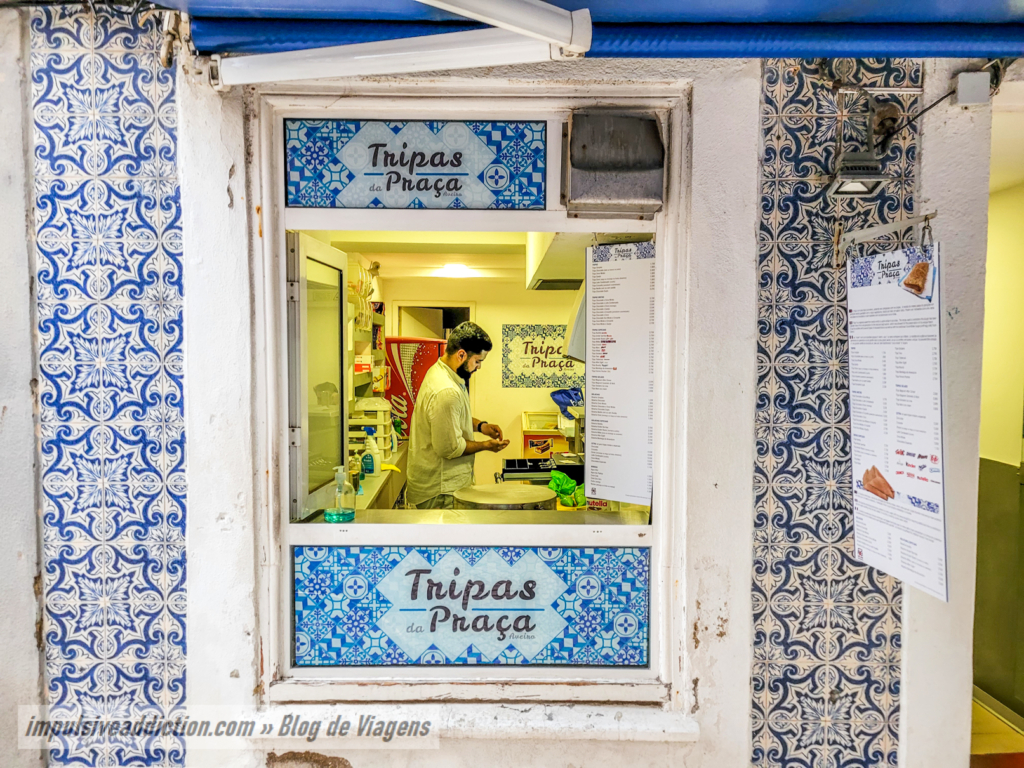
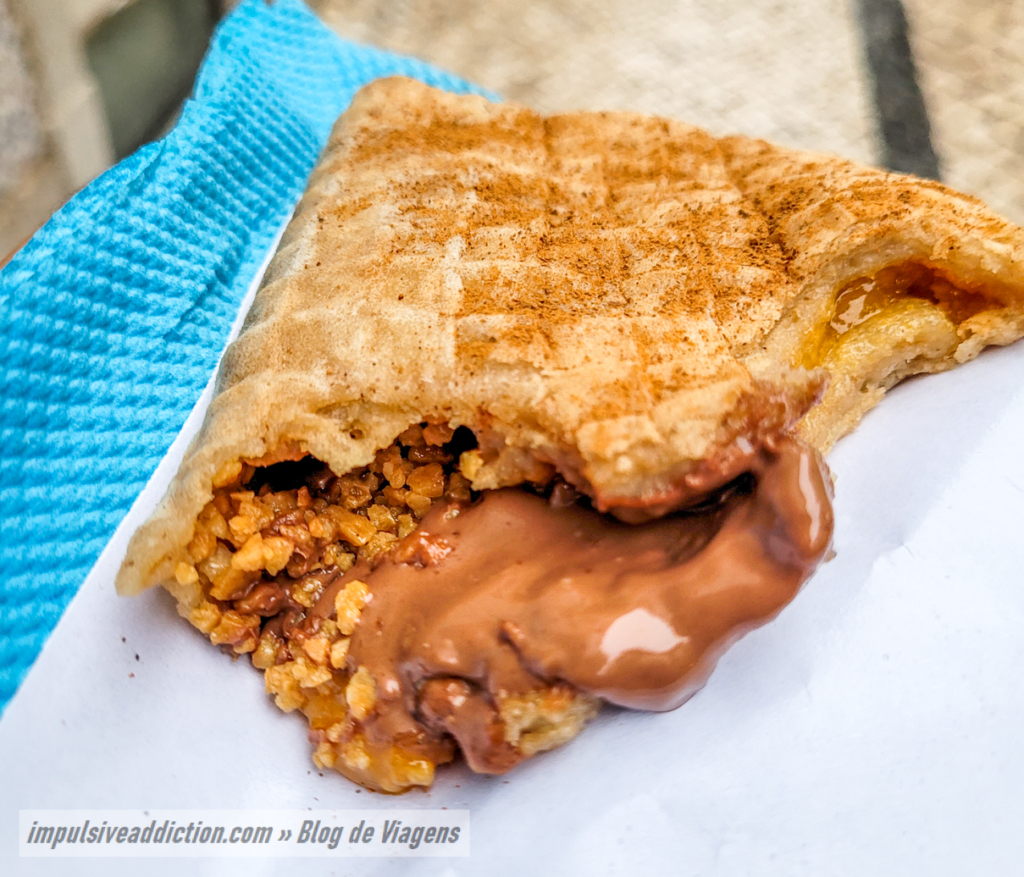
7. Restaurants in Aveiro
Below I leave you several restaurant suggestions, some more expensive than others, but all of great quality, at least in my opinion. 😉 Of course there are other possibilities!
- Maré Cheia.
- Ramona, with excellent burgers. 😉 It was a very famous place, during the time I studied in Aveiro.
- O Têzero, to taste delicious Aveiro tripes.
- Bacalhau & Afins.
- Salpoente.
- O Bairro.
- Cais do Pescado.
- A Nossa Casa.
- Restaurante Madrigal.
- O Legado da Ria.
8. Guided tours to visit Aveiro
I also leave you some excursions to visit Aveiro and the region of Aveiro, some of them departing from the city, while others from places like Porto or even Coimbra. 😉 Click on the links to learn more about each one of them on Get Your Guide or Civitatis websites. A Moliceiro or Mercantel boat trip is a must. 😉
- Aveiro: Traditional Moliceiro Boat Tour (Get Your Guide)
- Moliceiro Boat Trip in Aveiro (Civitatis)
- Aveiro: Boat Cruise & City Highlights Walking Tour
- Aveiro Night Tour
- Aveiro Food Tour
- Aveiro Private Tour
- Aveiro Salt Flats & Moliceiro Cruise
- Aveiro: Guided Tuk Tuk City Tour
- Paddle Surfing in Aveiro Estuary
- From Aveiro/Ilhavo: Barra, Costa Nova, and Vista Alegre Tour
- Aveiro: Half-Day Tour from Porto with Cruise
- From Porto: Aveiro & Coimbra Small Group Tour + River Cruise
- From Porto: Aveiro, Paiva Walkways and Arouca 516 Footbridge
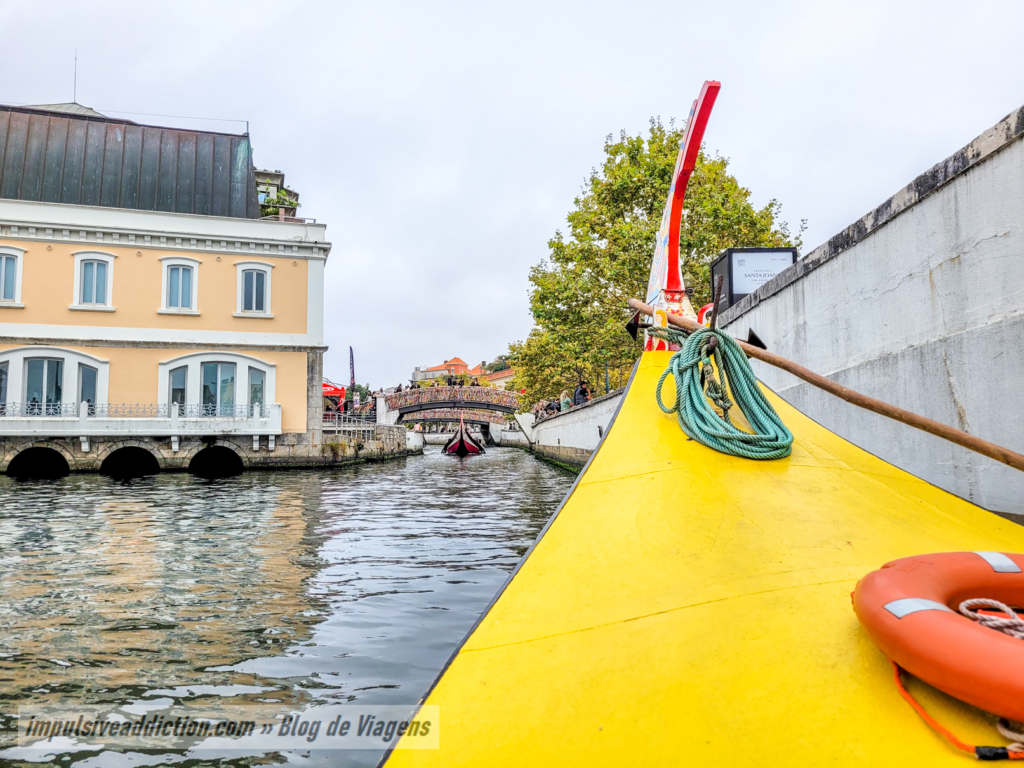
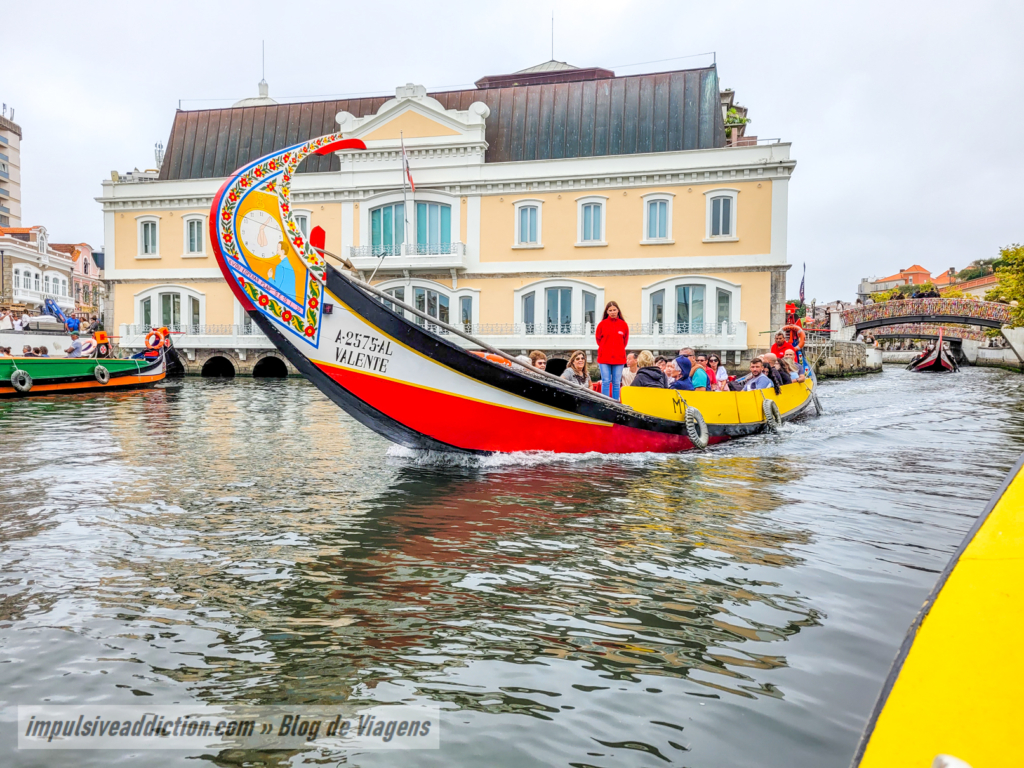
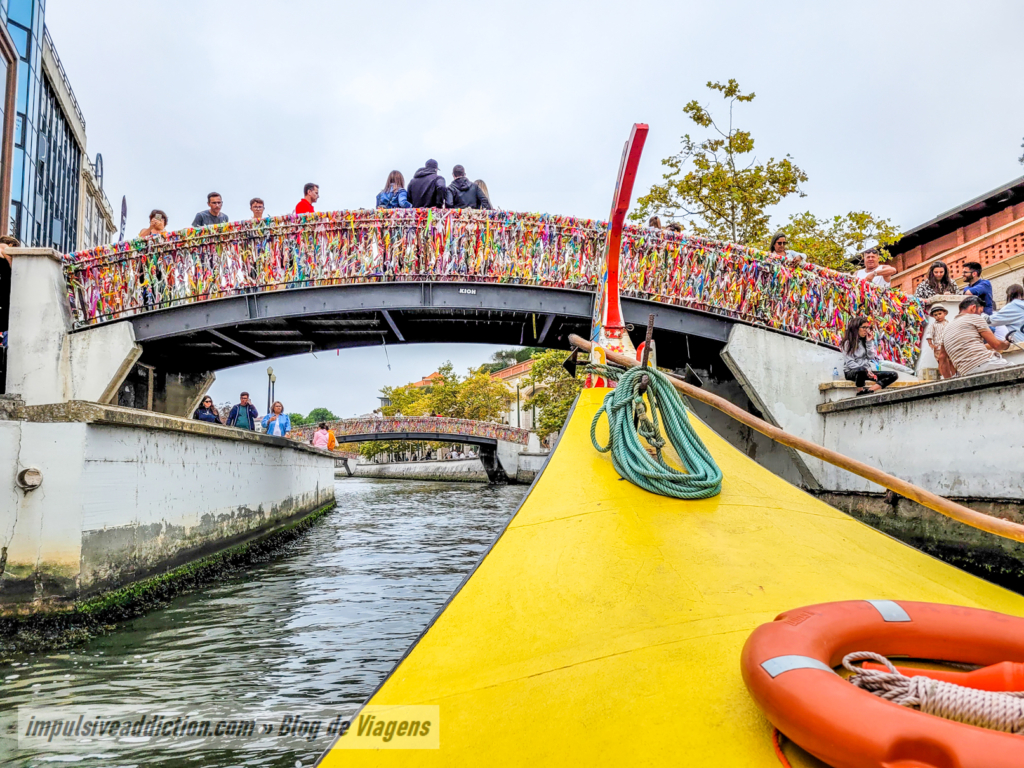
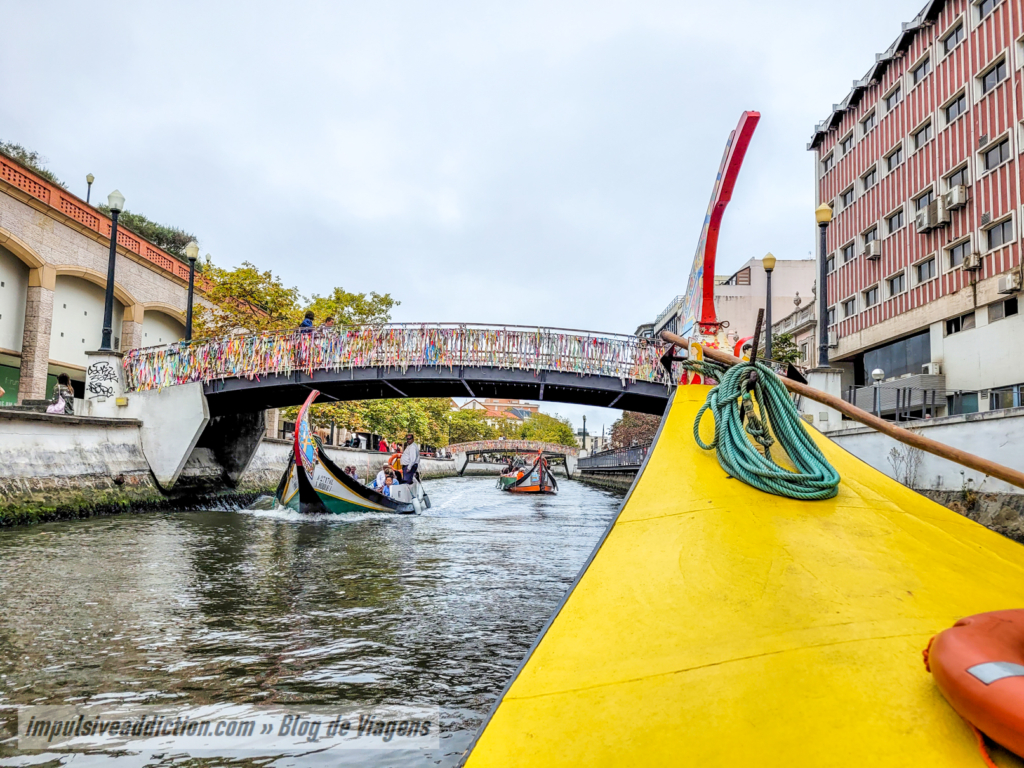
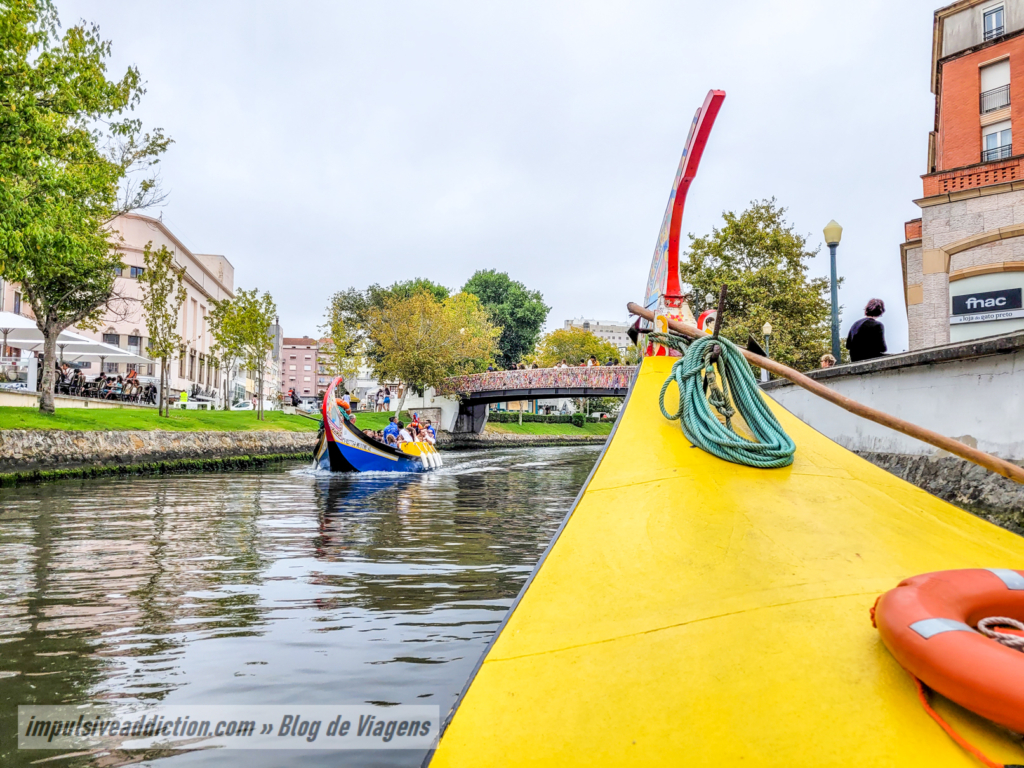
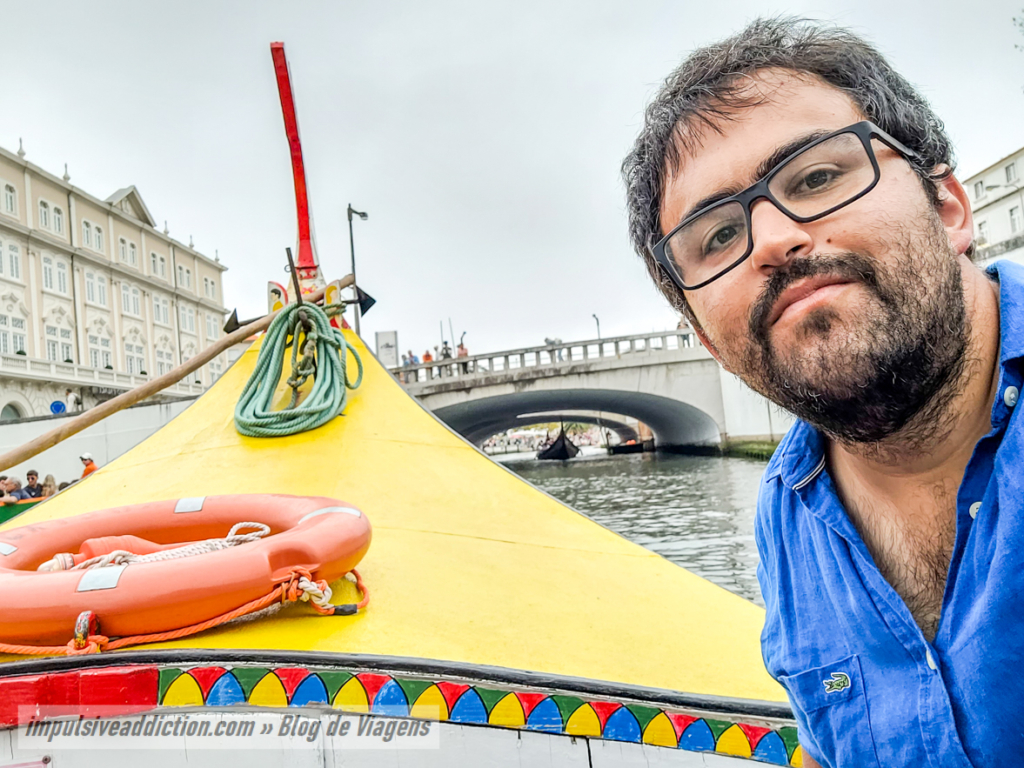
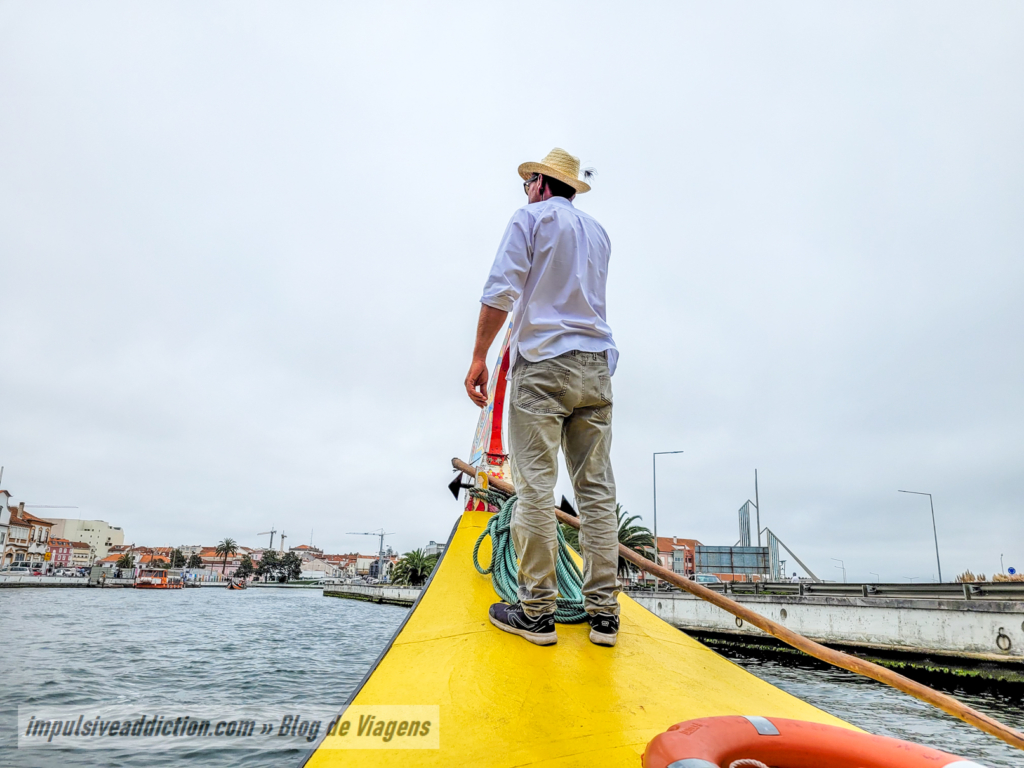
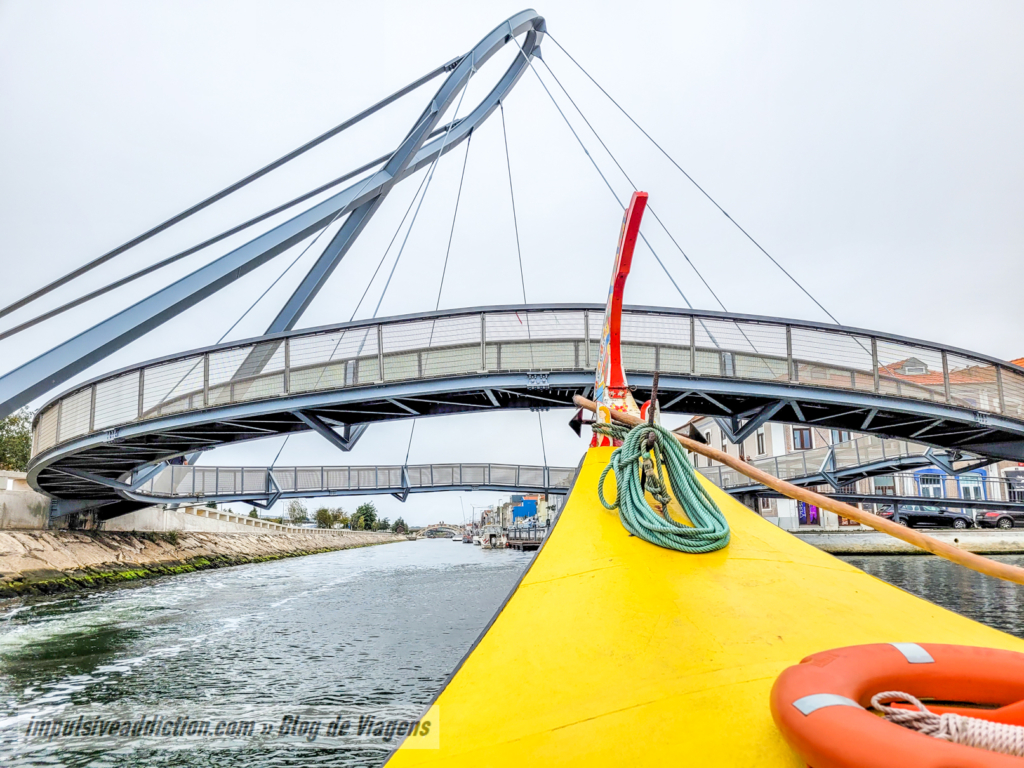
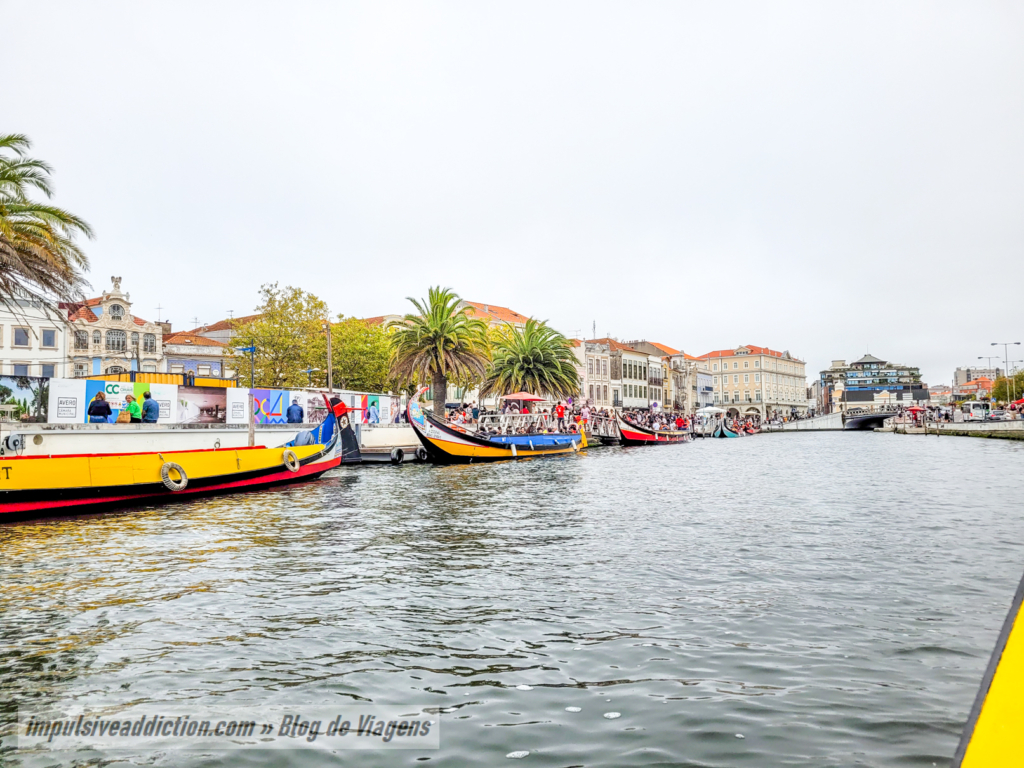
9. Accommodation tips to visit Aveiro
| Accommodation | Score | Location |
|---|---|---|
| Melia Ria Hotel & Spa | 8.3 | Aveiro City Center |
| Aveiro2Stay | 9.1 | Aveiro City Center |
| Hotel Aveiro Palace | 8.4 | Aveiro City Center |
| Casa do Cais | 9.3 | Aveiro City Center |
| Aveiro 5 Estrelas | 9.6 | Aveiro City Center |
| Estrela Palace | 9.5 | Aveiro City Center |
| Hotel Aveiro Center | 8.6 | Aveiro City Center |
| Art Home Apartments | 8.6 | Aveiro City Center |
| Maraveiro House | 9.2 | Aveiro City Center |
| Hotel Moliceiro | 8.7 | Aveiro City Center |
| Hostel Cidade de Aveiro | 9.0 | Aveiro City Center |
| Dock Apartments | 9.3 | Aveiro City Center |
| Hotel das Salinas | 8.9 | Aveiro City Center |
| Avenida 60 Apartments | 8.8 | Aveiro City Center |
| Aveiro Rossio | 8.8 | Aveiro City Center |
| Welcome In | 8.7 | Aveiro City Center |
| Terrazzos do Prado | 9.3 | Costa Nova |
| Cestaria Costa Nova | 9.6 | Costa Nova |
| M Costa Nova | 9.6 | Costa Nova |
| Family Hostel Costa Nova | 8.8 | Costa Nova |
| Casas de Praia | 9.0 | Barra Beach |
| House Barra Beach | 8.9 | Barra Beach |
| Hotel Farol | 8.5 | Barra Beach |
Best Things to do in Aveiro | Portugal
And now, all things to do in Aveiro, and what to visit and see in an itinerary there. I decided to organize this section according to the following topics:
- Visit the essentials of Aveiro city center
- Visit the salt flats of Aveiro
- Explore the best walkways and trails in Aveiro
- Visit Vista Alegre and Ílhavo Maritime Museum
- Visit São Jacinto
- Optional things to do in Aveiro
Map | Things to do in Aveiro
Visit the essentials of Aveiro city center
The essentials of Aveiro city center should be your bet if you only have 1 day in the city. You can explore the center on foot, or by BUGA, as I mentioned. Be sure to take a Moliceiro boat trip through the city’s canals, and visit the main museum spaces, gardens and squares.
1. Old Train Station of Aveiro
As many people arrive in Aveiro by train, I decided to start this route at the old train station, to admire its beautiful tile panels dating from 1916, which portray the main landscapes of the city and region, as well as other cultural aspects of this destination. Inside there is a reception and information center where various typical products are sold, such as ovos moles (soft eggs), wines, as well as salt from the salt pans.
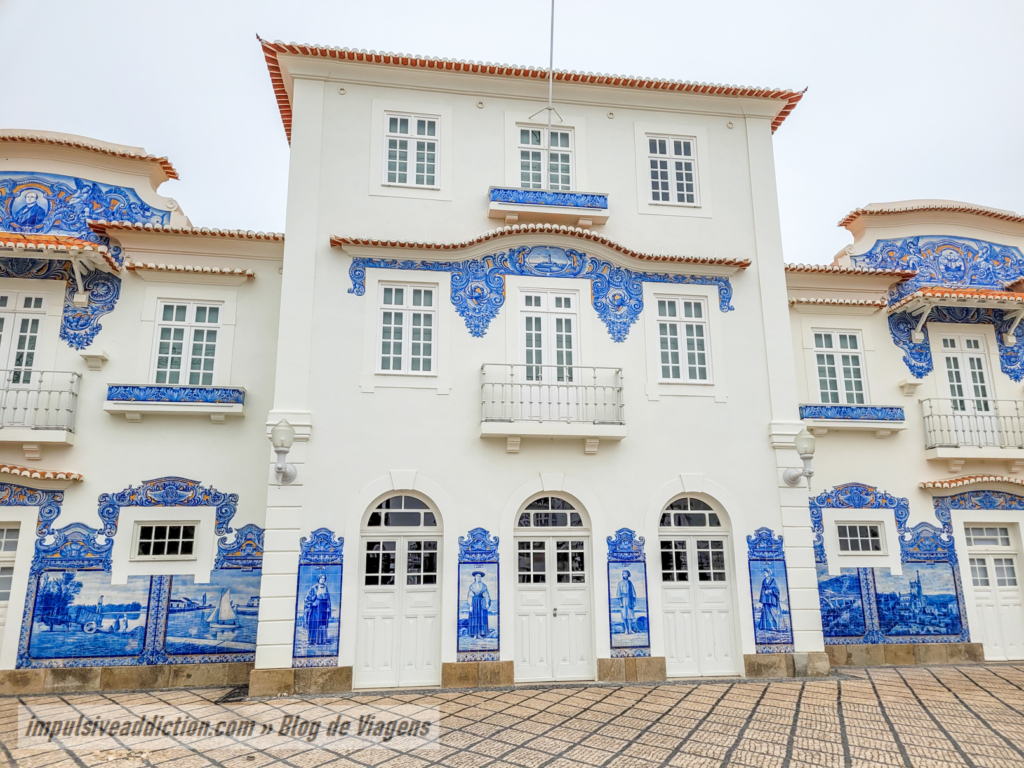
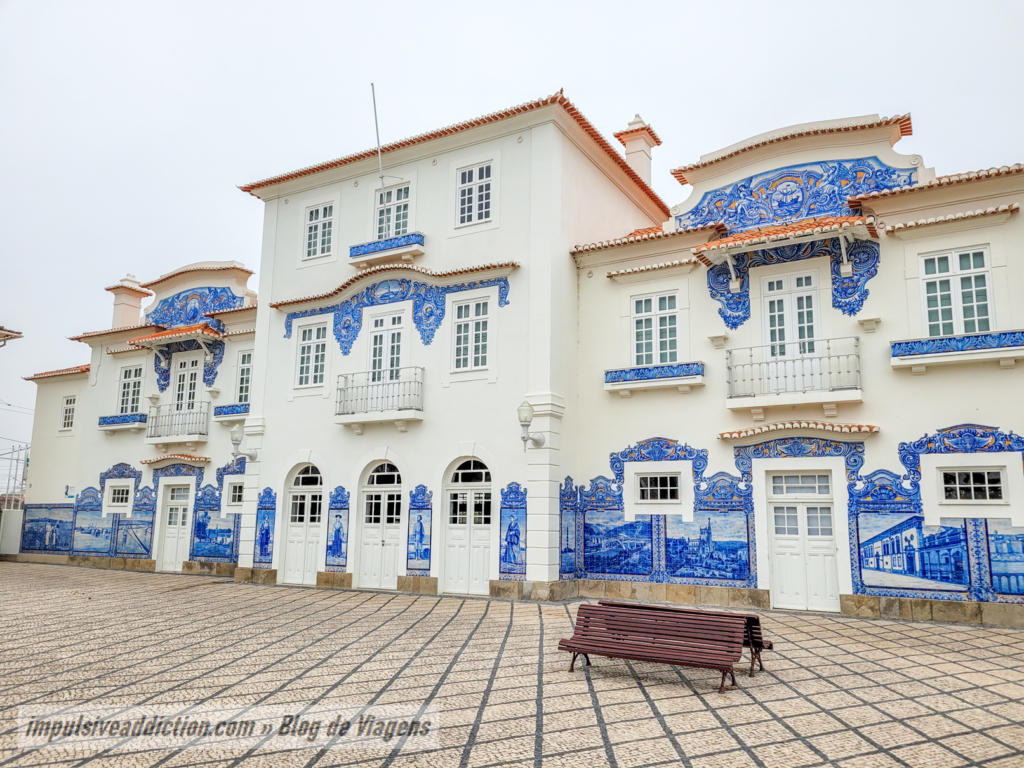
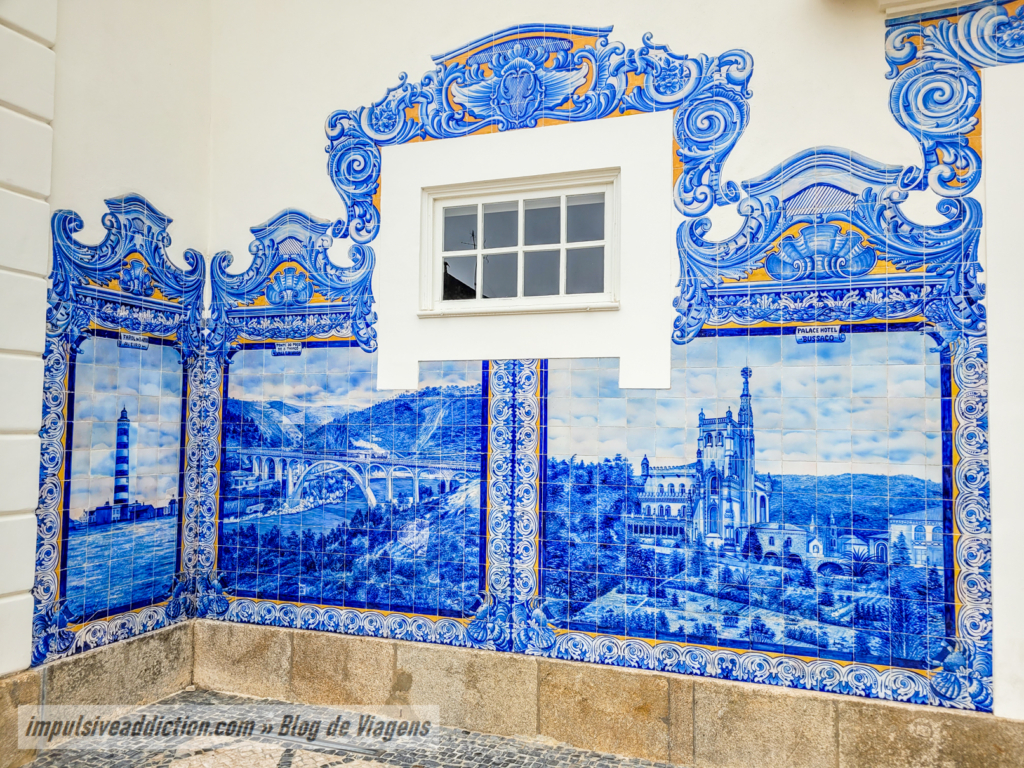
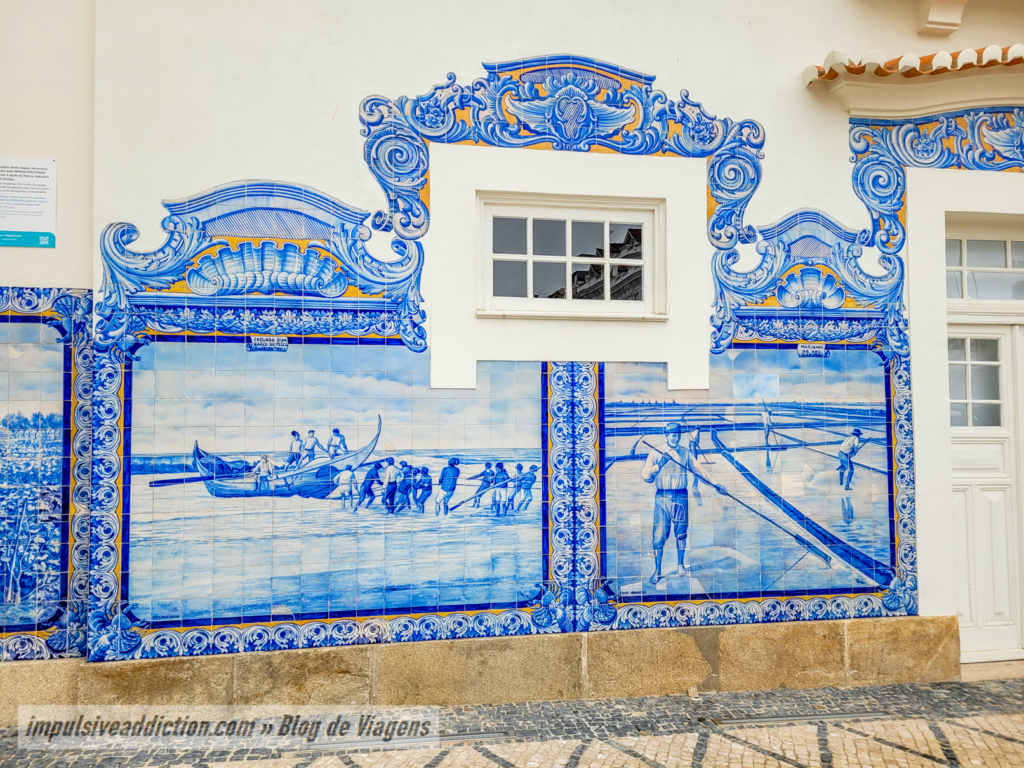
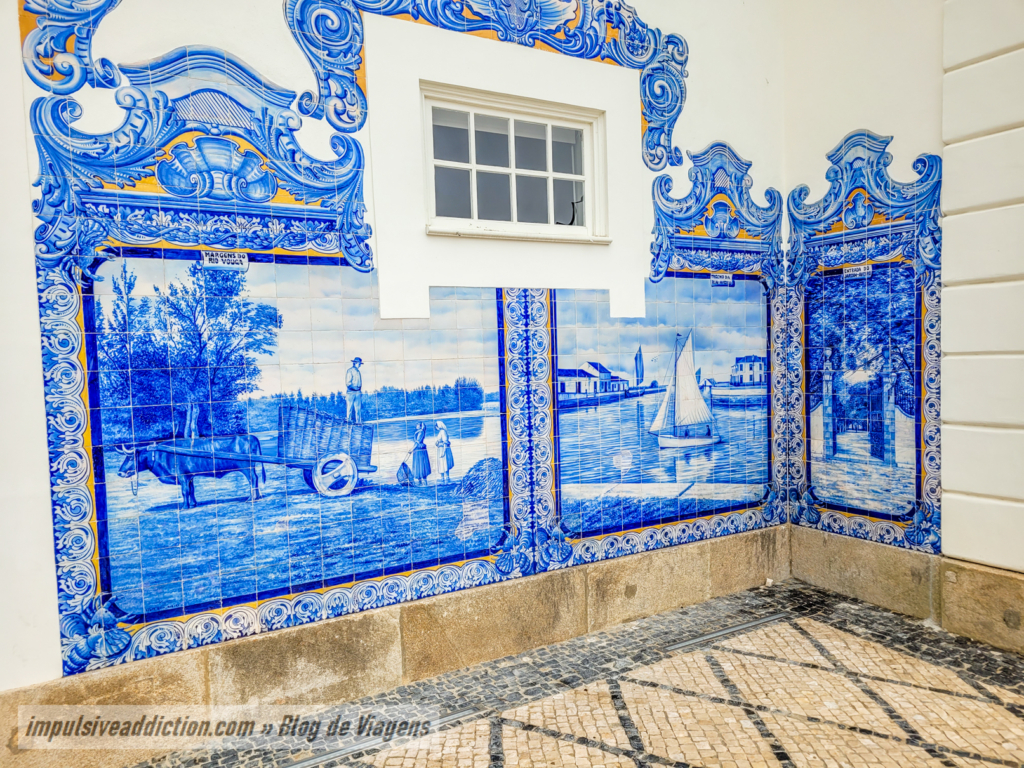
2. Urban Art by Vhils
In the vicinity of the train station, there is a mural with urban art by Vhils, in this case a face, as is usual in his works. It is exceptional, for me this is one of the best artists in Portugal, just like Bordallo II.
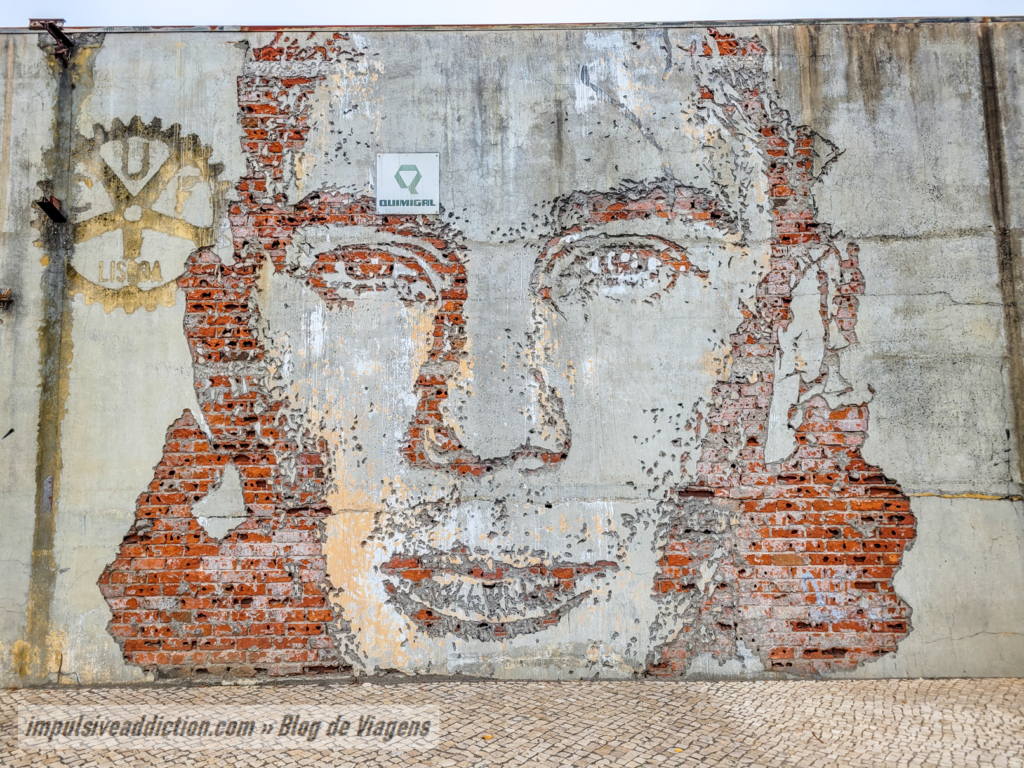
3. Avenue Doutor Lourenço Peixinho
You will then follow the main artery of the city, Avenue Doutor Lourenço Peixinho. This avenue connects the aforementioned train station to the oldest part of the city, next to the Moliceiros pier, former Captaincy and Forum of Aveiro. Its Portuguese pavement stands out with elements associated with the sea and fishing, as well as its numerous shops, cafes and restaurants.
At the end of the avenue, be sure to admire the Monument to the Dead of the Great War, and the small square where it is located, as well as the beautiful Bank of Portugal building.
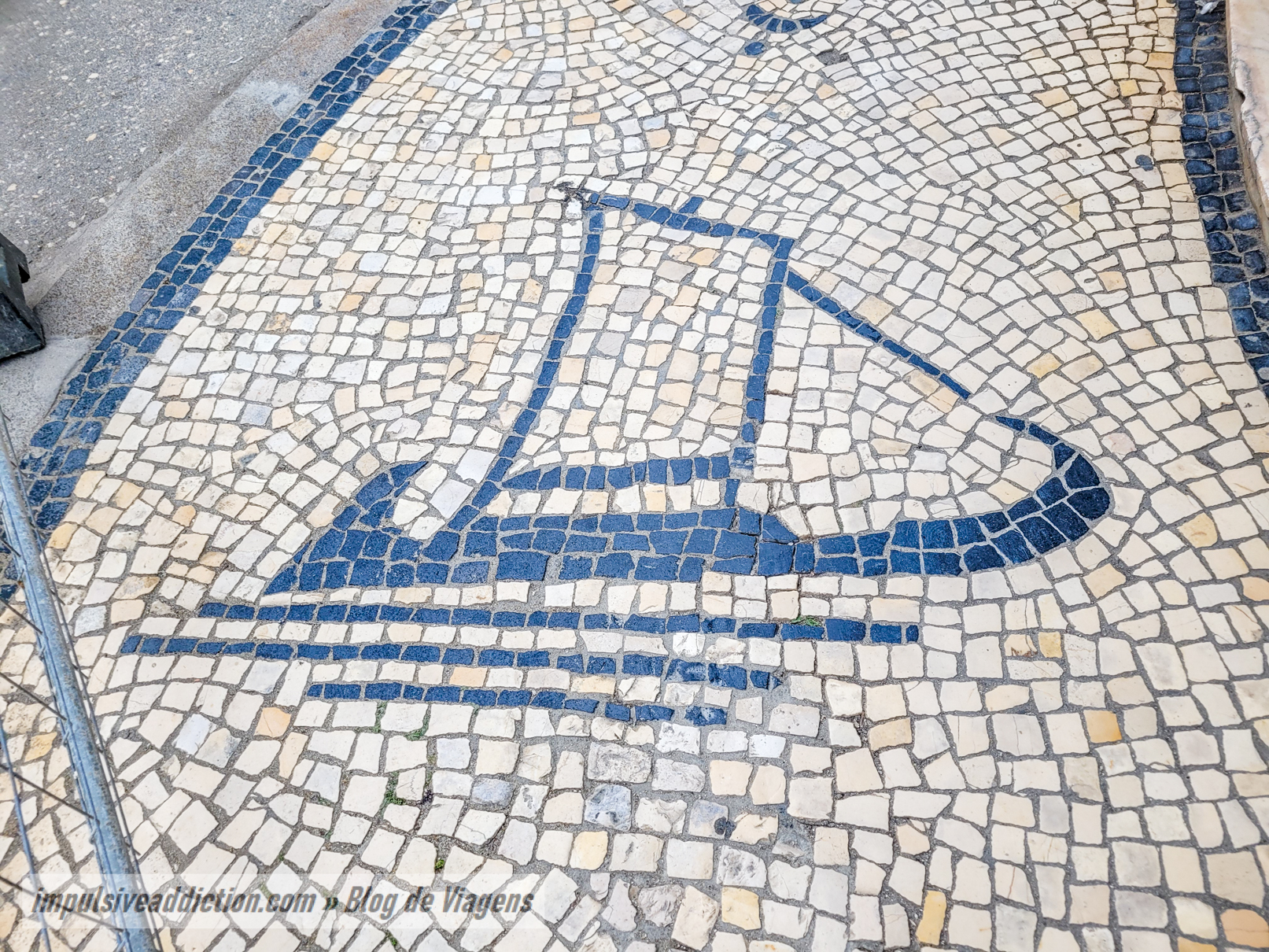
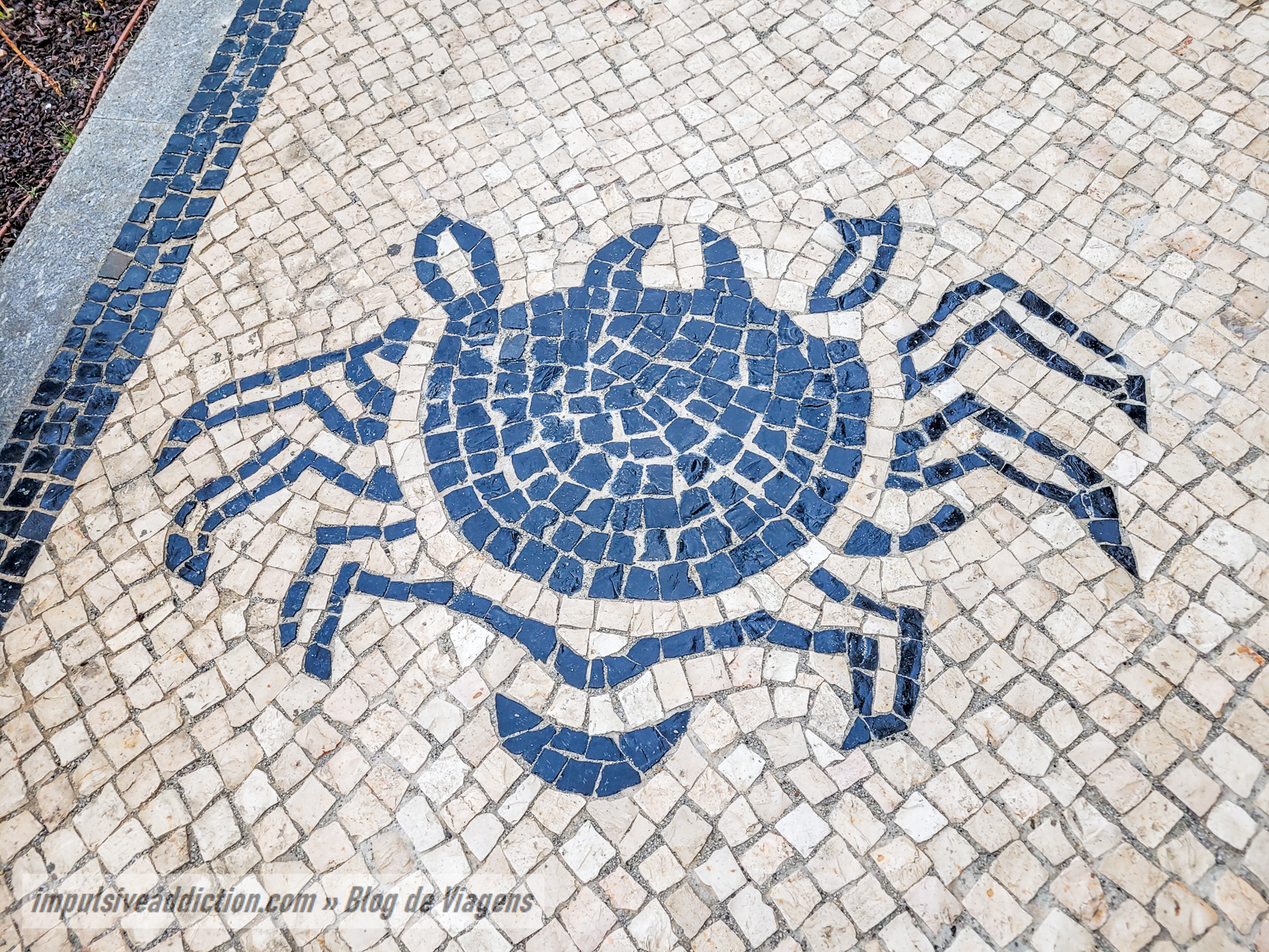
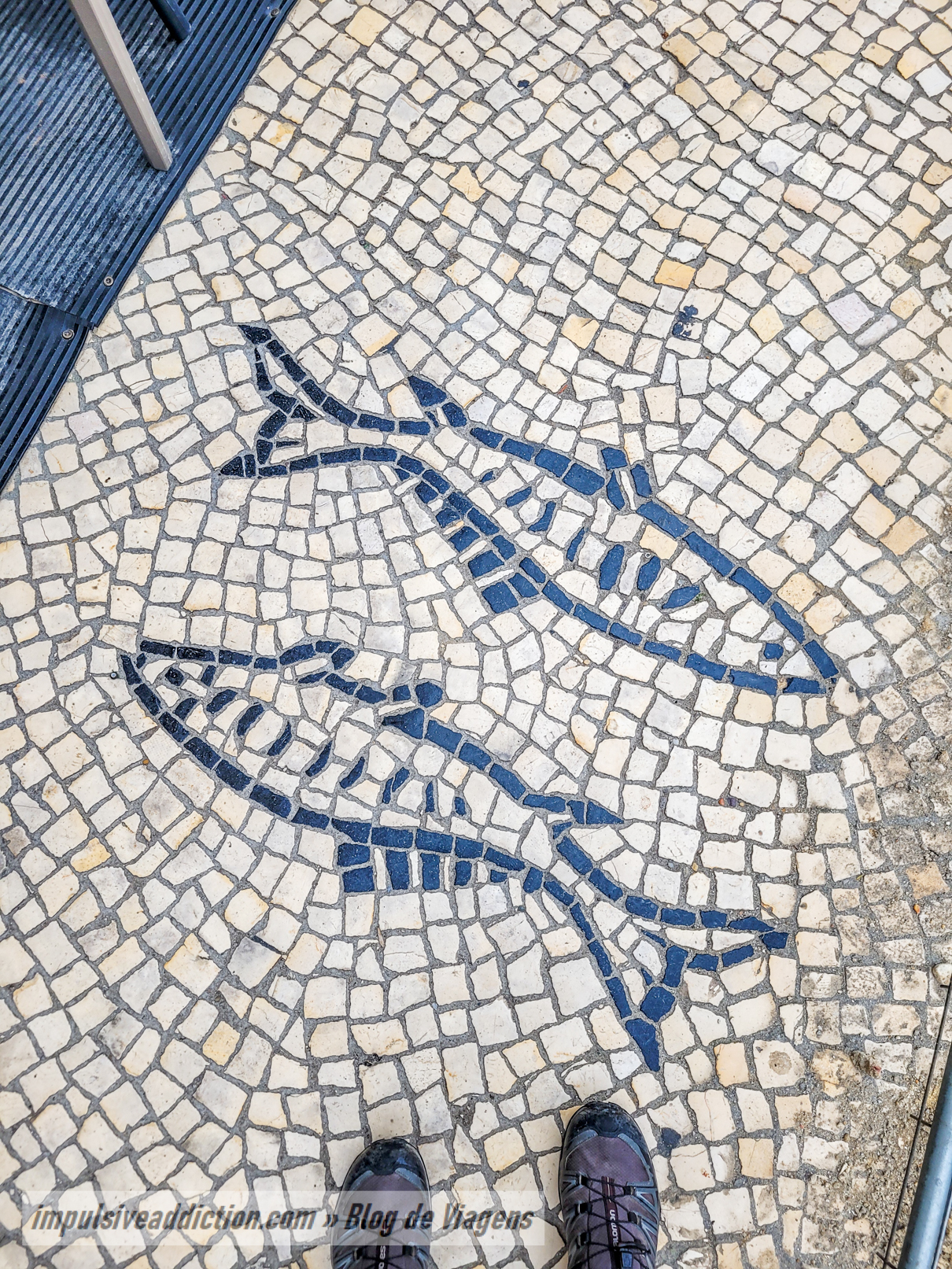
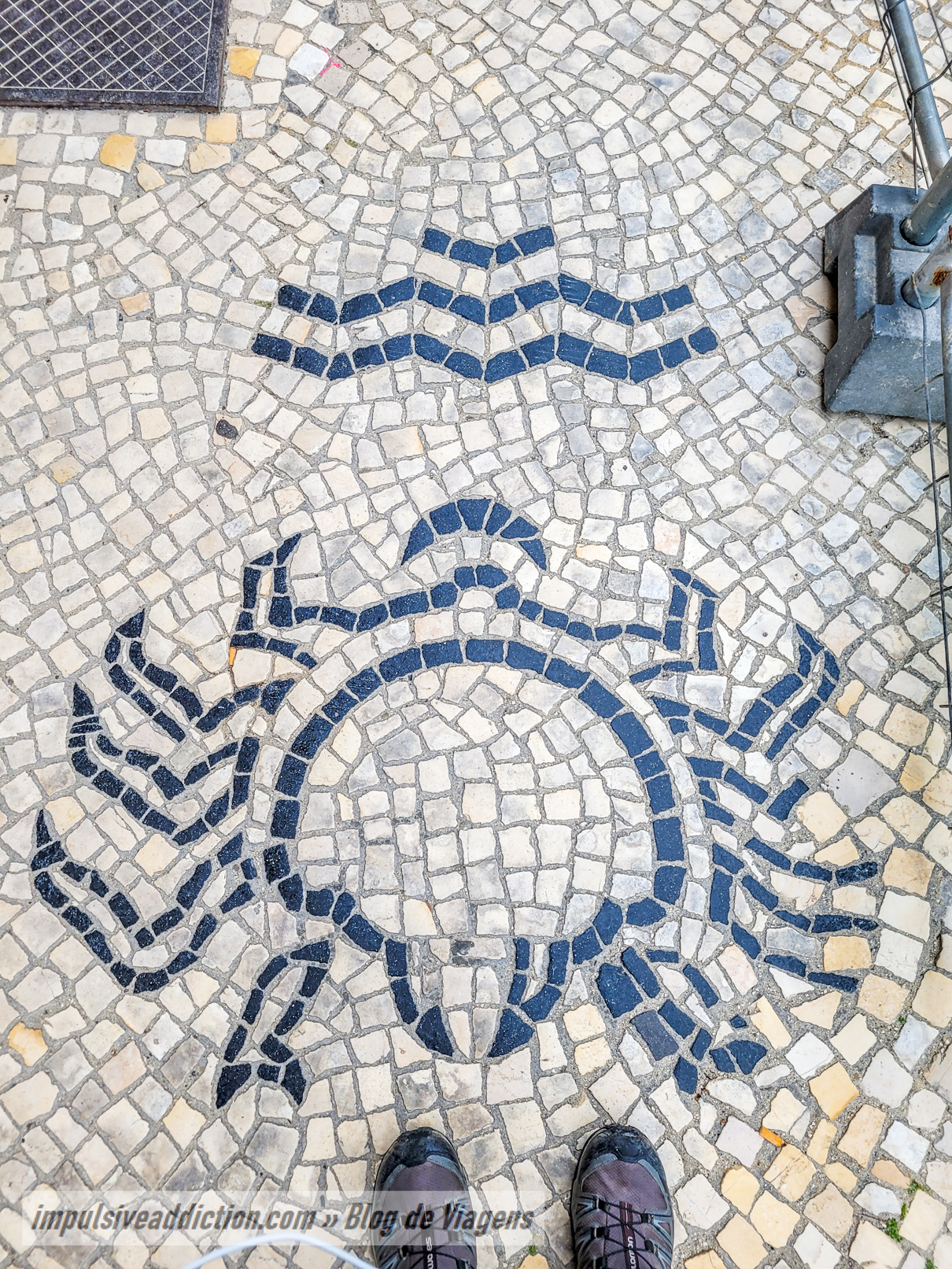
4. Former Captaincy of Aveiro
Next is the former captaincy of Aveiro, one of the most emblematic buildings in the city, as it is located over the waters of the city’s main canal (named Cojo), resting on arches and stilts. It is also known as House of Arches because of this.
- When it was built, in the 15th century, the old captaincy served as a mill.
- In the 19th century, it was owned by the Porcelain Factory of José Ferreira Pinto Basto, founder of Vista Alegre.
- In the early 20th century, it became the School of Industrial Design.
- Only later did it become Captaincy of the Port of Aveiro, being the residence of the captain until 1992.
- Today it is the headquarters of the Municipal Assembly of Aveiro and has an art gallery that houses temporary exhibitions.
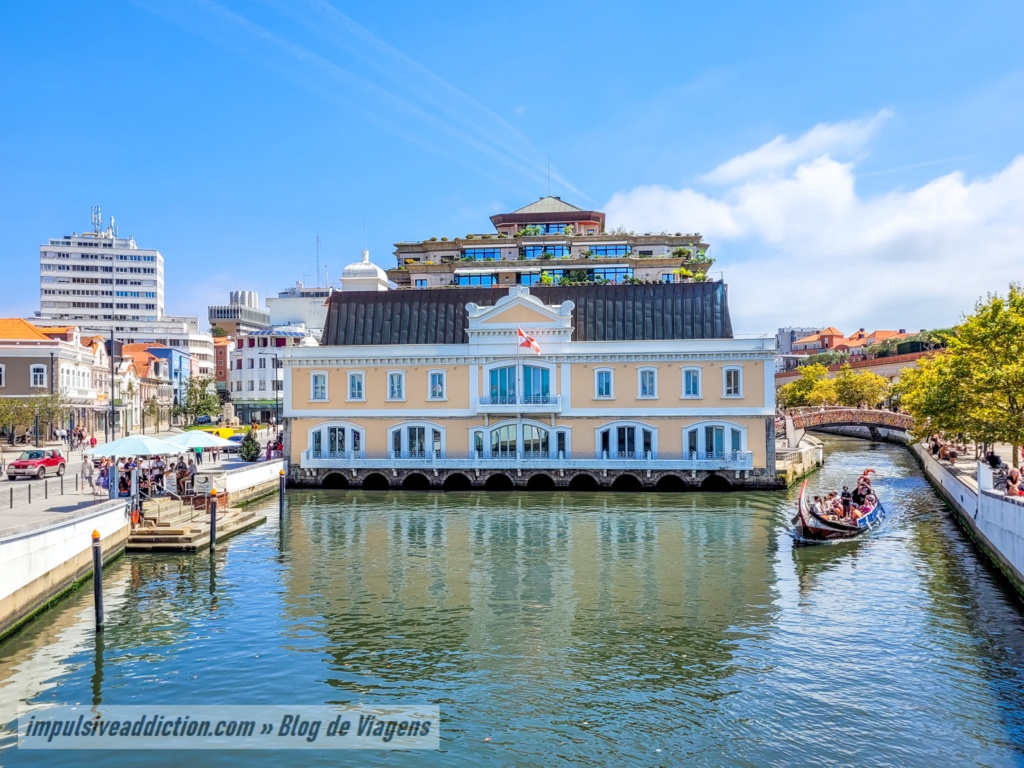
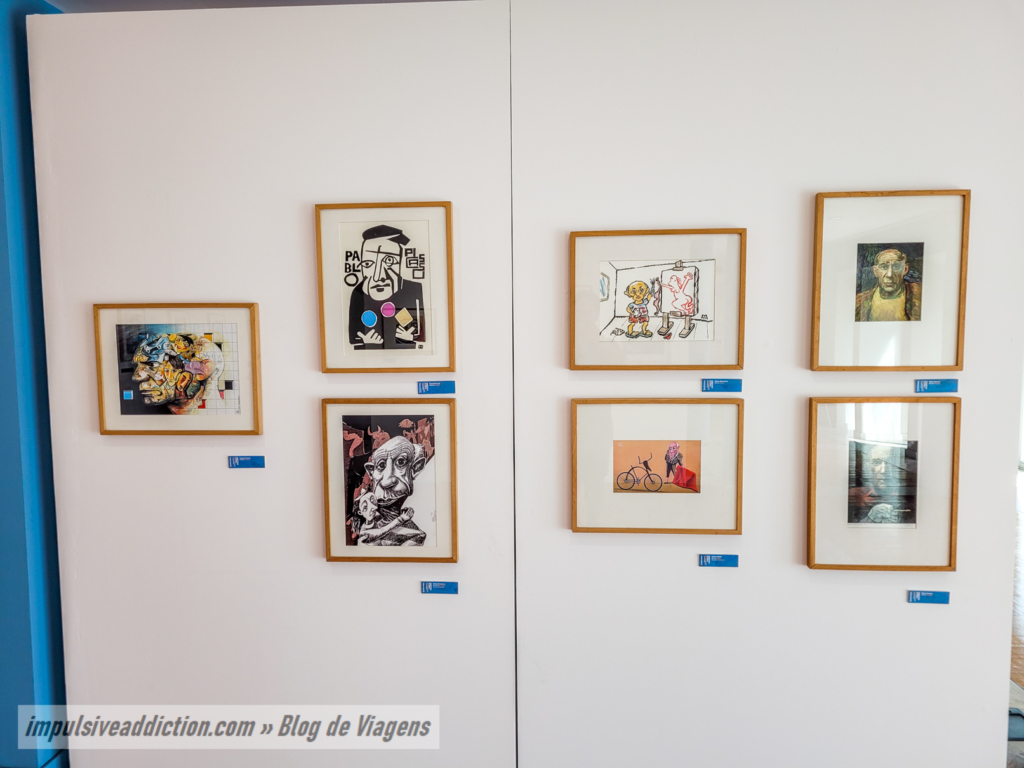
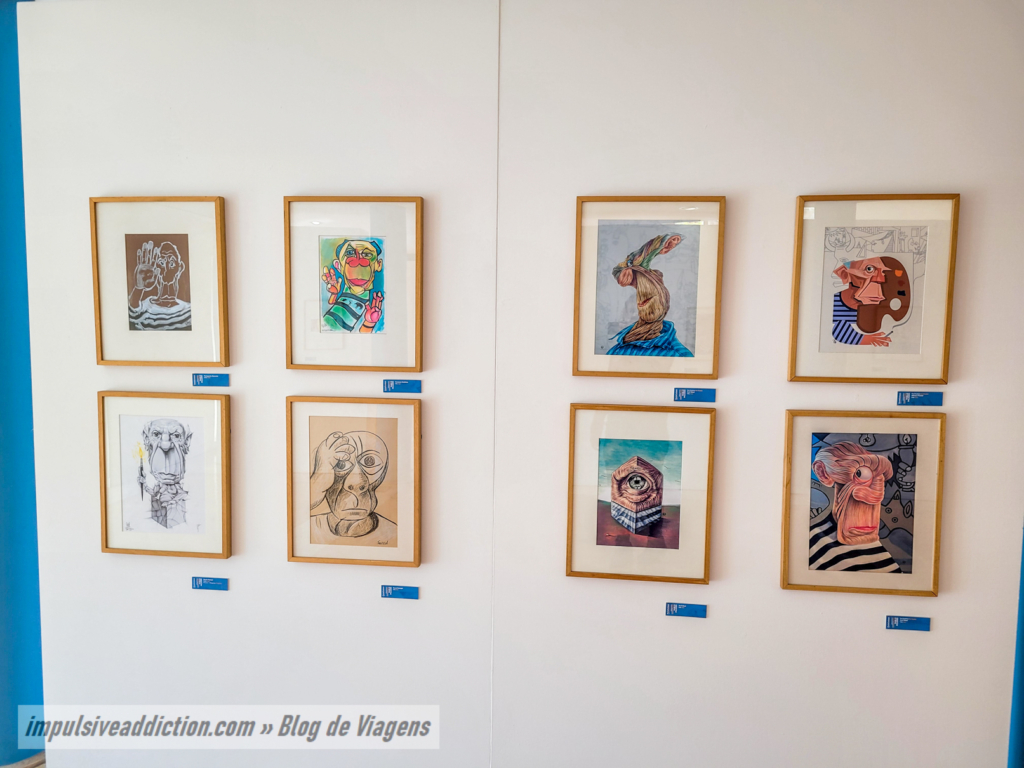
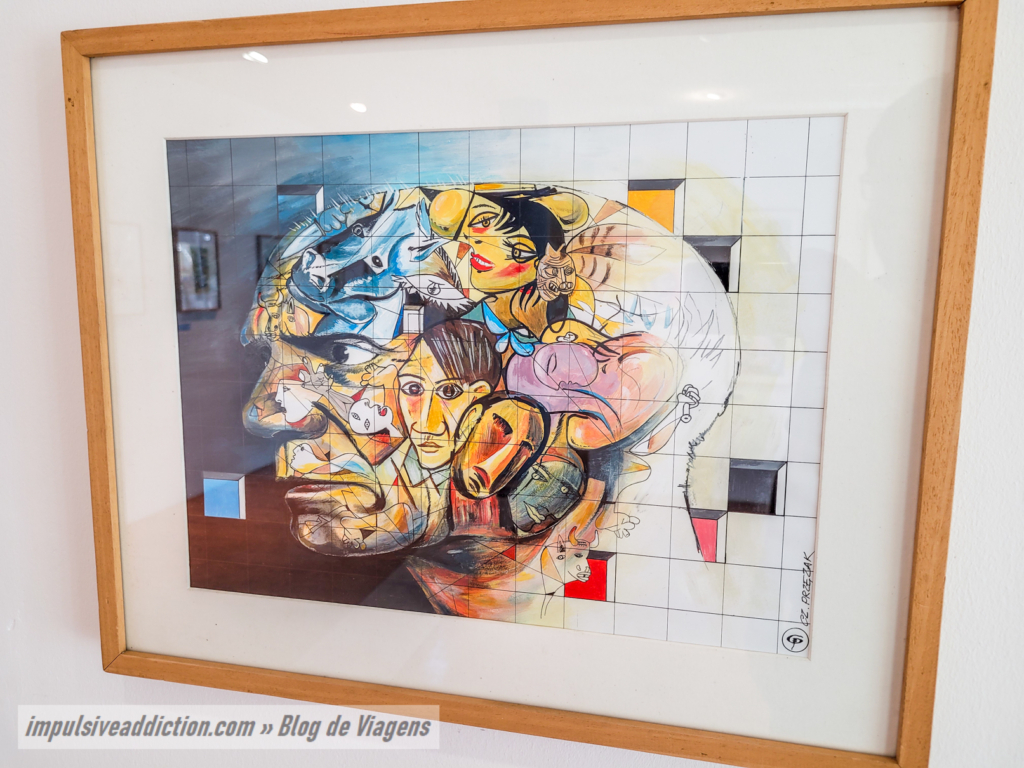
5. Statues at General Humberto Delgado Square
General Humberto Delgado Square is actually a bridge over Cojo canal in the shape of a roundabout. It has 4 spectacular bronze statues representing traditional figures of the region and the city, namely:
- Marnoto, who worked extracting salt from the salt pans.
- The Salineira, which transported the salt in wicker baskets (65 to 70 kg), from the salt pans to the boats, and then from the boats to the warehouses.
- The “Partner of the Branch” (Parceira do Ramo), who comes to represent women in traditional clothes on feast days. In her right hand she carried a bunch of flowers to deliver to the new butlers.
- And the Fogueteiro, which as the name implies, would launch the rockets on feast days.
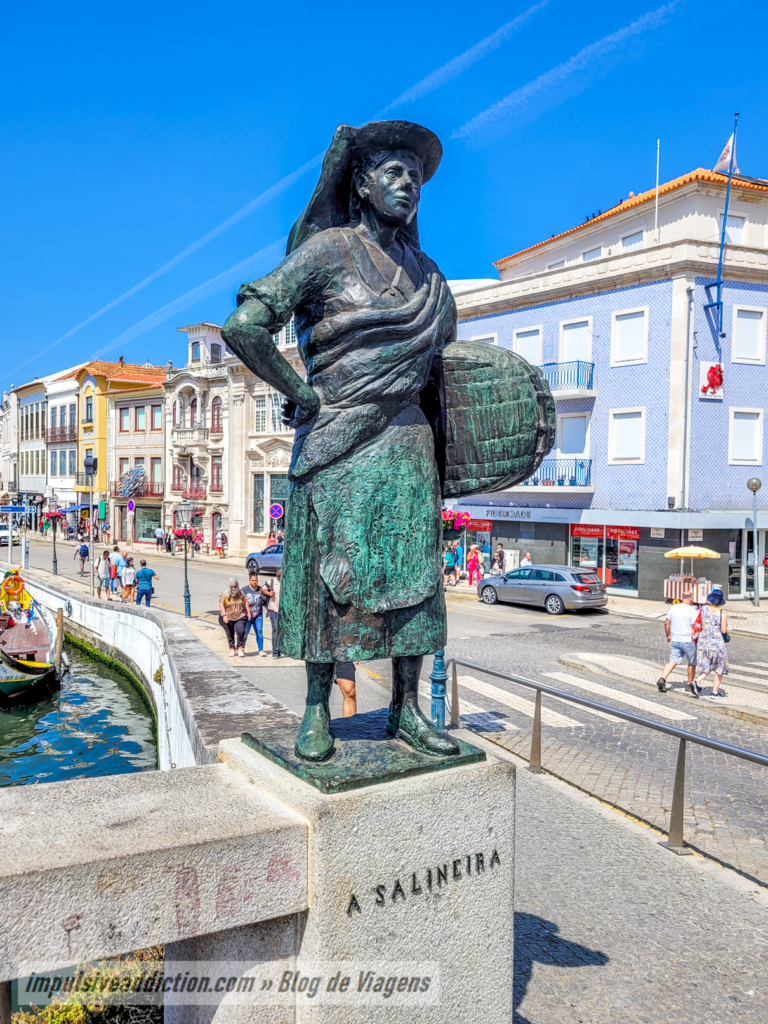
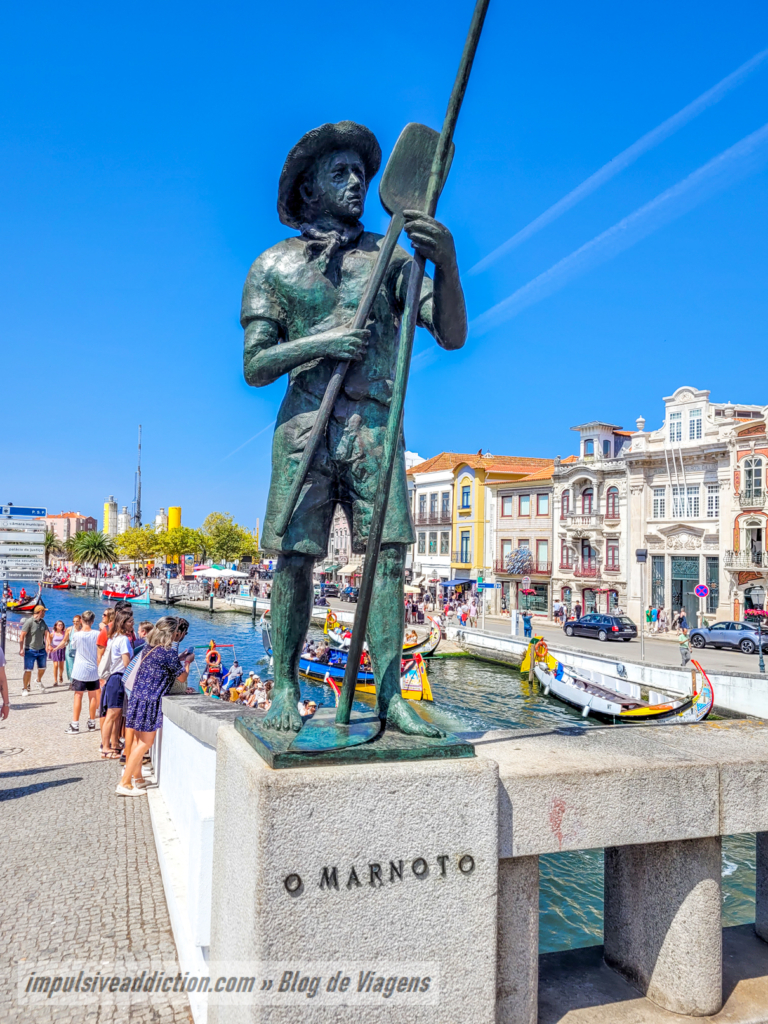
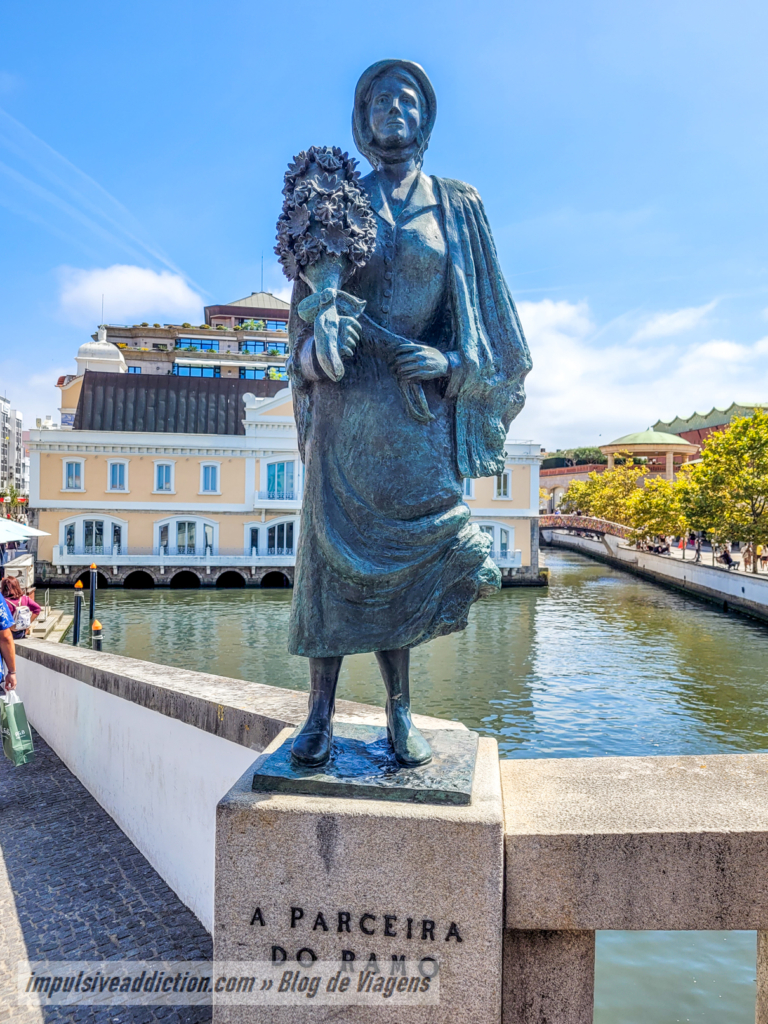
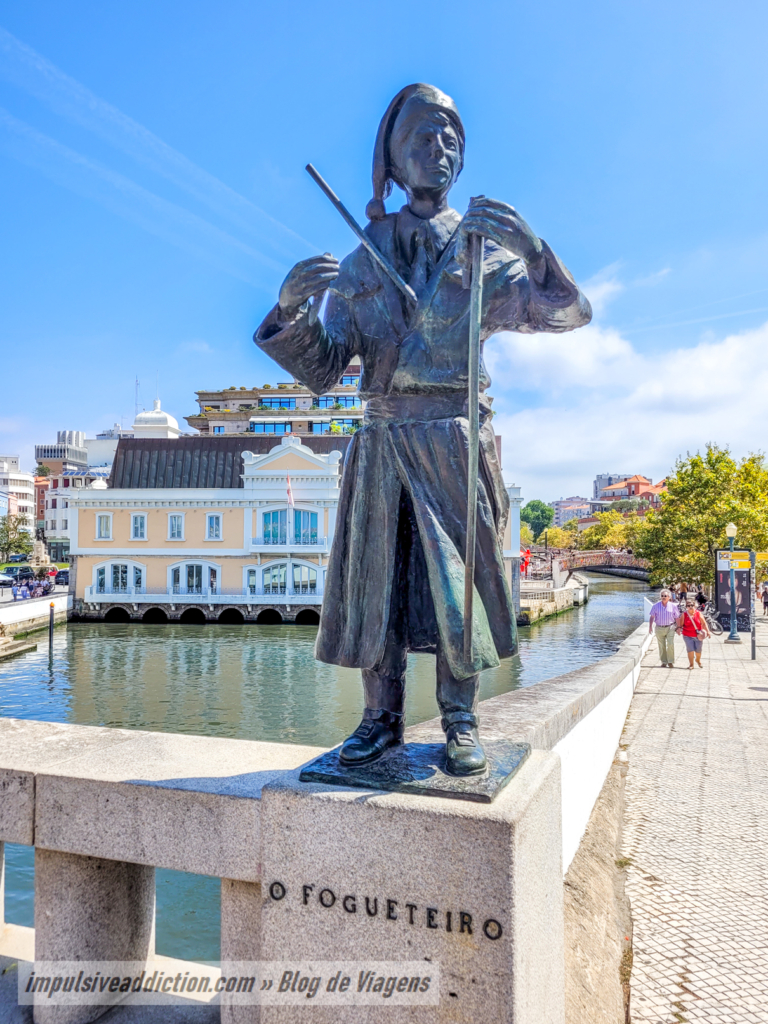
6. Obelisk of Liberty
You can also visit the Square of Doutor Joaquim de Melo Freitas, where the fabulous Obelisk of Liberty (1909) is located, dedicated to the commemoration of the first centenary of the birth of José Estêvão (an important figure in the liberal revolt of 1828), and as a tribute to all the people who then fought for liberalism. It has many Art Nouveau details that you will enjoy seeing up close.
Next to the square is the Hotel Aveiro Palace, where you can stay overnight. Also admire the incredible pattern of the Portuguese pavement in the area, in the shape of knots. 😉
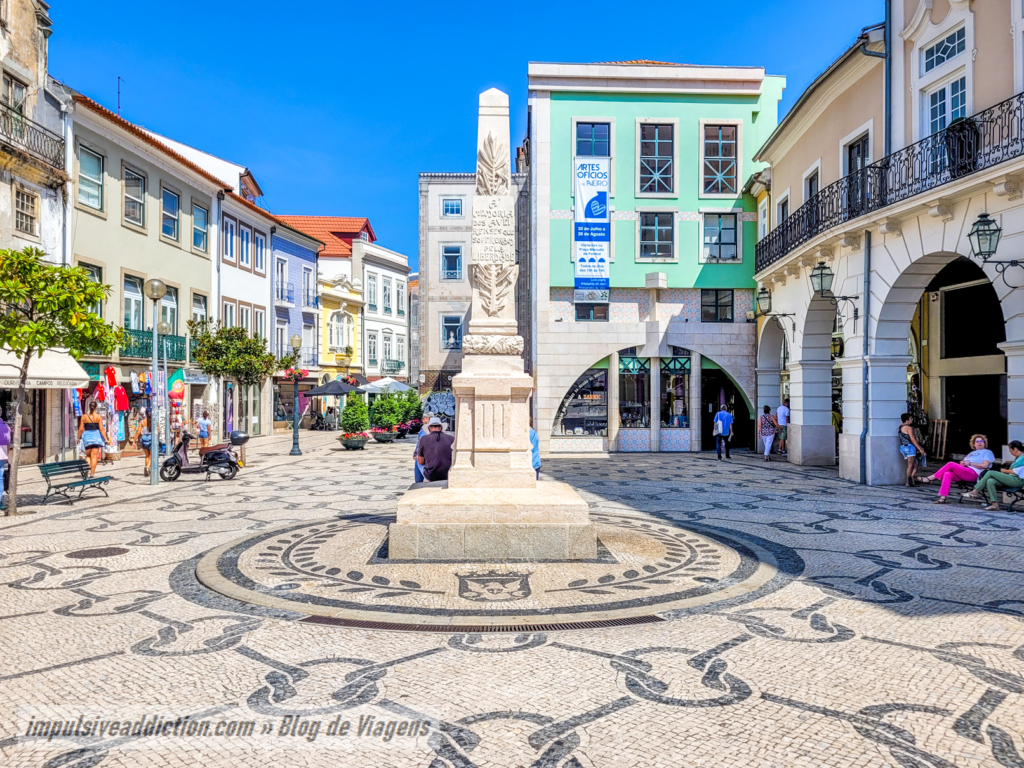
7. Praça do Peixe and Cais dos Botirões
Be sure to explore the most beautiful and picturesque corners of the alleys that stretch from there to Praça do Peixe (Fish Square). For example, don’t miss Square 14th of July.
In Praça do Peixe there is a huge fish market, in an iron structure that dates back to the first decade of the 20th century. The position of this market has always been privileged, due to its proximity to Canal dos Botirões, an important salt and fish pier in Aveiro, especially in the past. Praça do Peixe is now one of the main destinations in the city when it comes to nightlife, with excellent restaurants and bars for all tastes.
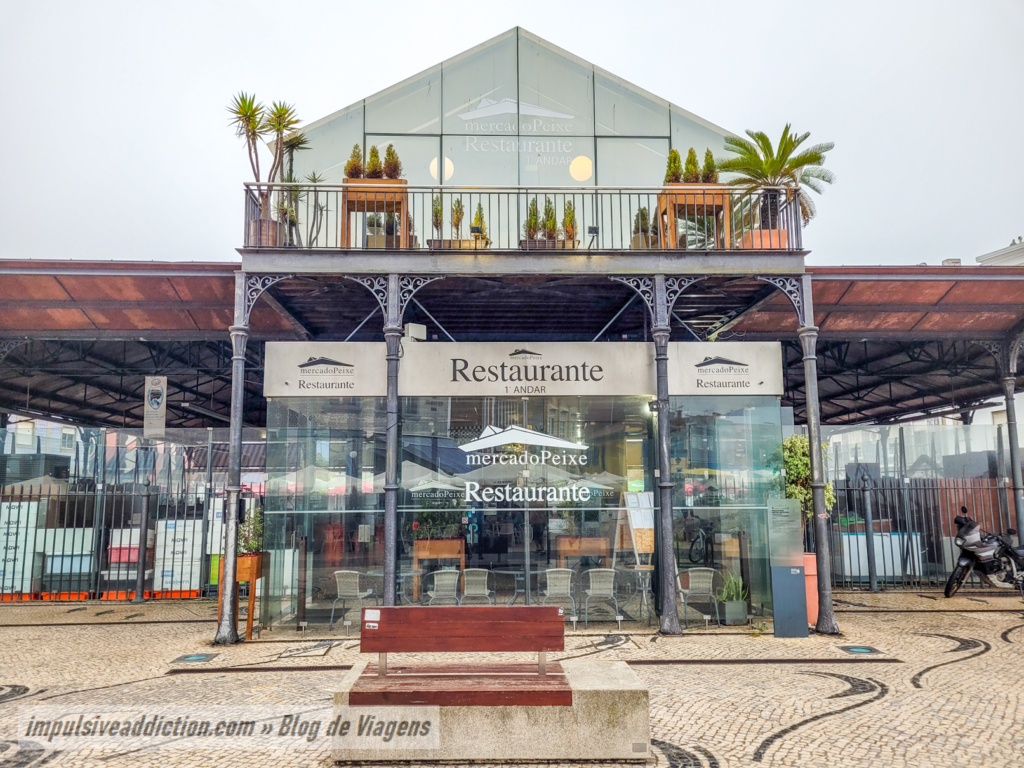
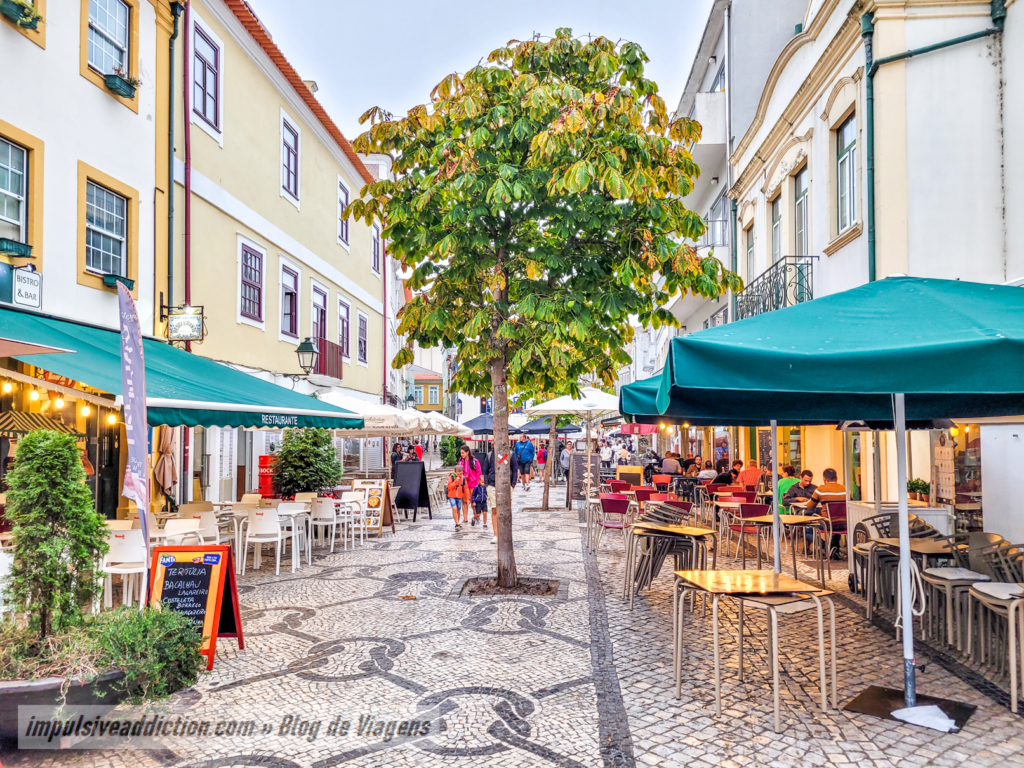
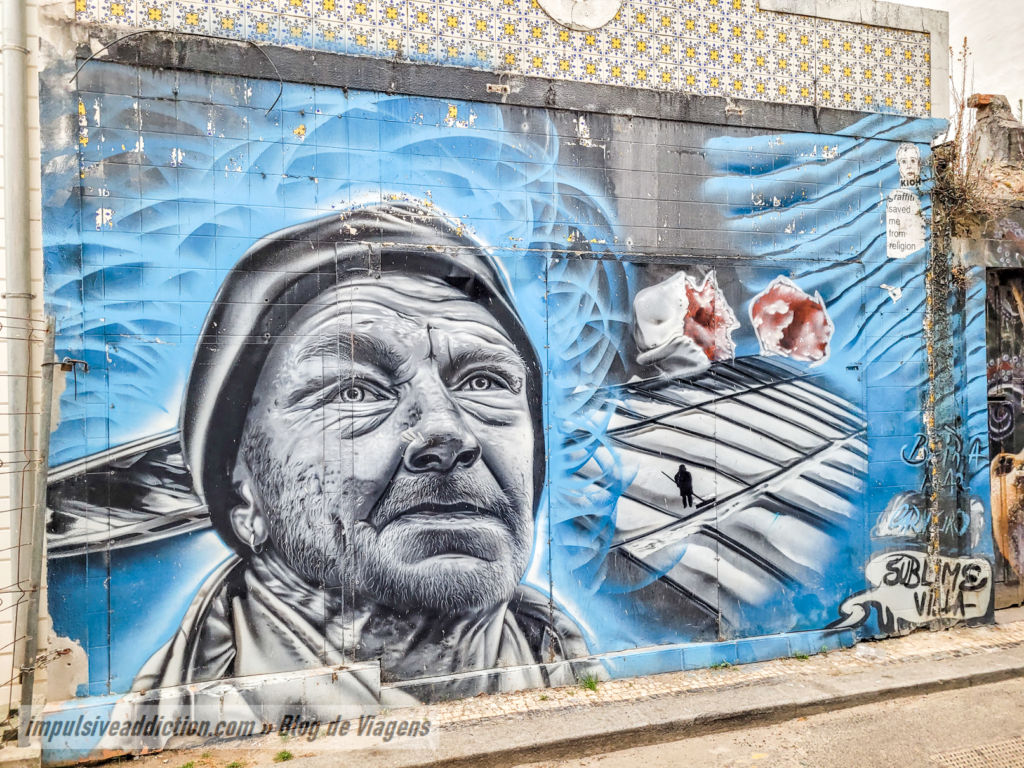
8. Rossio Square
Next is Rossio Square, with pleasant green spaces and even a children’s playground. Of note is the monument dedicated to João Afonso de Aveiro, an important navigator of the Portuguese discoveries who participated, for example, in the discovery of Zaire River and Kingdom of Congo together with Diogo Cão.
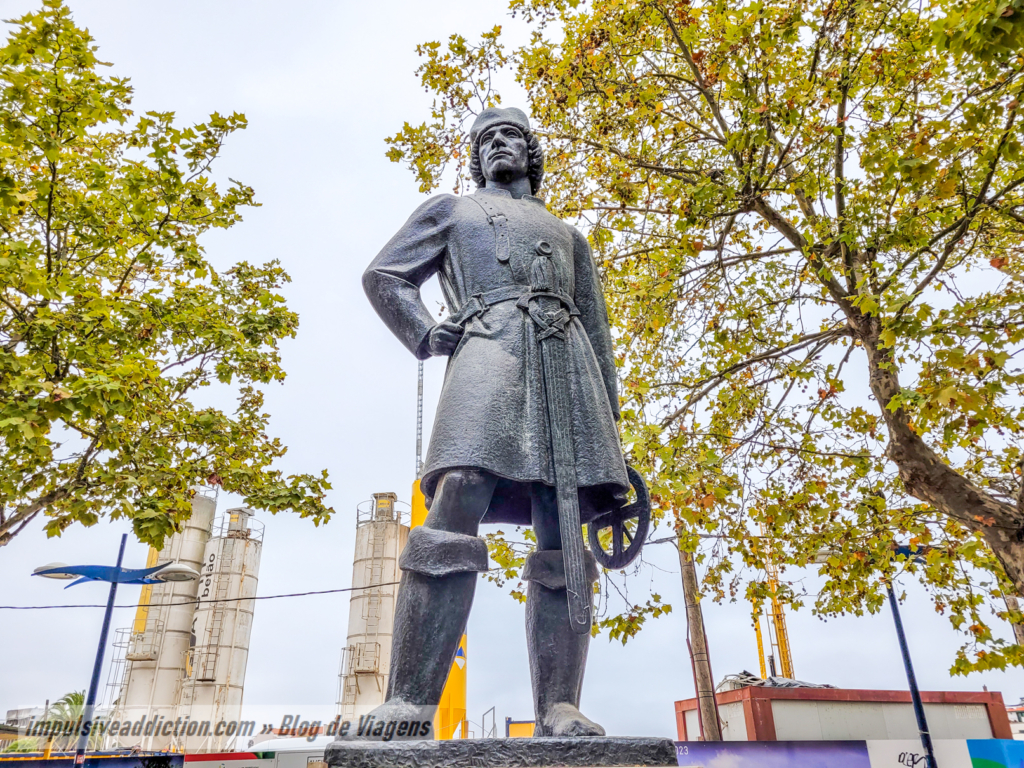
9. Moliceiros Pier
Moliceiros Pier, in turn, will be a place to stay for a while, admiring the hustle and bustle of the arrival and departure of the Moliceiro or Mercantel boats. Look closely at the paintings of the Moliceiro boats, some of them very daring and very spicy. 😀 These boats are the element that most differentiates Aveiro region, in my opinion, and for some reason Portugal is trying to classify them as UNESCO World Heritage!
- Moliceiro boat: formerly used to collect moliço, a kind of silt from Aveiro estuary that would be used to fertilize agricultural land. This activity is no longer carried out, so today they are almost exclusively touristic for cruises through the canals of the city of Aveiro.
- Mercantel boats: they were cargo vessels used in Ria de Aveiro region to transport people, sand, mud, reeds or even salt. They don’t have the same elegance and decoration as the previous ones.
There are other typical Aveiro boats, which you can discover at Ílhavo Maritime Museum that I will also mention in this article. Boat trips through the canals of the city of Aveiro are made in moliceiro or mercantel, and you will have a guide to tell you much more about them, about Aveiro estuary and even about the city. Unmissable!
- Aveiro: Traditional Moliceiro Boat Tour (Get Your Guide)
- Moliceiro Boat Trip in Aveiro (Civitatis)
- Aveiro: Boat Cruise & City Highlights Walking Tour
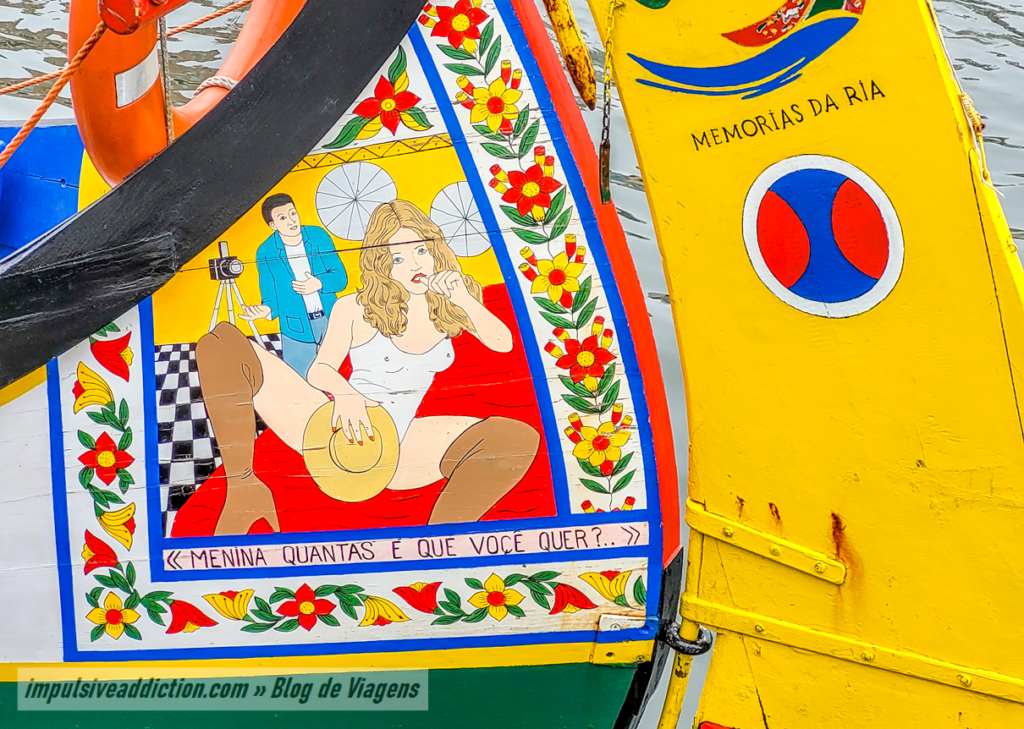
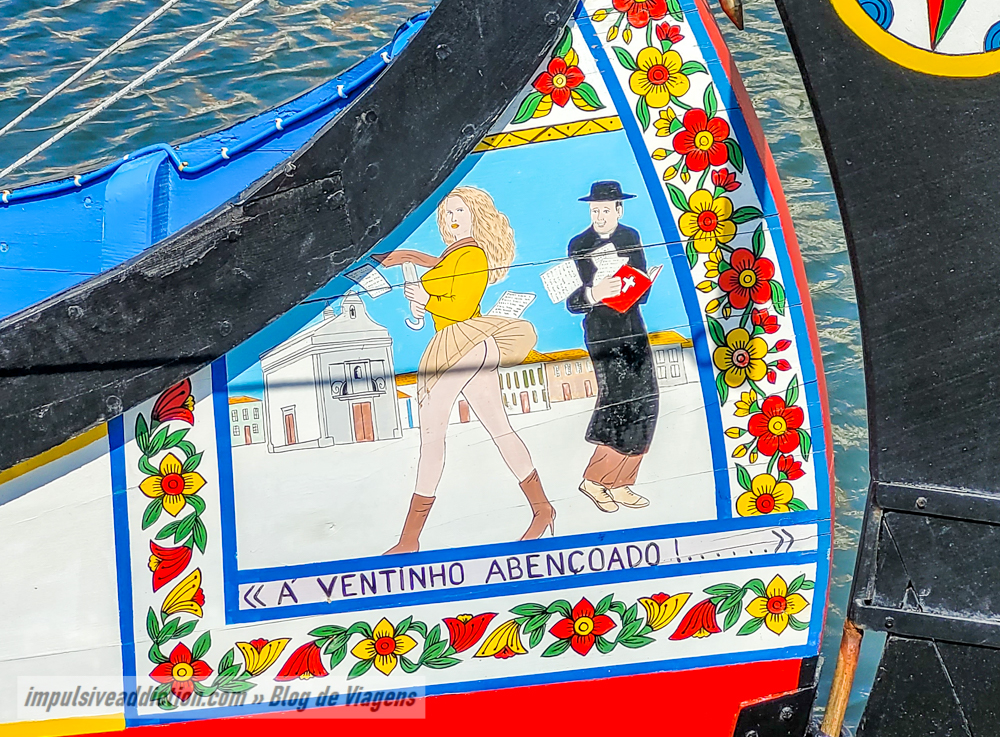
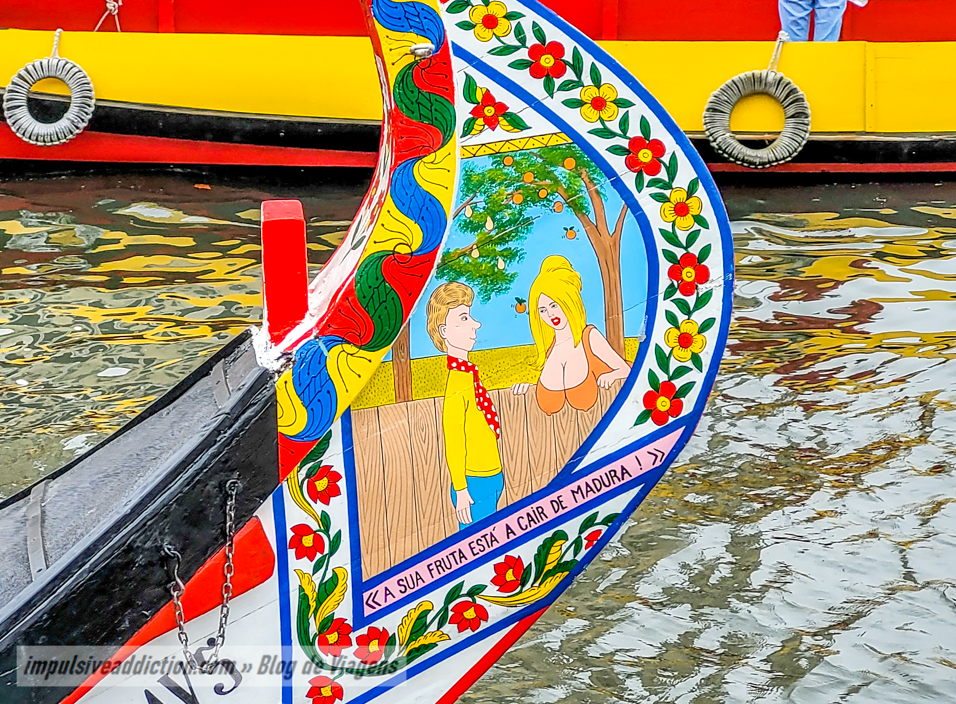
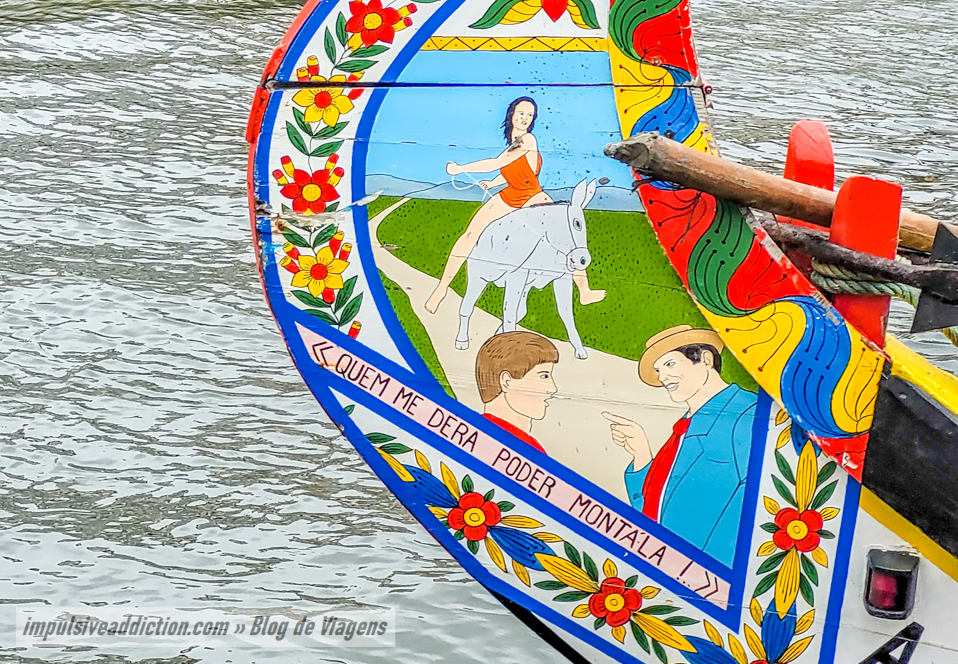
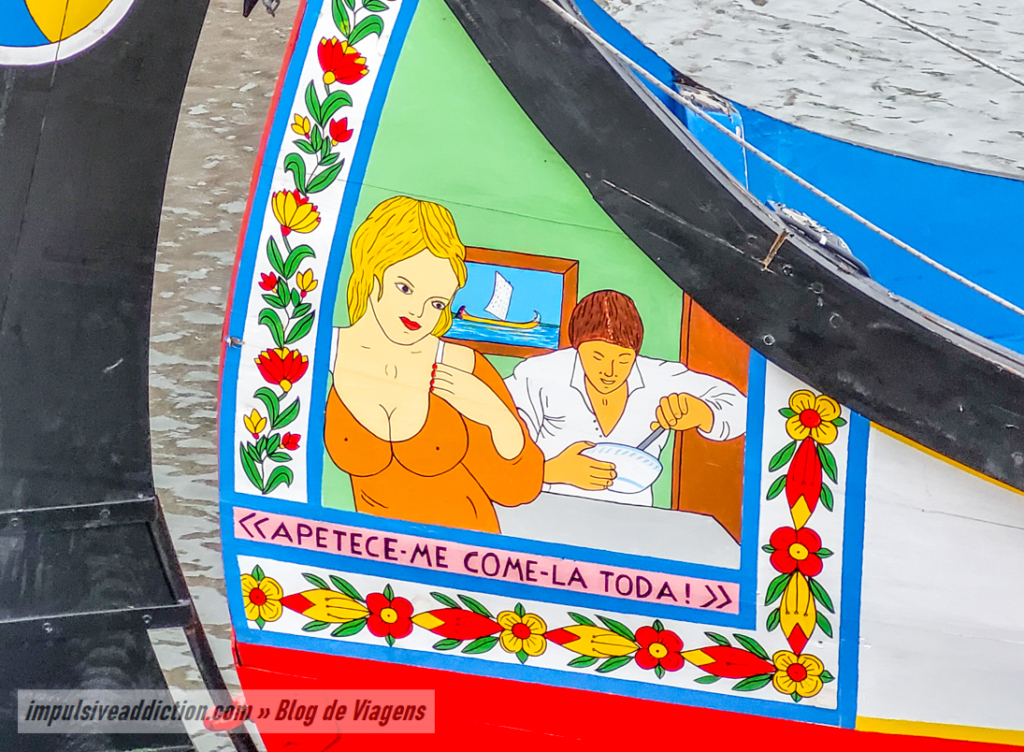
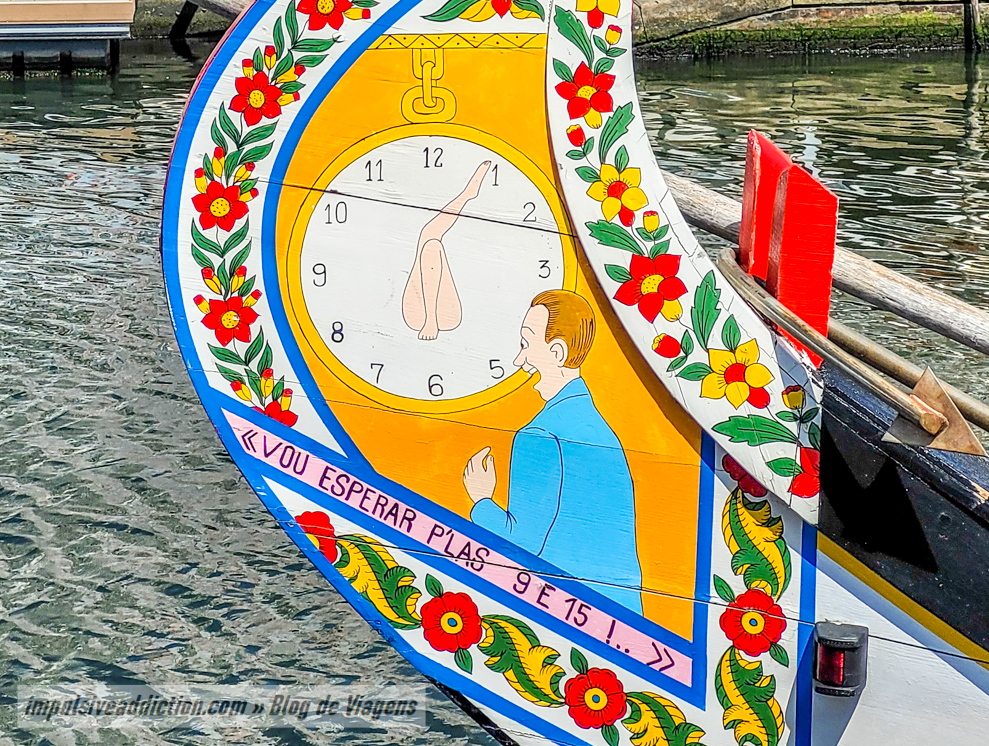
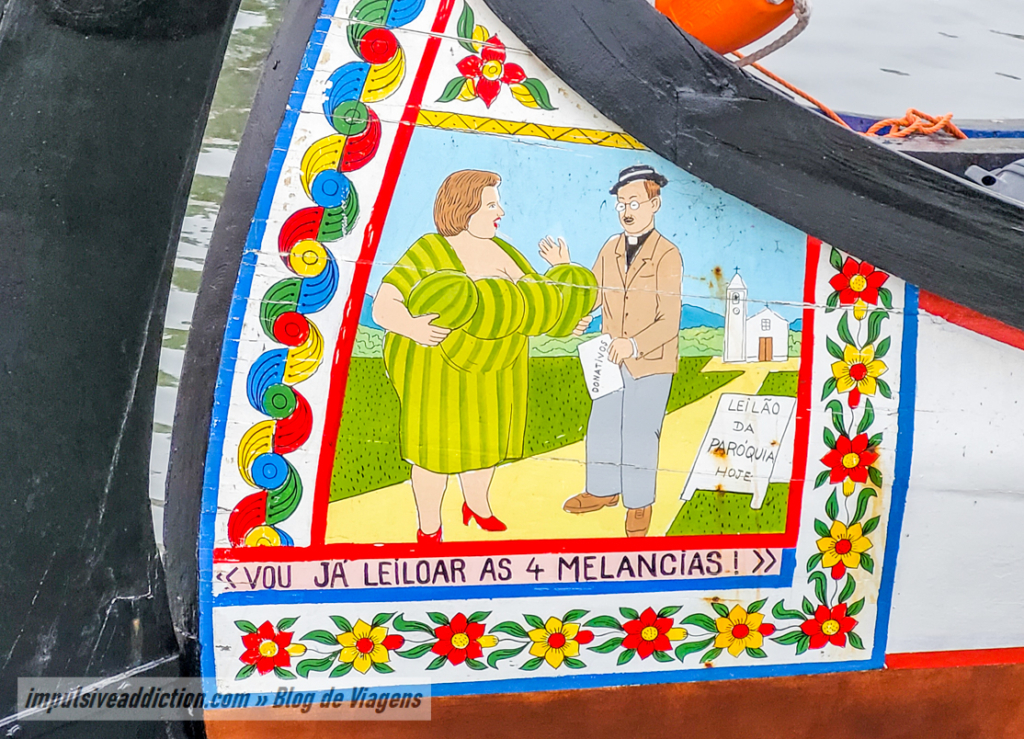
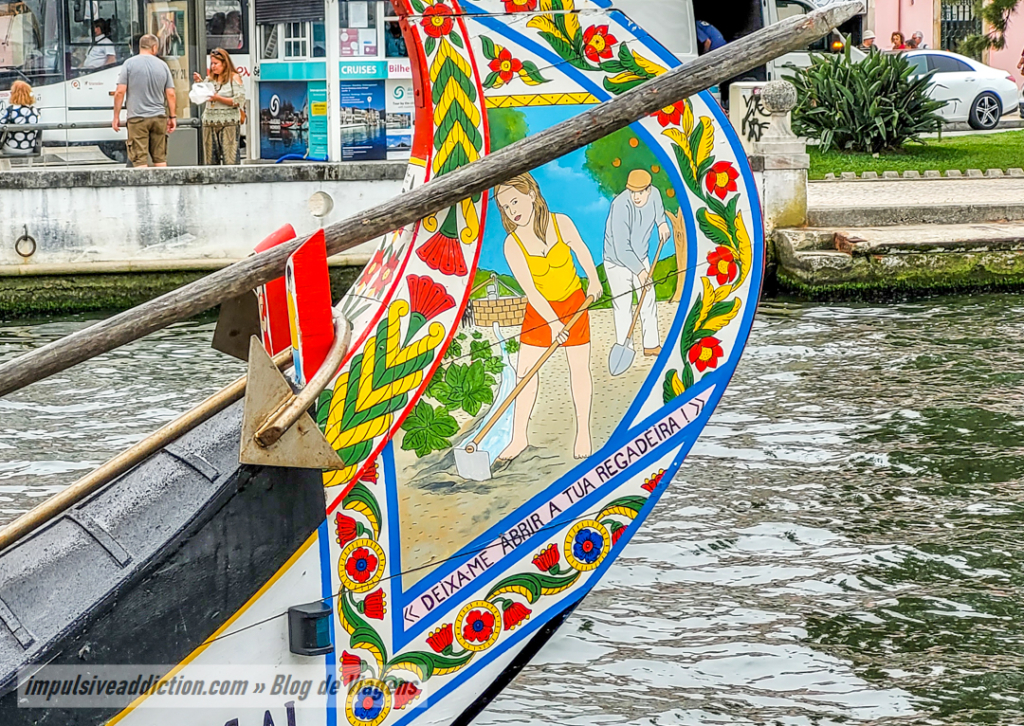
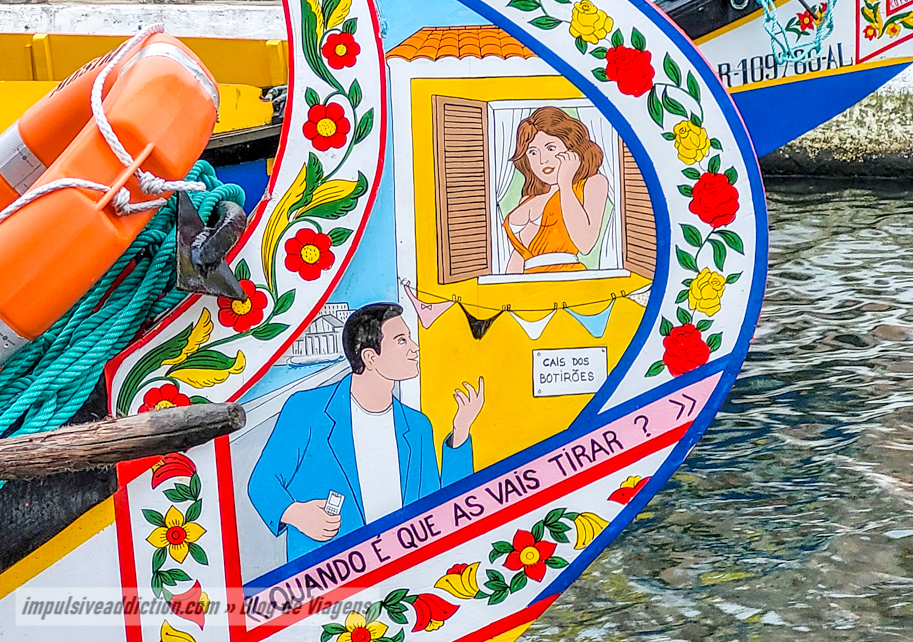
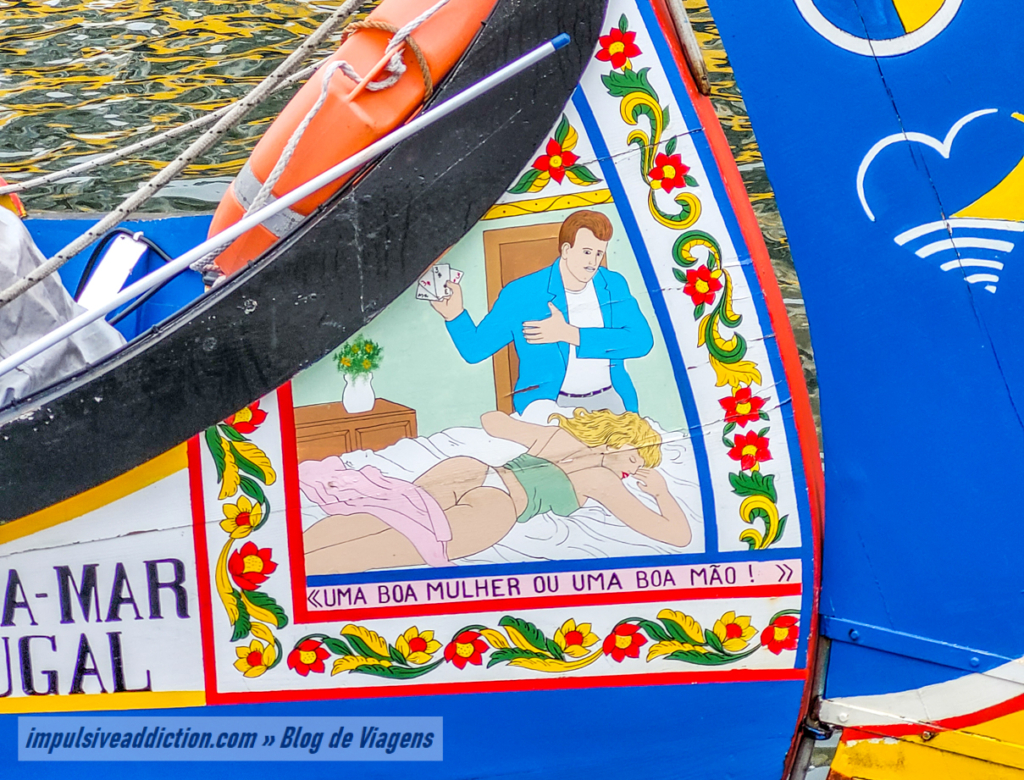
10. Aveiro Art Nouveau Museum
Aveiro is one of the most important centers of Art Nouveau in Portugal. If you want to know more about this architectural style, it will be very interesting to visit the Museum of Art Nouveau in Aveiro, housed in one of the most emblematic buildings of this artistic style: Casa Major Pessoa, which dates from 1909.
In a simple way, Art Nouveau consists of the use of natural elements (flowers and animals, for example), on the facades of buildings and even on the tiles that cover them.
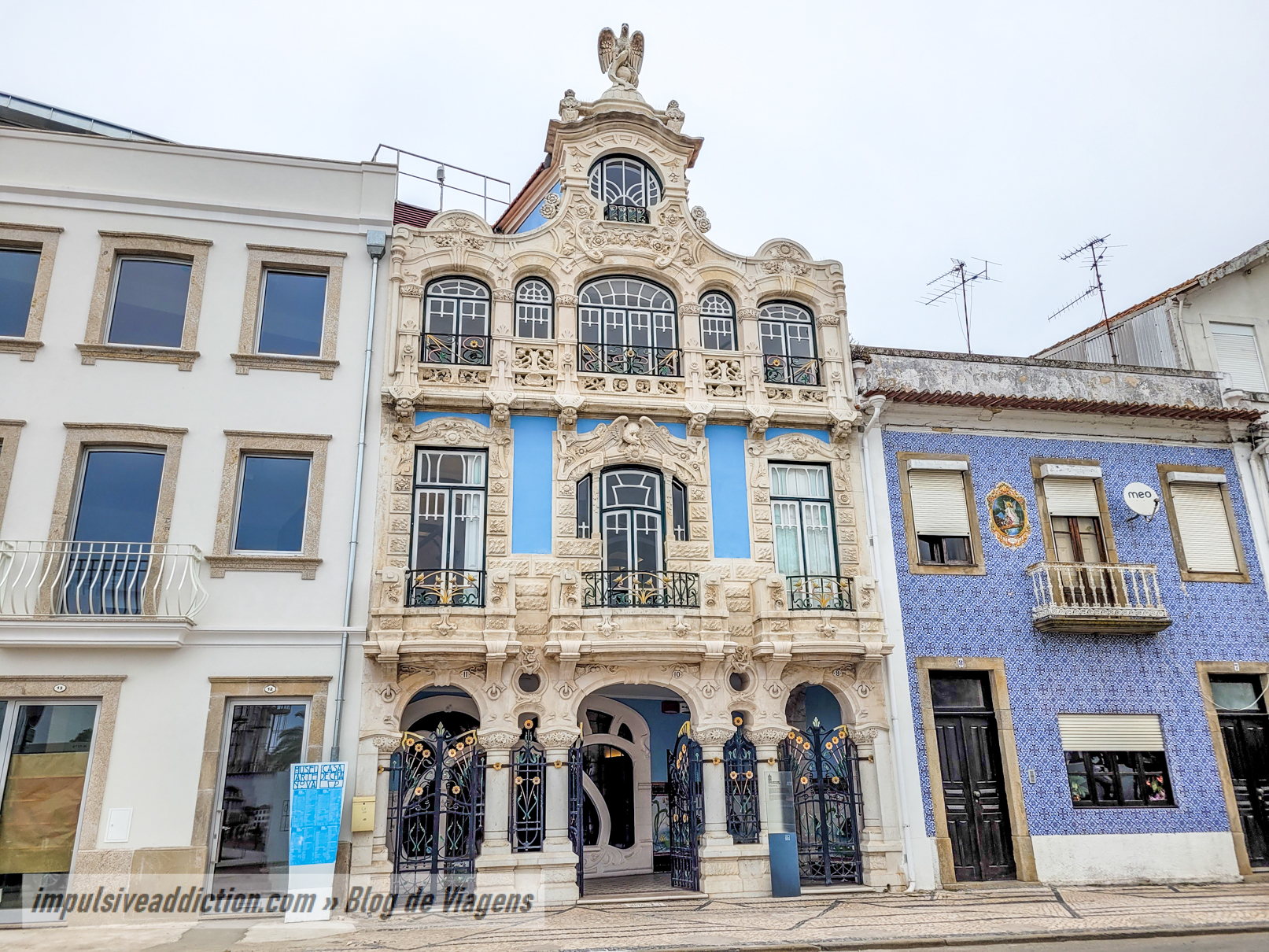
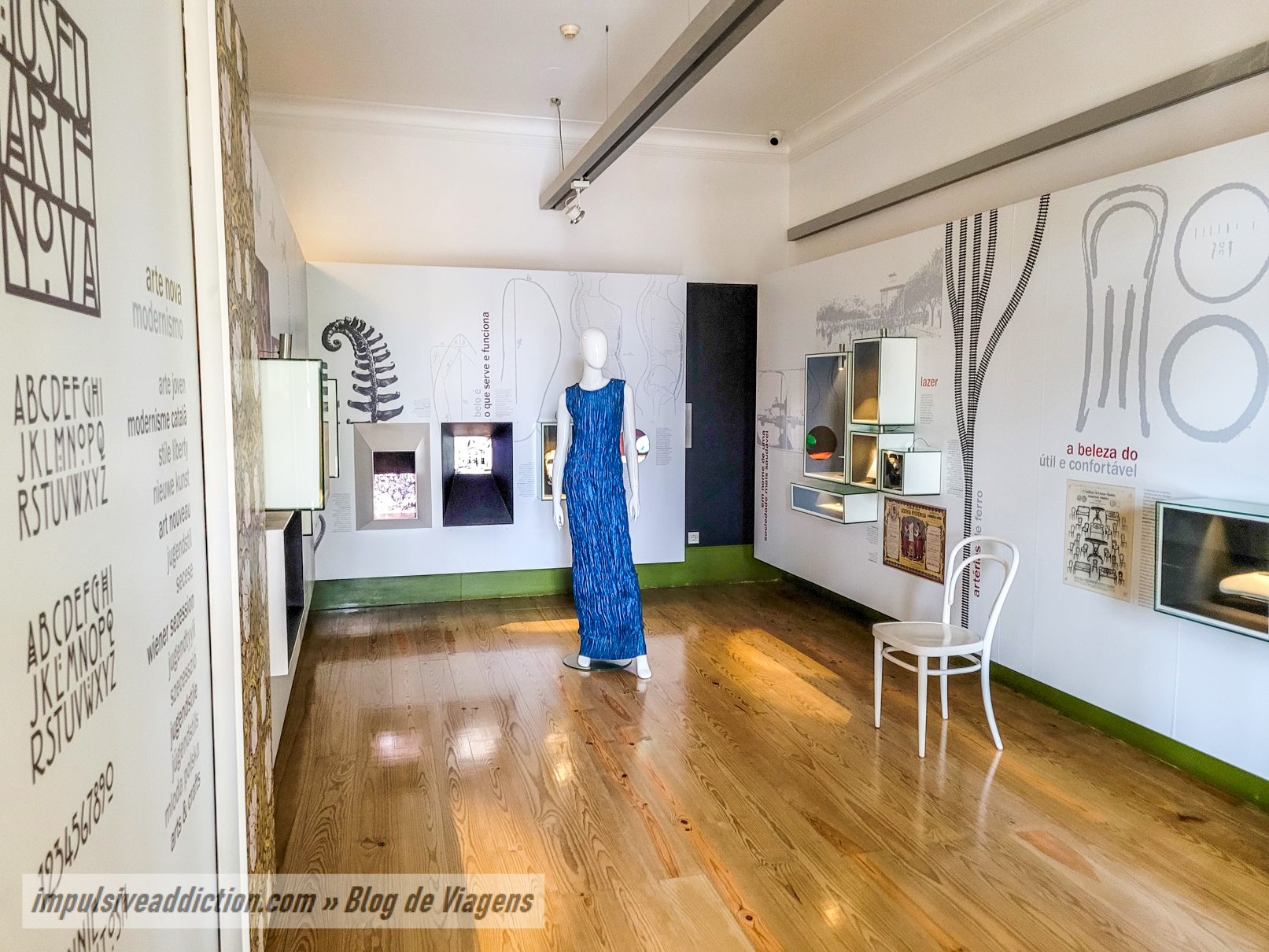
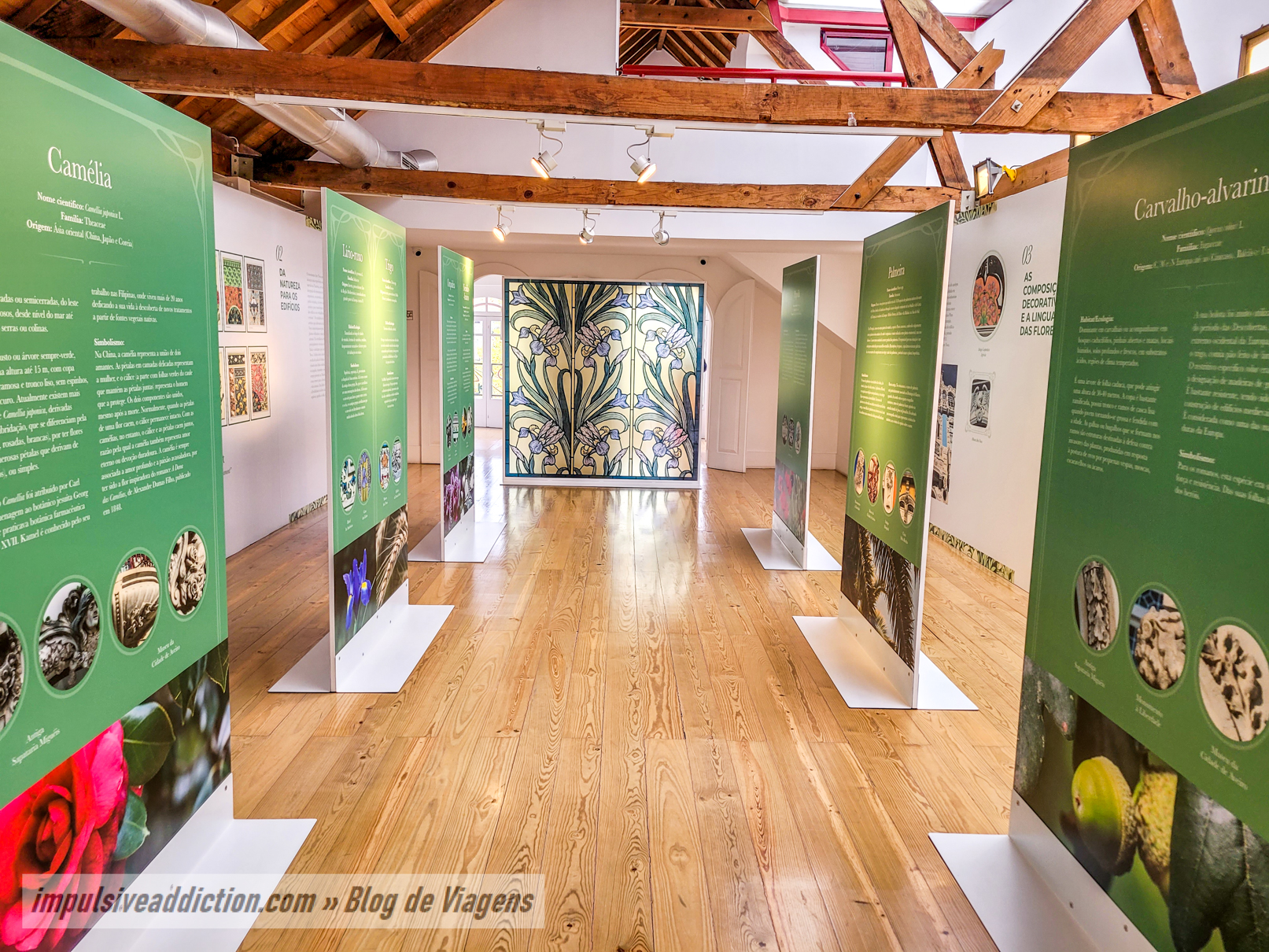
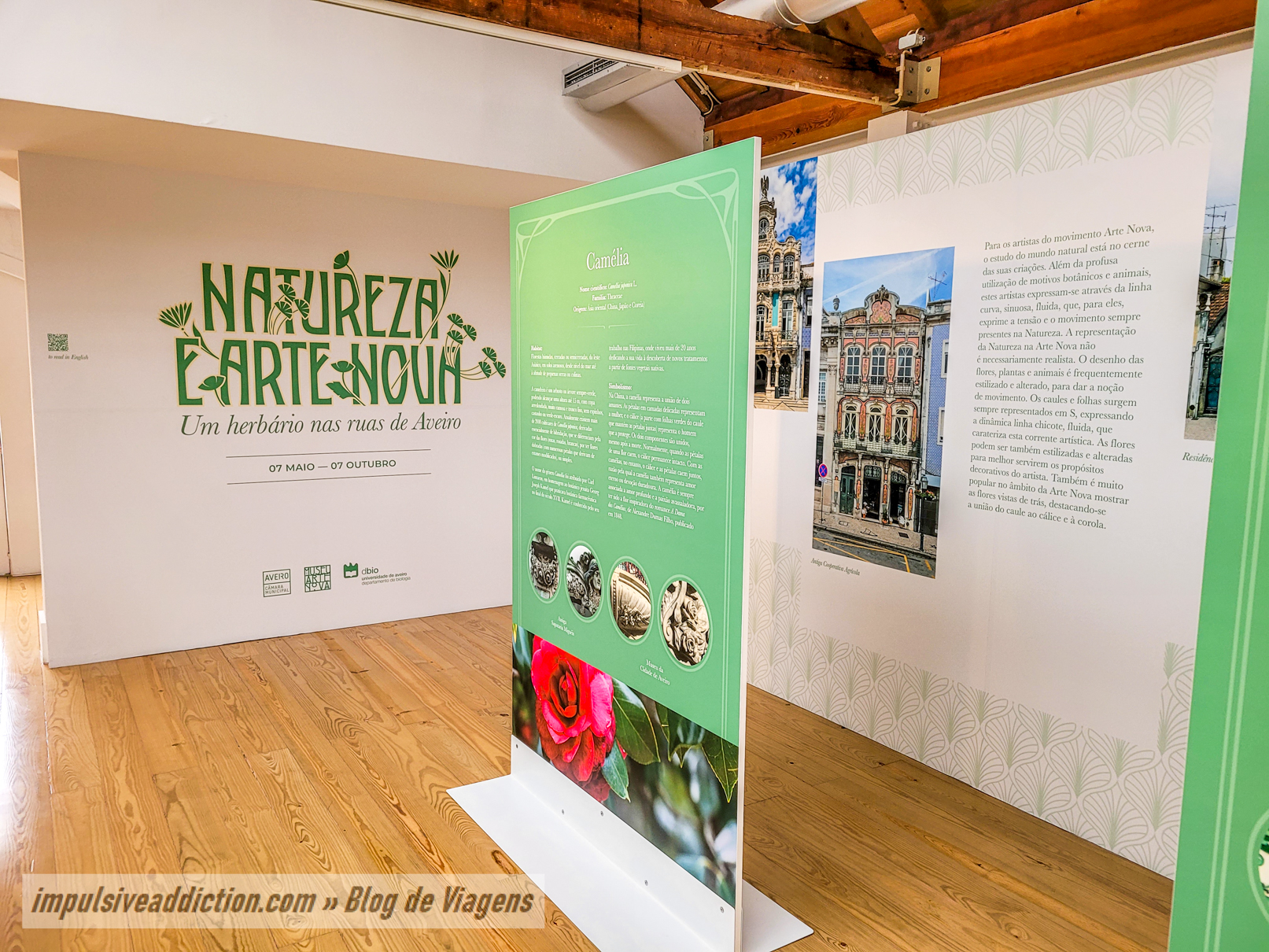
11. Aveiro City Museum
Another museological space not to be missed is Aveiro City Museum, which aims to present the main historical landmarks of the city, and also some of the greatest highlights of the territory of Ria de Aveiro, and the population itself.
Between the two museums is Oficina do Doce, where you will find many of the most typical sweets from the entire region. 😉
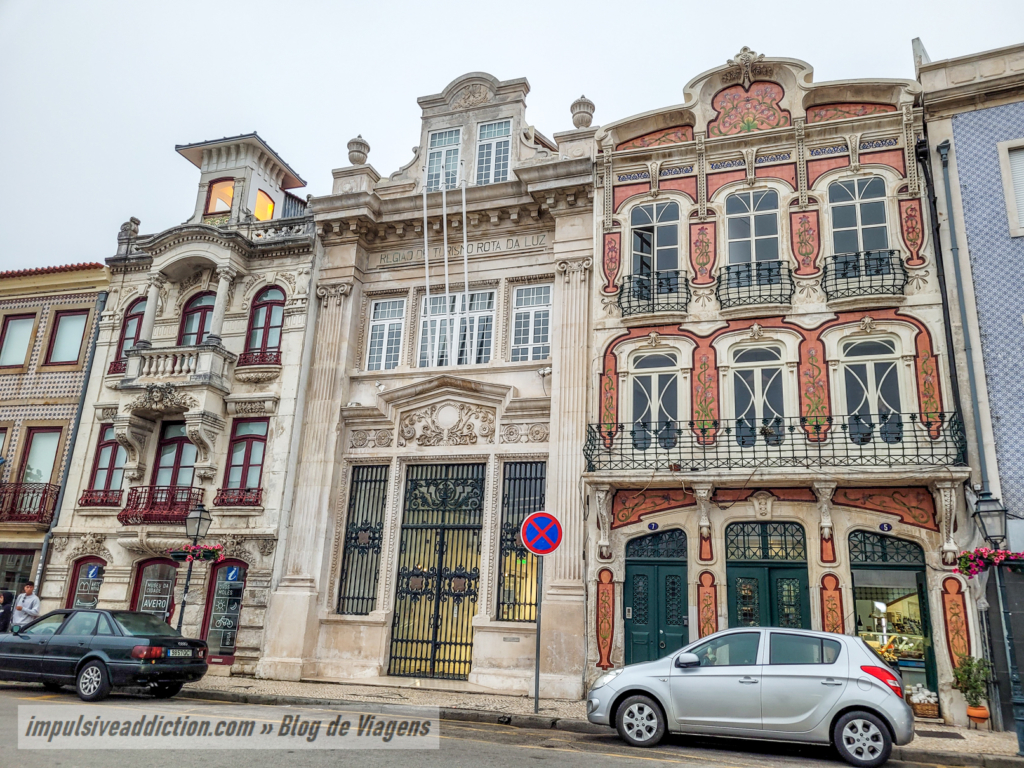
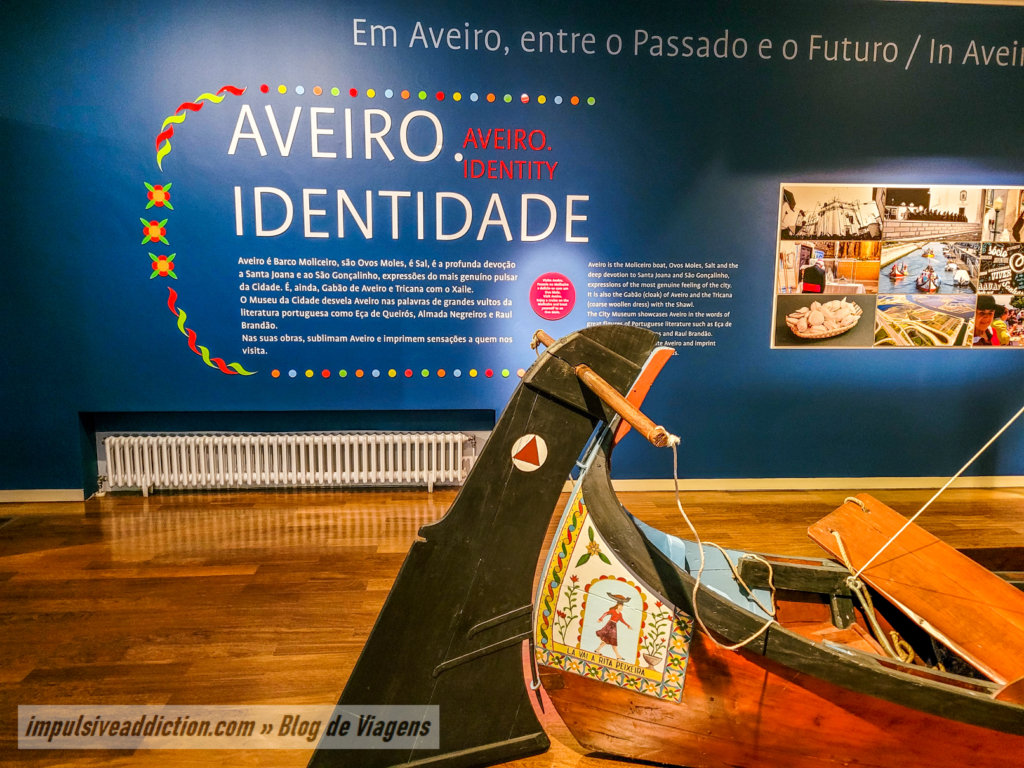
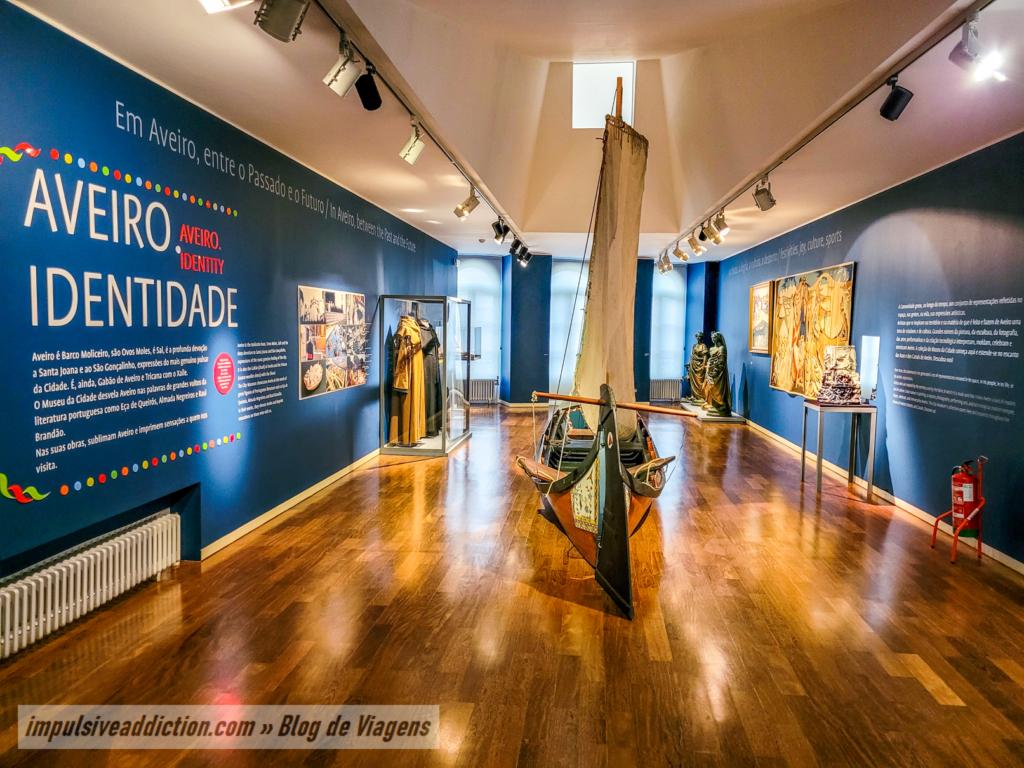
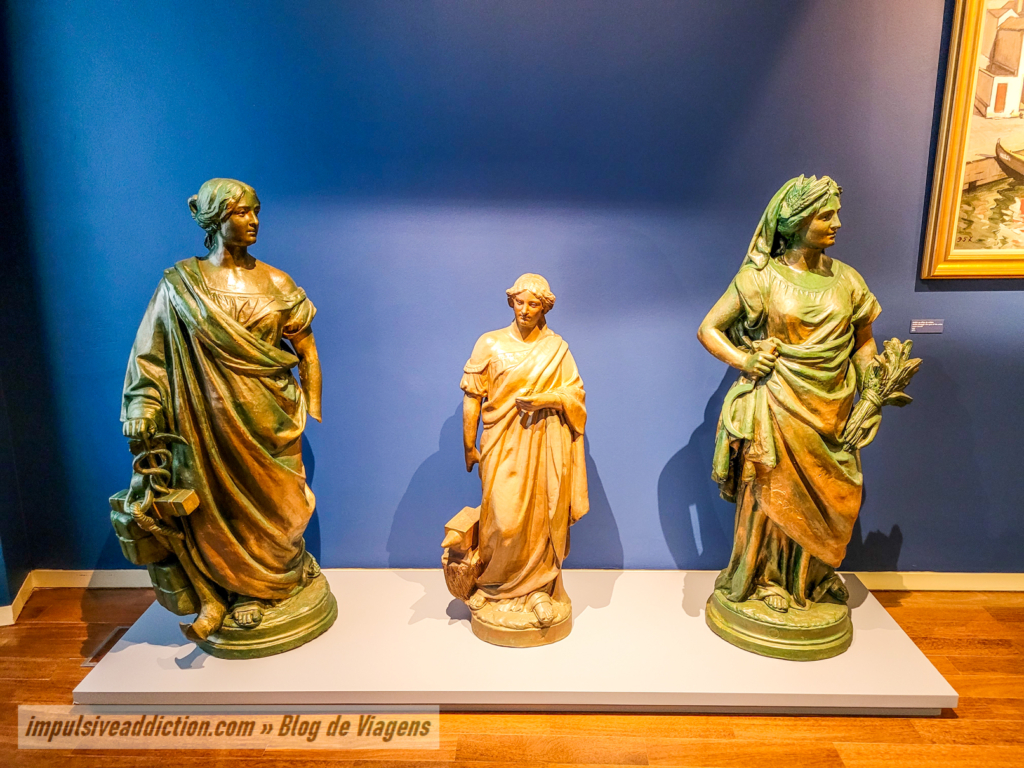
12. Republic Square in Aveiro
You are now leaving the vicinity of Canal do Cojo to discover other charms of the city. To get to Republic Square in Aveiro, you can go up the stairs next to Chafariz dos Arcos (Arches Fountain, in english), where you can find beautiful tile panels. Another option is to go through Rua de Coimbra.
In Republic Square itself, the following points of interest stand out:
- The Municipal Library of Aveiro, and below it, the Coat of Arms of Casa da Alfândega. From there you have a beautiful viewpoint overlooking the central canal of Aveiro (Cojo), already mentioned. 😉
- The Statue of José Estêvão.
- The Town Hall, built following the elevation of Aveiro to the status of city, in the 18th century. Its central bell tower and its clock stand out.
- The Church of Mercy, which I will describe below.
- And Theater Aveirense, whose program you can check here.
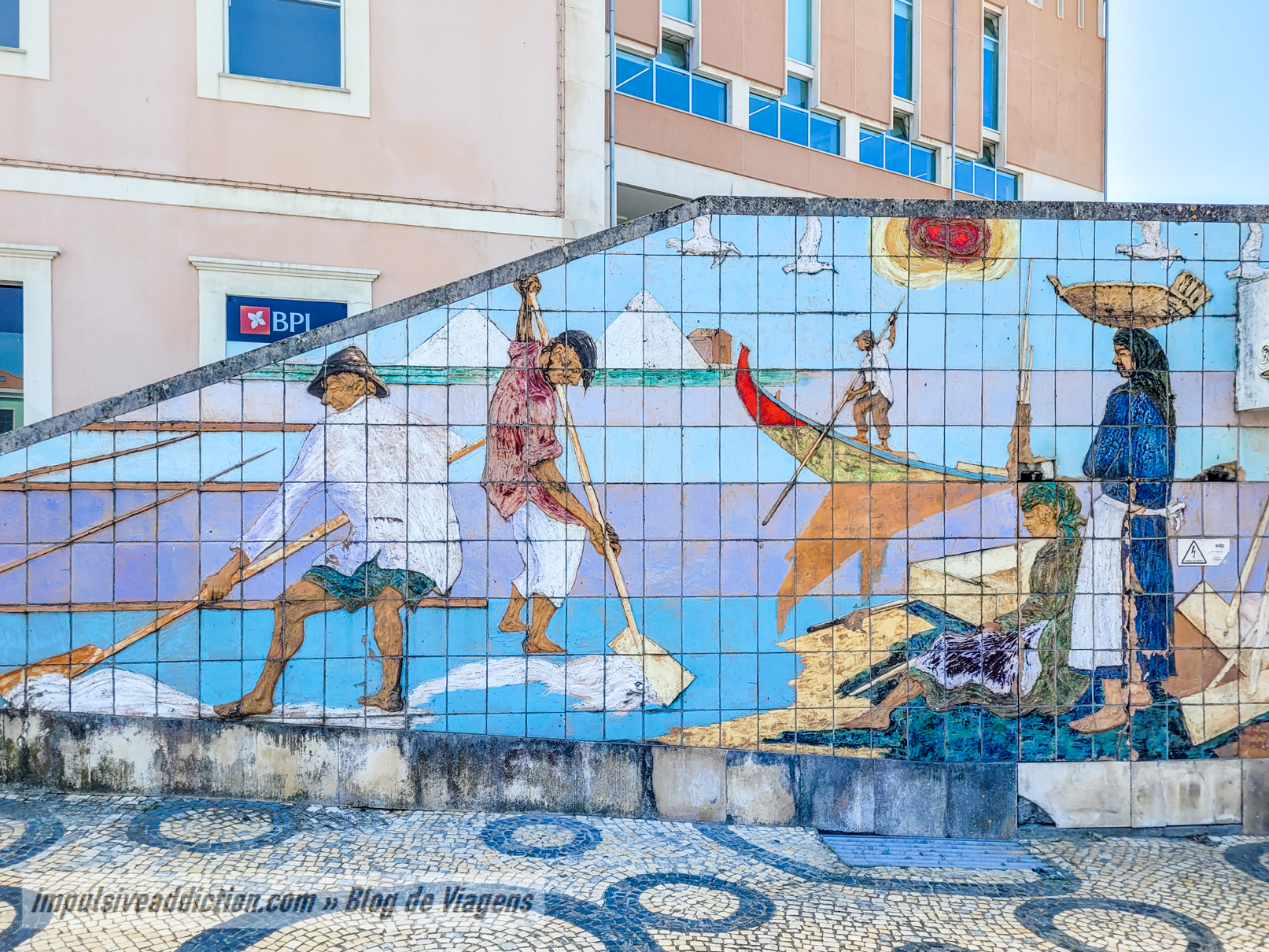
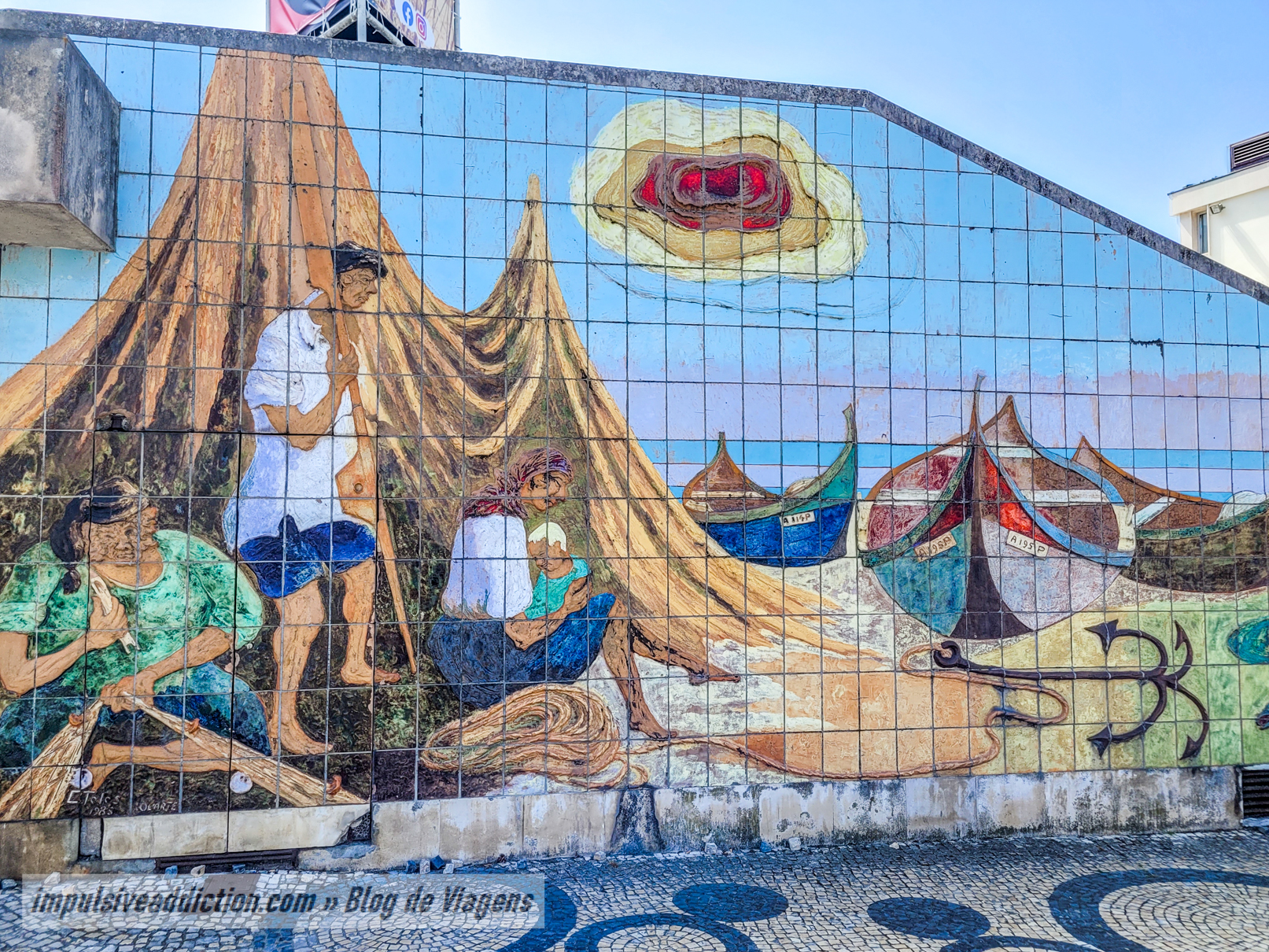
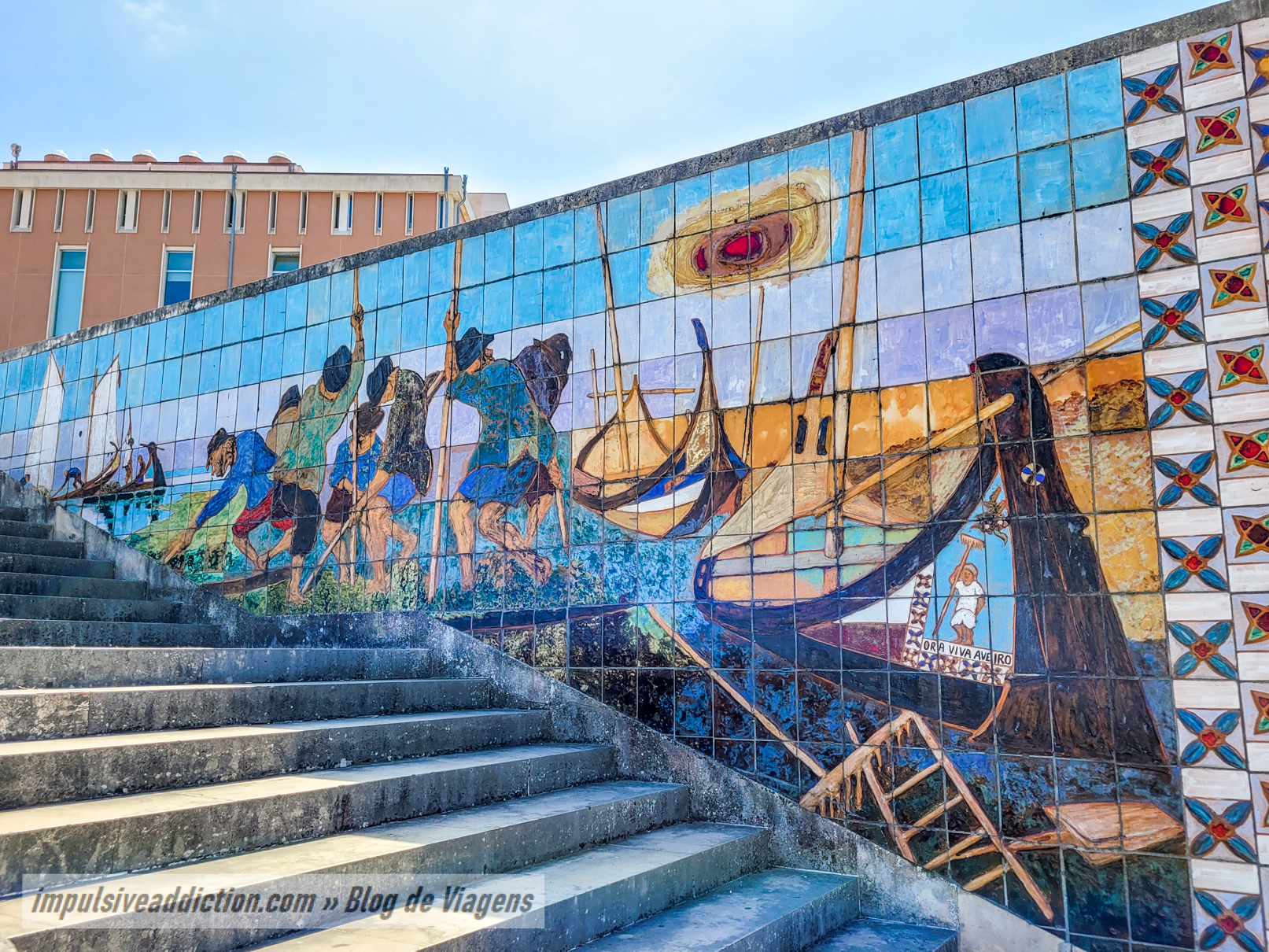
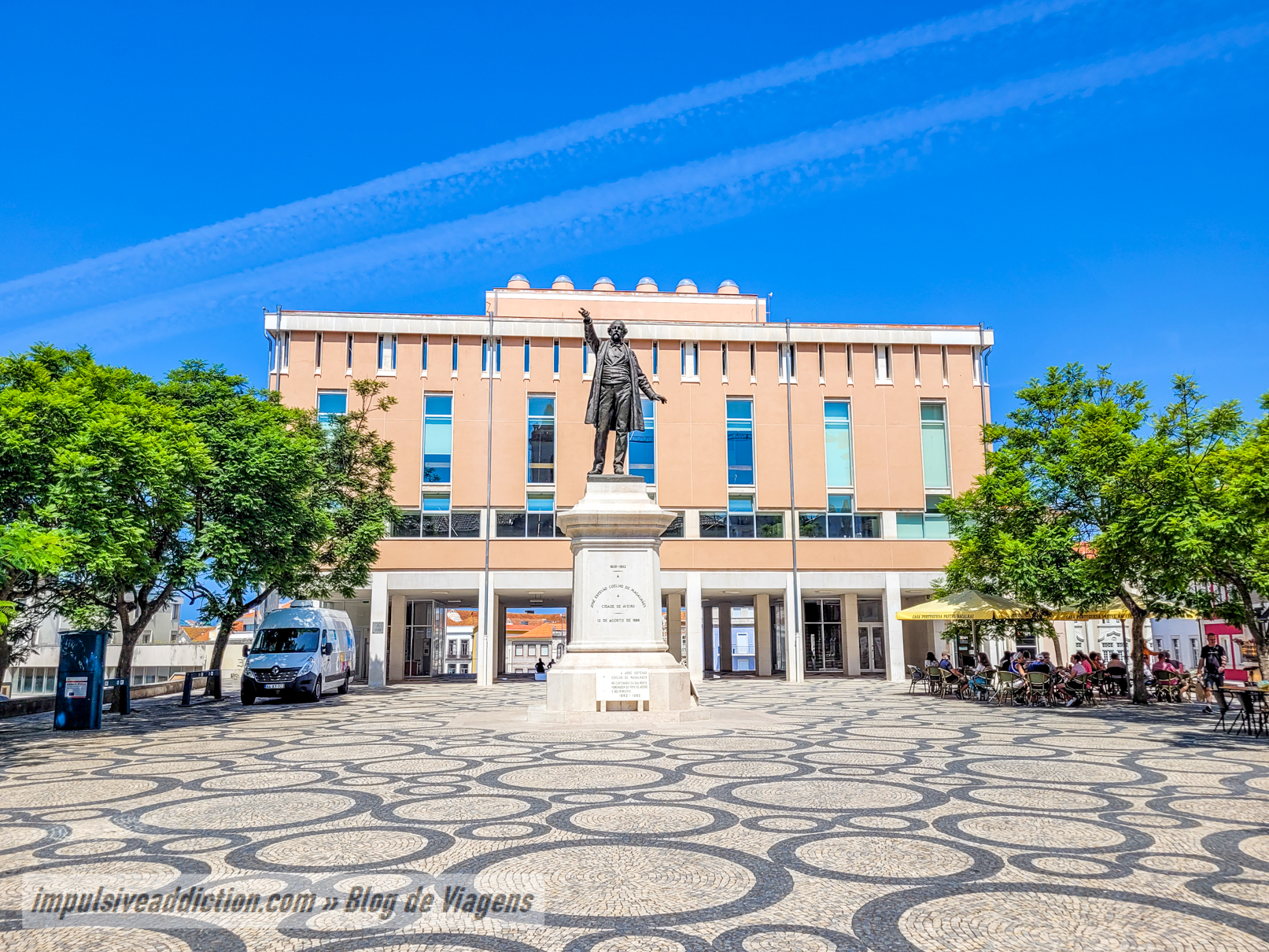
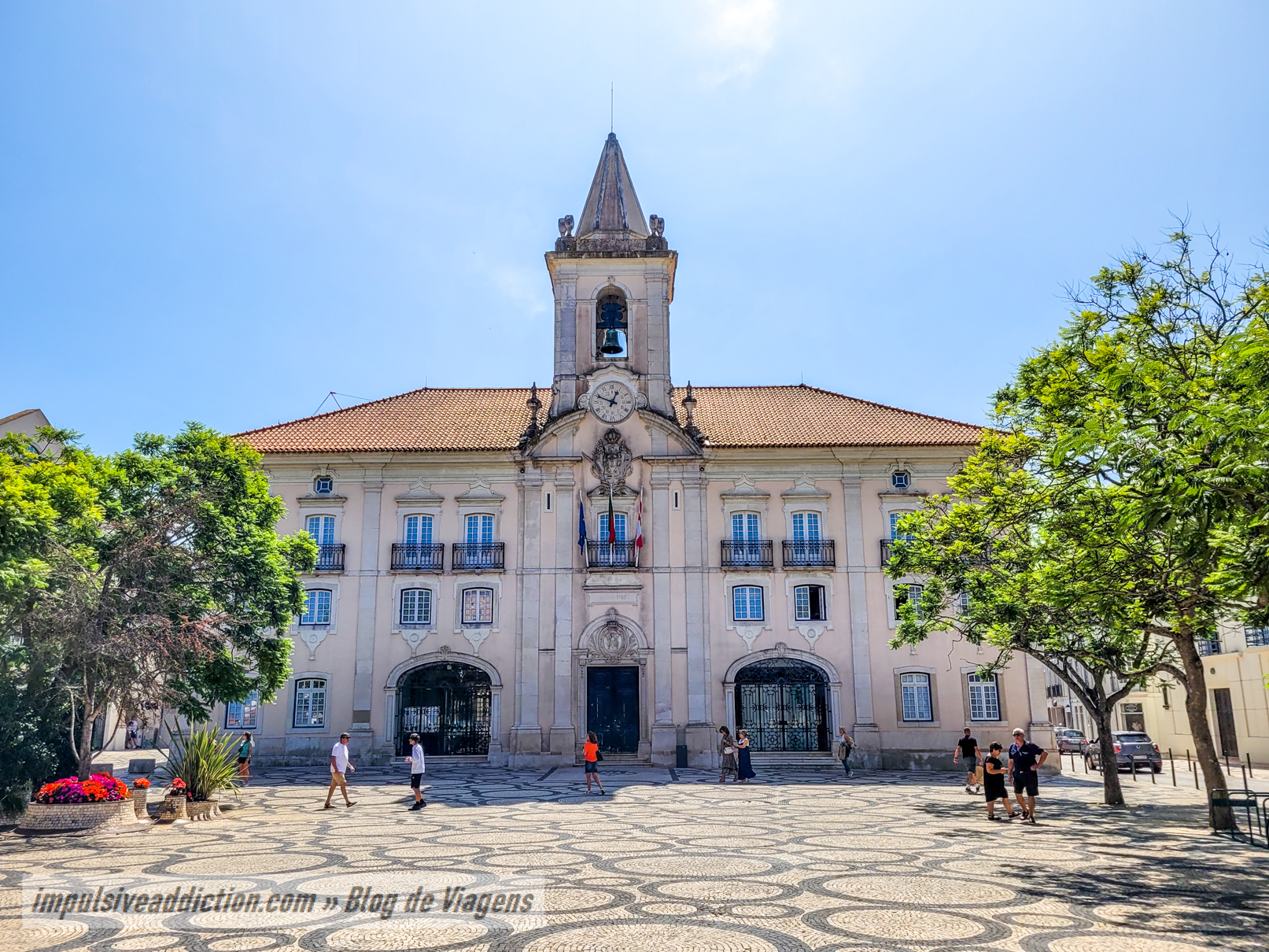
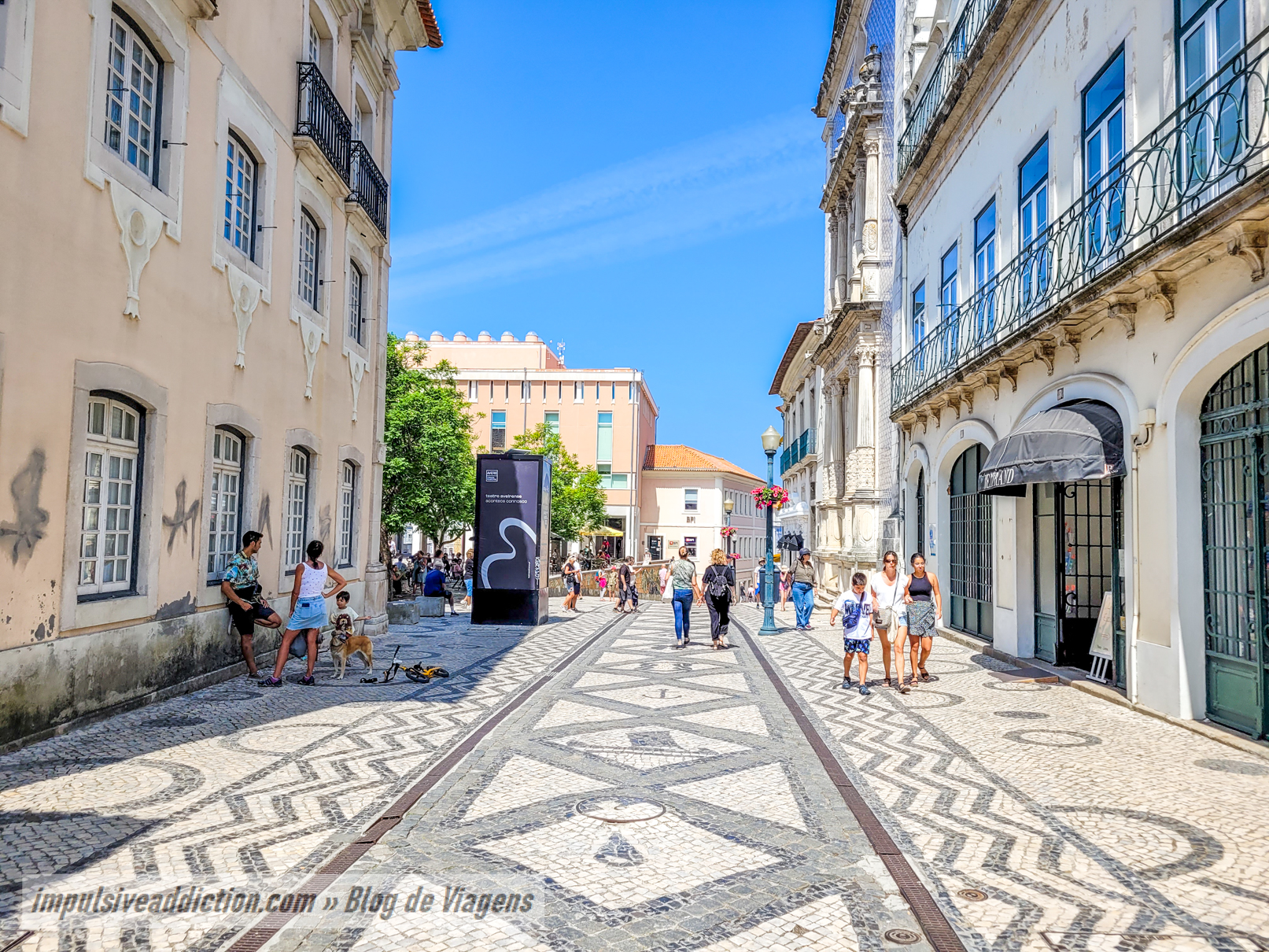
13. Church of Mercy in Aveiro
The construction of the Church of Mercy was completed in the second half of the 17th century, although the tiles that cover it are from the 19th century. Its Baroque portal stands out, with Corinthian columns and three images carved in stone, one of them of Nossa Senhora da Misericórdia. The interior is beautiful, with the walls also lined with tiles.
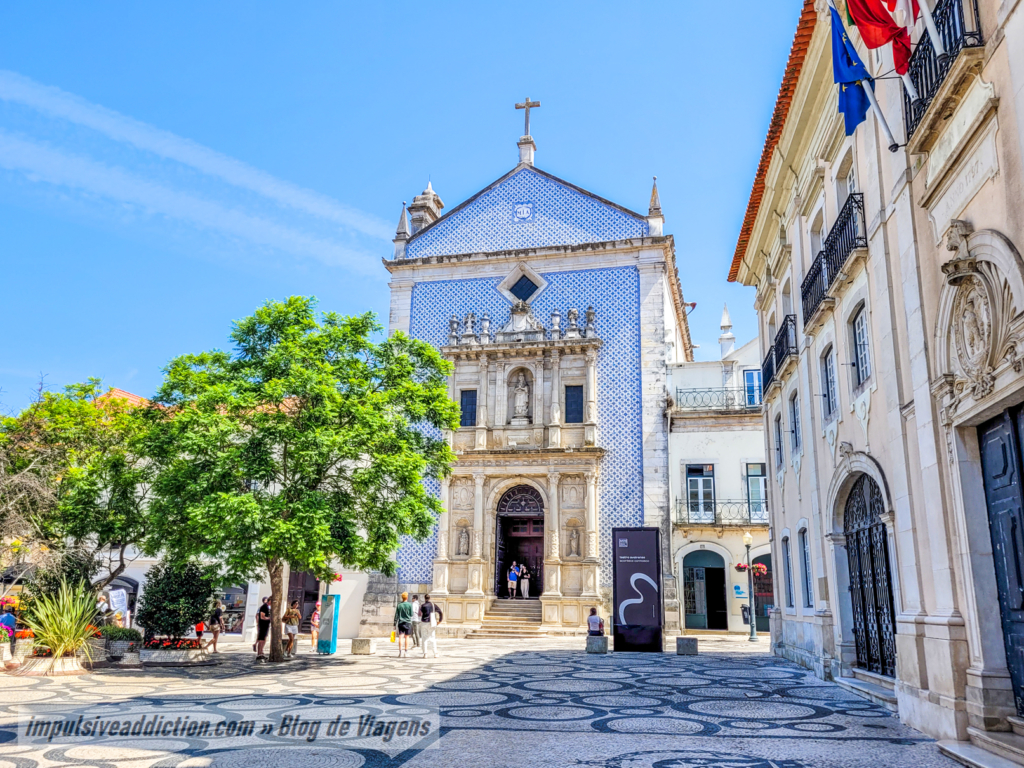
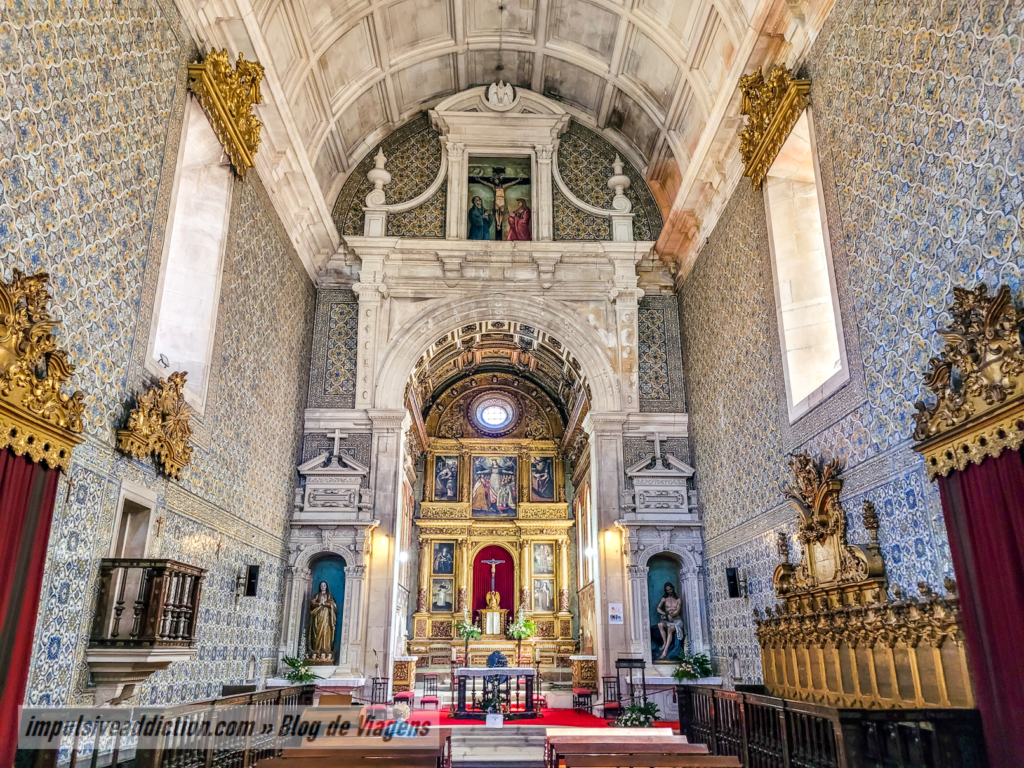
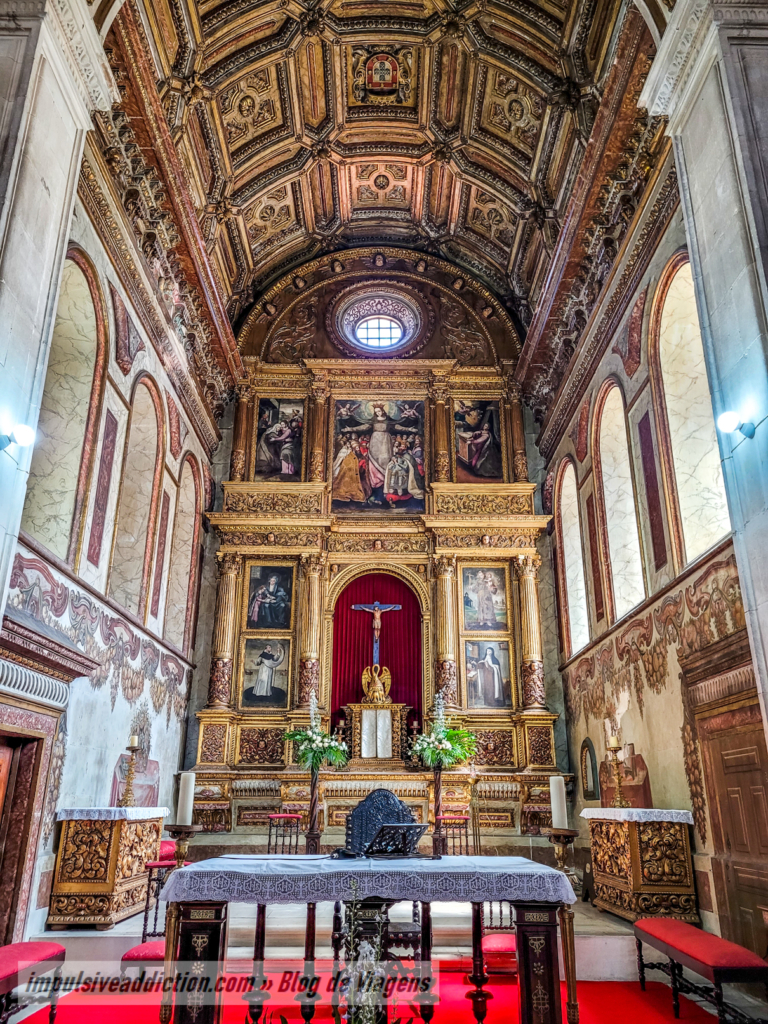
14. Aveiro City Park
With regard to Aveiro City Park, it consists of four distinct areas with gardens:
- Santo António Park.
- Infante Dom Pedro Park.
- The Park of Love
- And the Garden of Santiago.
Of the four, I recommend that you focus essentially on the first 3, where you will find several ponds with geese and ducks, spectacular pedestrian walkways, some monuments, fountains, and even a magnificent pergola full of flowers.
The City Park of Aveiro emerged in the 16th century, next to the old Convent of Santo António, outside the walls of the town of Aveiro. In 1862, the Public Promenade was installed there, to receive the main socio-cultural manifestations of the city. However, it was only in the 20th century that it gained the appearance and organization that it has today, with the addition of the area corresponding to Santo António Park. It has a total of about 20 hectares.
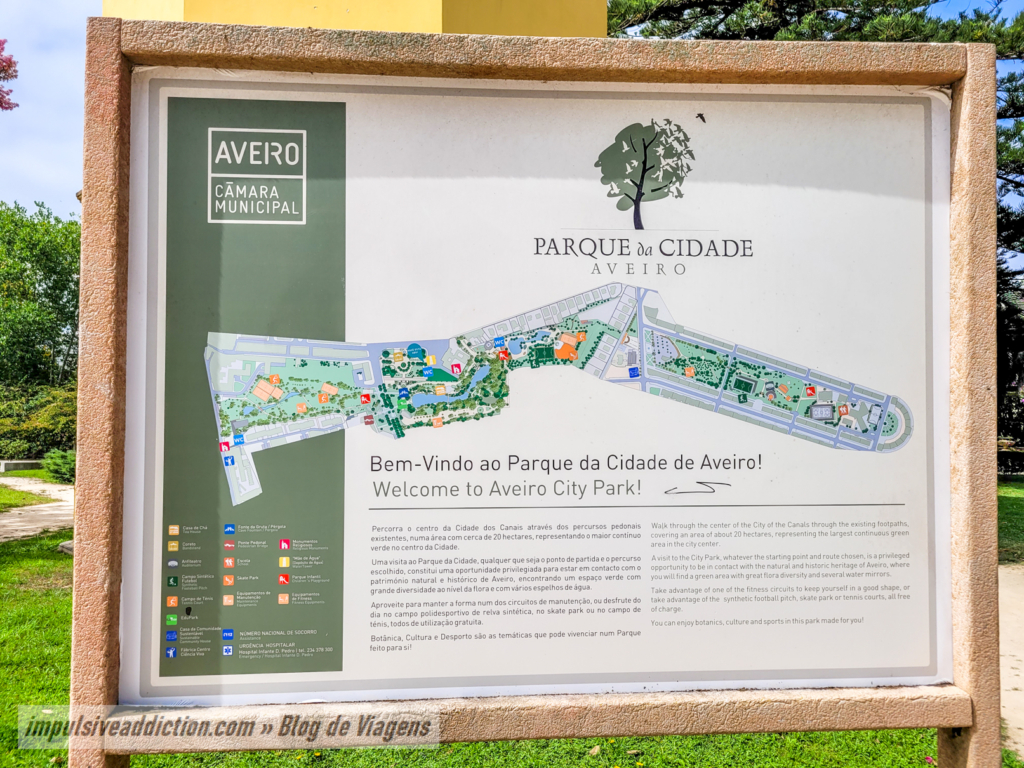
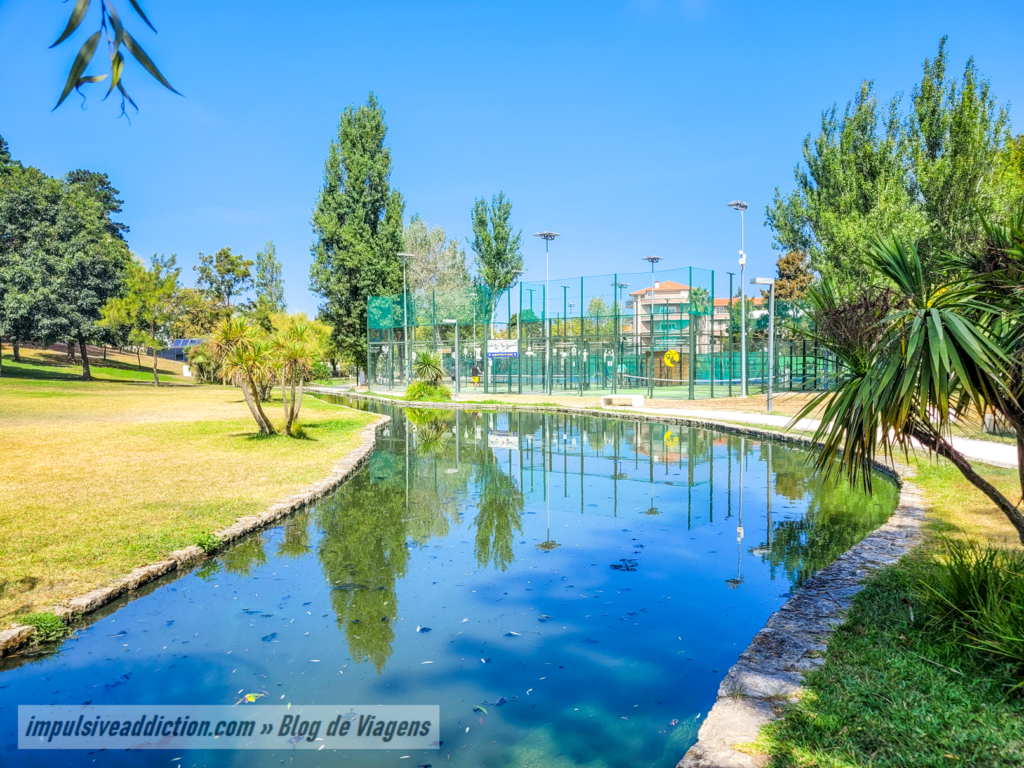
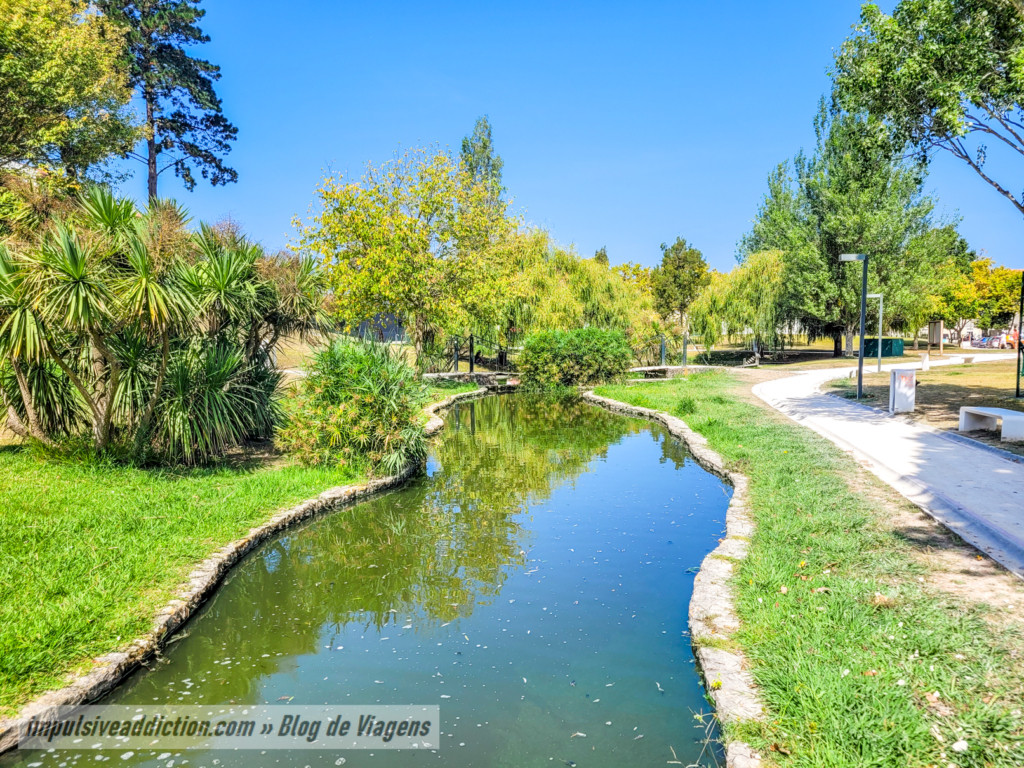
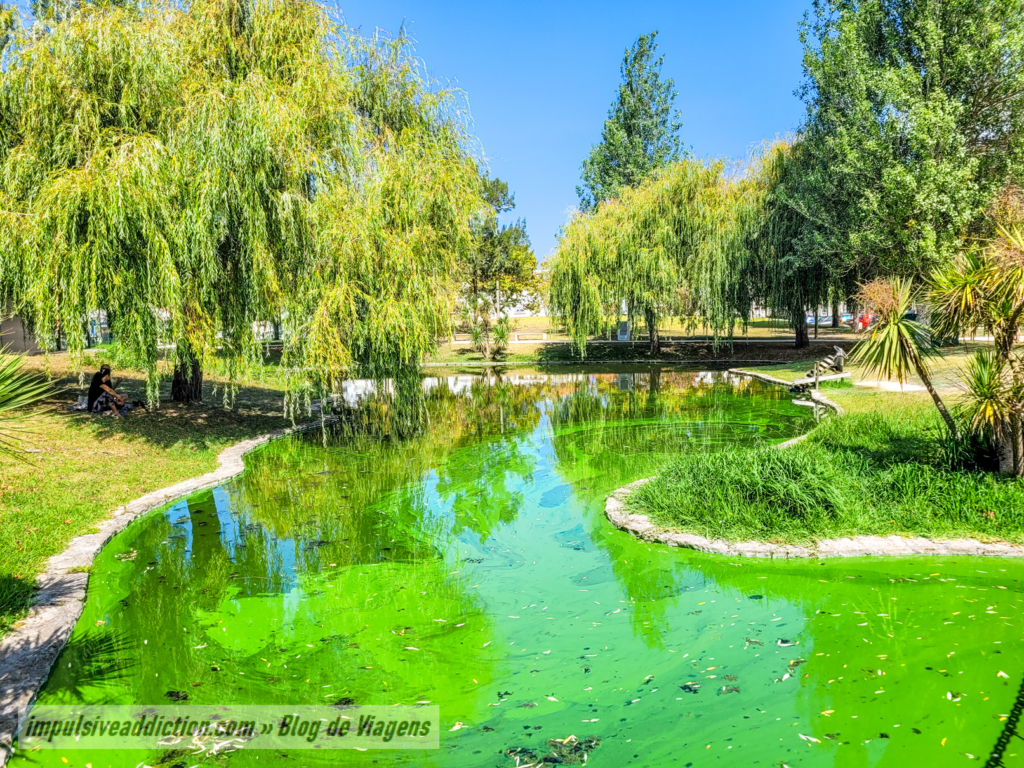
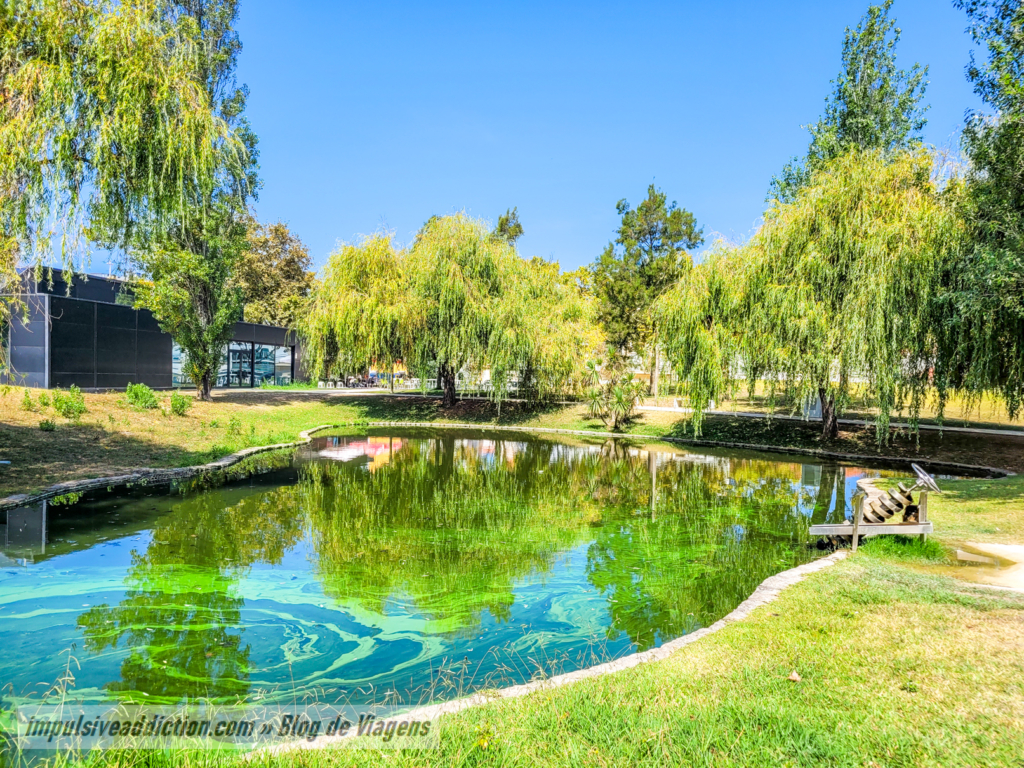
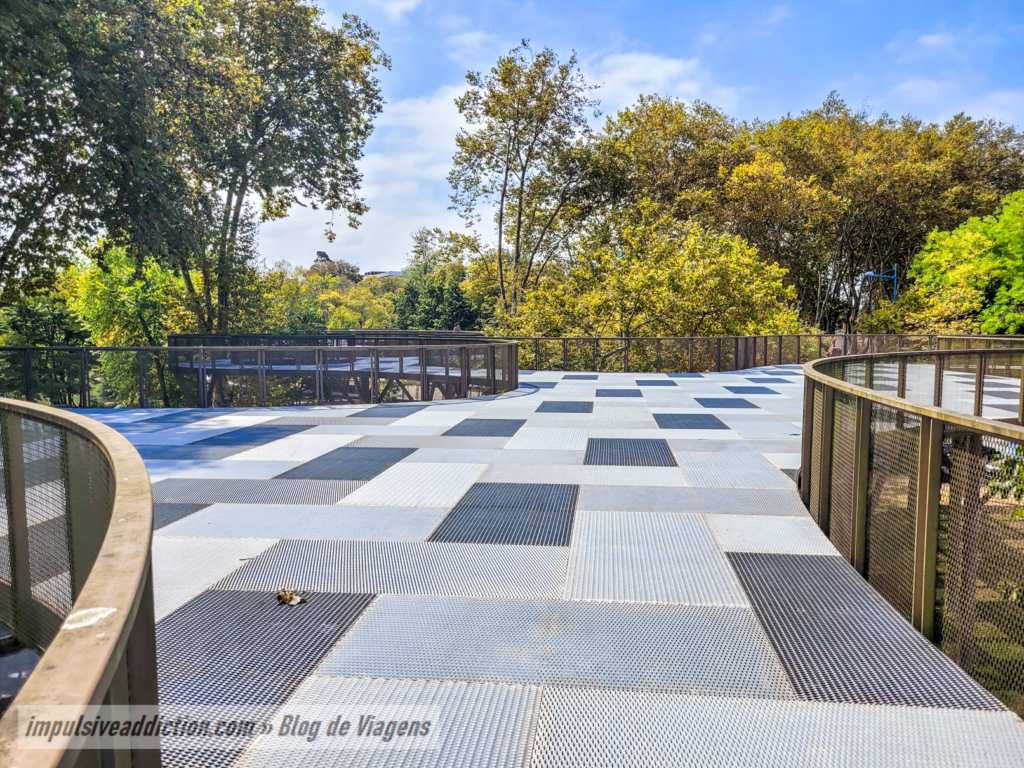
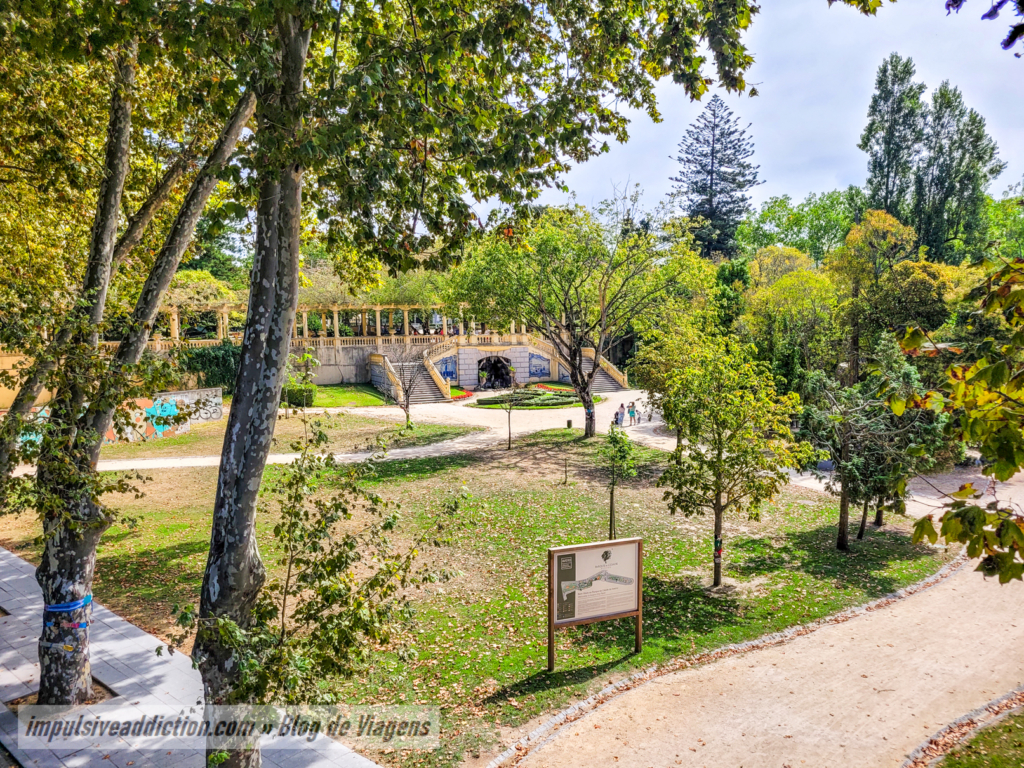
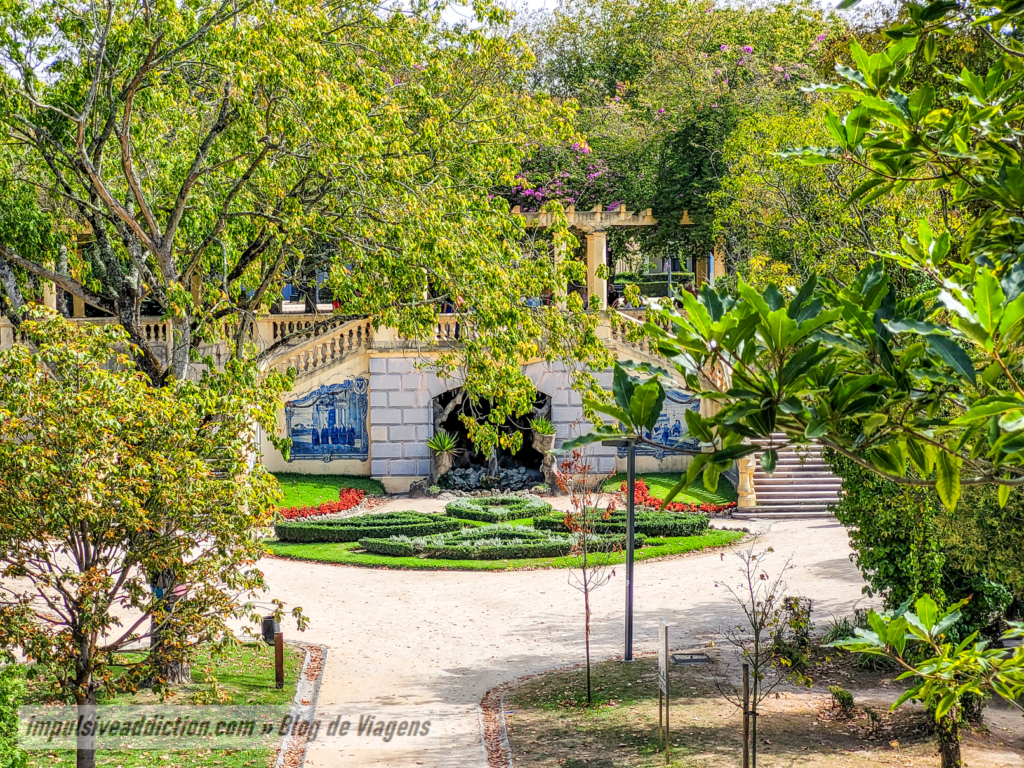
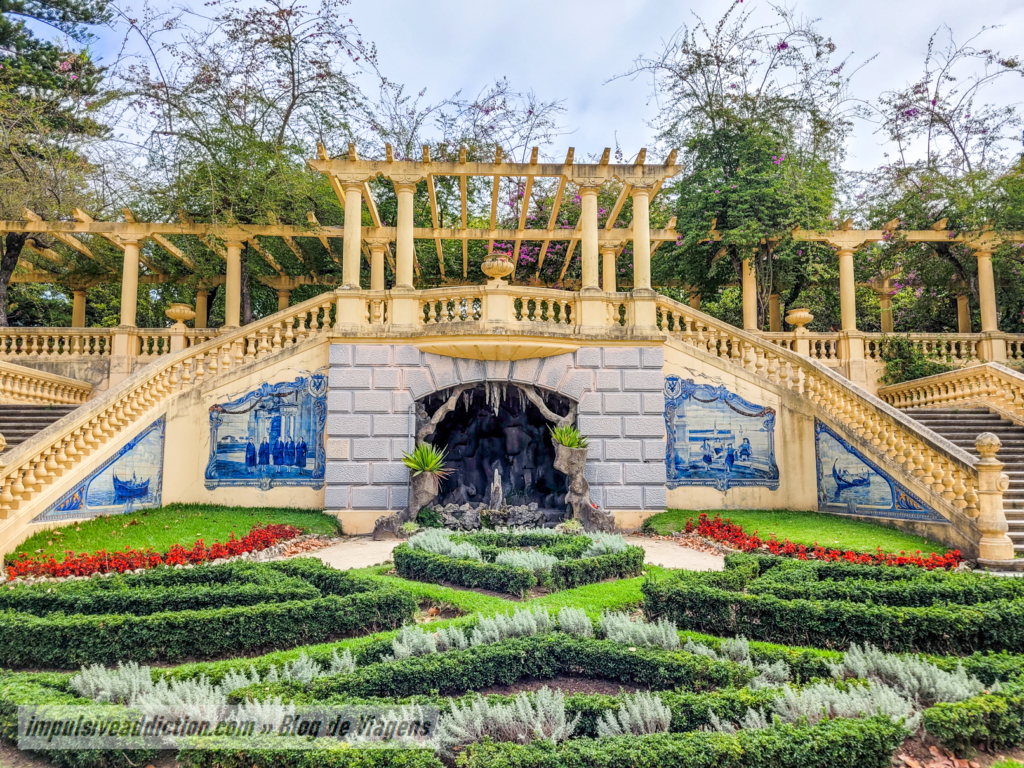
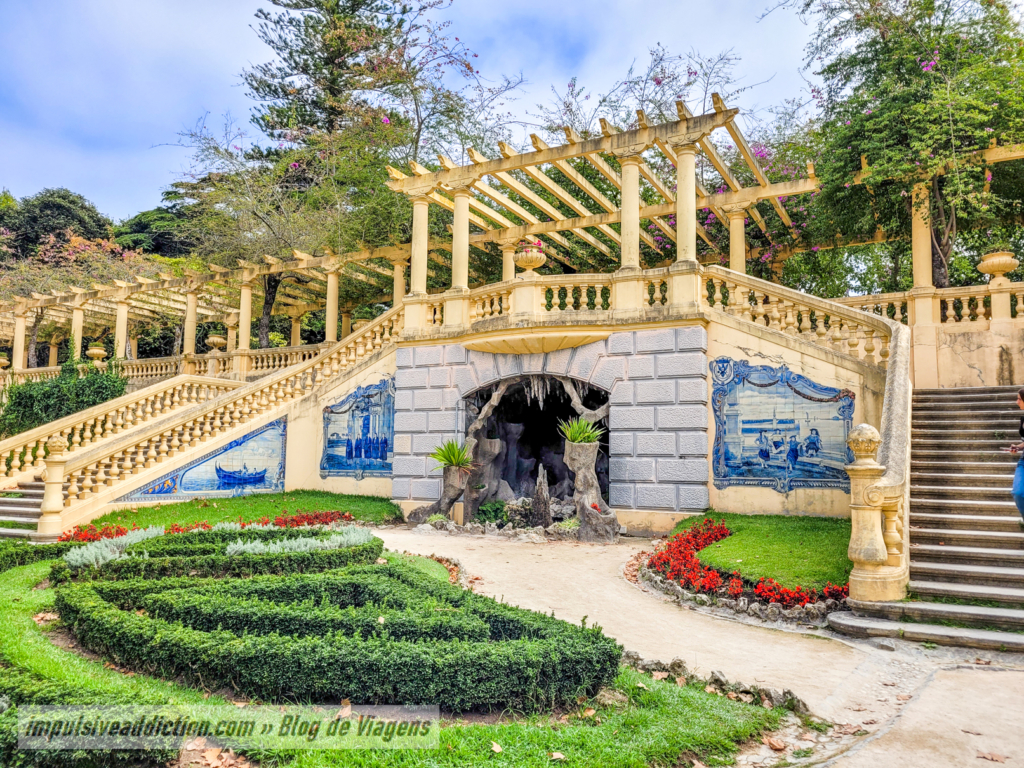
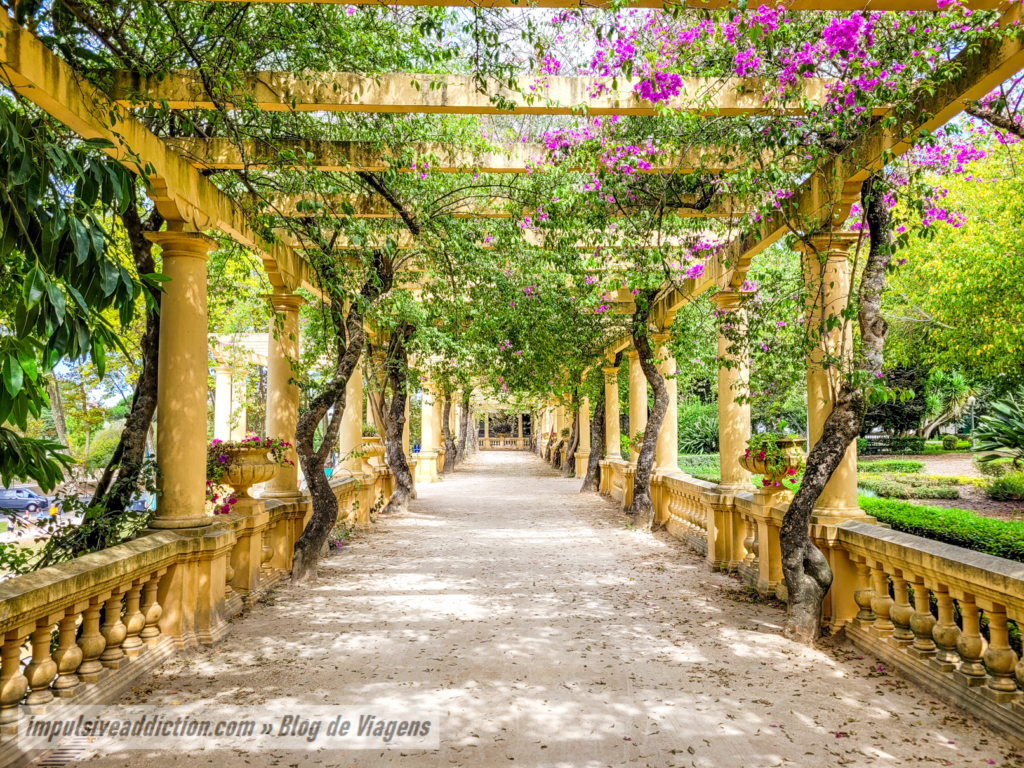
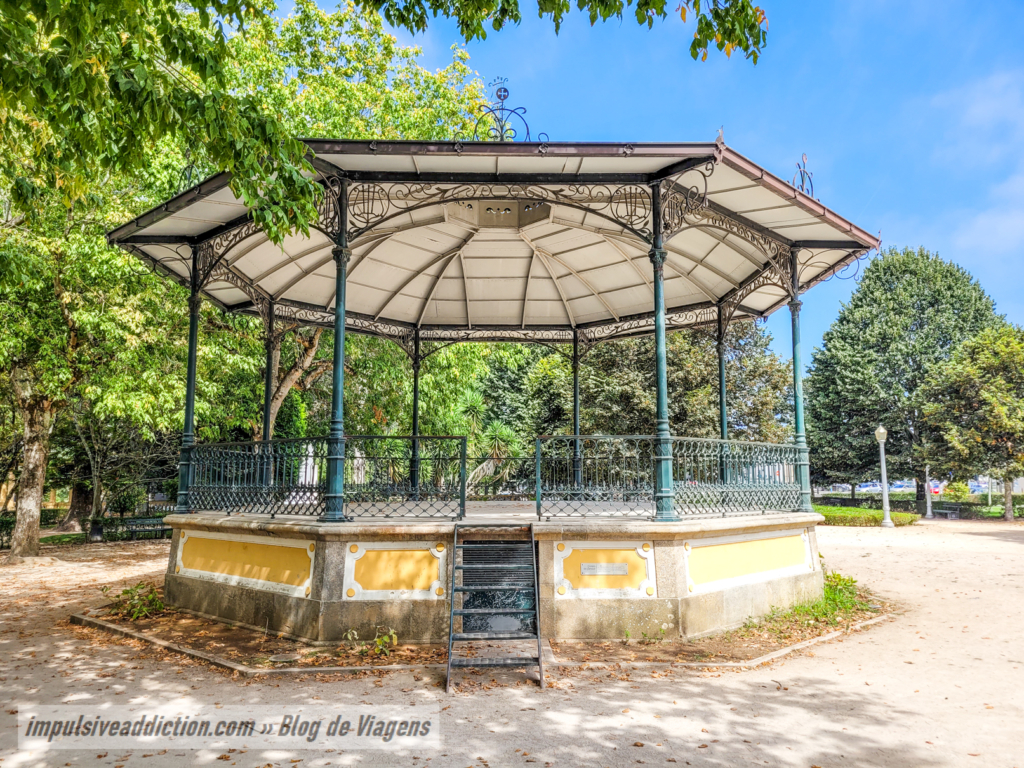
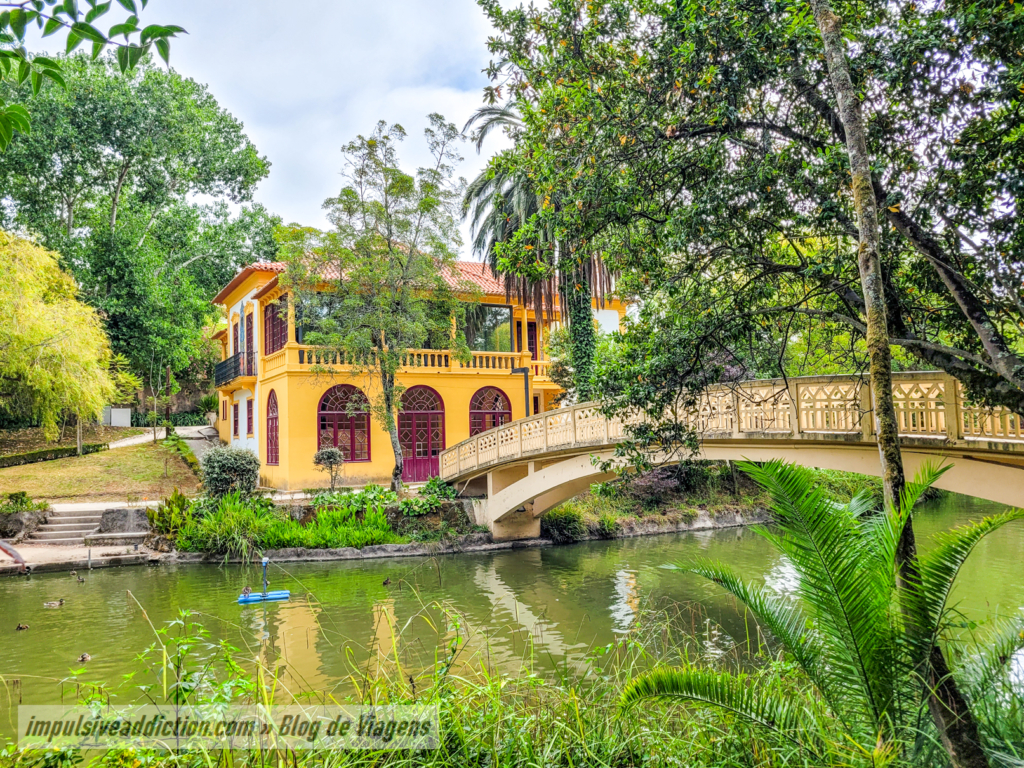
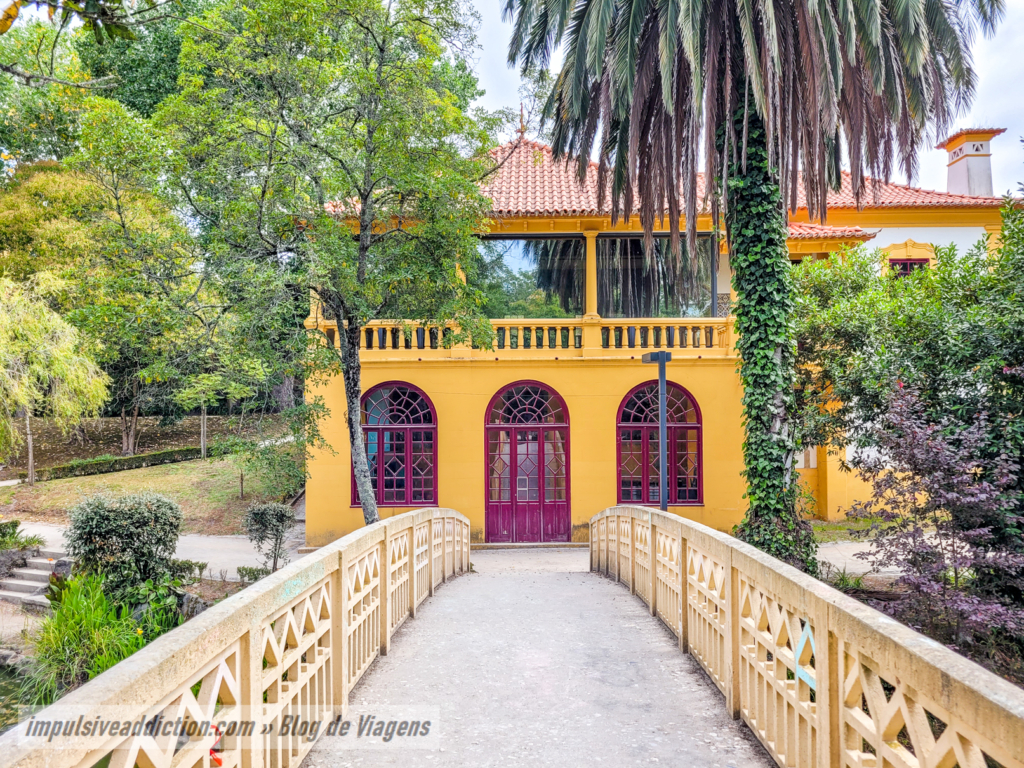
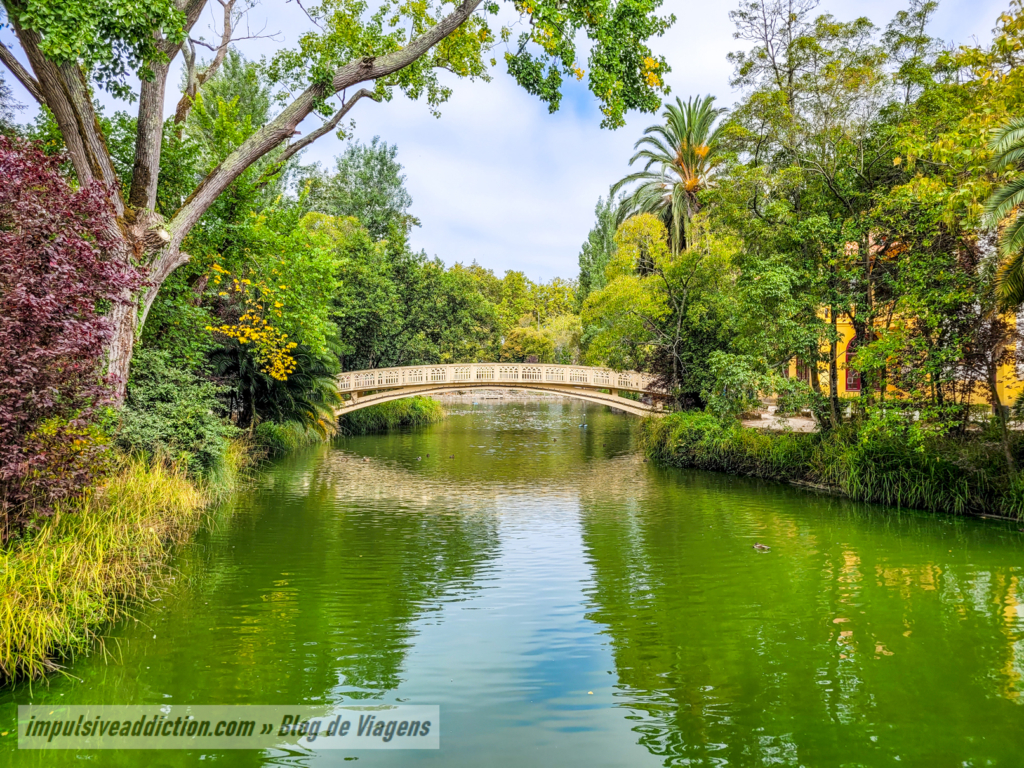
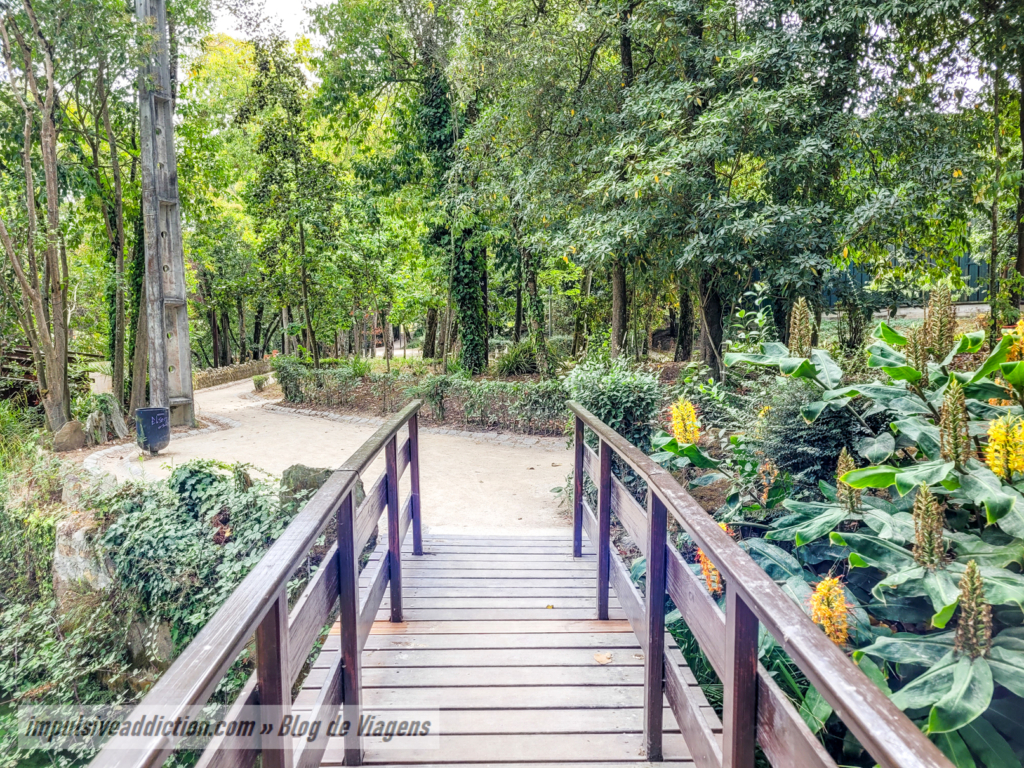
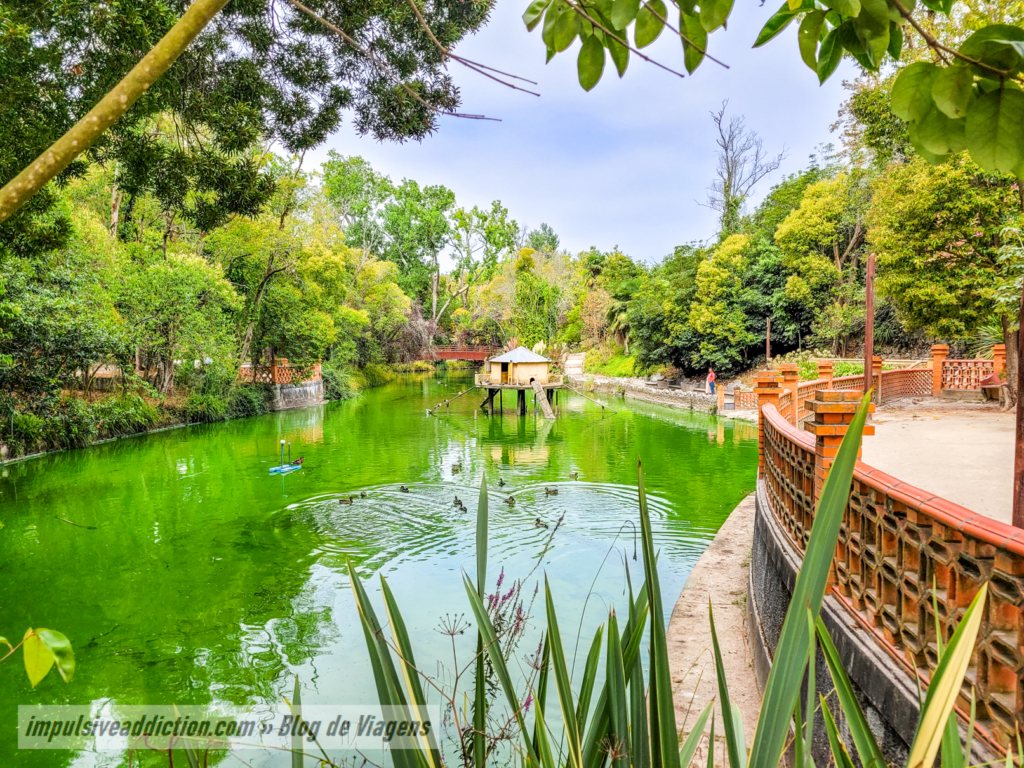
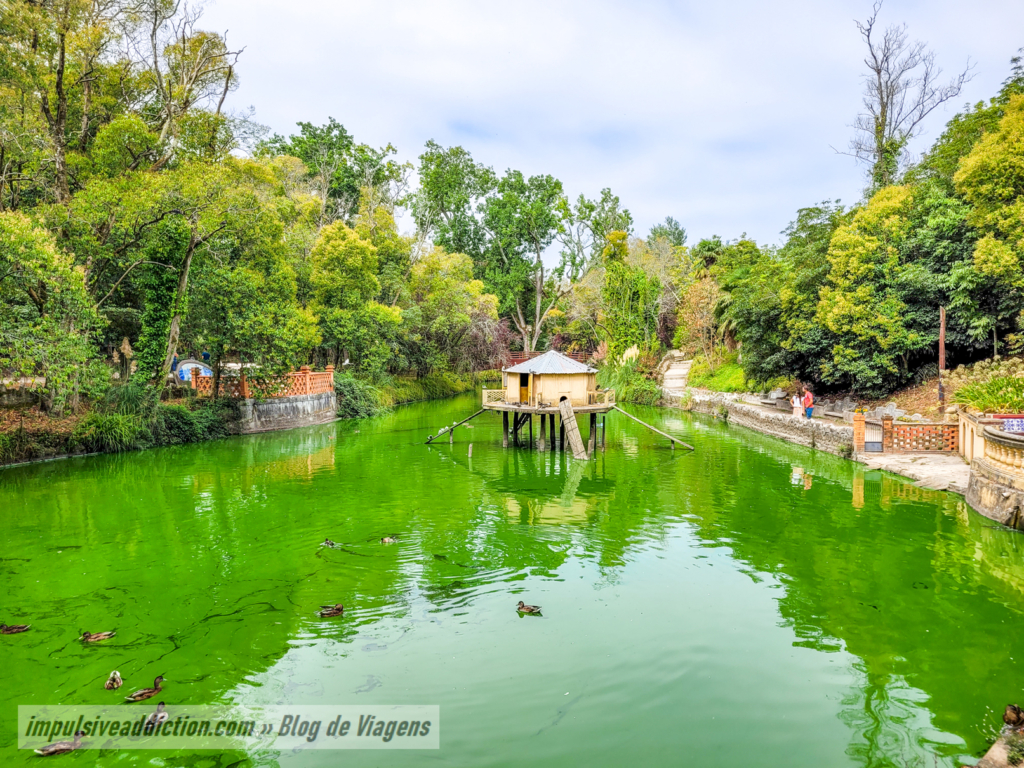
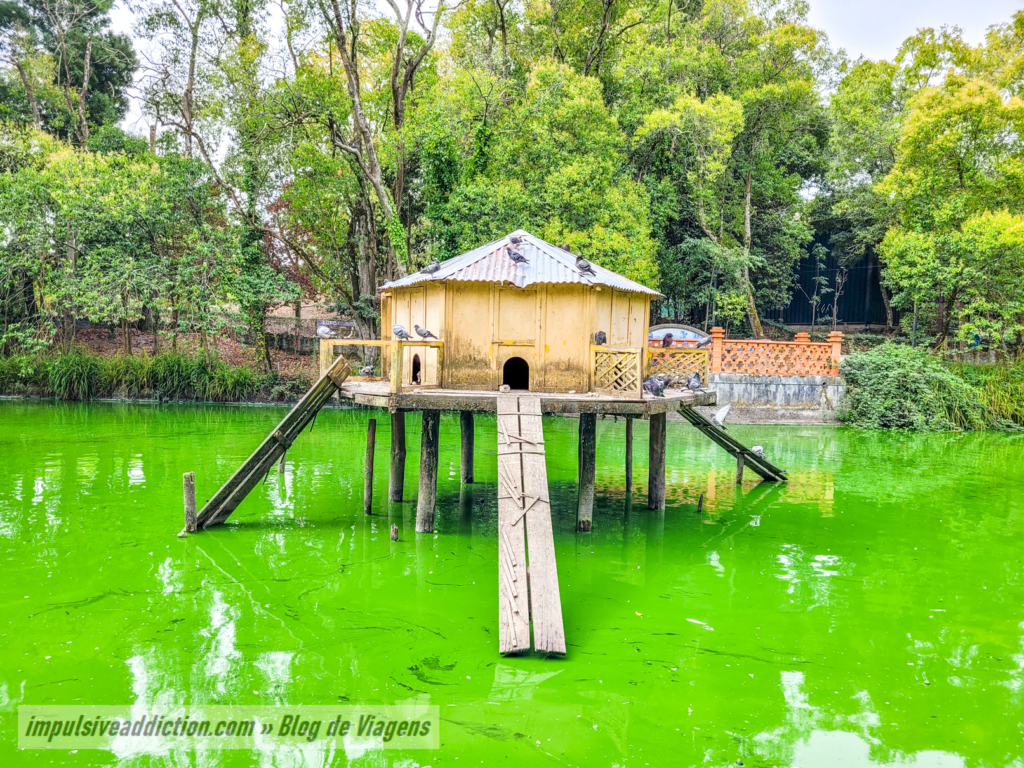
15. Church of the Convent of Santo António and Chapel of São Francisco
As I just mentioned, Aveiro City Park arose next to the old Convent of Santo António, of which the Church of Santo António (and cloister) still stands, as well as the Chapel of São Francisco. This convent appeared in 1524.
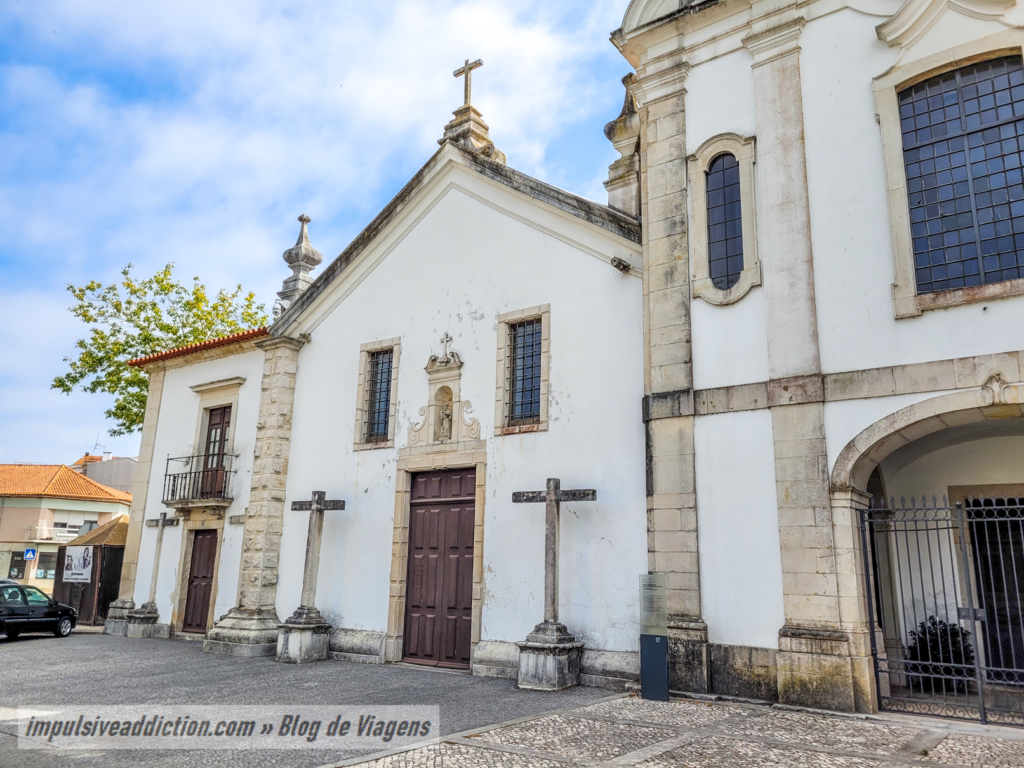
16. Marquês de Pombal Square
Next is Marquês de Pombal square, with the PSP Command building at one end and Casa de Santa Zita at the other, covered in extraordinary blue tiles. Don’t forget the Portuguese pavement with the signs of the zodiac, the court building and the Church of the Carmelites of São João Evangelista. Here you will find excellent terraces and, sometimes, small craft markets.
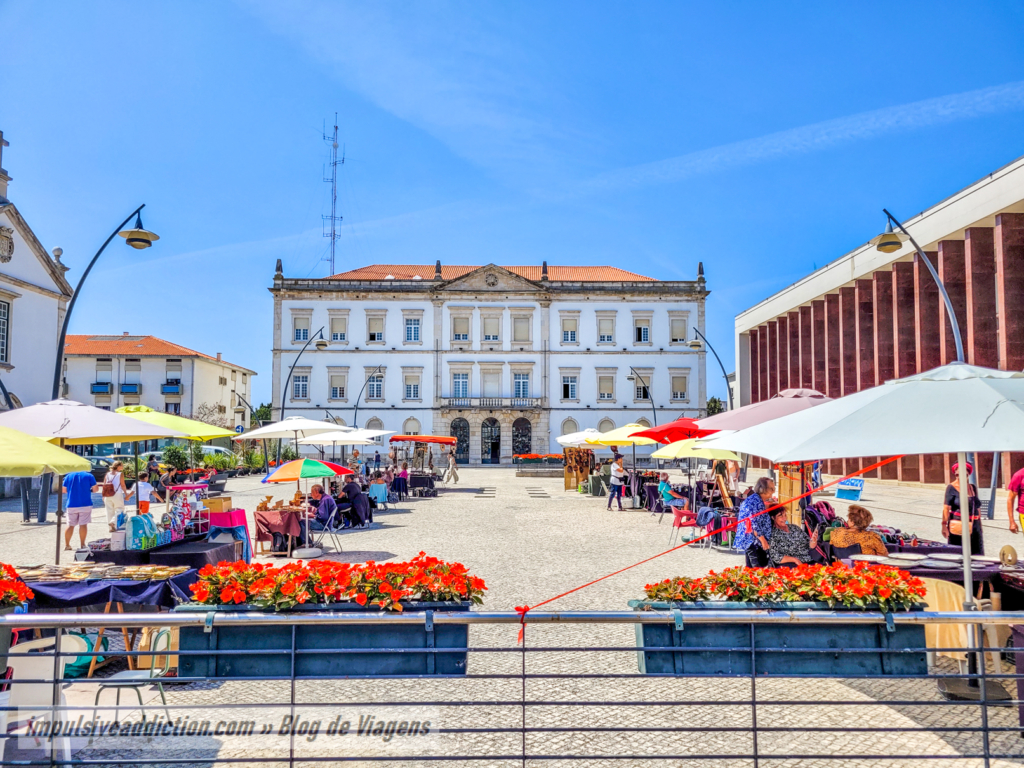
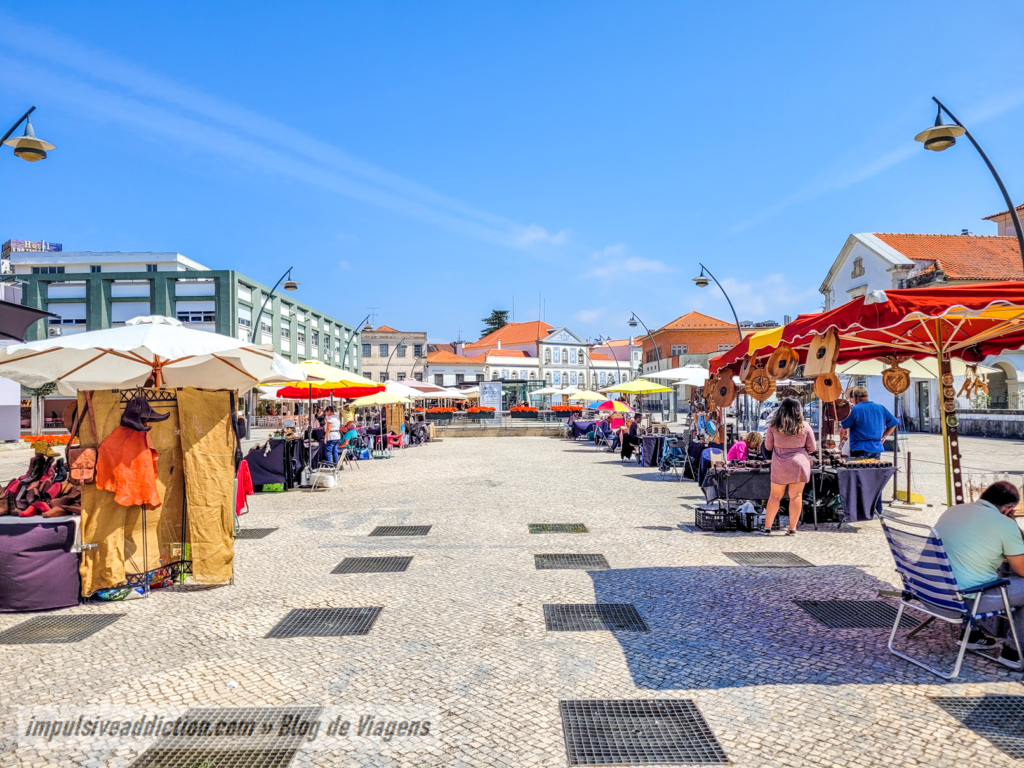
17. Church of the Carmelites of São João Evangelista
I now move on to describe Casa de Santa Zita and the Church of the Carmelites, which stand out among the other places in Marquês de Pombal Square.
The Convent of São João Evangelista emerged in the 17th century, when D. Brites de Lara had a palace built for residence next to the walls of Aveiro, later transformed into a convent with the authorization of King D. João IV. In 1658 it began to be occupied by Carmelite nuns.
With regard to the church, construction began in 1704, highlighting its gilded interior, with a coffered ceiling with various religious paintings. Don’t forget its tiles and the images of São João Evangelista and Nossa Senhora da Conceição, patron saint of Portugal. The interior is undoubtedly far superior to the exterior.
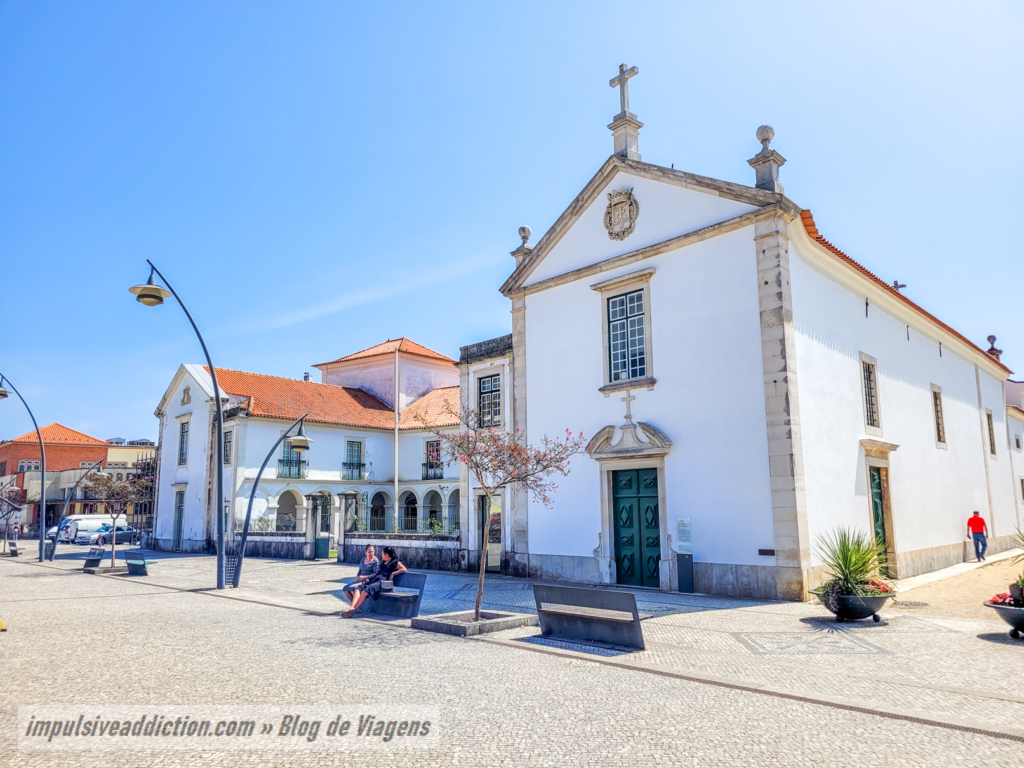
18. Casa de Santa Zita
Casa de Santa Zita is also known as Palace of Visconde da Granja. Of particular note, as I have already mentioned, are its Art Nouveau-influenced tiles, alluding to the different seasons of the year and mythological scenes.
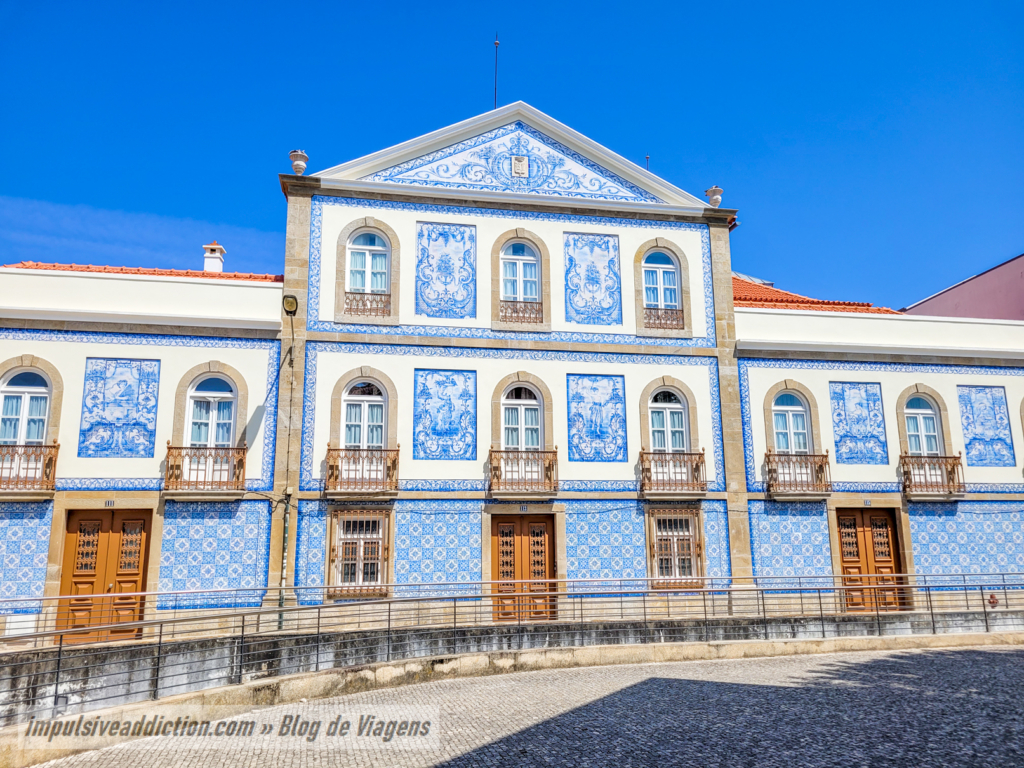
19. Museum of Santa Joana
The best museum in Aveiro is undoubtedly the Museum of Santa Joana, housed in the former women’s convent of the Dominicans (Convent of Jesus), where Princess Santa Joana lived from 1472 onwards. She would eventually be beatified in 1693, and today she is the patron saint of the city of Aveiro!
After the extinction of the religious orders in Portugal, this convent was transformed into the College of Santa Joana (1882), which in turn was extinguished after the establishment of the republic (1910), giving rise to the classification of the Church of Jesus as a national monument, and to the installation of the museum in the building.
When visiting the Museum of Santa Joana, you will be able to access the princess’s tomb, which is a true jewel of Portugal, made of marble. Likewise, you can enter the beautiful Church of Jesus, and also pass through the cloister, chapter hall and refectory of the former convent. You will also find there several pieces of sacred art, namely sculptures, paintings, jewellery, among others.
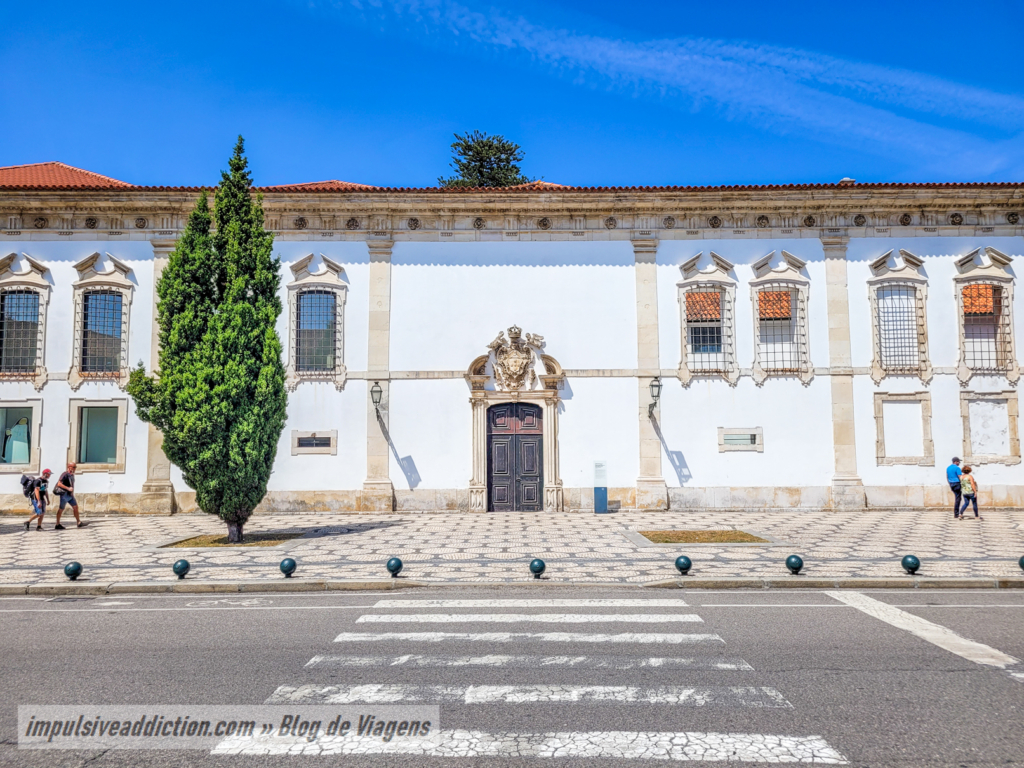
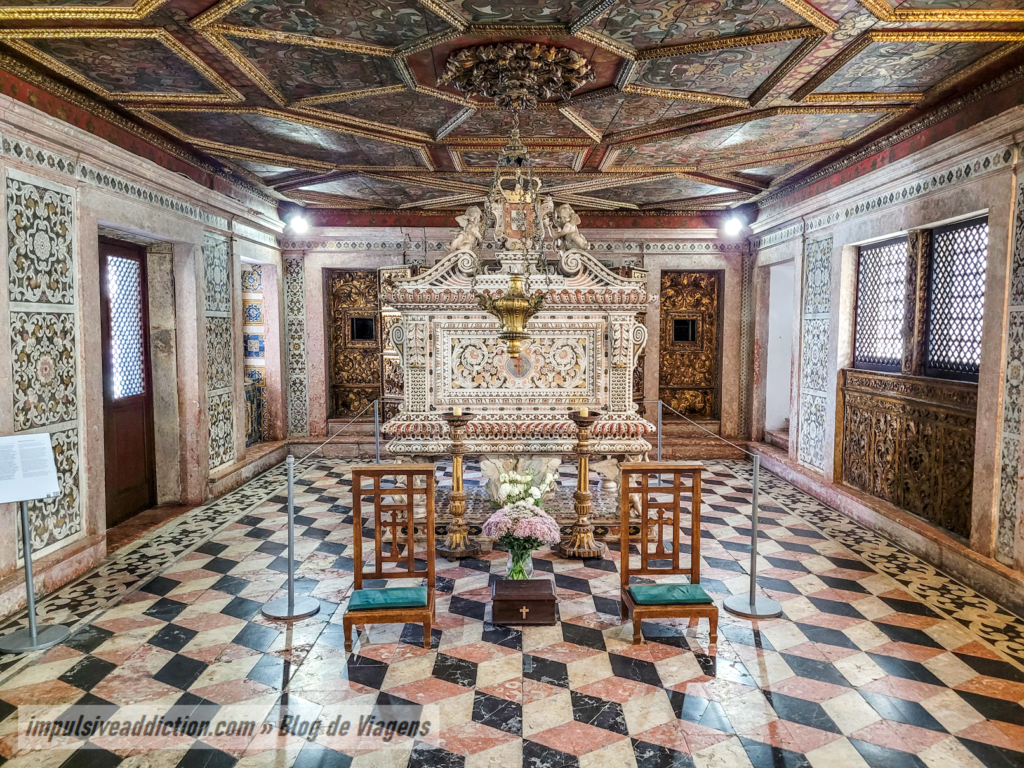
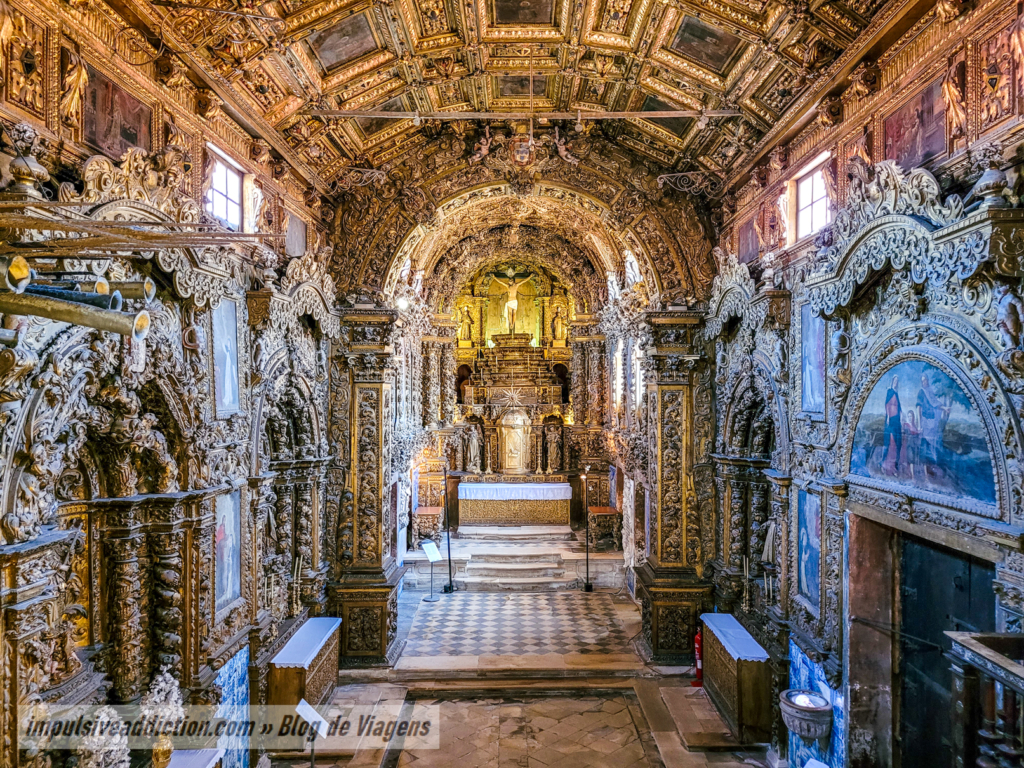
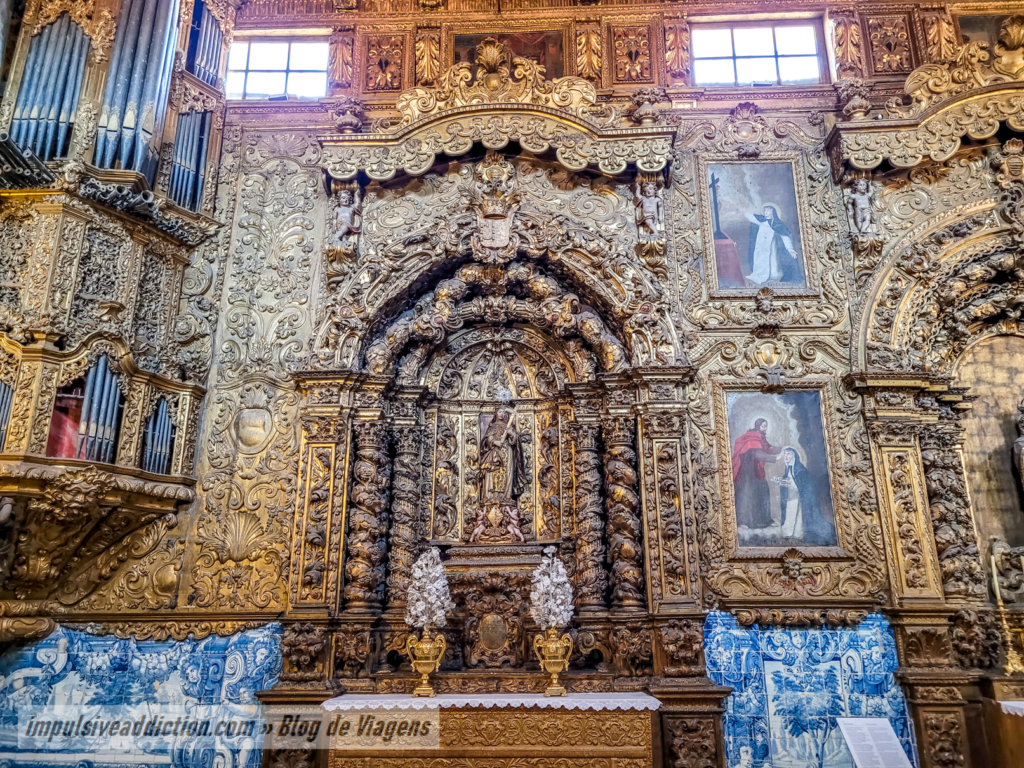
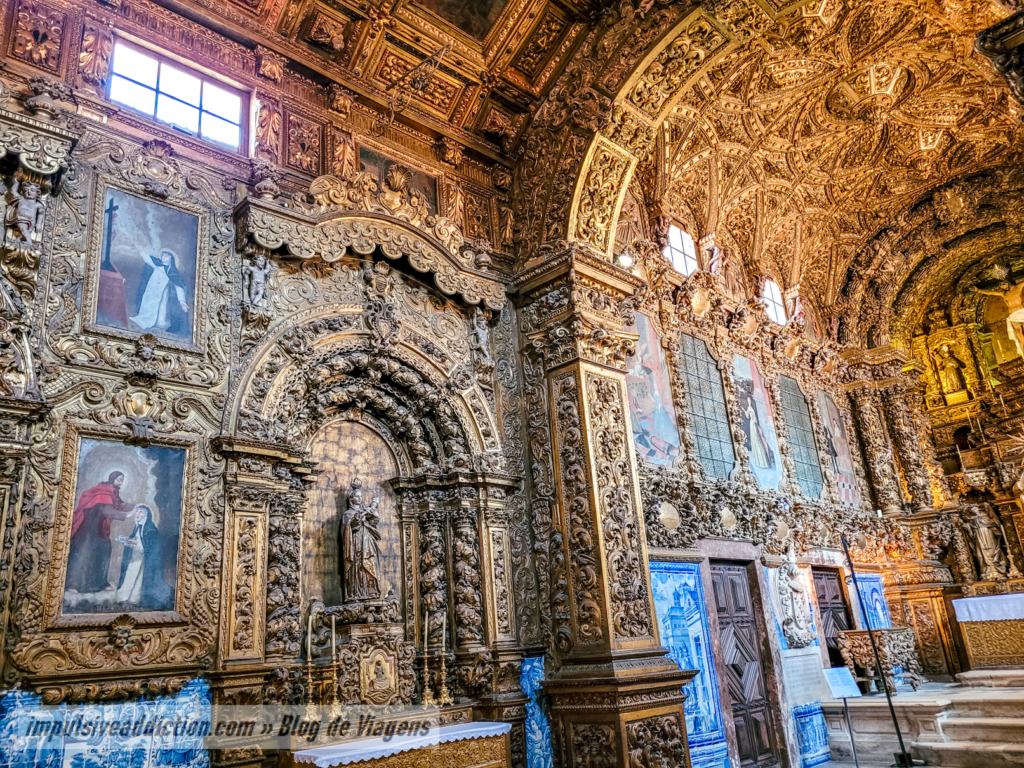
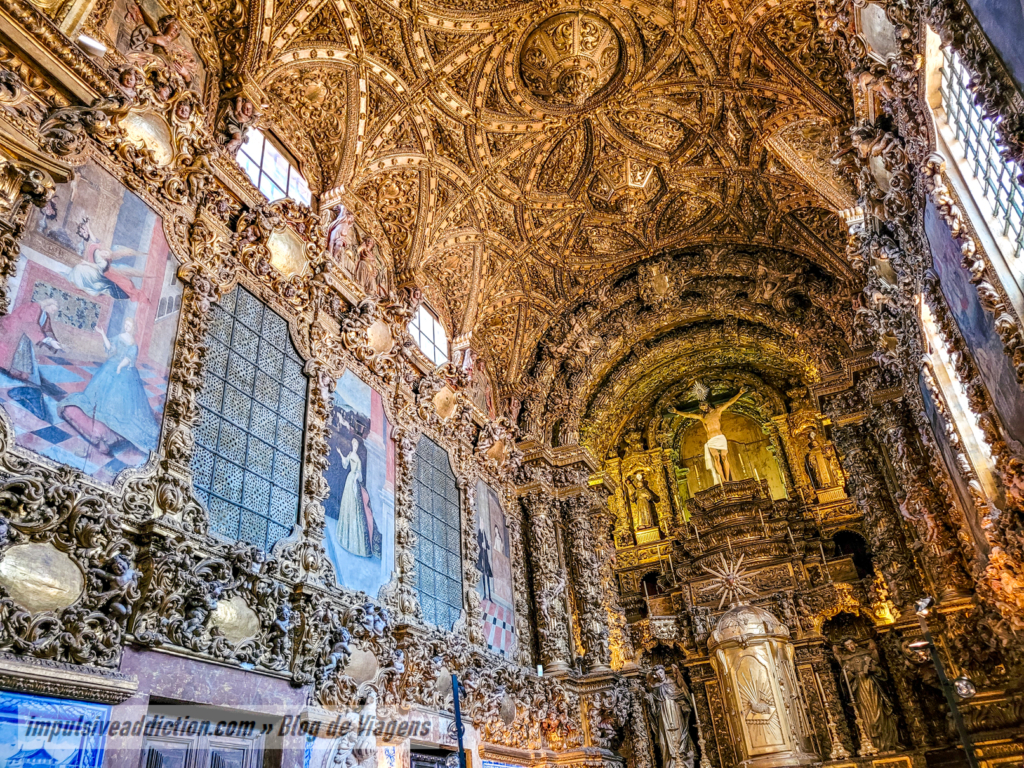
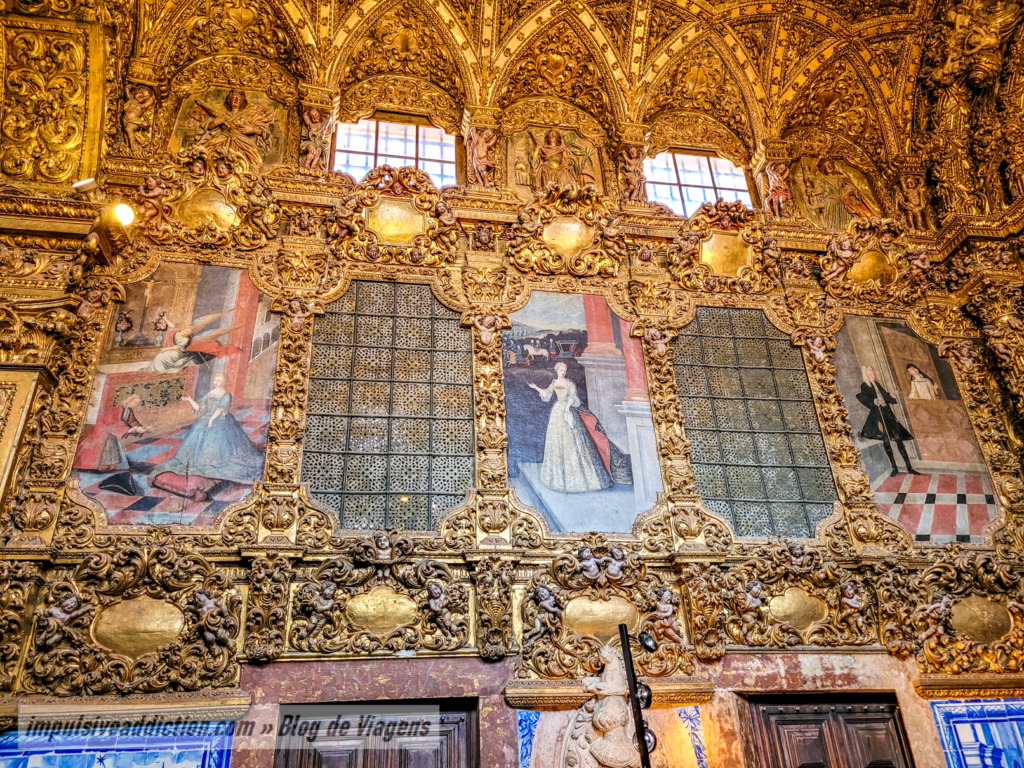
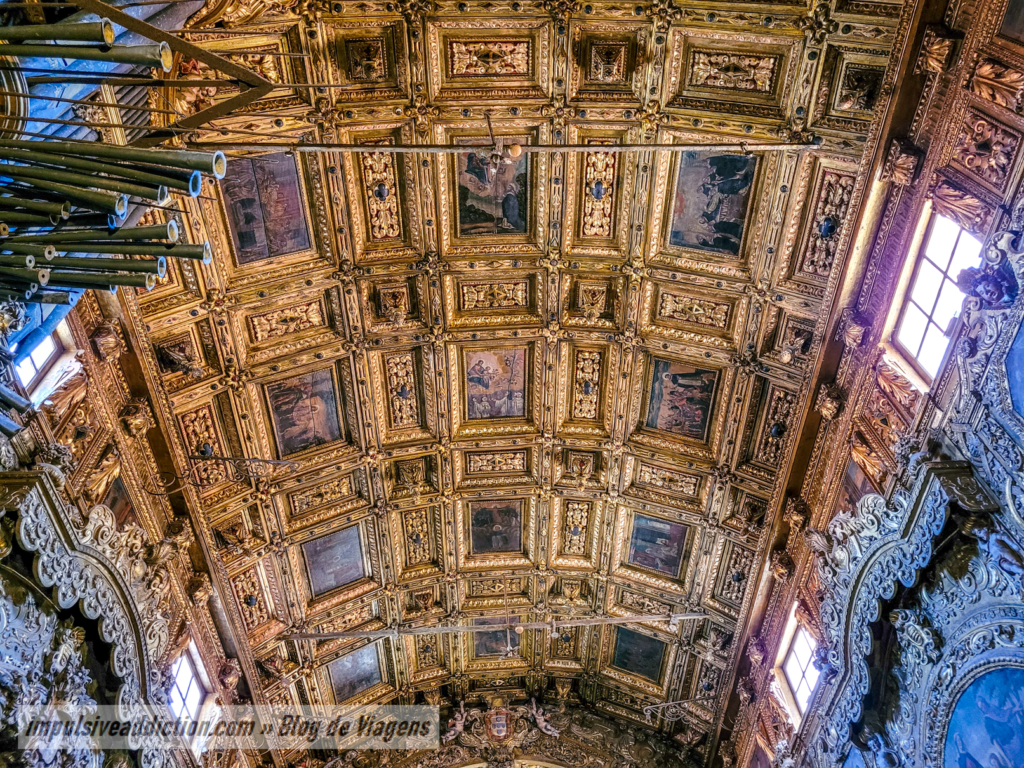
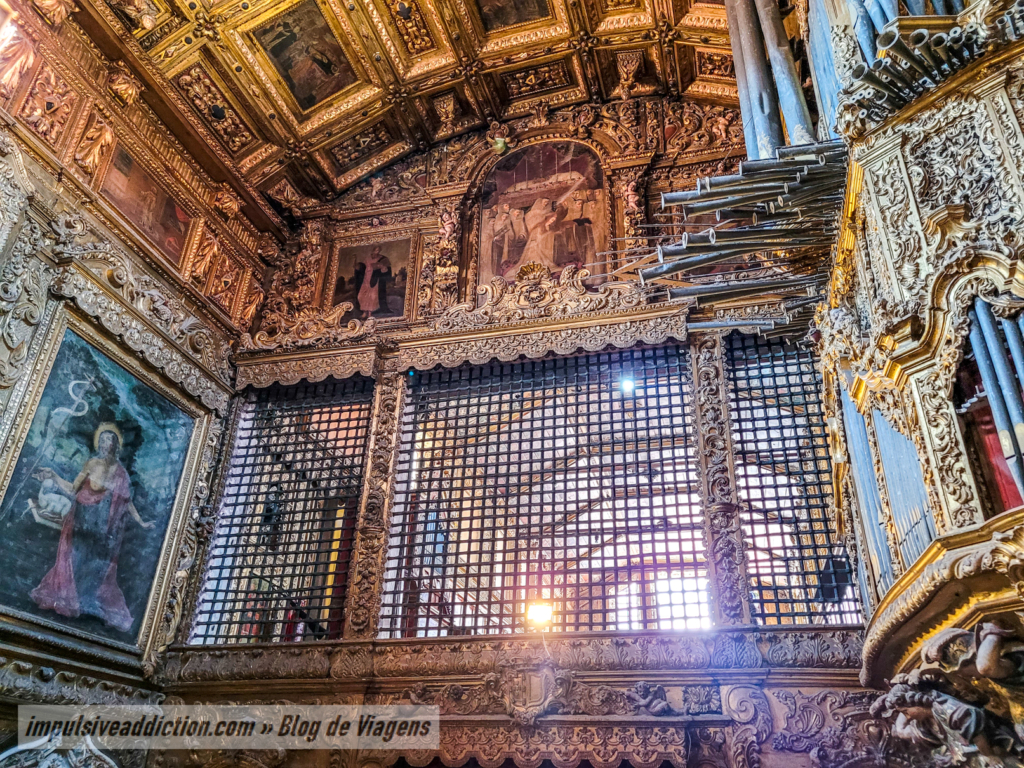
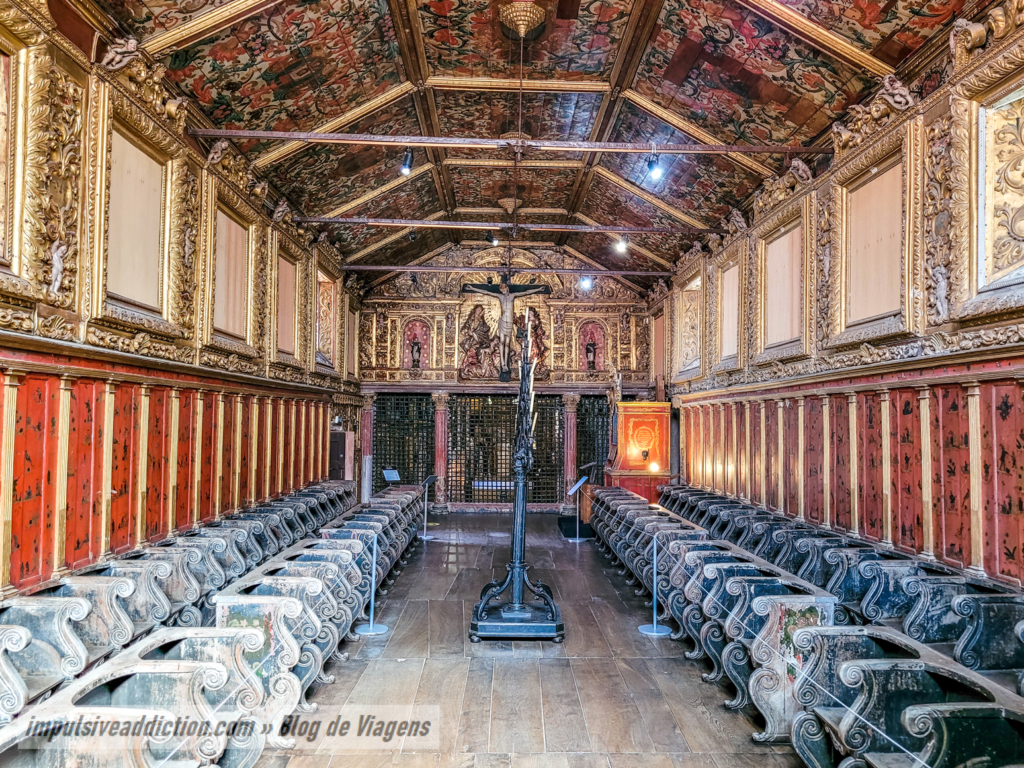
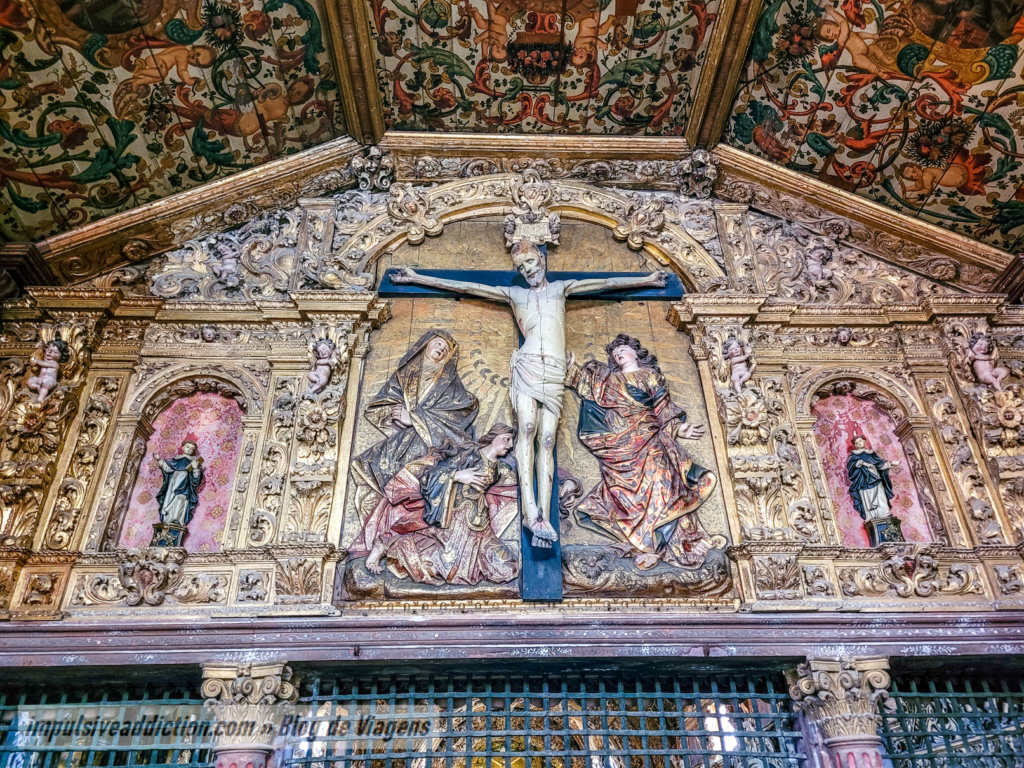
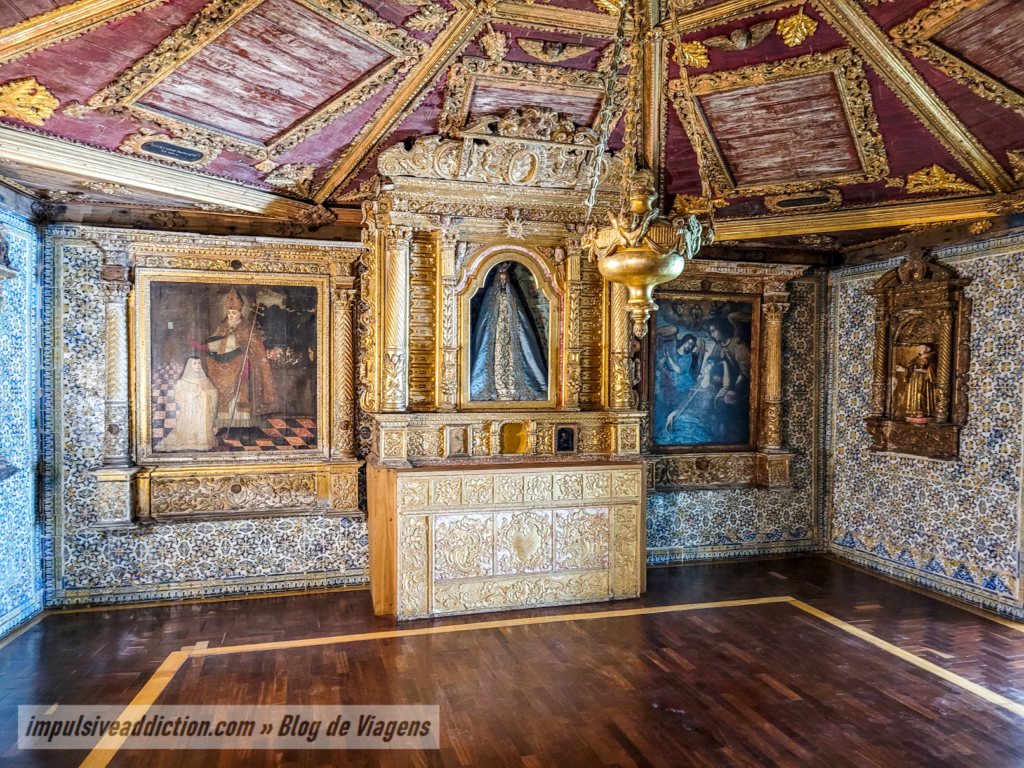
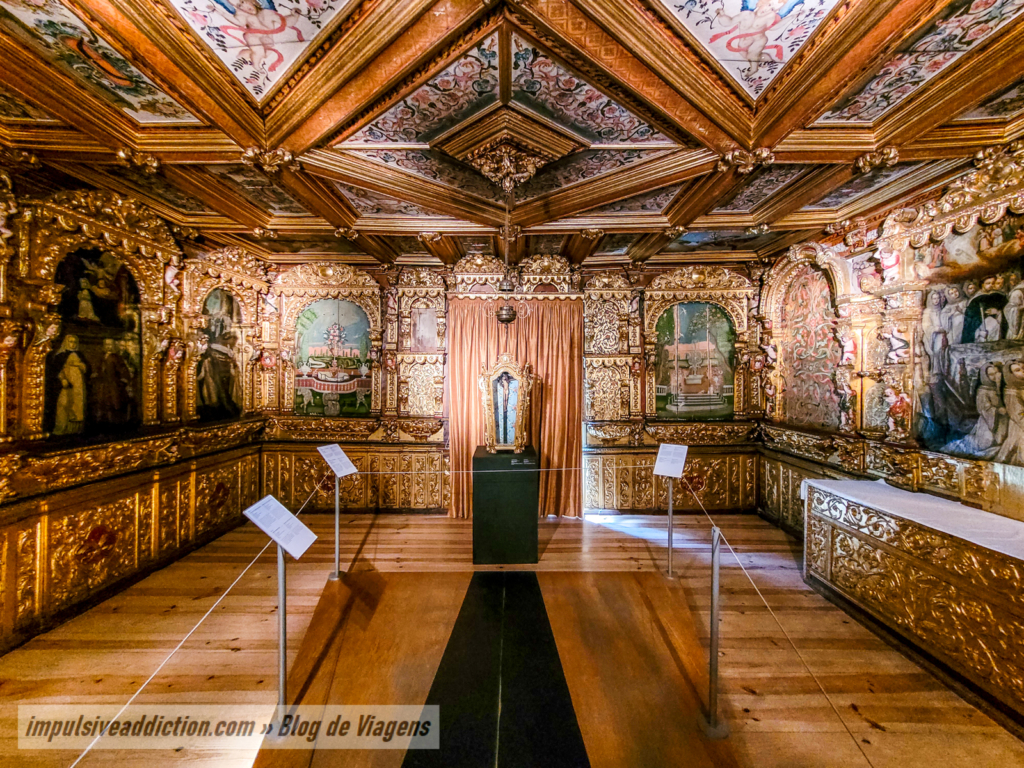
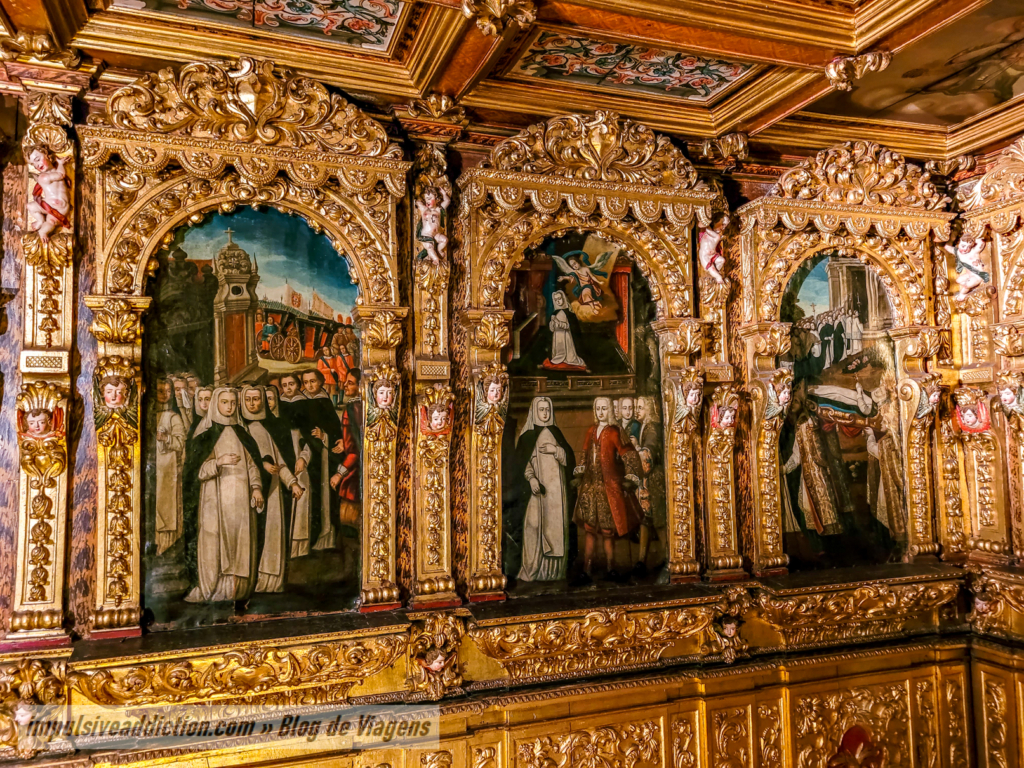
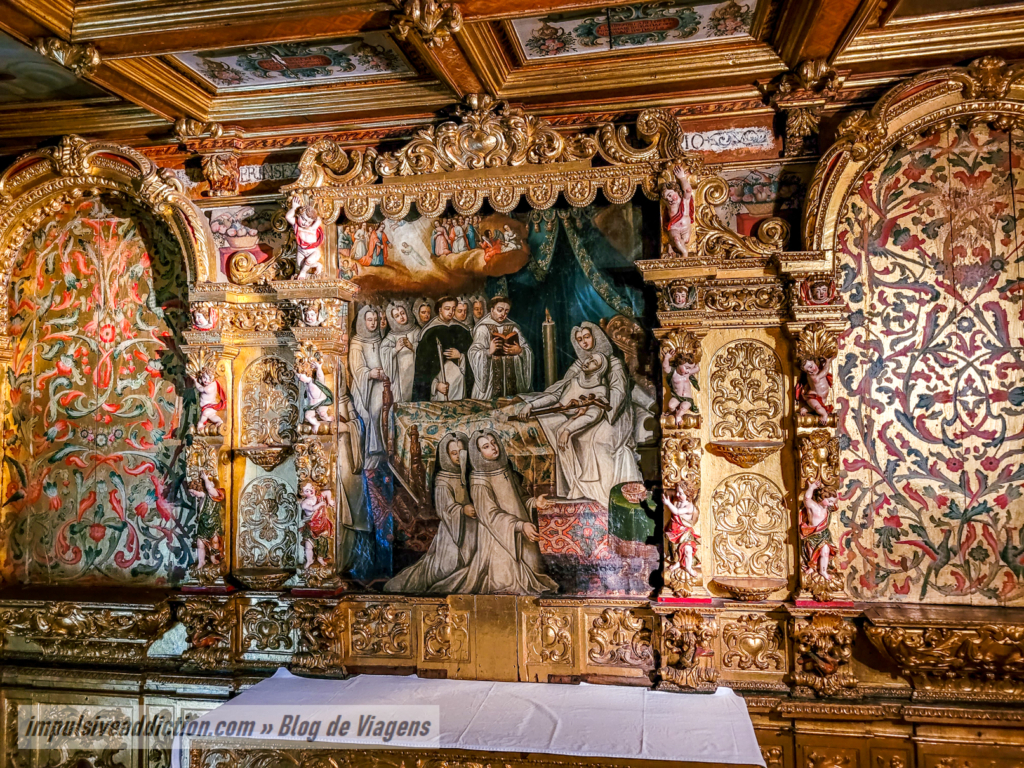
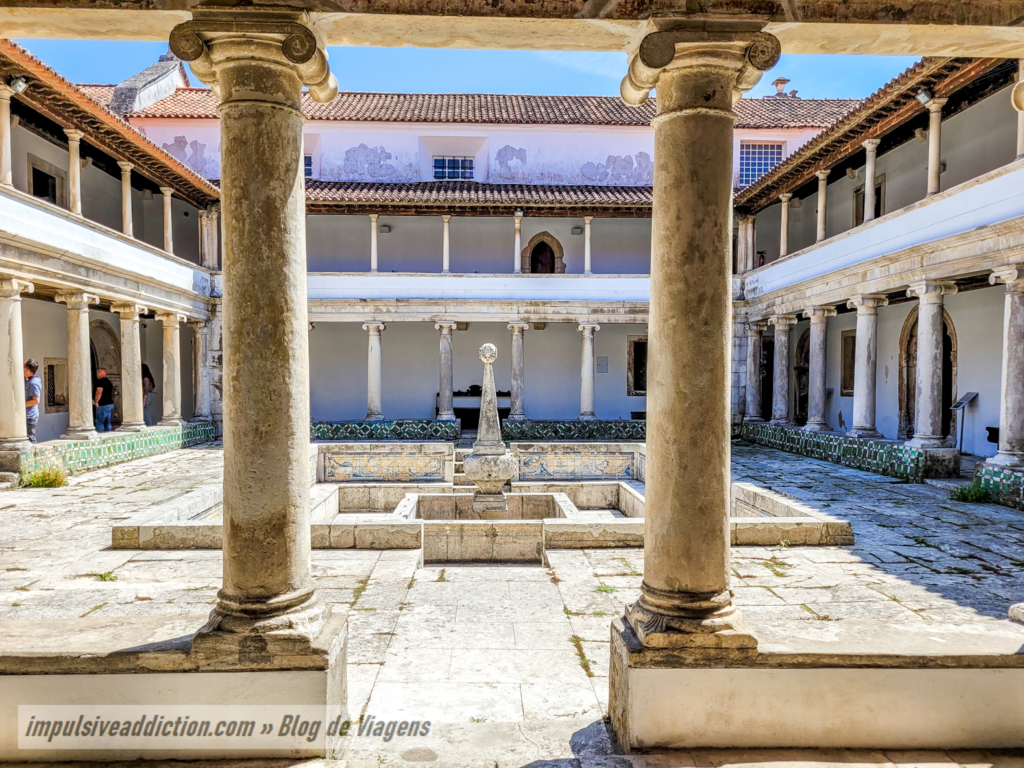
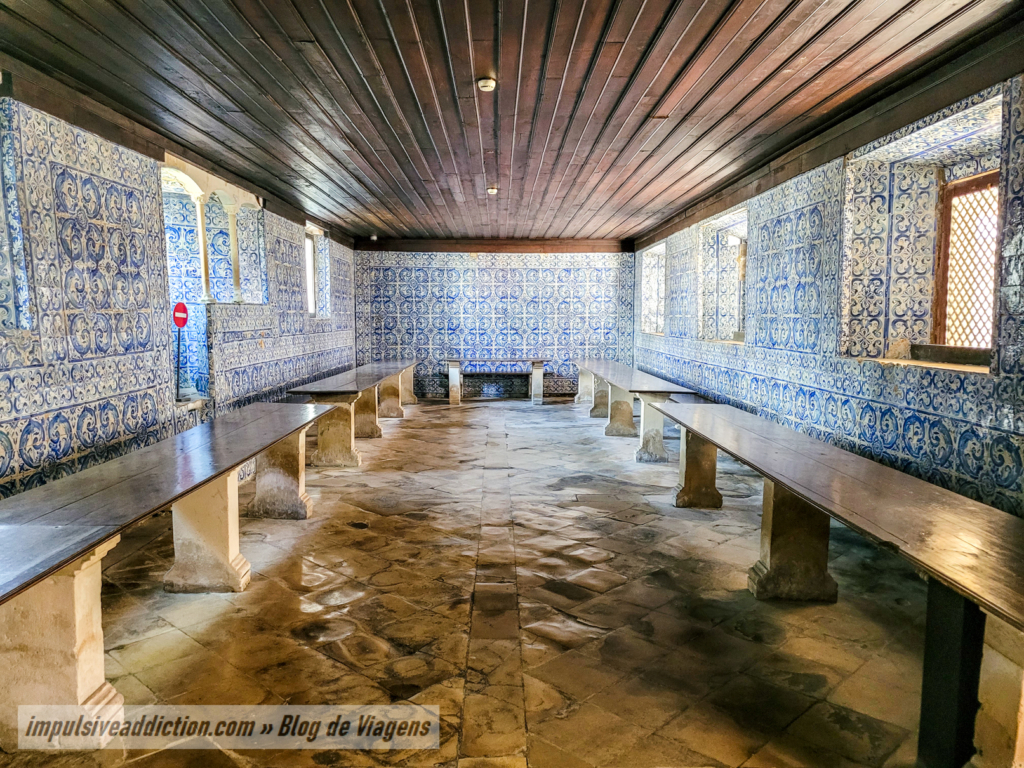
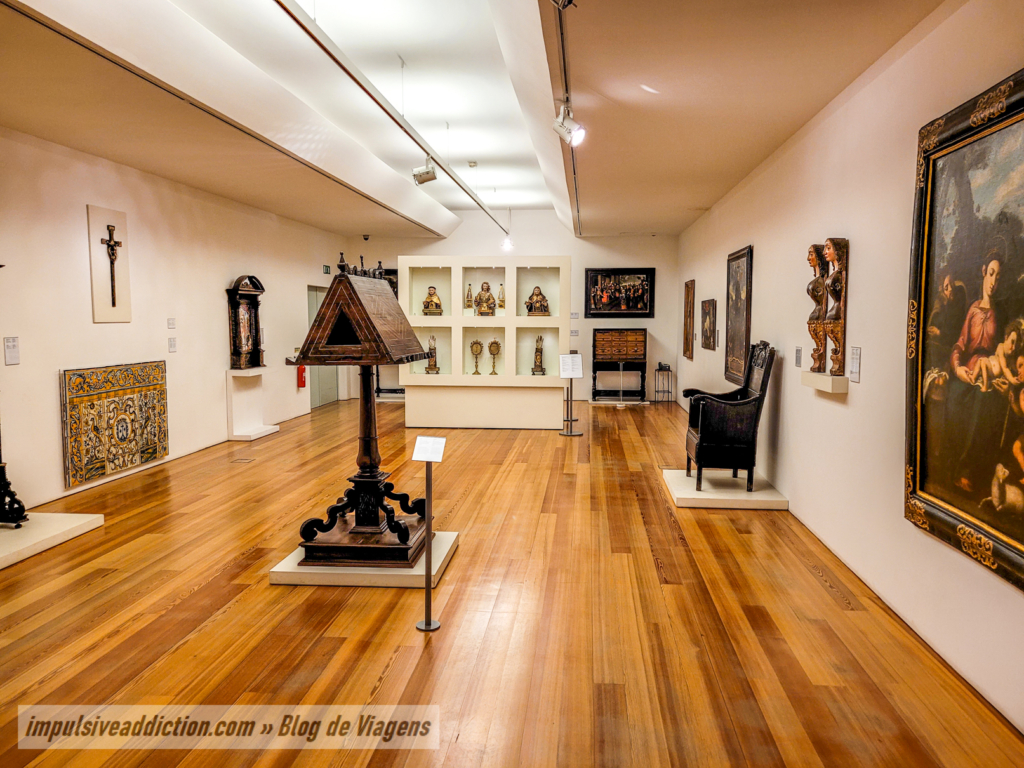
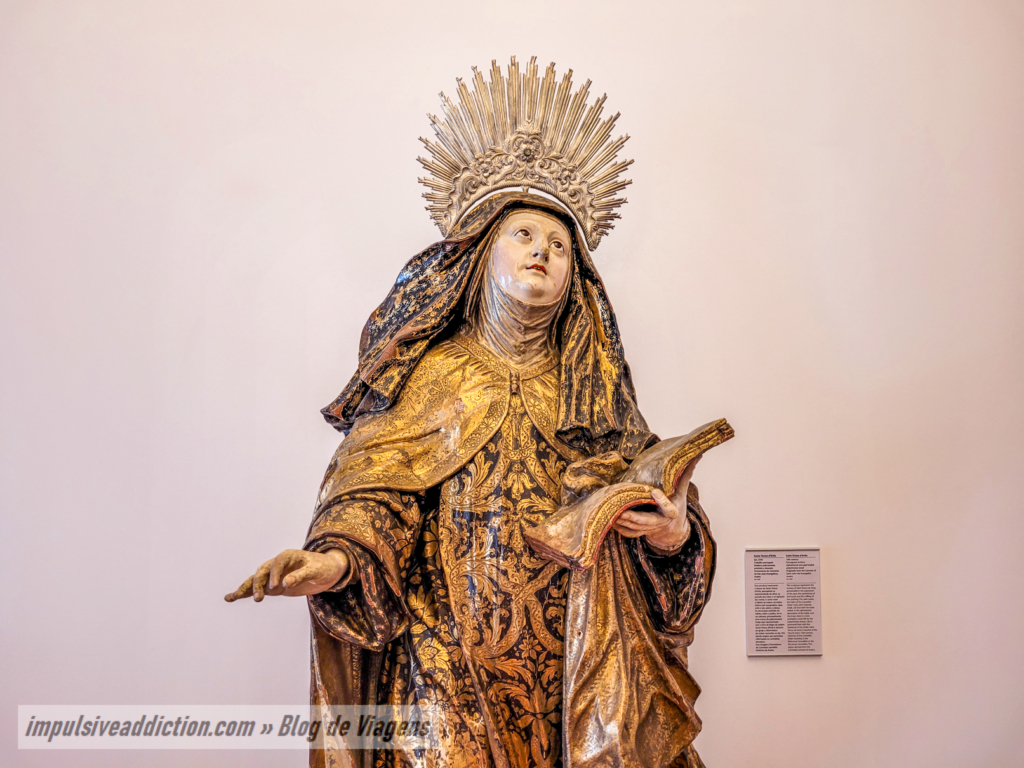
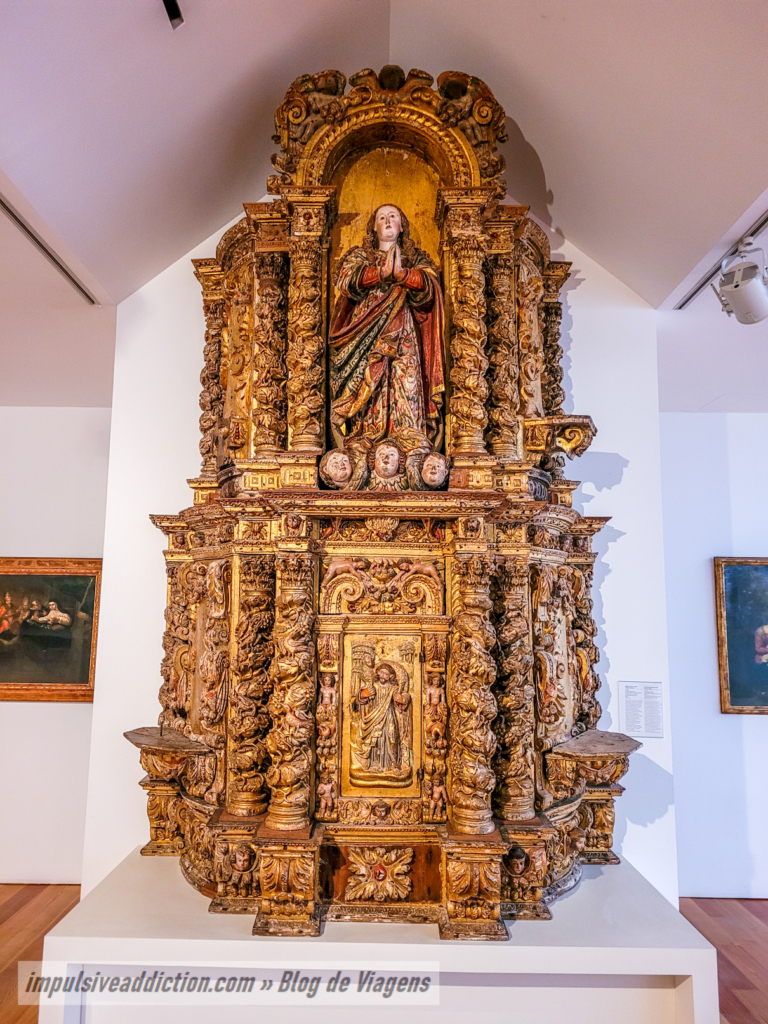
20. Cathedral of Aveiro
The Cathedral of Aveiro is very close to the museum of Santa Joana, and is dedicated to São Domingos. Outside there is a replica of the cross of Nossa Senhora da Glória, and inside the Church is the real one, dating from the end of the 15th century, with many details still preserved.
The old Convent of São Domingos, of which this church was part, began to be built in 1423, and would be inside the medieval fence of Aveiro. The church’s façade underwent extensive interventions in the first half of the 18th century, acquiring the appearance it has today. I highlight its columns, the coat of arms of the Dominican order and the figures of Faith, Hope and Charity.
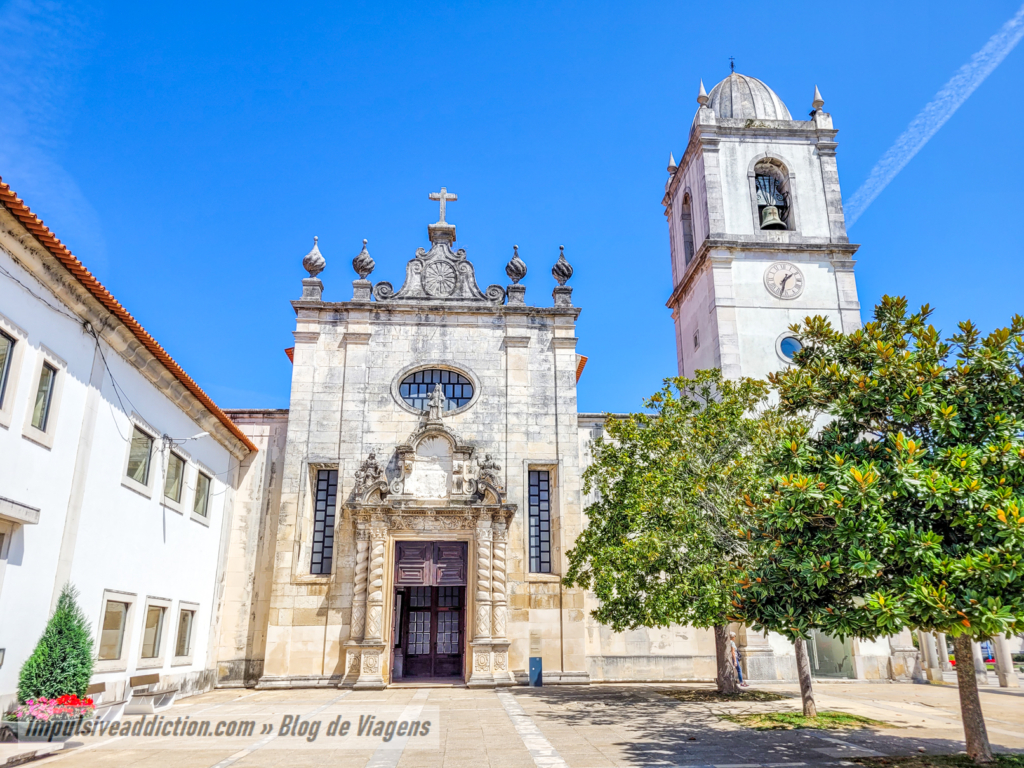
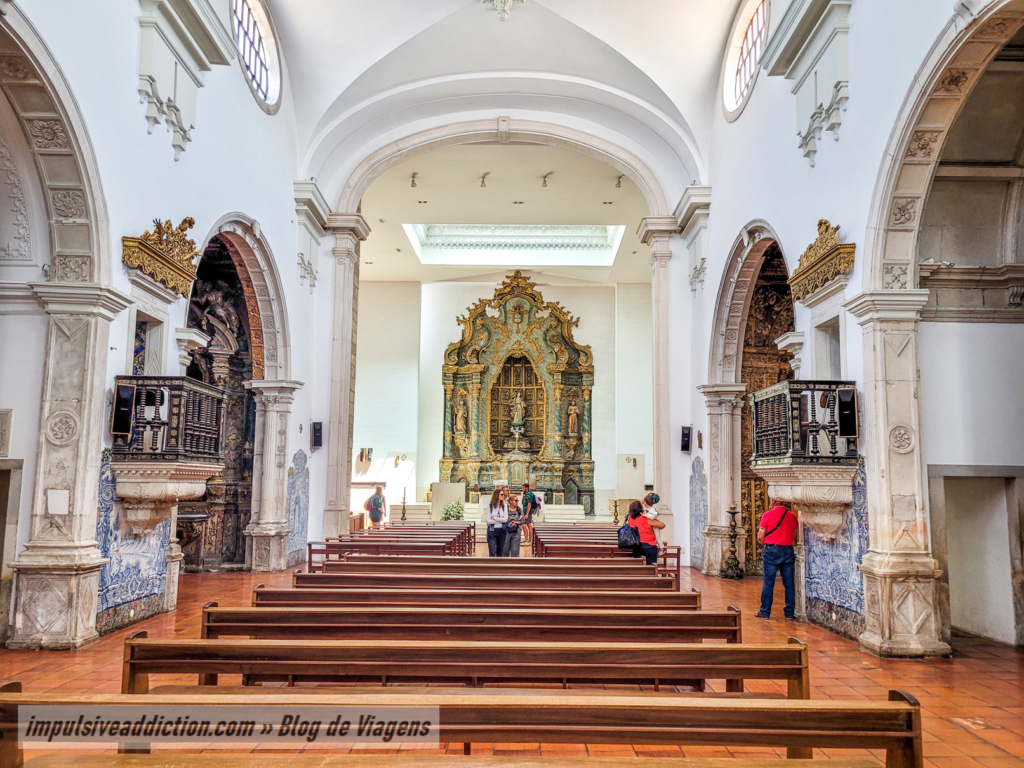
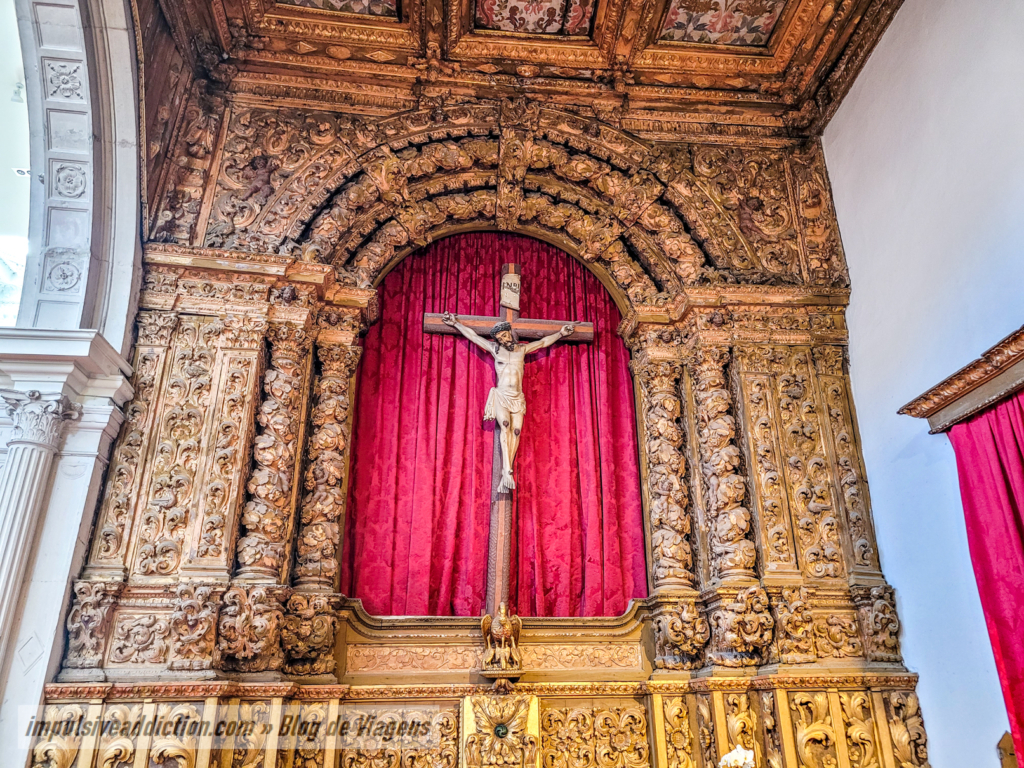
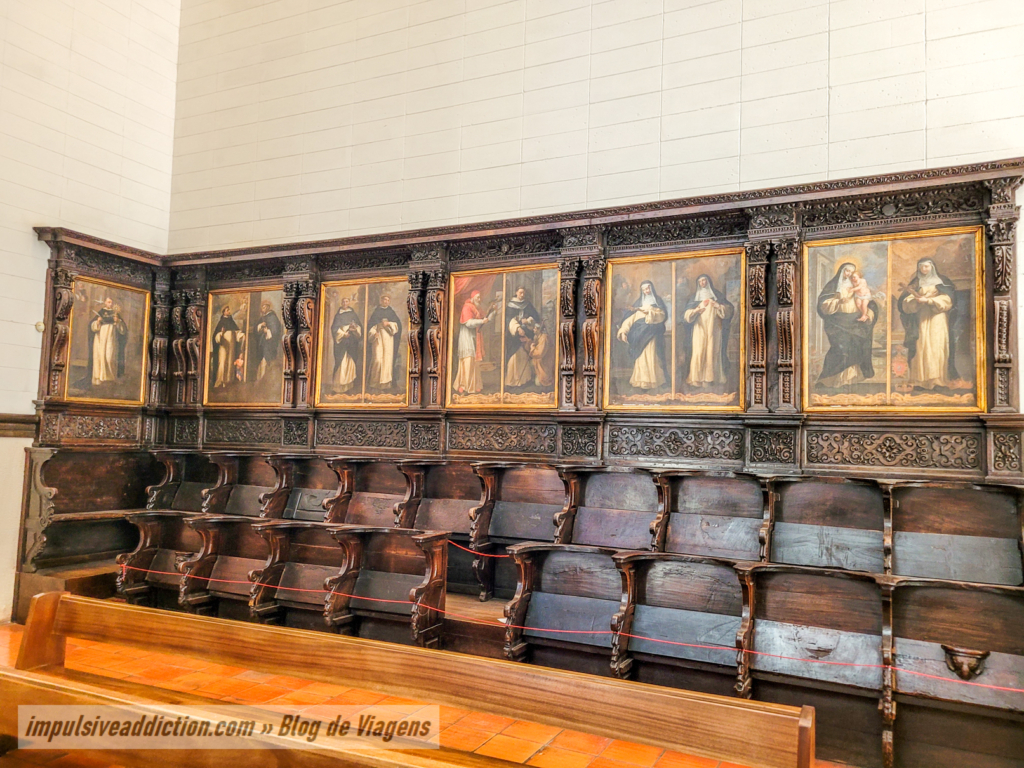
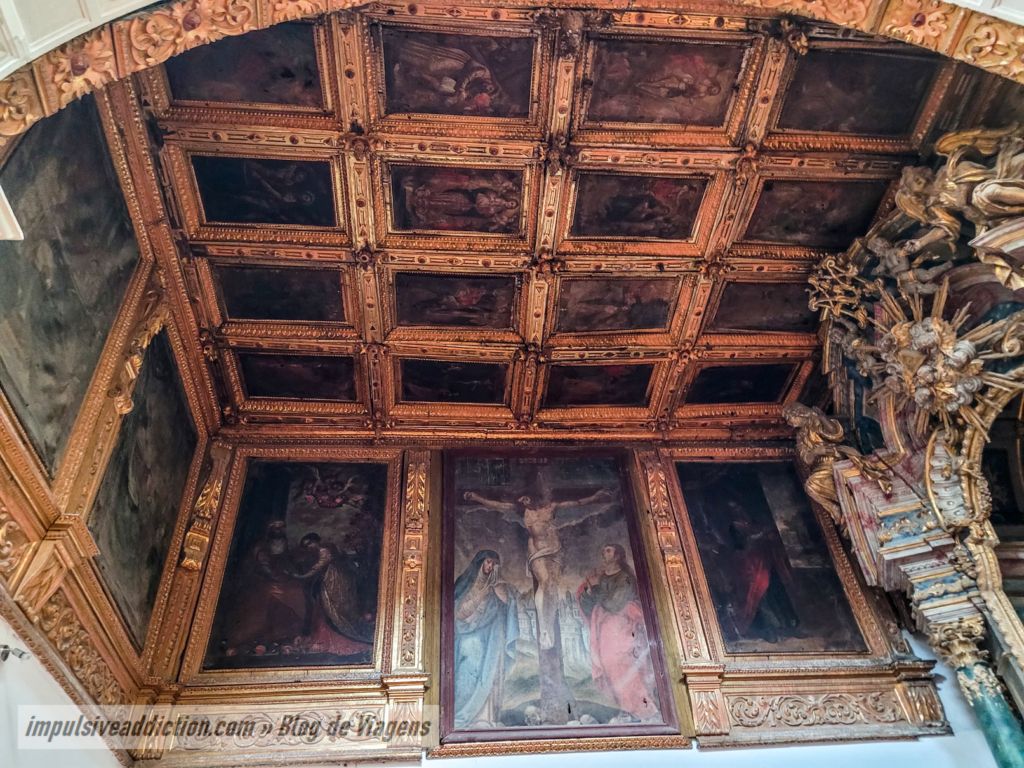
21. Aveiro Forum and Friendship Bridge
Return to the central canal of Aveiro and go discover the incredible Forum. This was the first outdoor mall in Portugal, when it opened to the public in 1998, with many shops, restaurants and even a garden full of olive trees at the top, with a beautiful view of the city.
Be sure to leave your mark in Aveiro by adding a lace of friendship to the bridges that cross the central canal. It’s totally mandatory and you’ll find there boxes with laces and markers to use free of charge. This is an increasingly popular tradition in Aveiro, started by university students. 😀 On the other side of these bridges is Manuel Firmino Market, where the BUGA store referred to in this article is located.
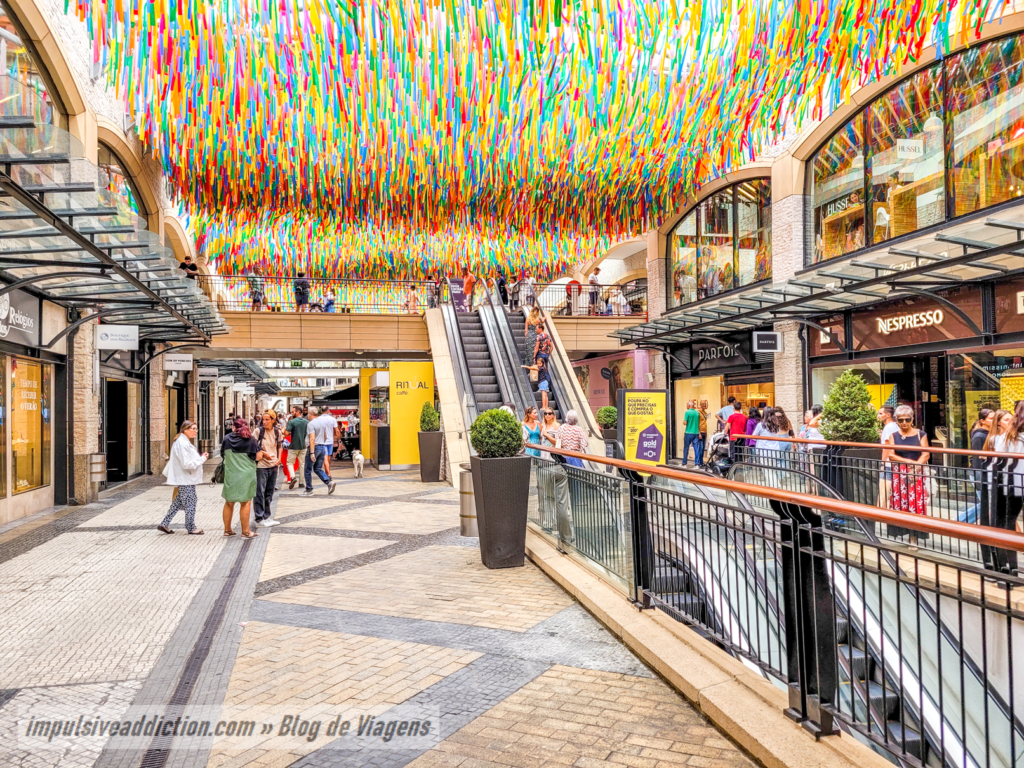
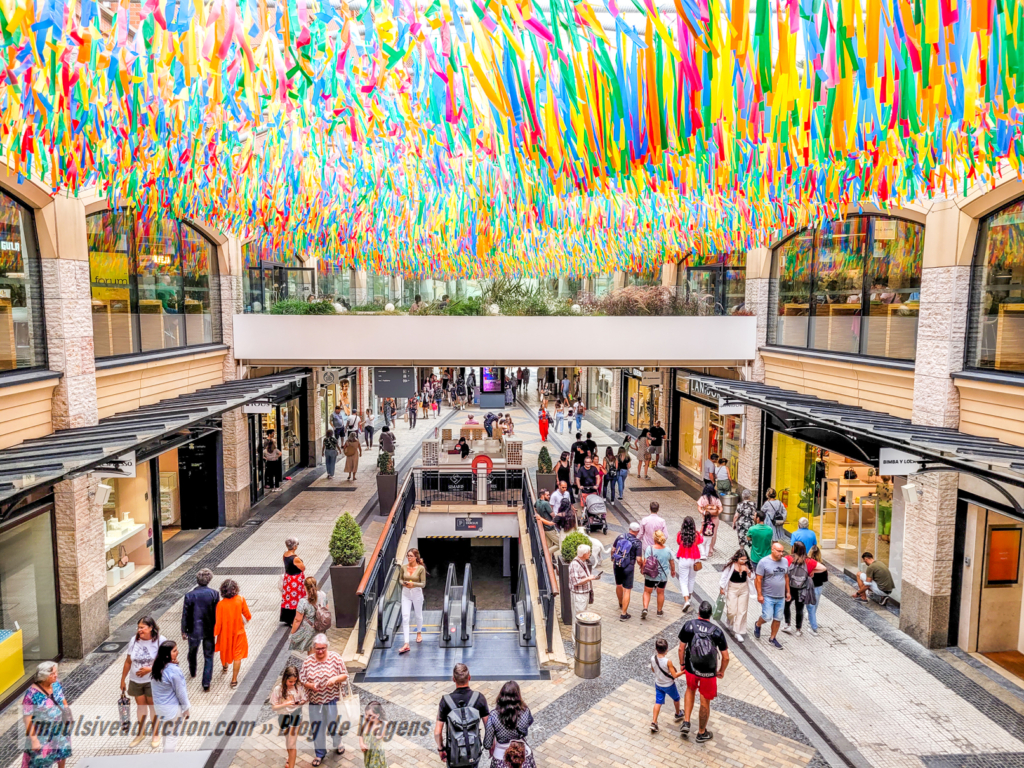
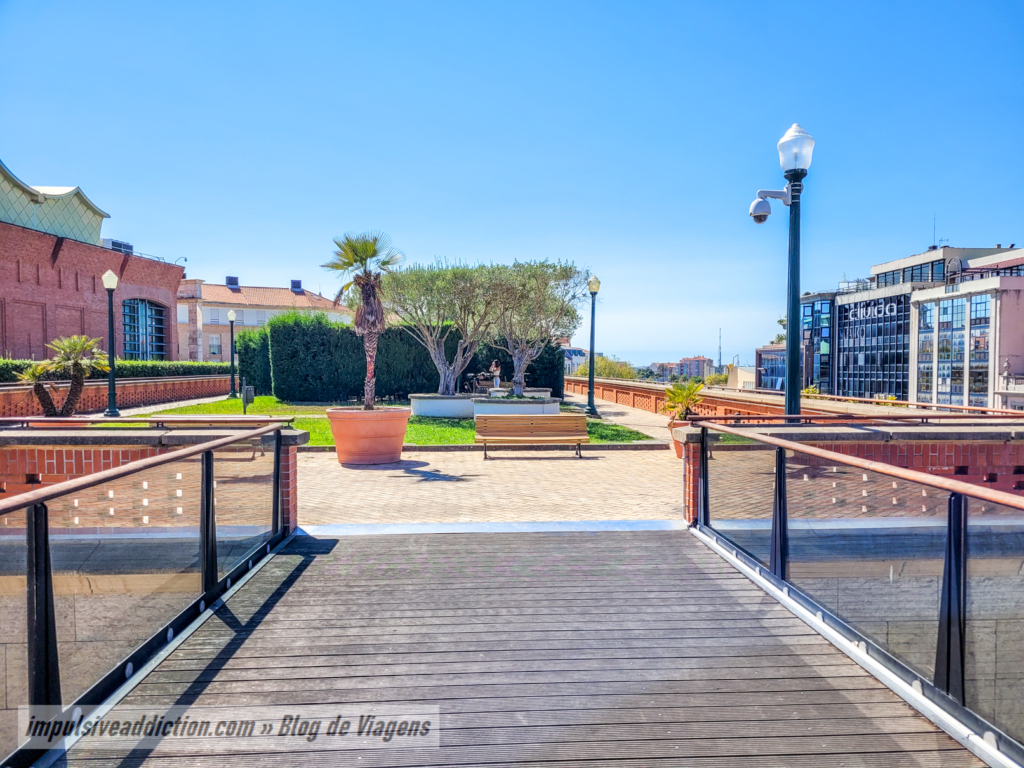
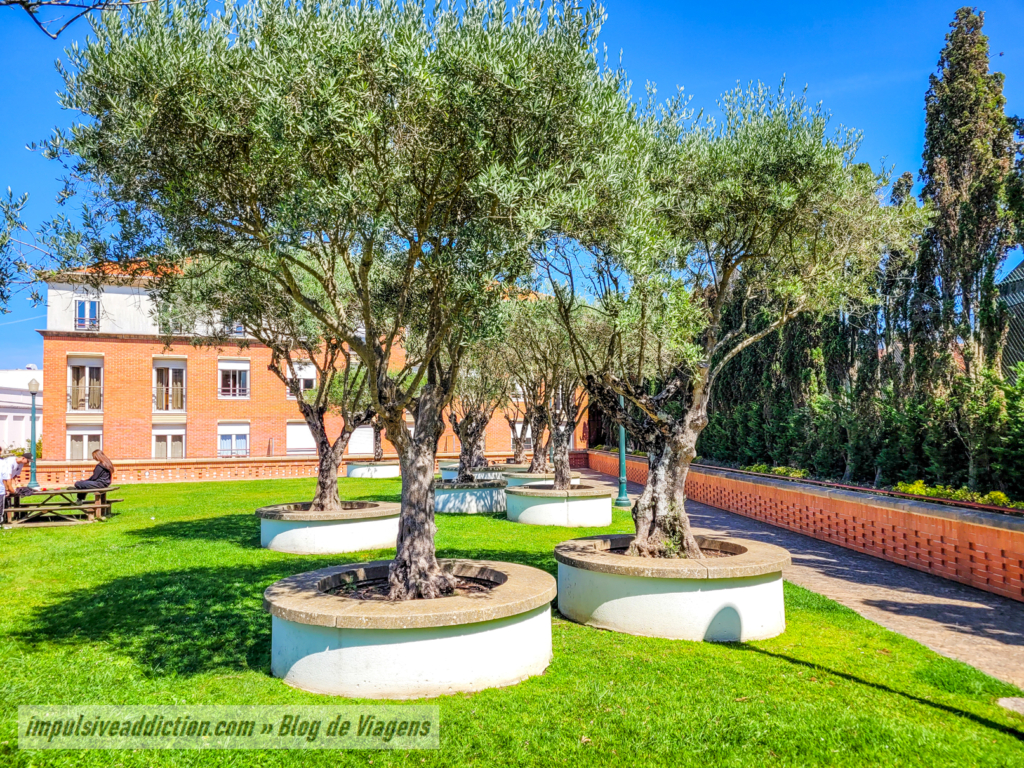
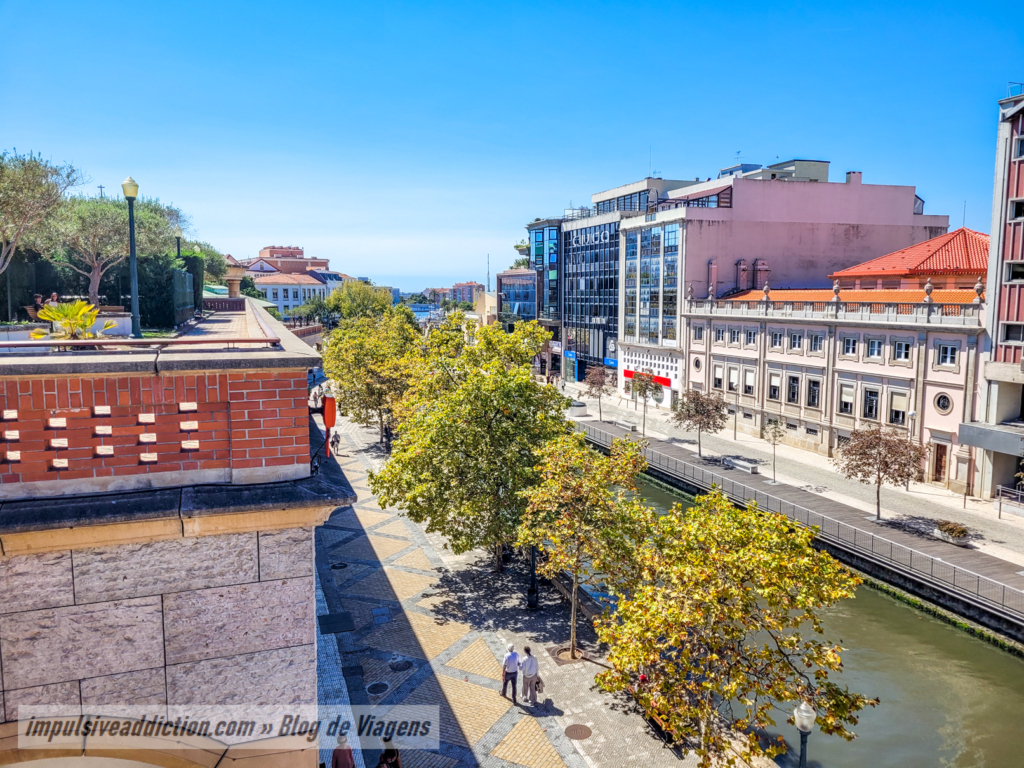
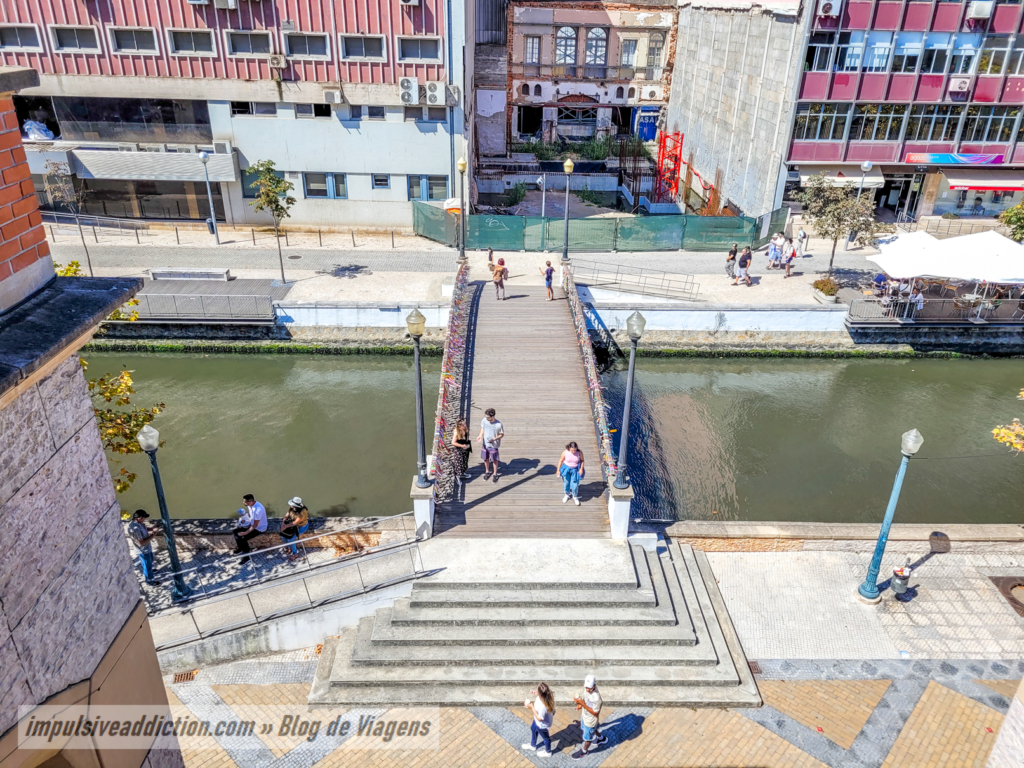
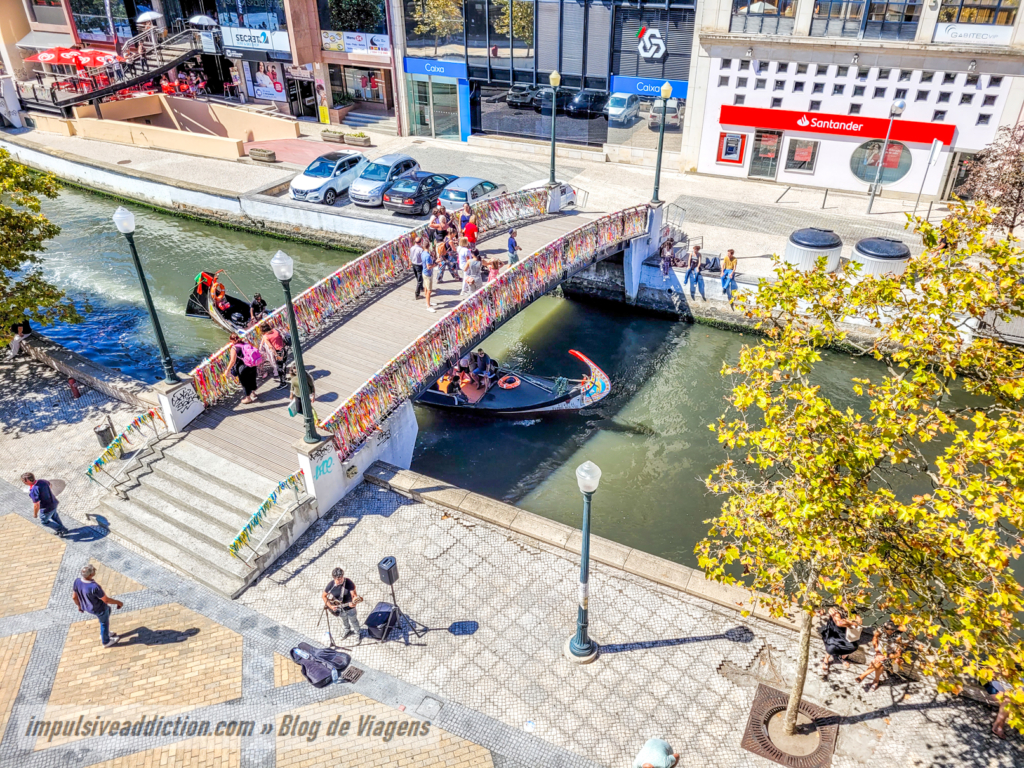
22. Fonte Nova Pier, Congress Center, and “I Love Aveiro”
I finish the list of essentials things to do in Aveiro with a visit to Fonte Nova Pier and surroundings. There you will find the Old Ceramics Factory Jerónimo Pereira Campos (now Aveiro Congress Centre), the nice Fonte Nova Garden with its monument to the soft eggs (ovos moles in portuguese), and also the “I Love Aveiro” Staircase. You can stay overnight at the Melia Ria Hotel & Spa.
The old factory is one of the buildings that most stands out in the city of Aveiro for its chimney and red brick facade, having been built between 1915 and 1917. It is possible to visit the old ovens used to bake the clay.
The “I Love Aveiro” Staircase was decorated for the first time in 2013, since then emerging as one of the main shared places on social networks.
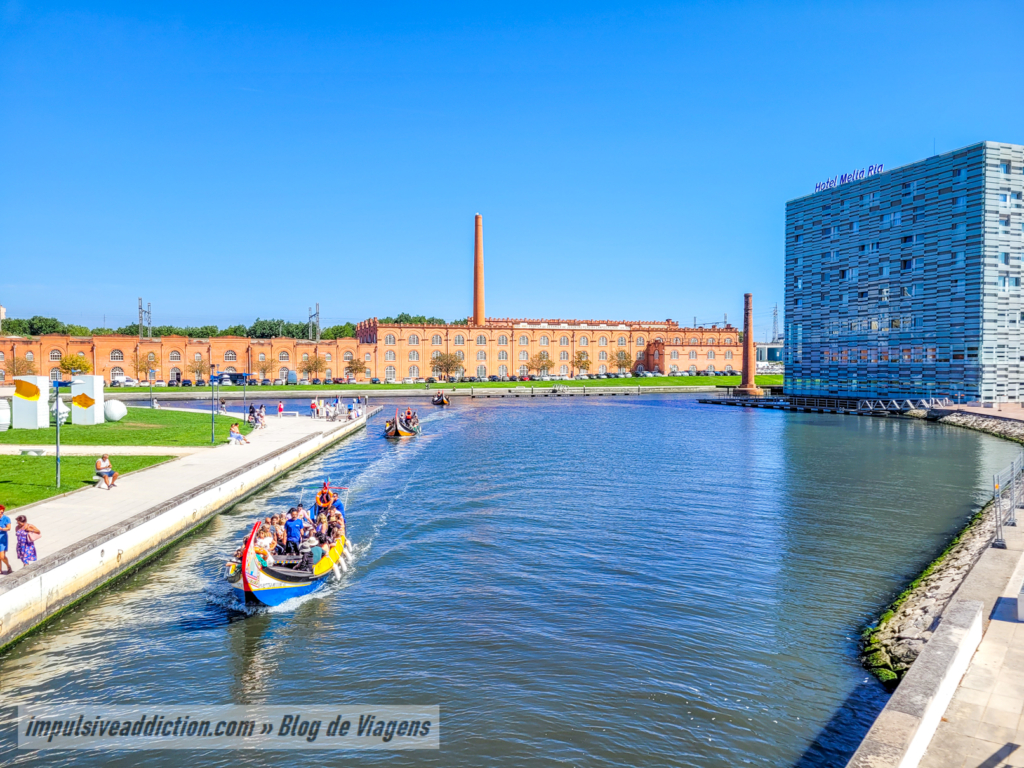
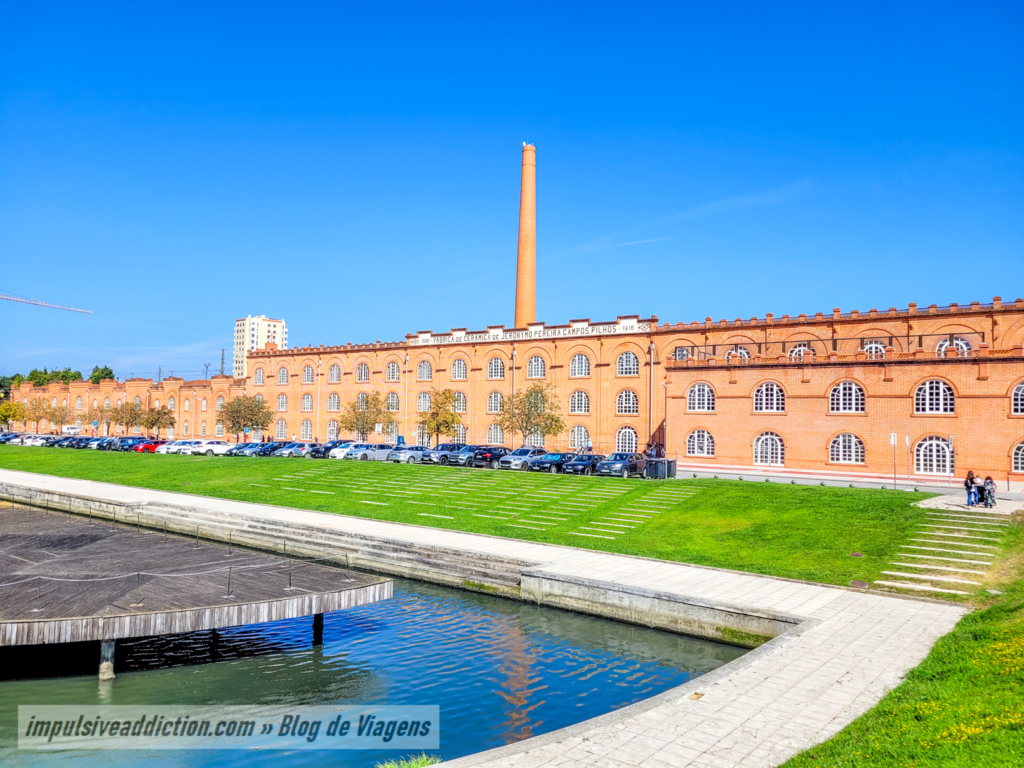
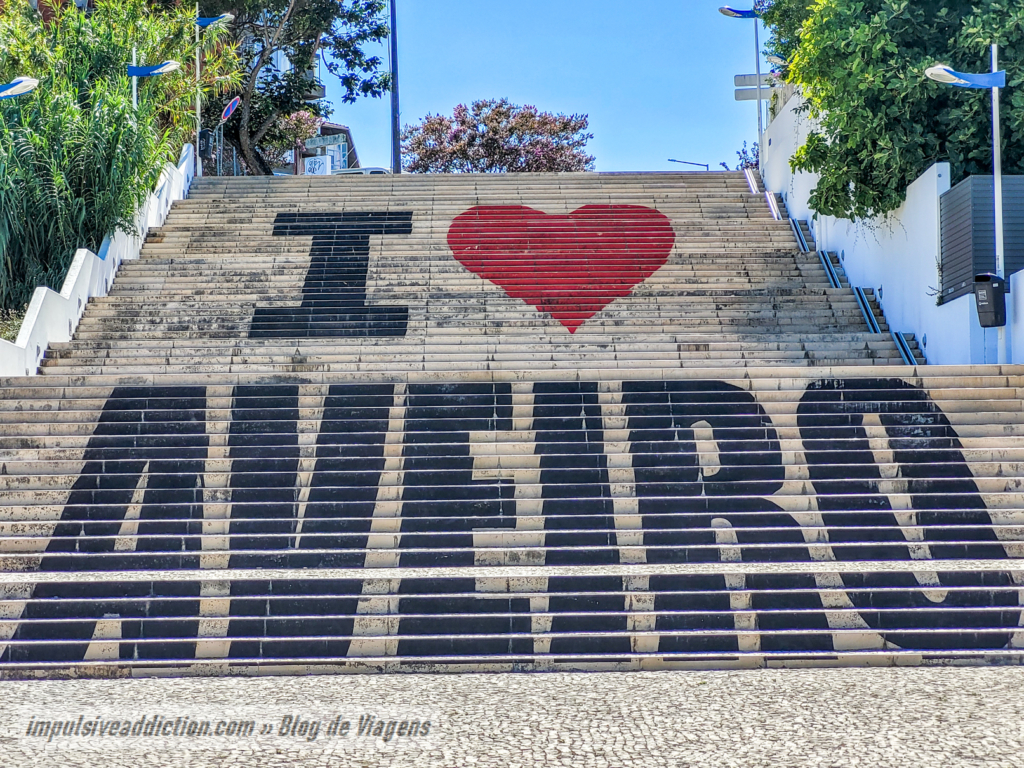
Visit the salt flats of Aveiro
The Salt flats of Aveiro make for an excellent tour on a second day travelling in the region. If you like to visit them, then I share with you that you can find similar ones in Figueira da Foz, not far from Coimbra, in the center of Portugal.
When visiting the Salt Flats of Aveiro, be sure to stop by Marinha da Troncalhada, transformed into an open-air ecomuseum. How about walking along Rua do Sal, from the Portico of the Canal to the Naval Club of Aveiro?
In the surroundings you should also visit Marinha da Noeirinha, with its artificial river beach, and even with a salt spa at your disposal. Learn more on the official website, as there are prices associated with the use of these spaces.
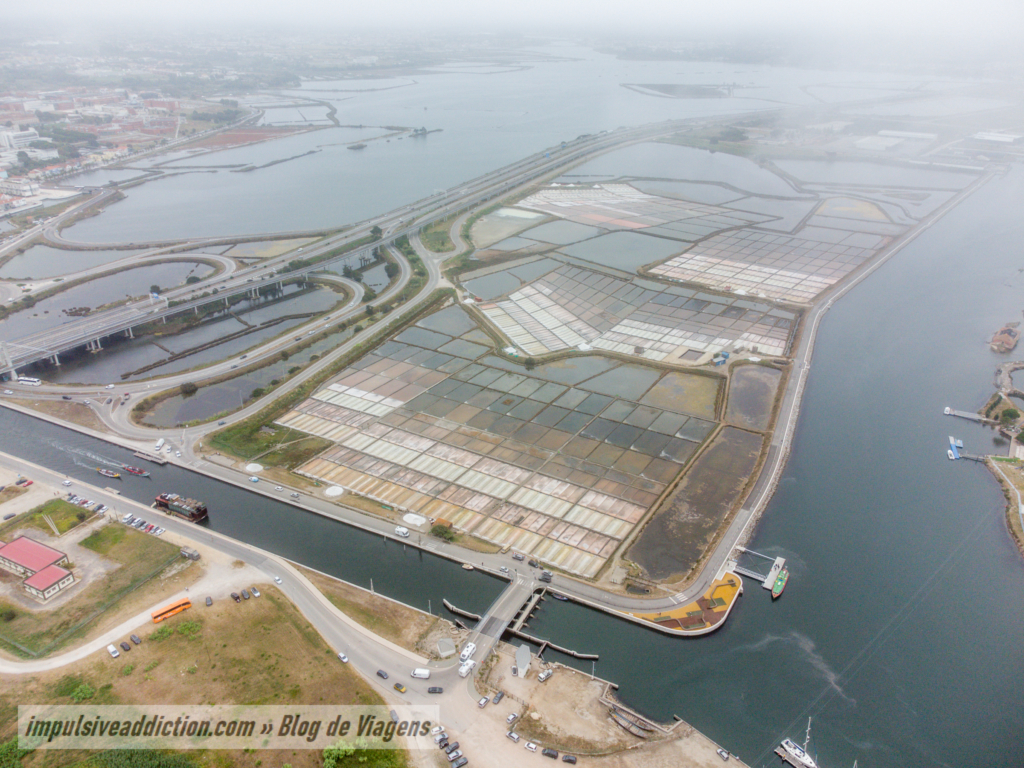
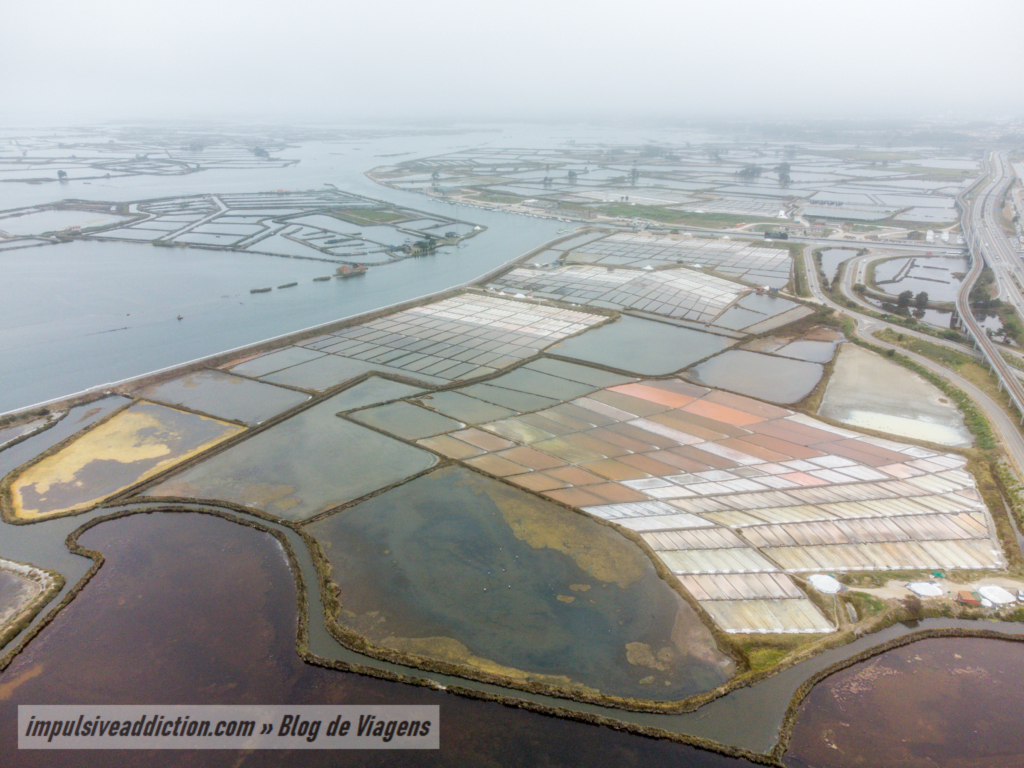
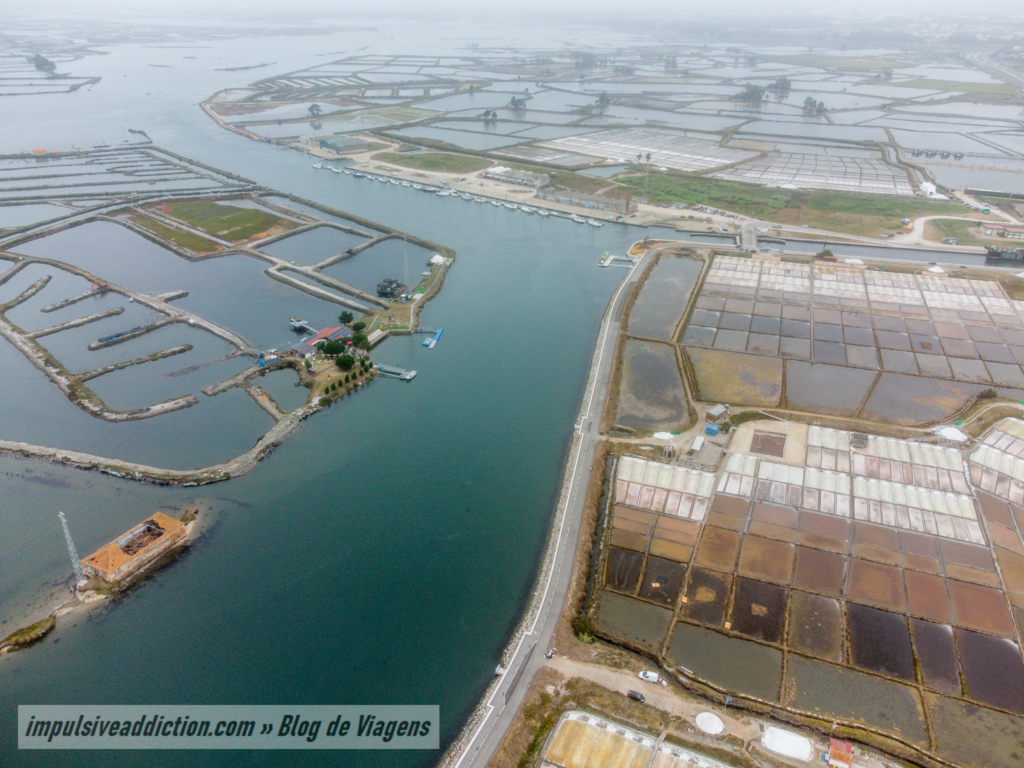
1. Marinha da Troncalhada Eco-Museum
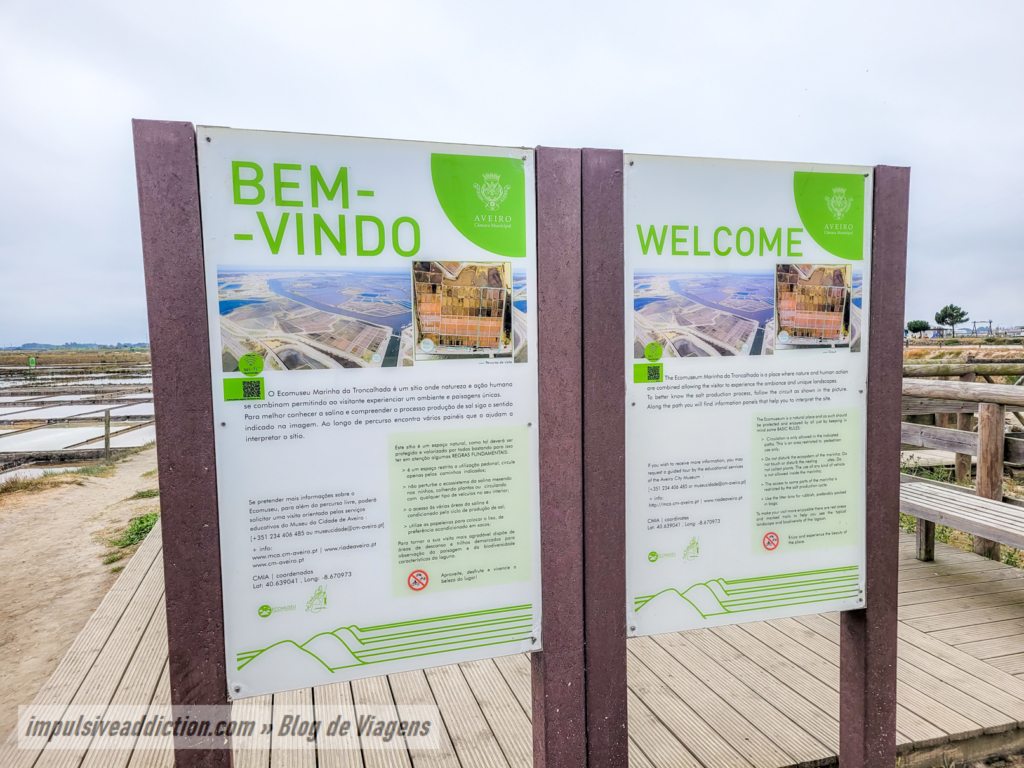
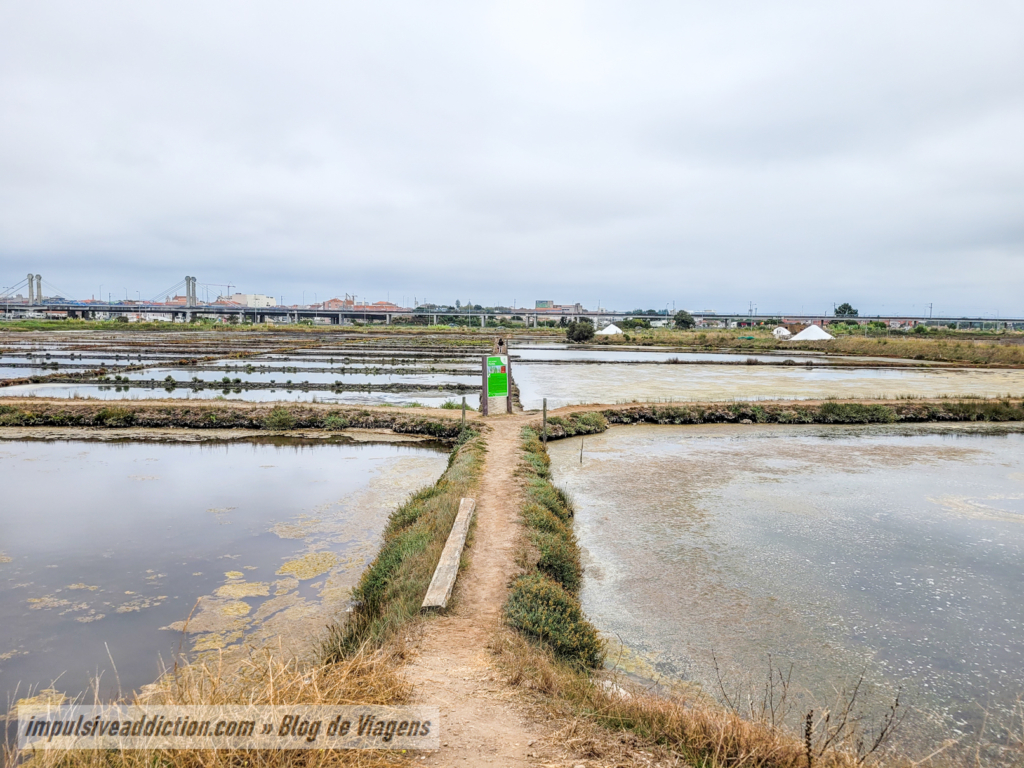
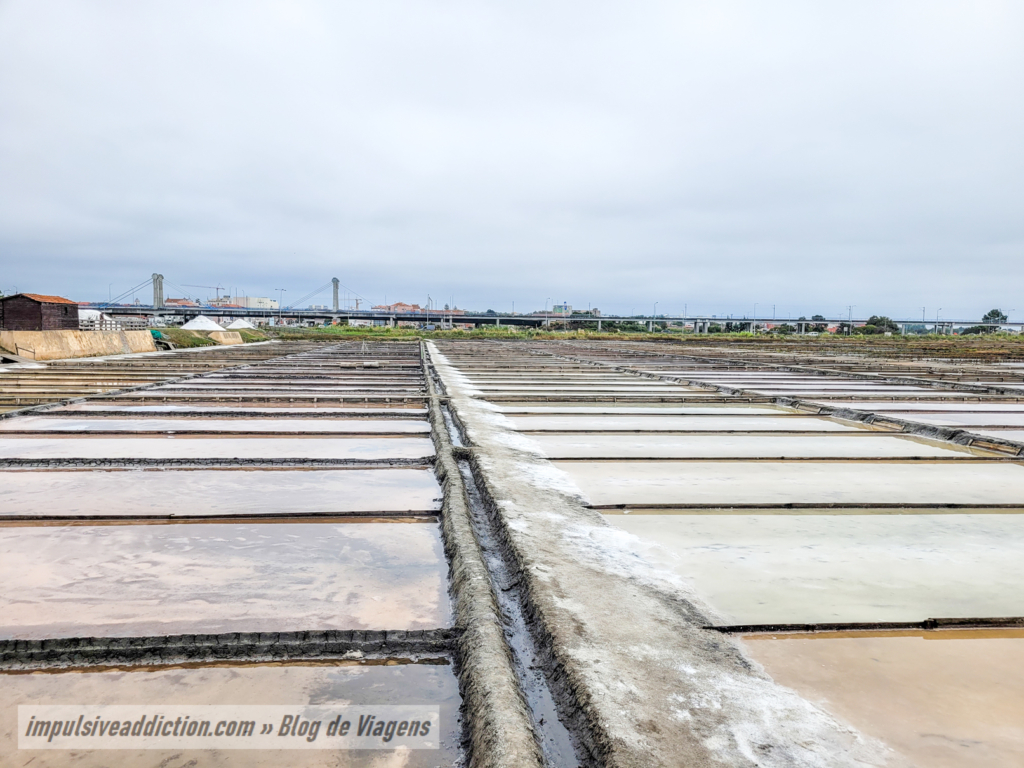
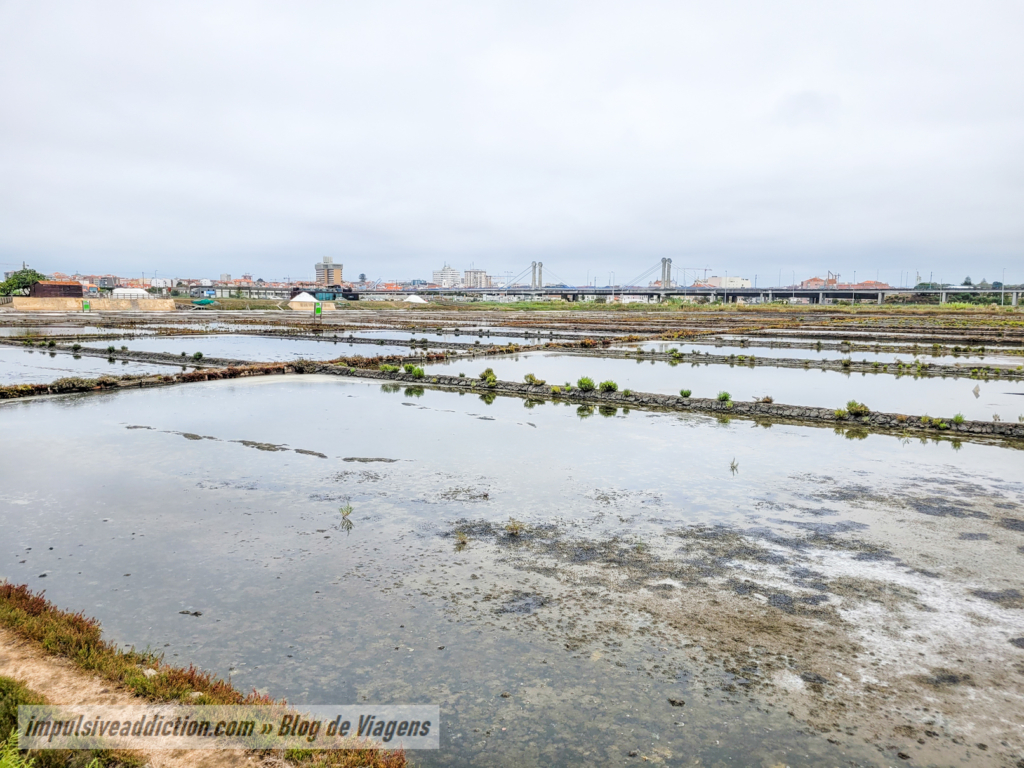
2. Portico of the Canal and Rua do Sal
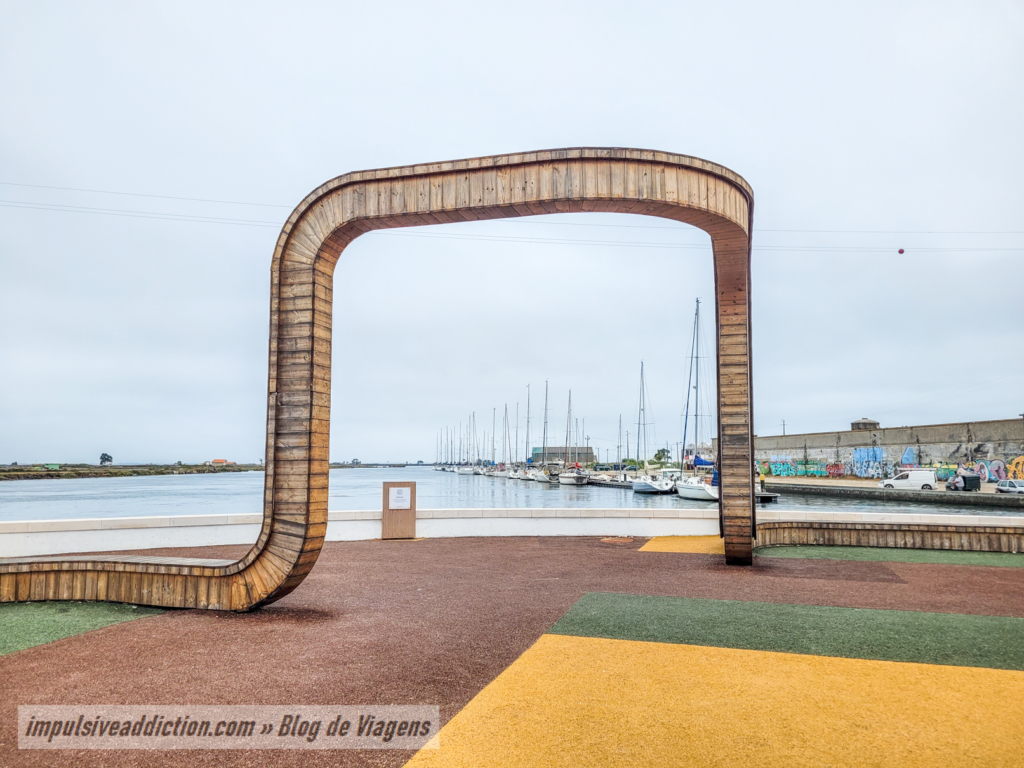
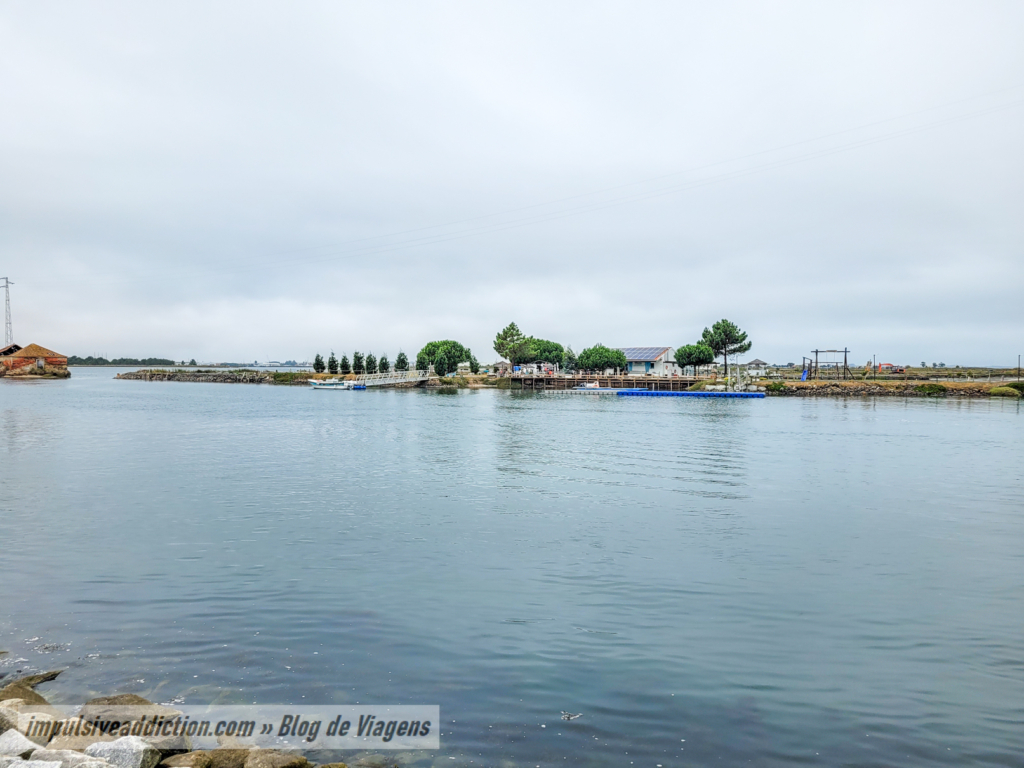
3. Municipal Center for Environmental Interpretation
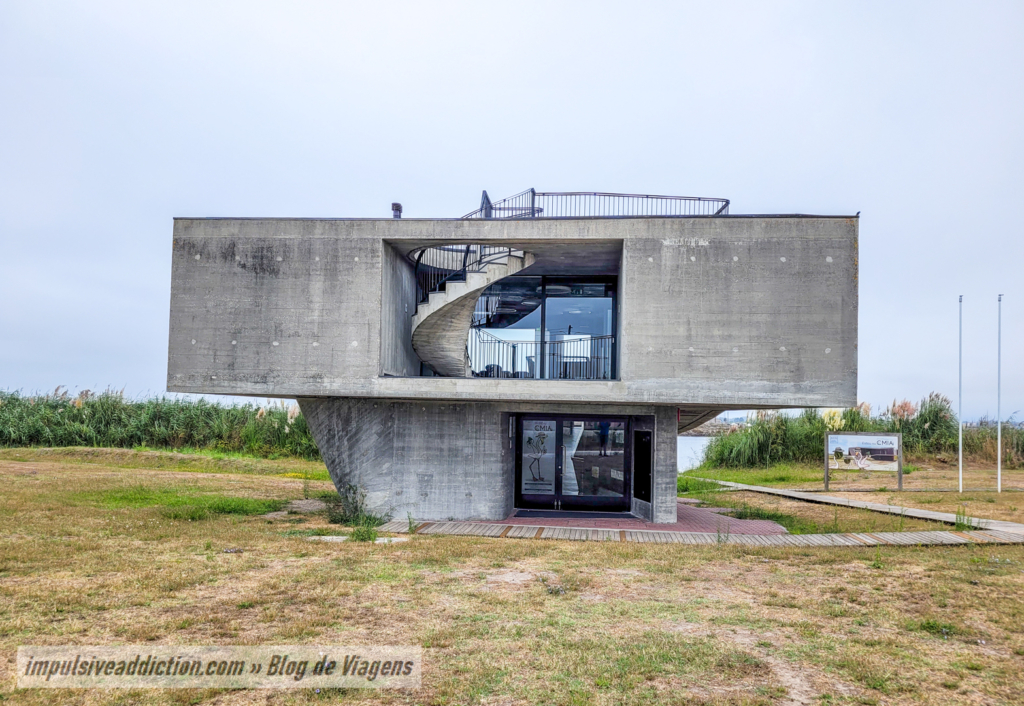
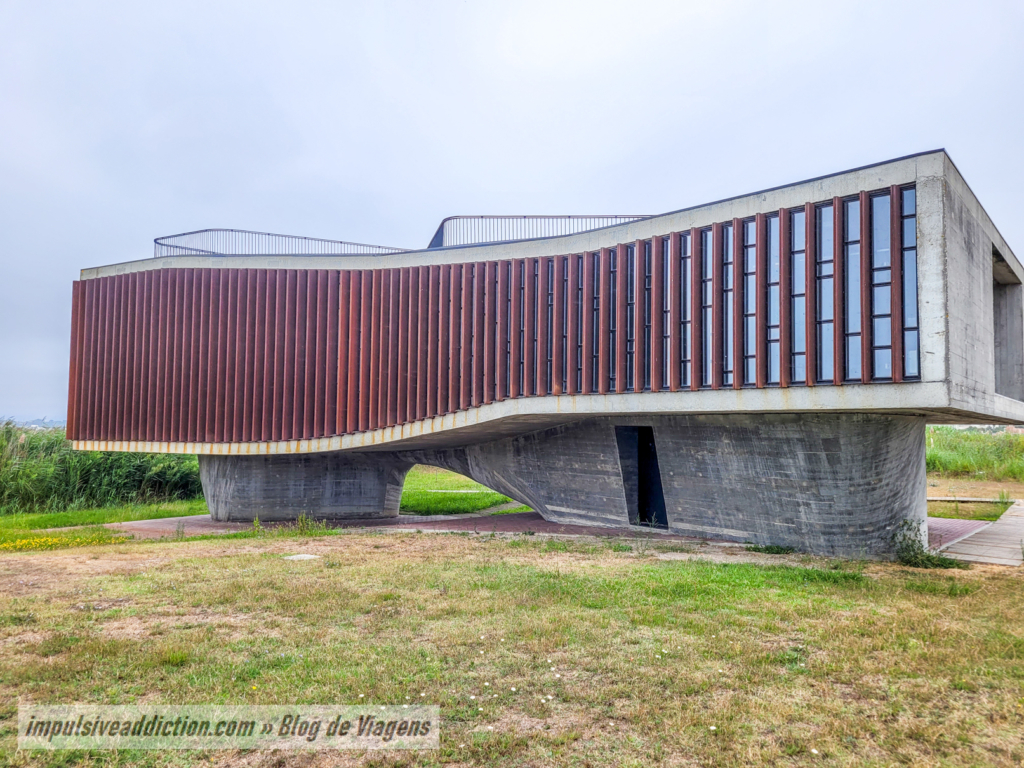
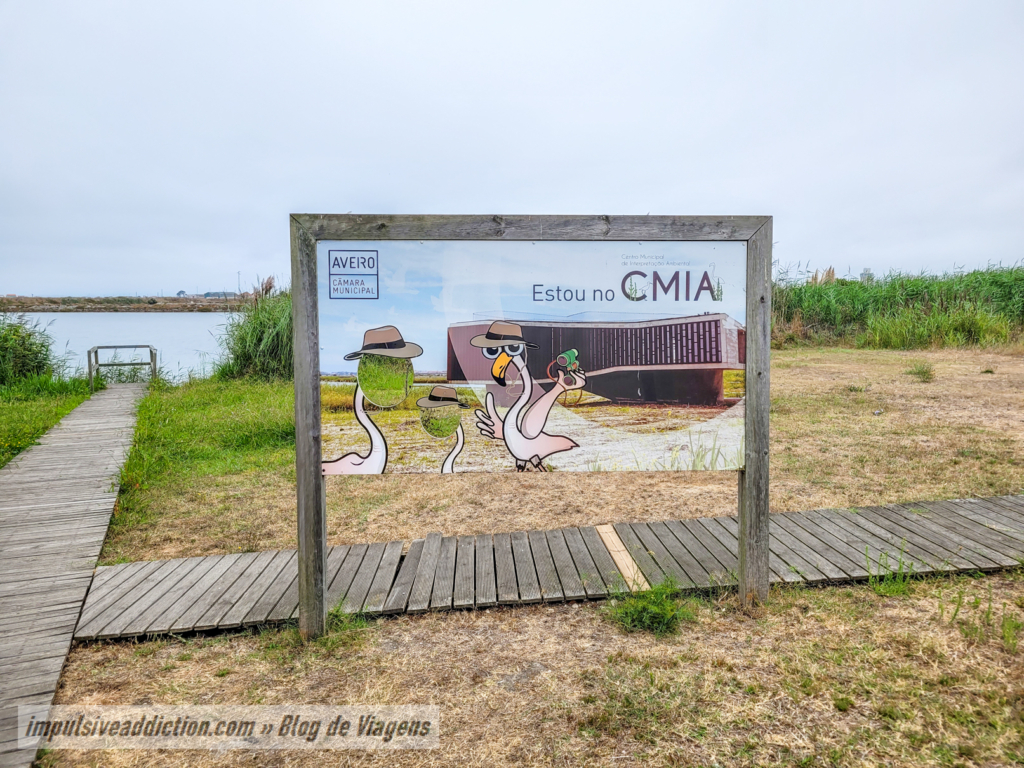
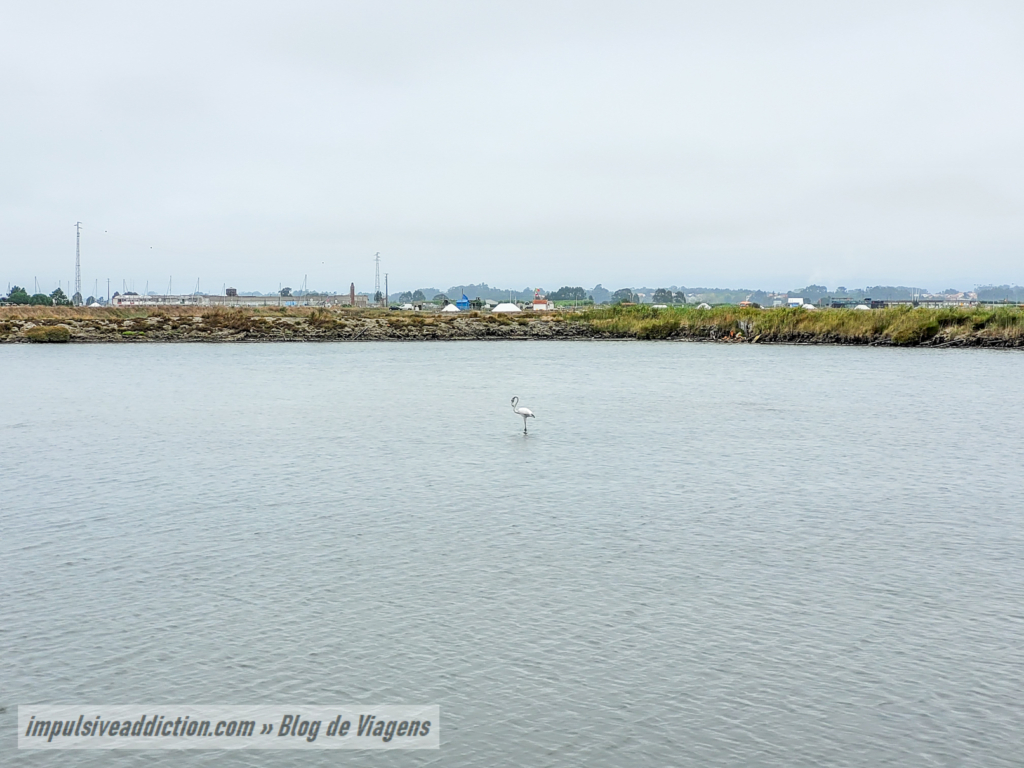
4. Marinha da Noeirinha, Salt Spa and Artificial Beach
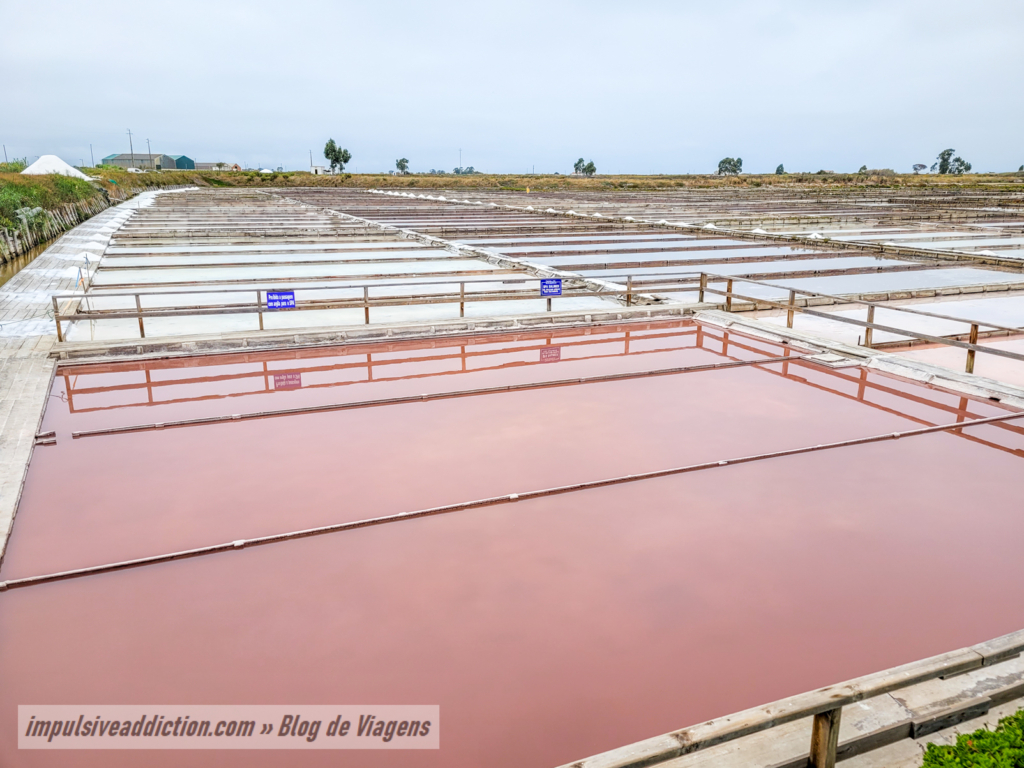
Explore the best walkways and trails in Aveiro
Also for a second or third day travelling in the region of Aveiro, you should go trail the best Walkways available. There are two main options:
- The Walkways of Ria de Aveiro consist of a linear route that starts at Esgueira pier and ends at Ponte Caída (fallen bridge). There are, however, those who start it at the center of the city of Aveiro.
- The walkways between Costa Nova and Barra beach follow the sea, allowing you to enjoy the best beaches in Aveiro, in the municipality of Ílhavo. I recommend a longer route, in order to join the sea to Ria de Aveiro, passing not only by the extraordinary beaches, but also by the typical colorful houses of Costa Nova, today one of the hallmarks of the region.
Don’t forget the possibility of taking guided tours to discover Costa Nova in Aveiro, with Civitatis or Get Your Guide.
- From Aveiro/Ilhavo: Barra, Costa Nova, and Vista Alegre Tour
- From Porto: Aveiro and Costa Nova Day Trip
1. Walkways of Ria de Aveiro (Esgueira)
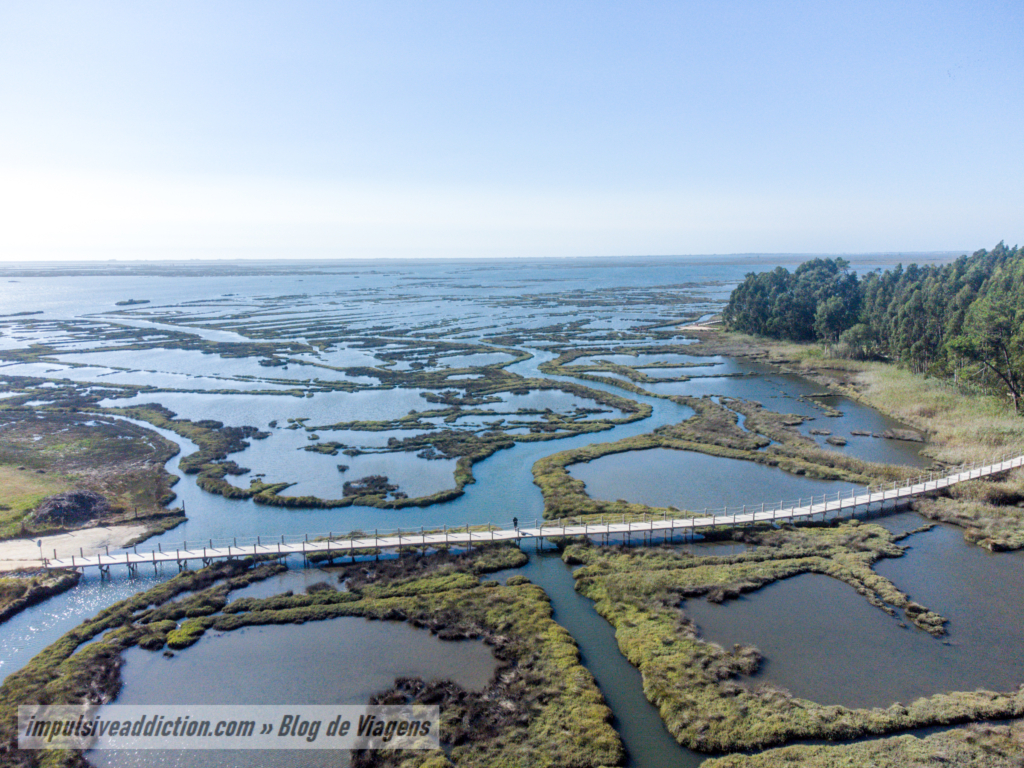
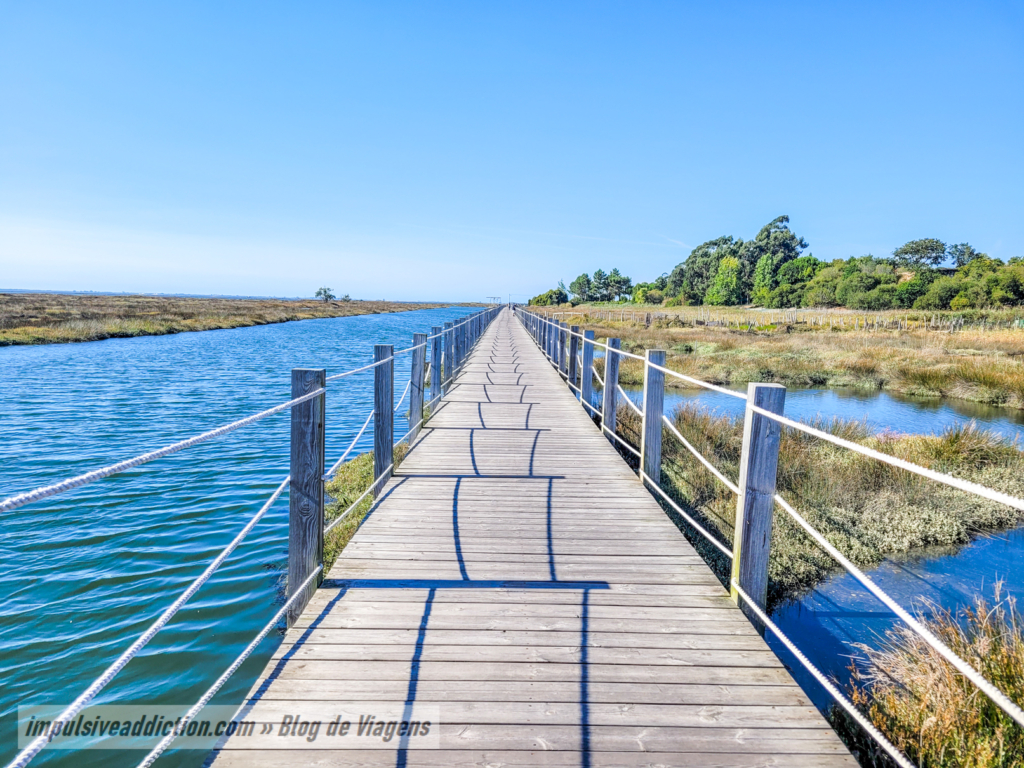
2. Barra beach and lighthouse
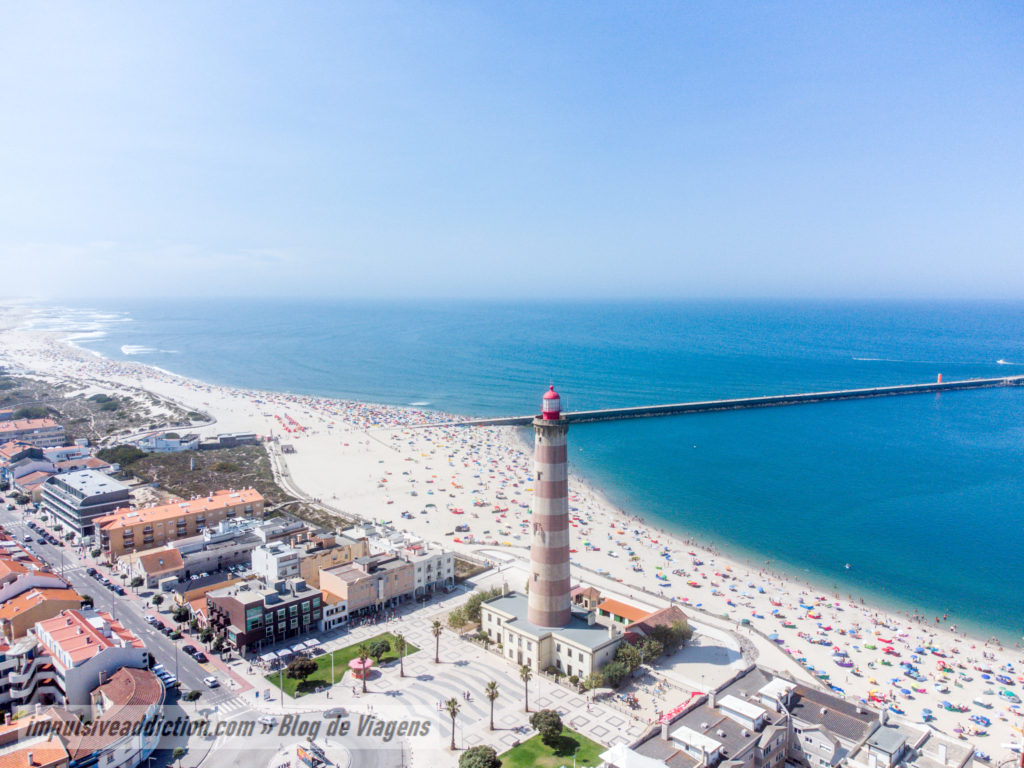
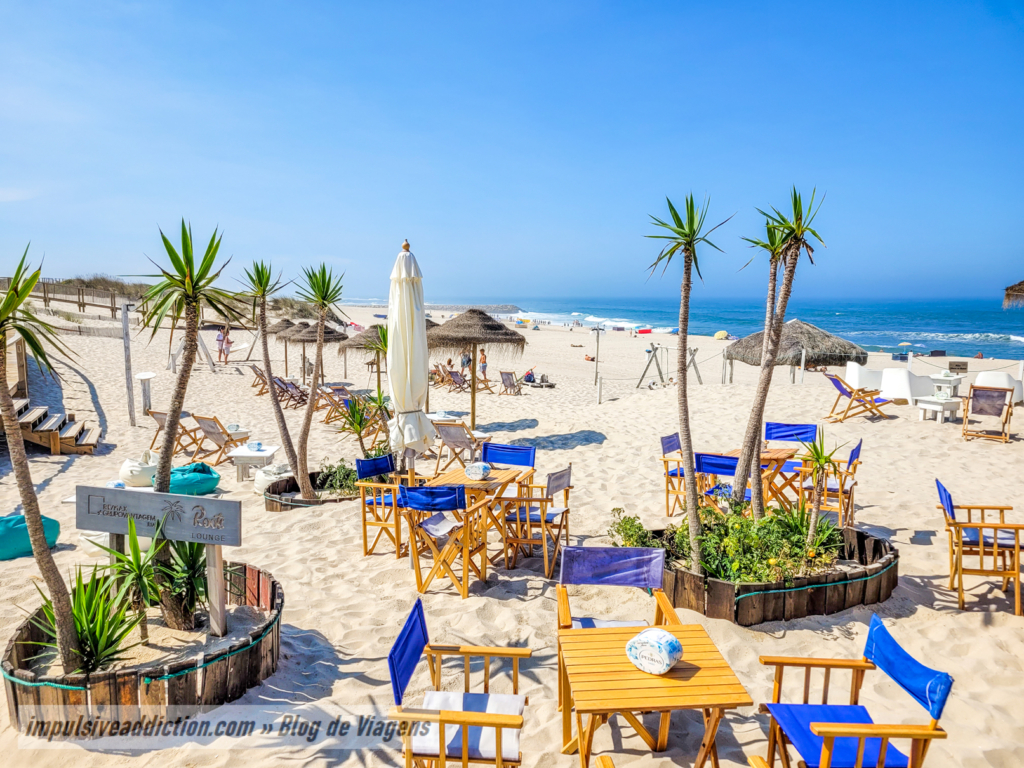
3. Costa Nova beach
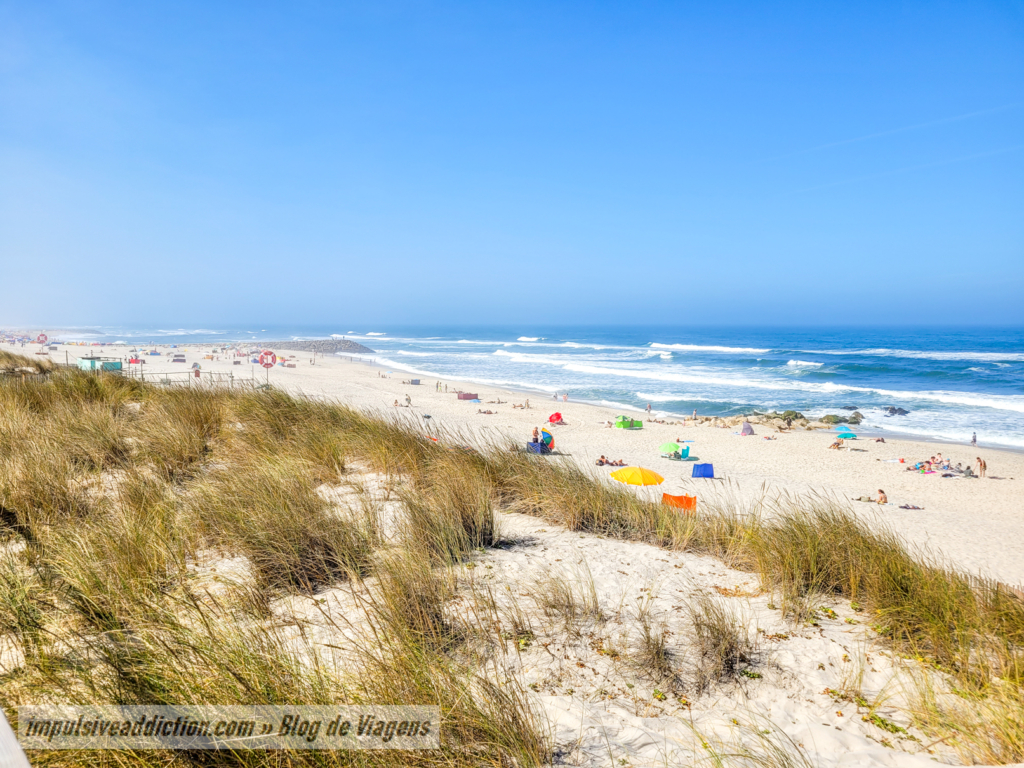
4. Walkways between Costa Nova and Barra Beach
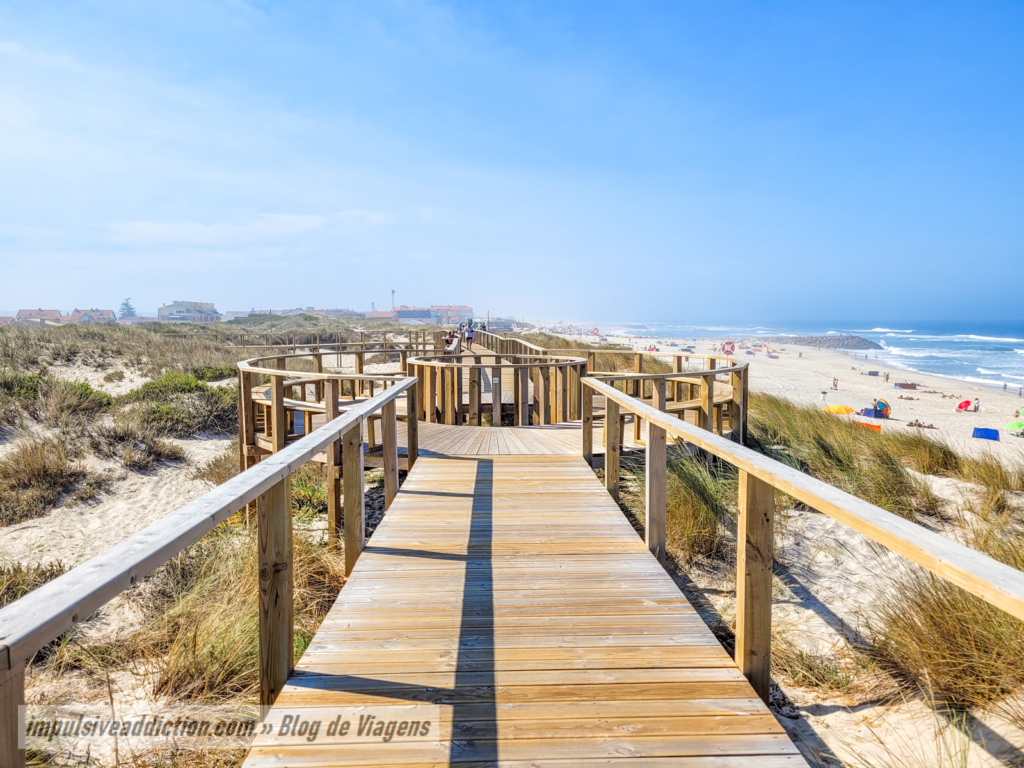
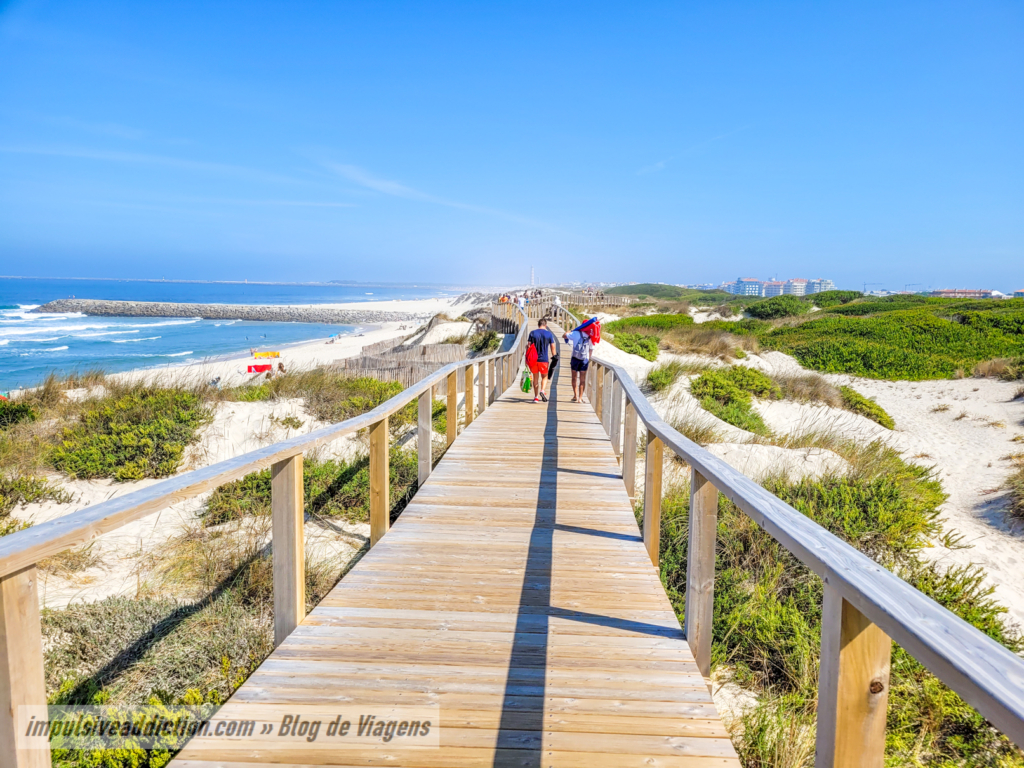
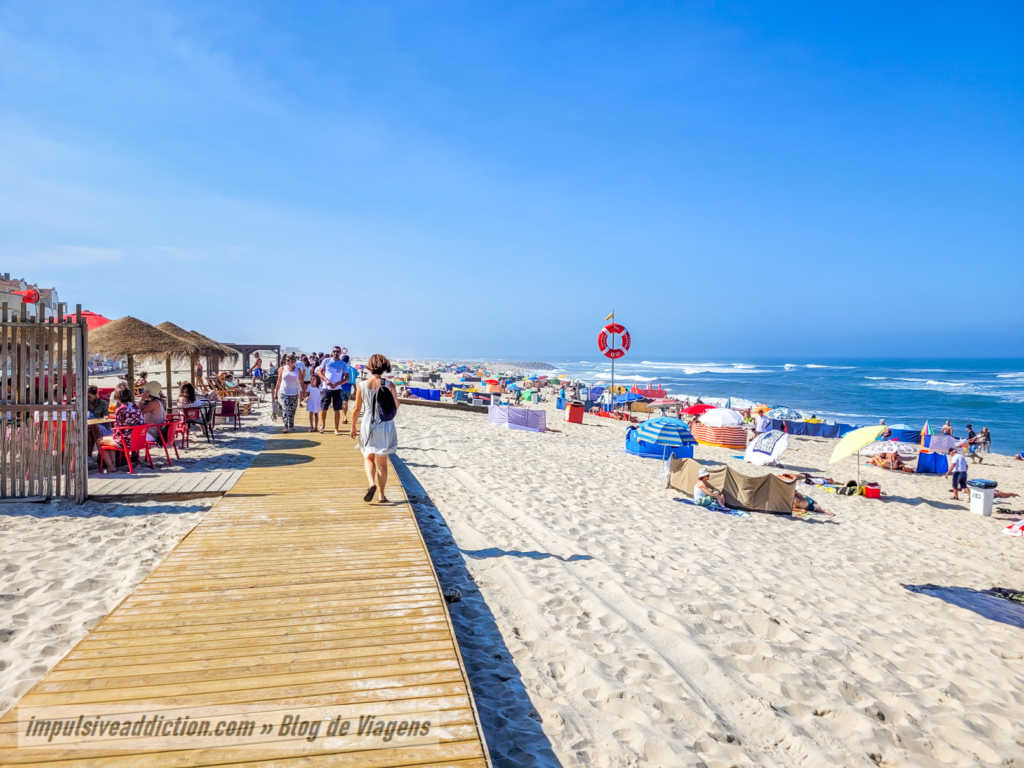
5. Colorful Houses of Costa Nova
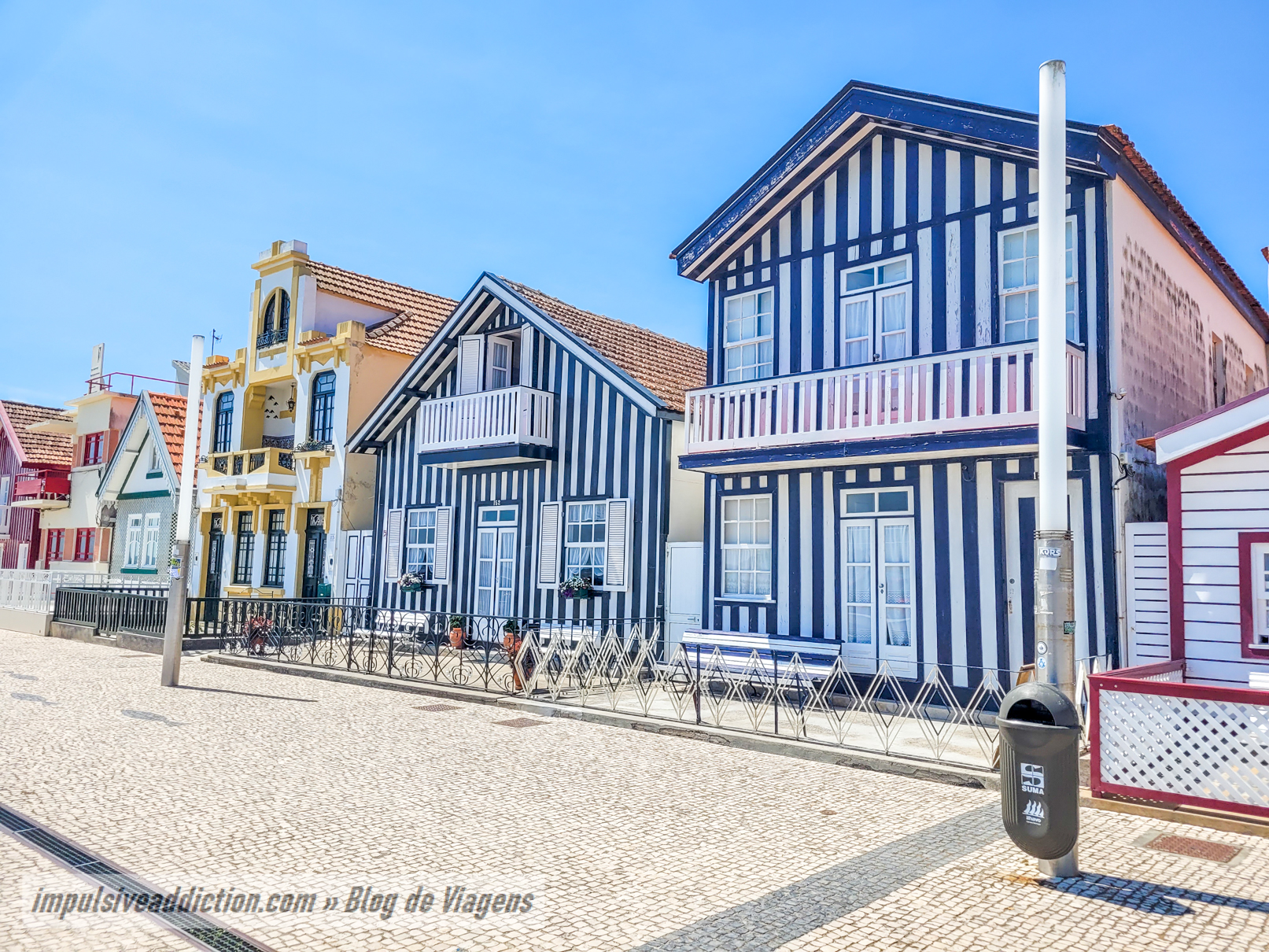
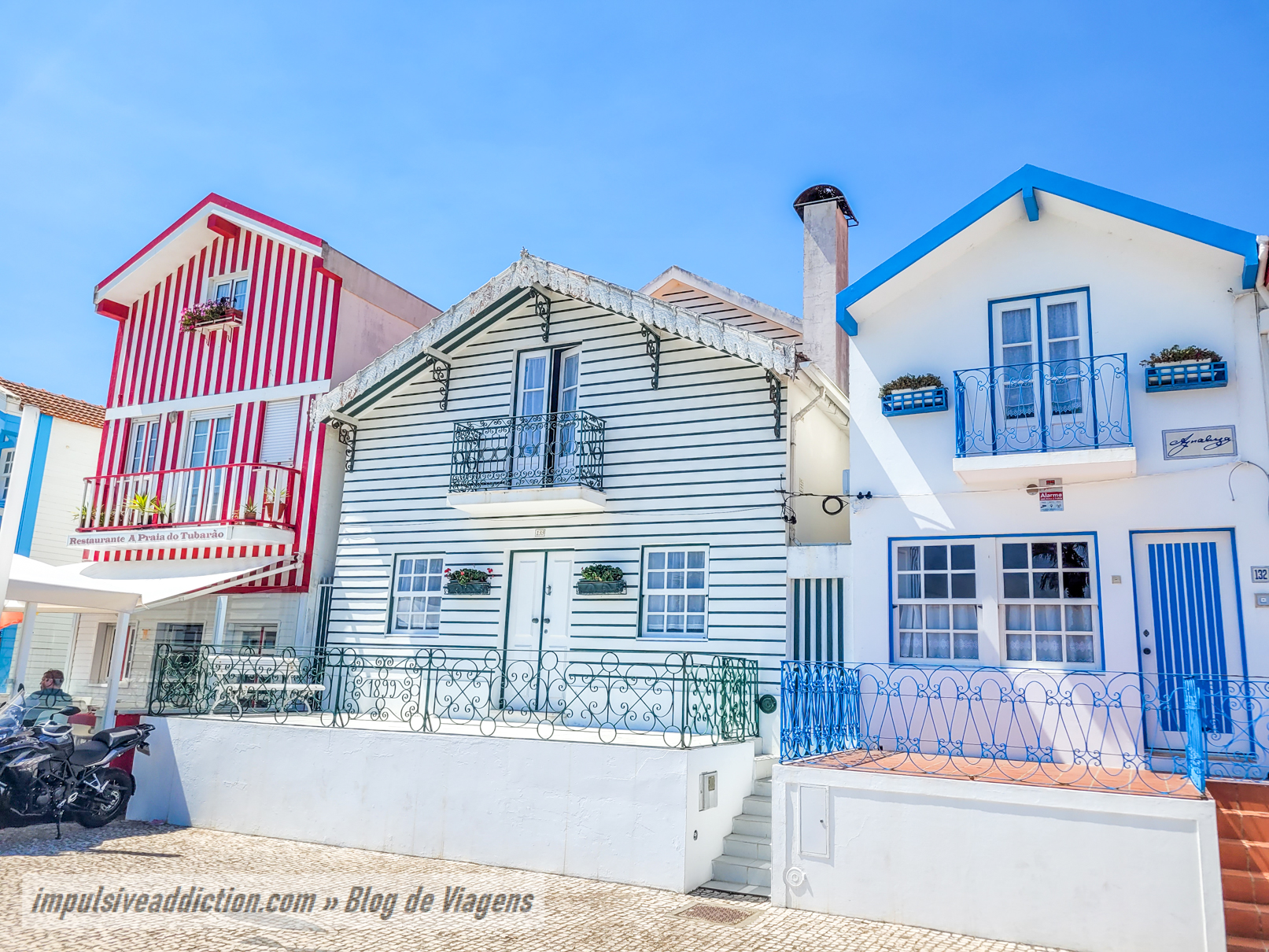
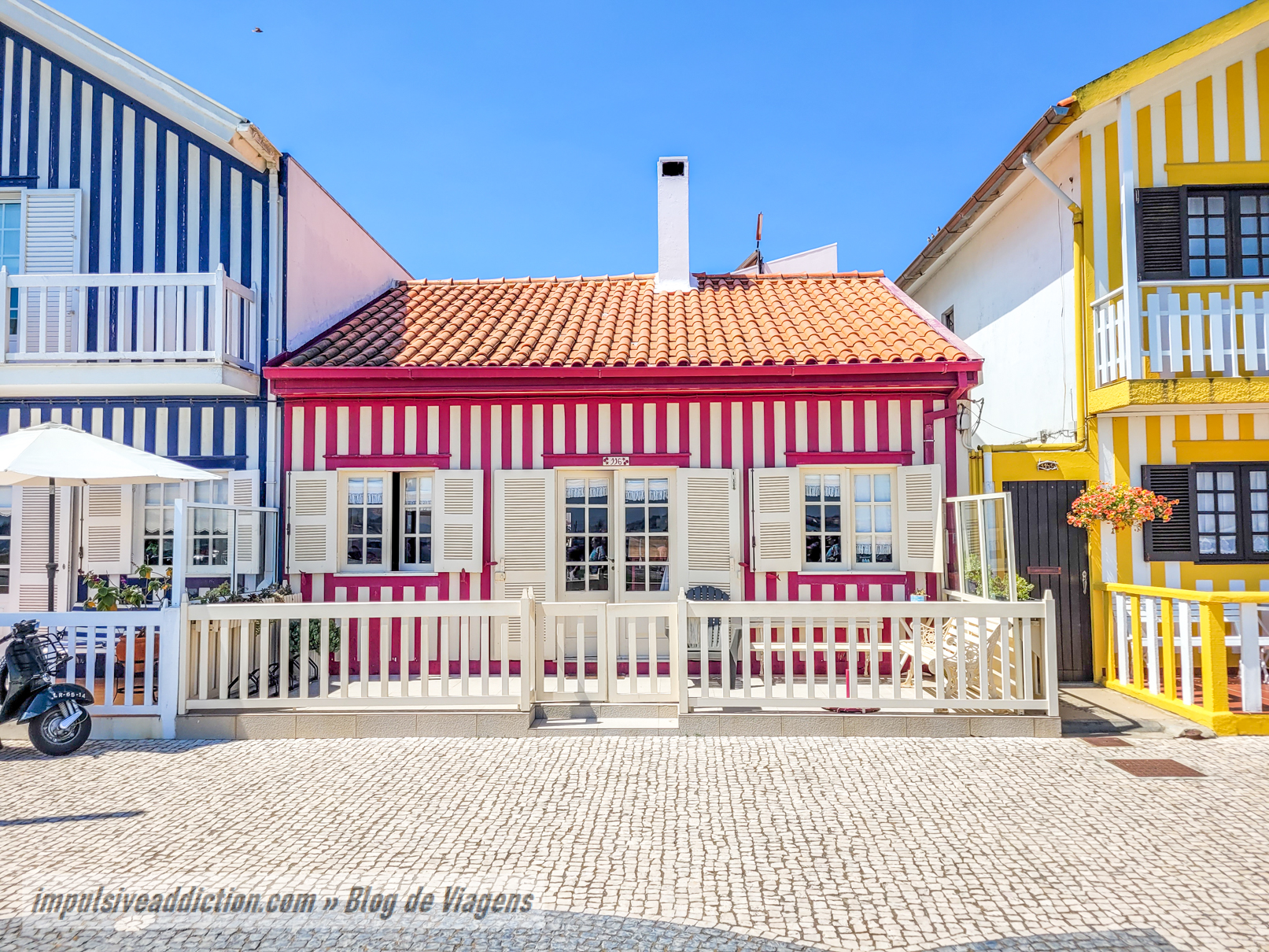
Visit Vista Alegre and Ílhavo Maritime Museum
In Ílhavo and Gafanha da Nazaré, where the aforementioned Barra and Costa Nova beaches are located, you should also visit the Maritime Museum and Vista Alegre area.
At Vista Alegre Museum you will find a rich collection of porcelain pieces that the factory has produced over the years. You will have the opportunity to access manual painting shops where you can observe real people working on real pieces. 😉
It is also possible to visit the Chapel of Nossa Senhora da Penha de França, built at the end of the 17th century in honor of the patron saint of Vista Alegre. Noteworthy are its tiles, frescoes, marble and gilded carving altarpieces, and even the tomb of the bishop of Miranda, worked in Ançã stone.
With regard to the Maritime Museum, it is divided into several nuclei in the cities of Ílhavo and Gafanha da Nazaré, namely:
- The Central Maritime Museum of Ílhavo, with a codfish aquarium and a life-size representation of a sailboat/yacht used for cod fishing in the early 20th century. It also has a room with typical boats from Ria de Aveiro, also in real size.
- The Center for Maritime Religiosity, which is located next to the Mother Church of Ílhavo, and which presents some collections of sacred art, associated with the faith of fishermen and sailors in the region.
- And the Museum-Ship of Santo André, which was a real cod fishing vessel (trawler). It dates from 1948, having been built in Holland with about 70 meters in length and a hold with capacity for 1200 tons of fish. If you like to visit this ship, how about visiting the Ship Hospital Gil Eannes, in Viana do Castelo?
I could not fail to mention the spectacular cod port of Aveiro, where today the entire Portuguese cod fleet is located, and where all frozen fish from the North Atlantic, such as cod, are unloaded. Going there and observing the big ships up close is one of the most mandatory things to do in Aveiro! 😉
1. Vista Alegre Museum
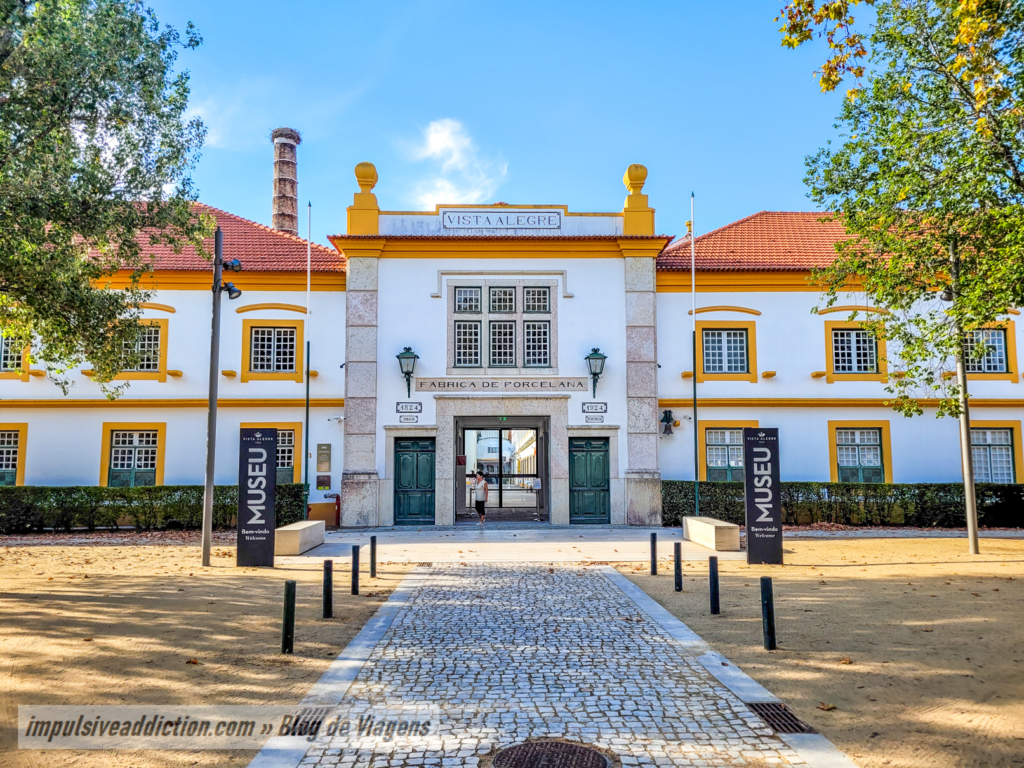
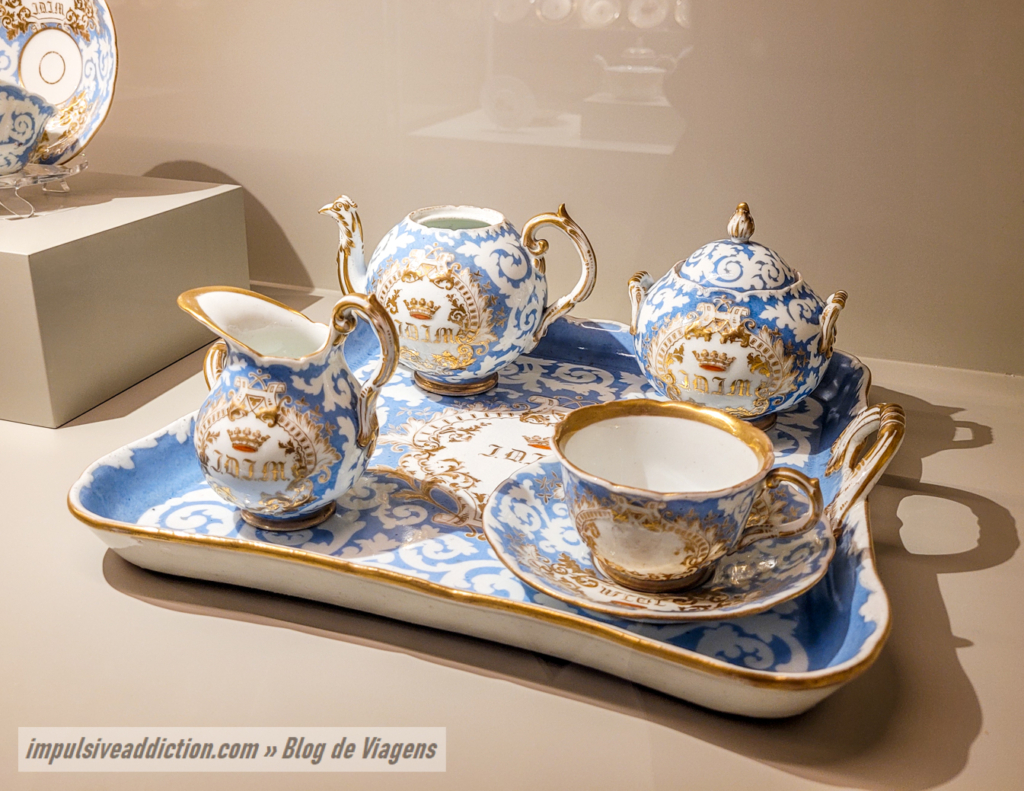
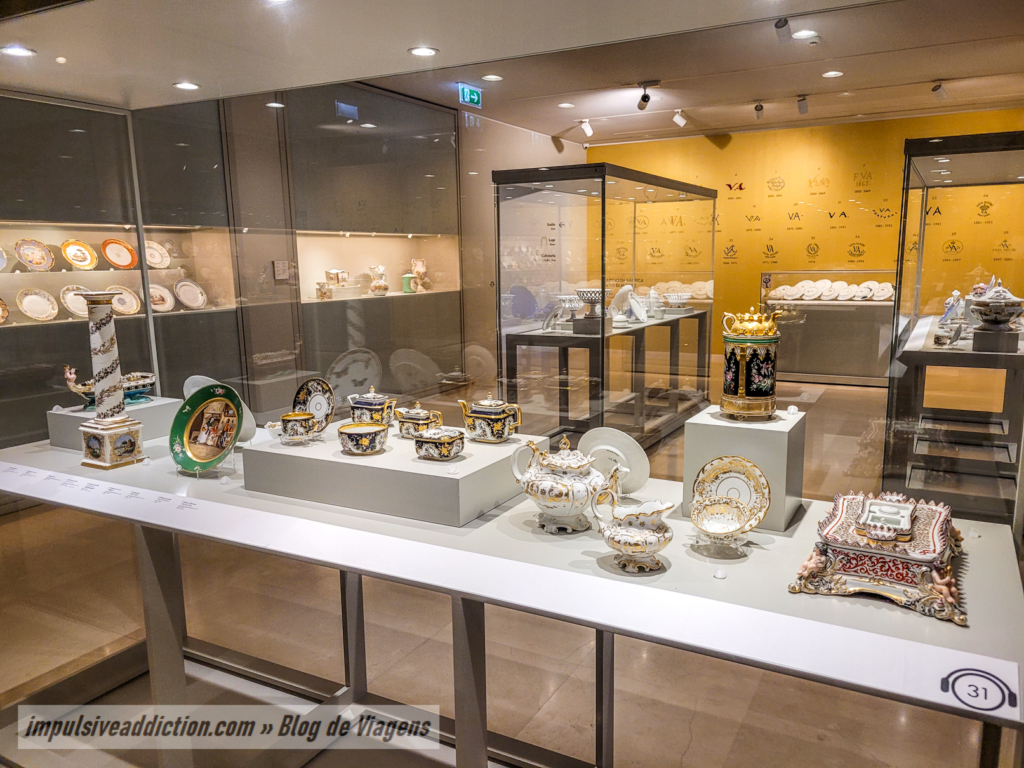
2. Chapel of Nossa Senhora da Penha de França
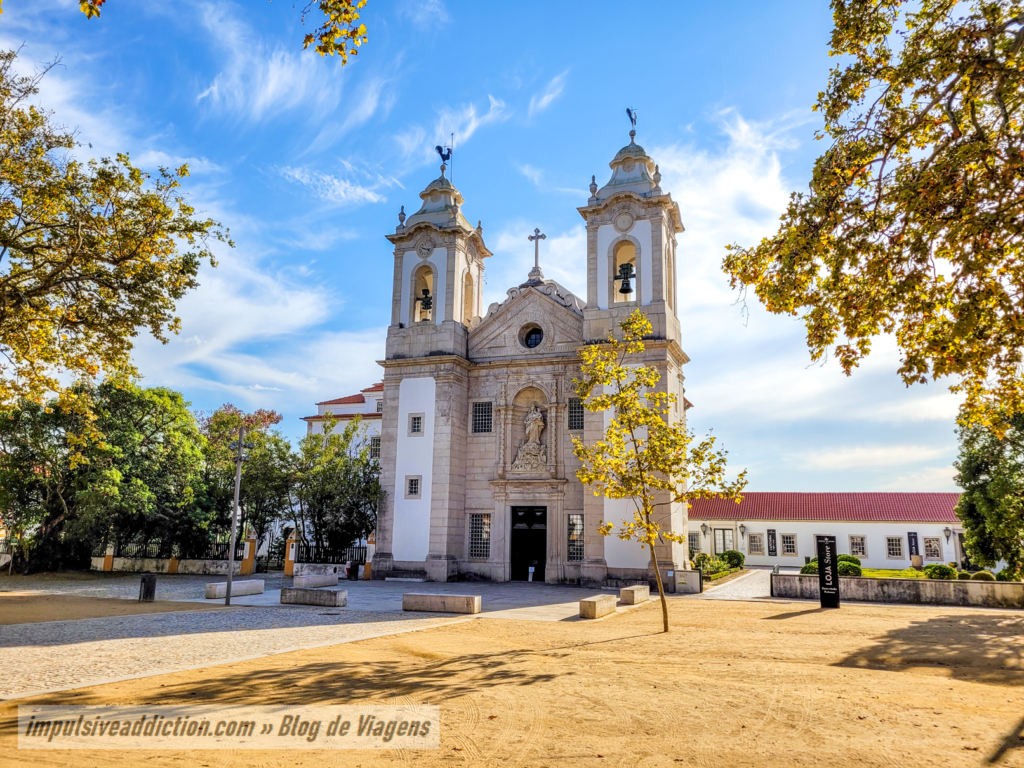
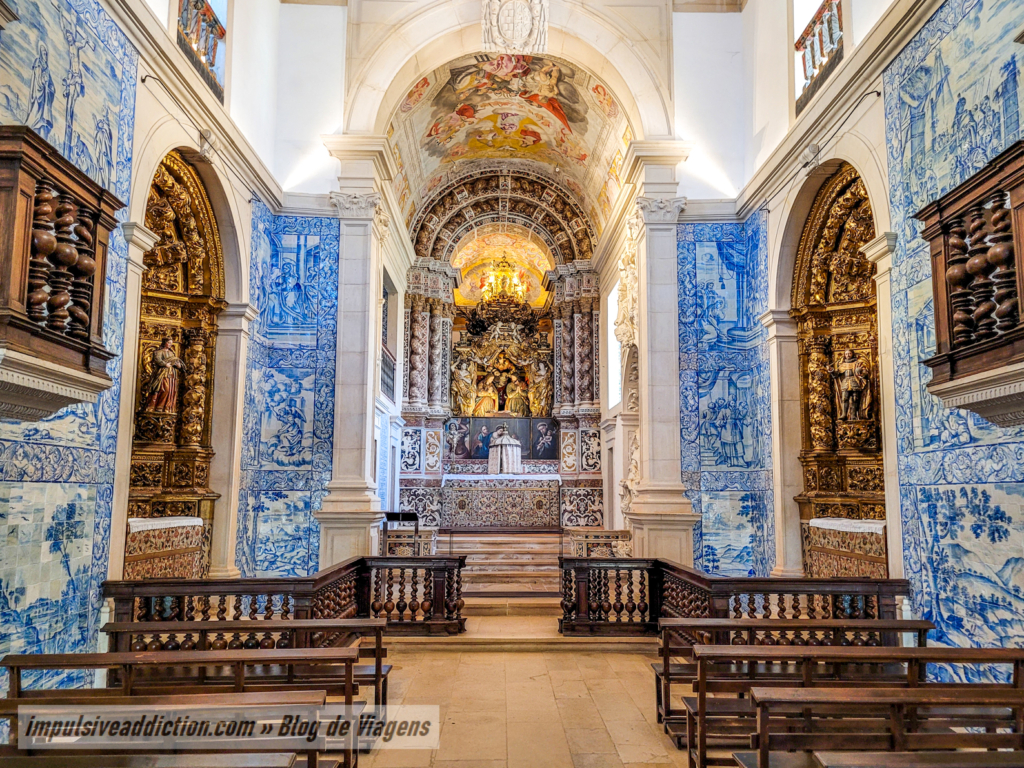
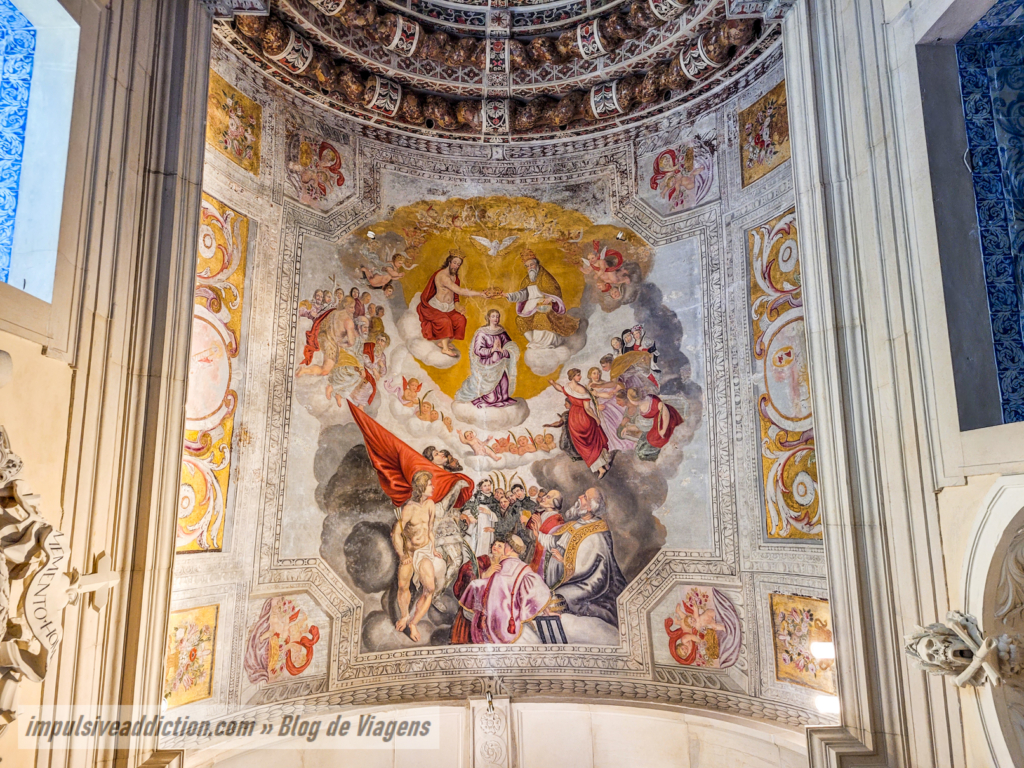
3. Maritime Museum of Ílhavo and Codfish Aquarium
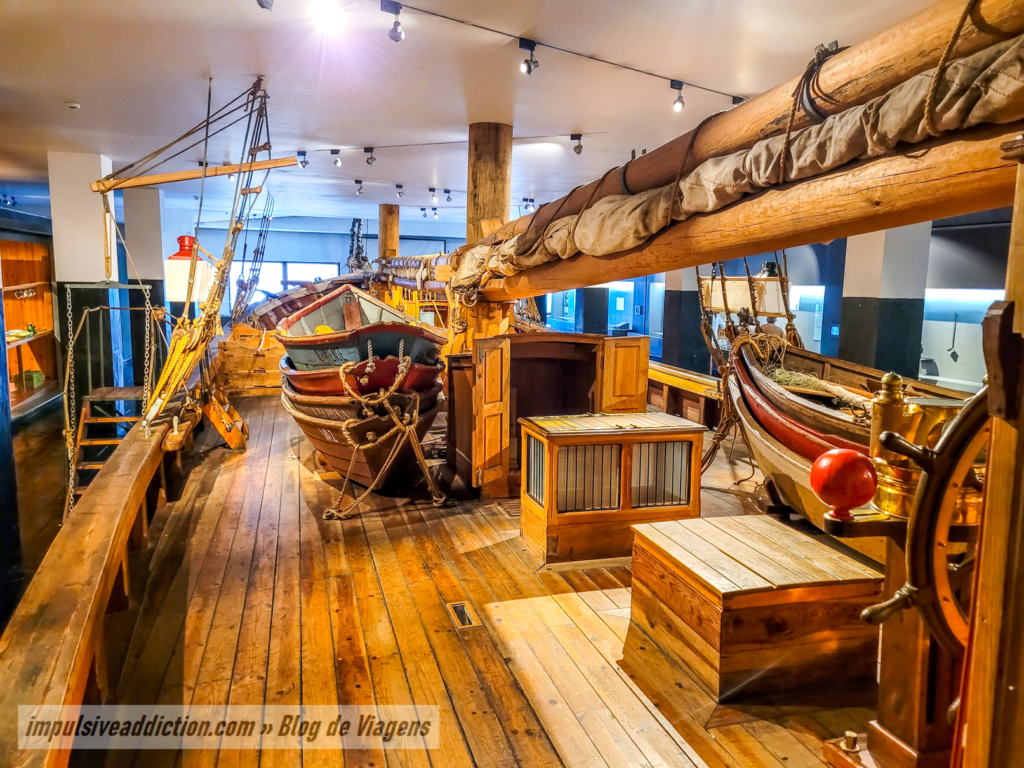
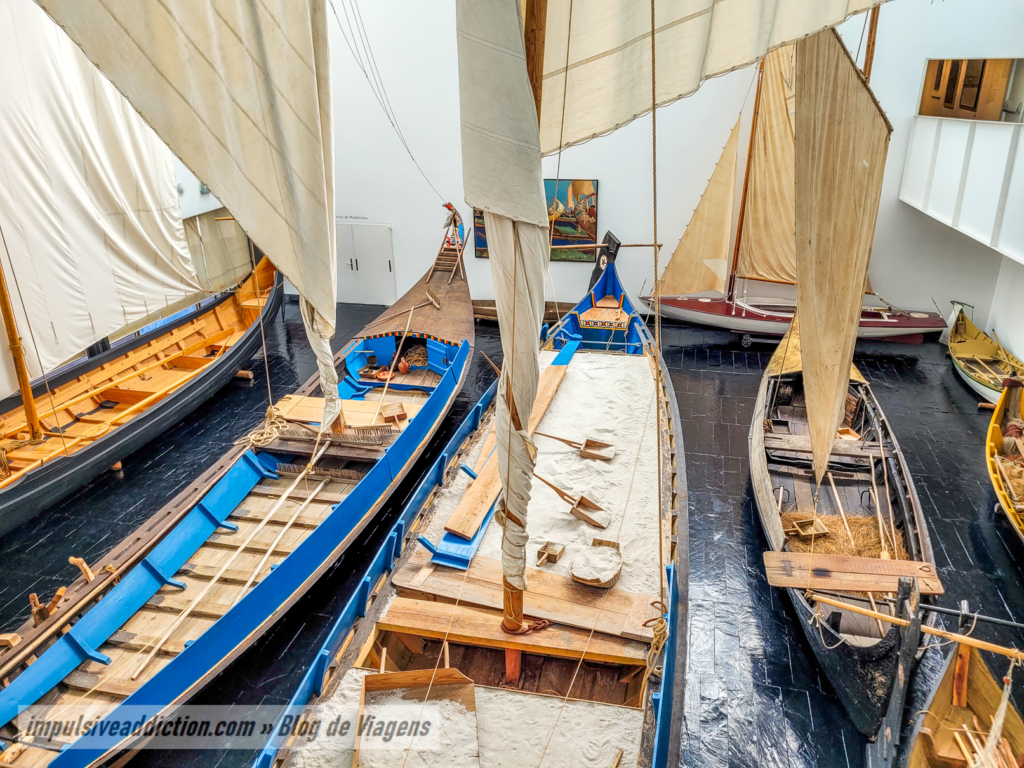
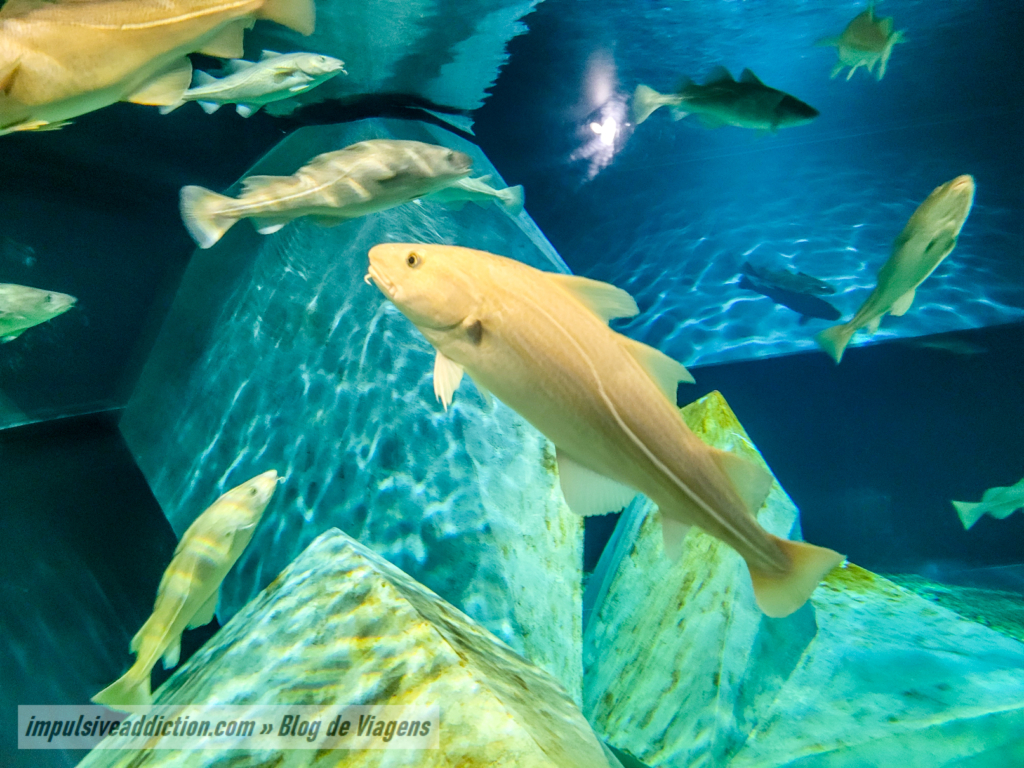
4. Ílhavo Maritime Religiosity Center
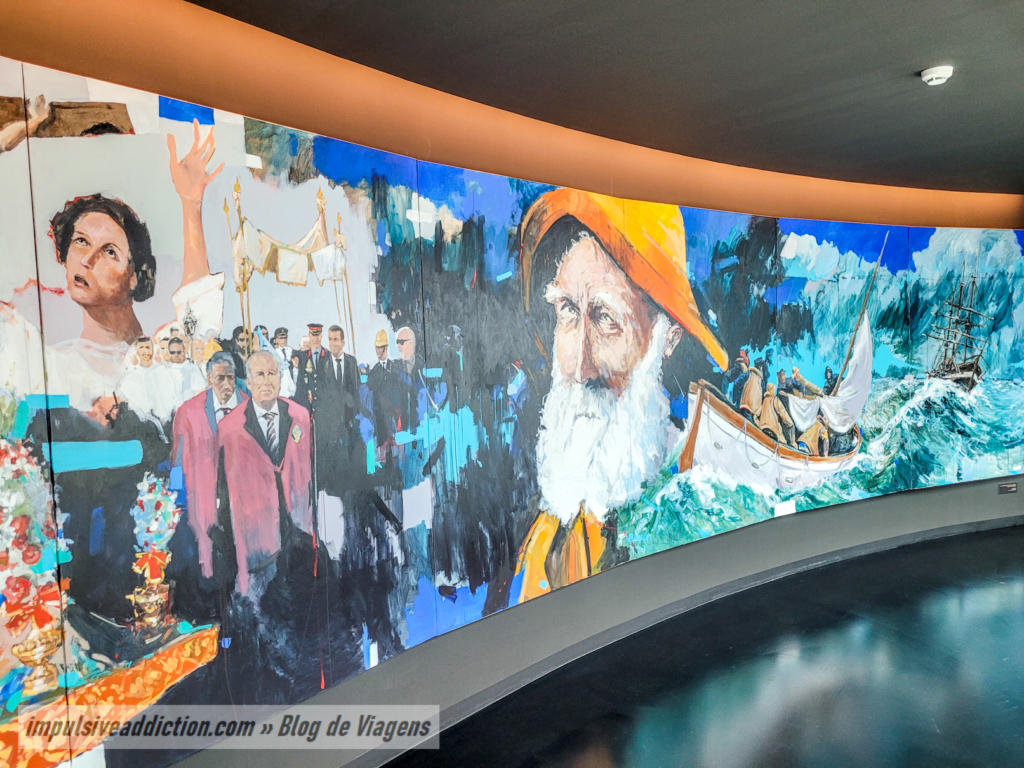
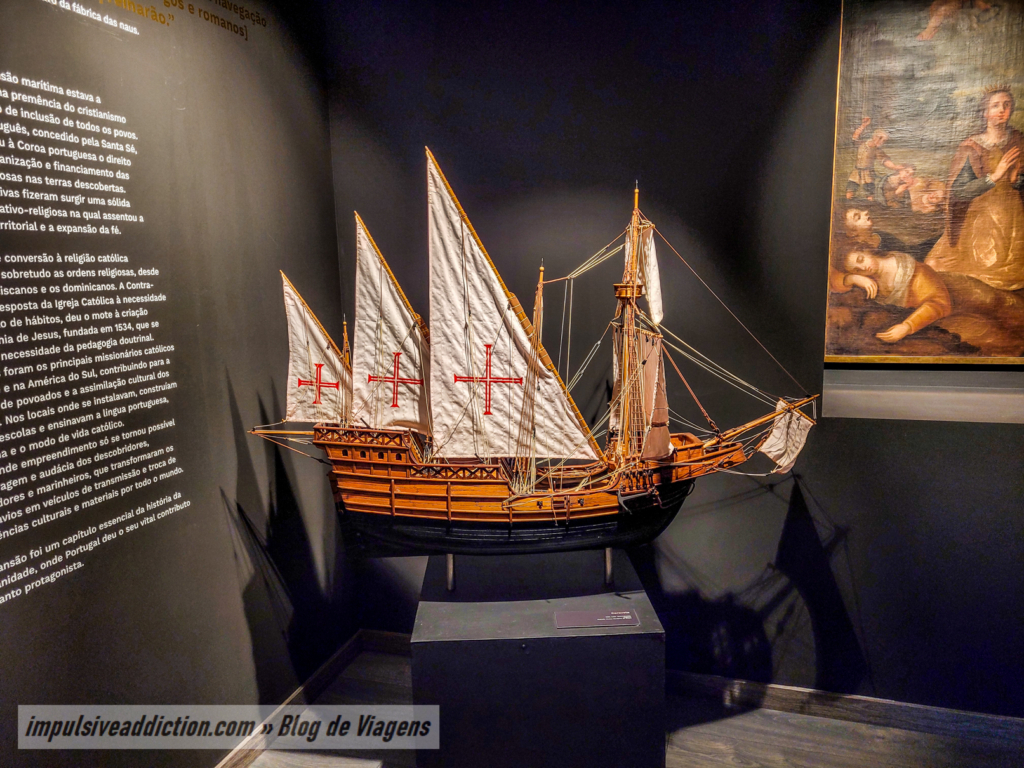
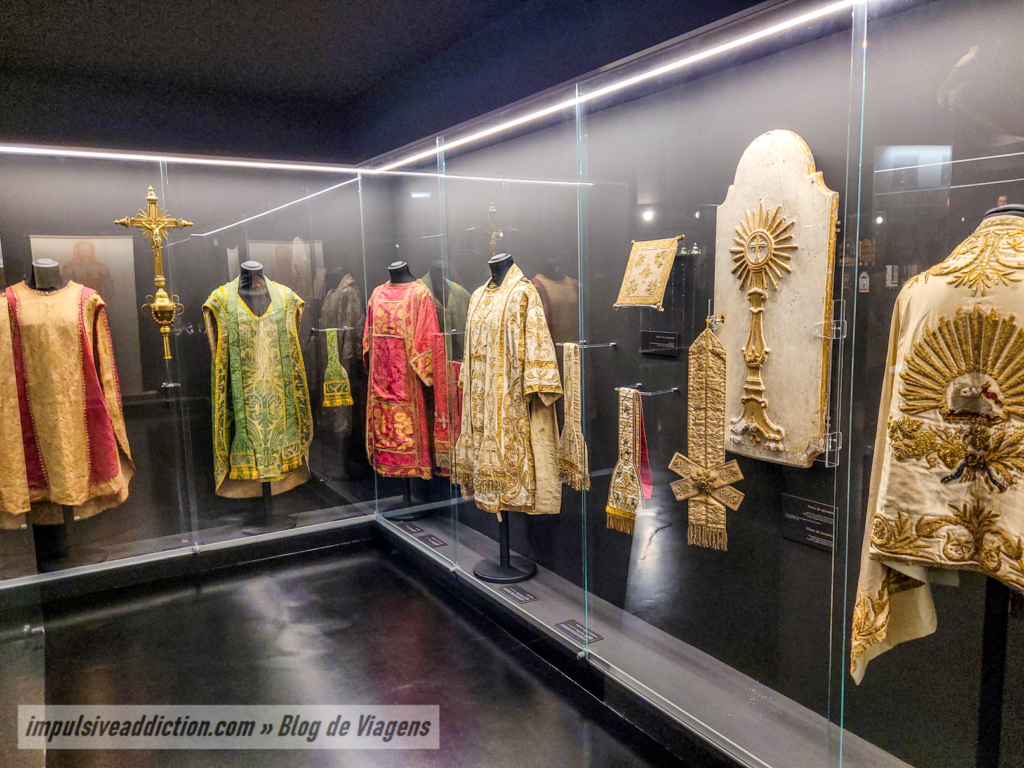
5. Museum Ship of Santo André
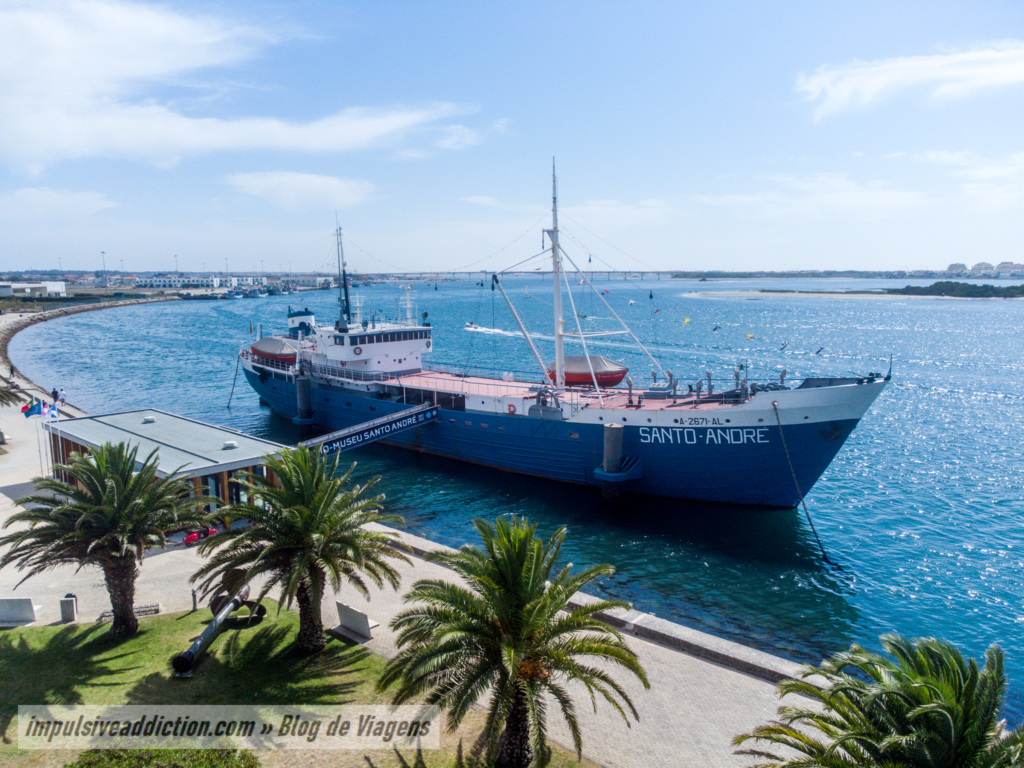
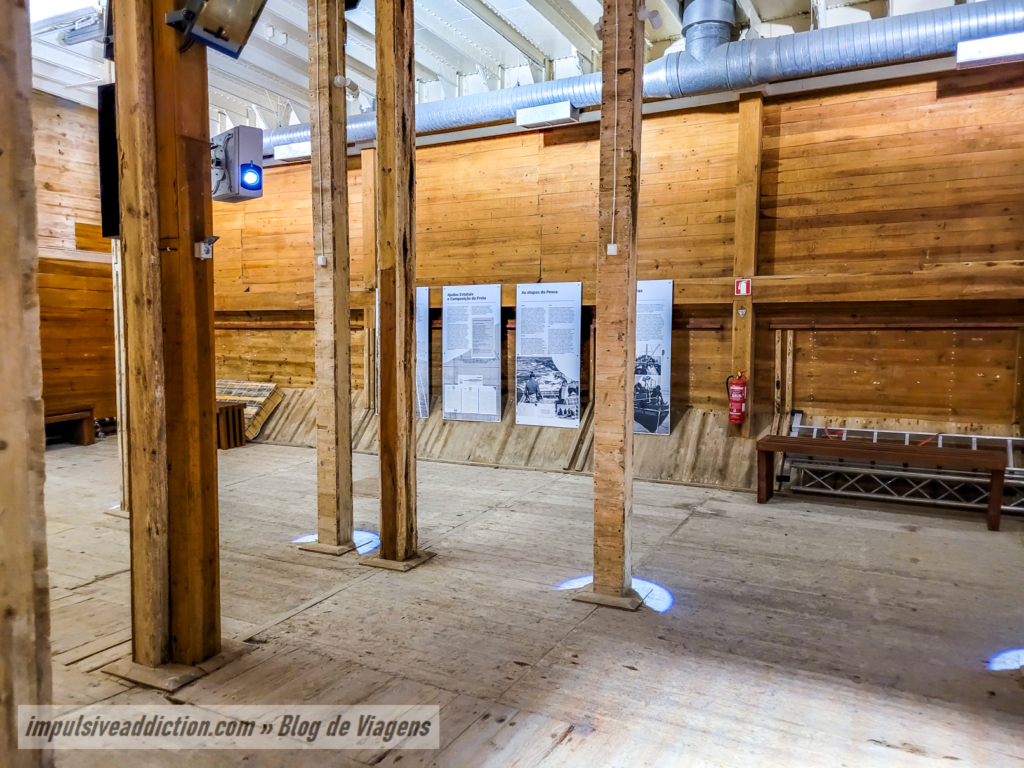
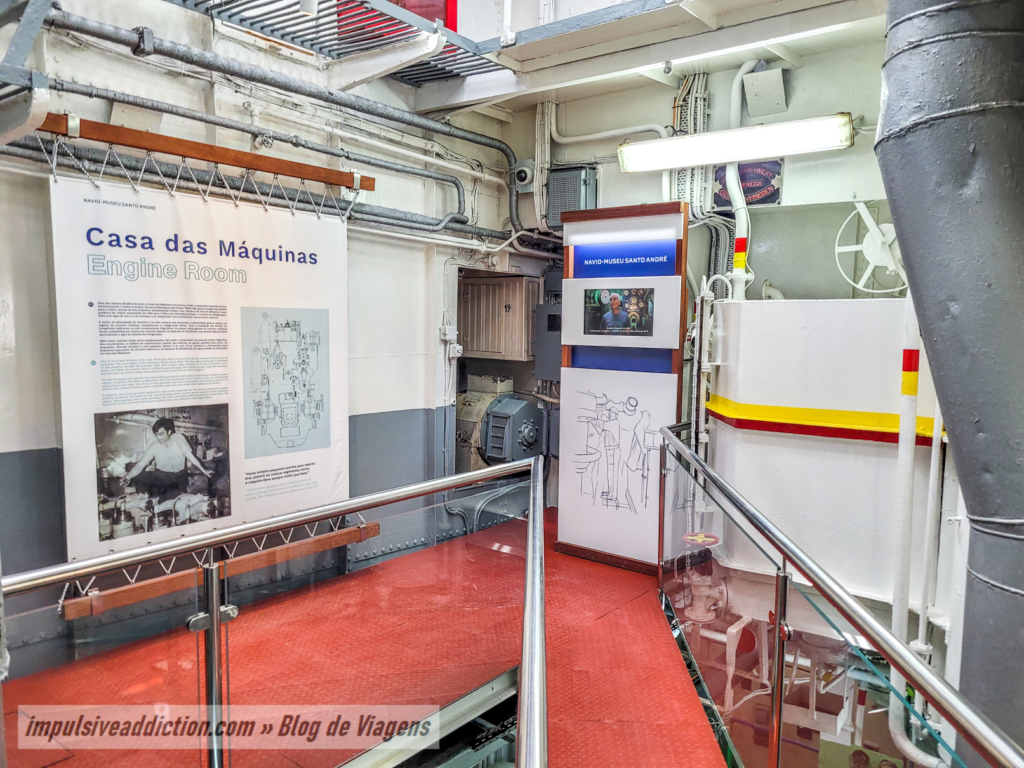
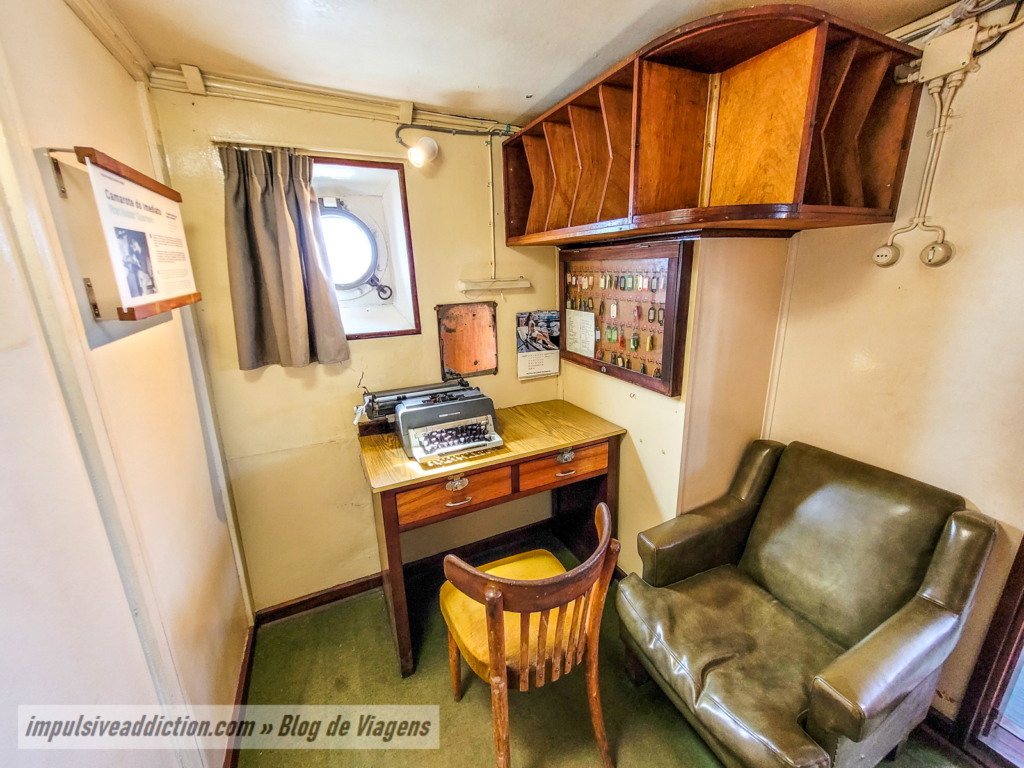
6. Cod Port of Aveiro
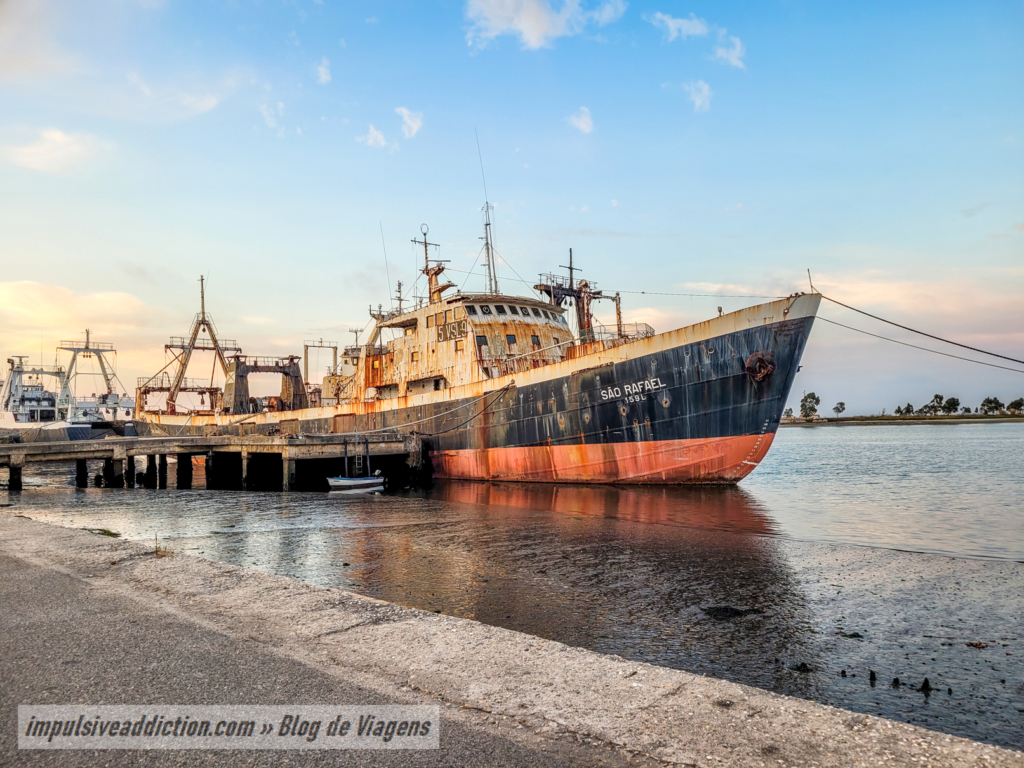
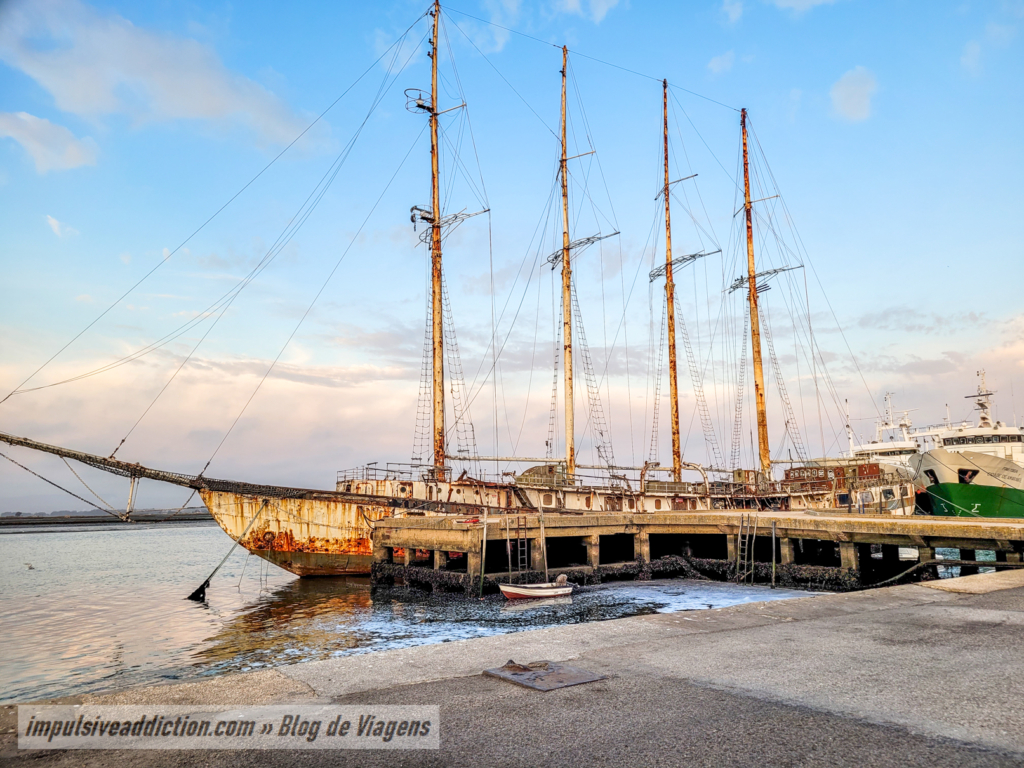
Cross Ria de Aveiro to São Jacinto
São Jacinto has the only beach on the coast of the municipality of Aveiro, since Costa Nova and Barra beaches are actually in the municipality of Ílhavo. Getting to São Jacinto, however, is much more complicated than getting to Costa Nova and Barra, as access by road requires a huge detour through Estarreja, Murtosa and Torreira.
To make everything easier, you have river transport in boats that allow you to cross from Barra to São Jacinto, also taking your car inside! This is ideal, and you can check conditions on Aveiro Bus website.
On São Jacinto side, be sure to admire its dunes and Nature Reserve, walking, for example, to the North Jetty of Barra de Aveiro. Then I recommend you to take the N327 road to Torreira, which offers very scenic views over Ria de Aveiro. From Torreira you can make a detour to Estarreja to visit its many pieces of urban art before returning to Aveiro.
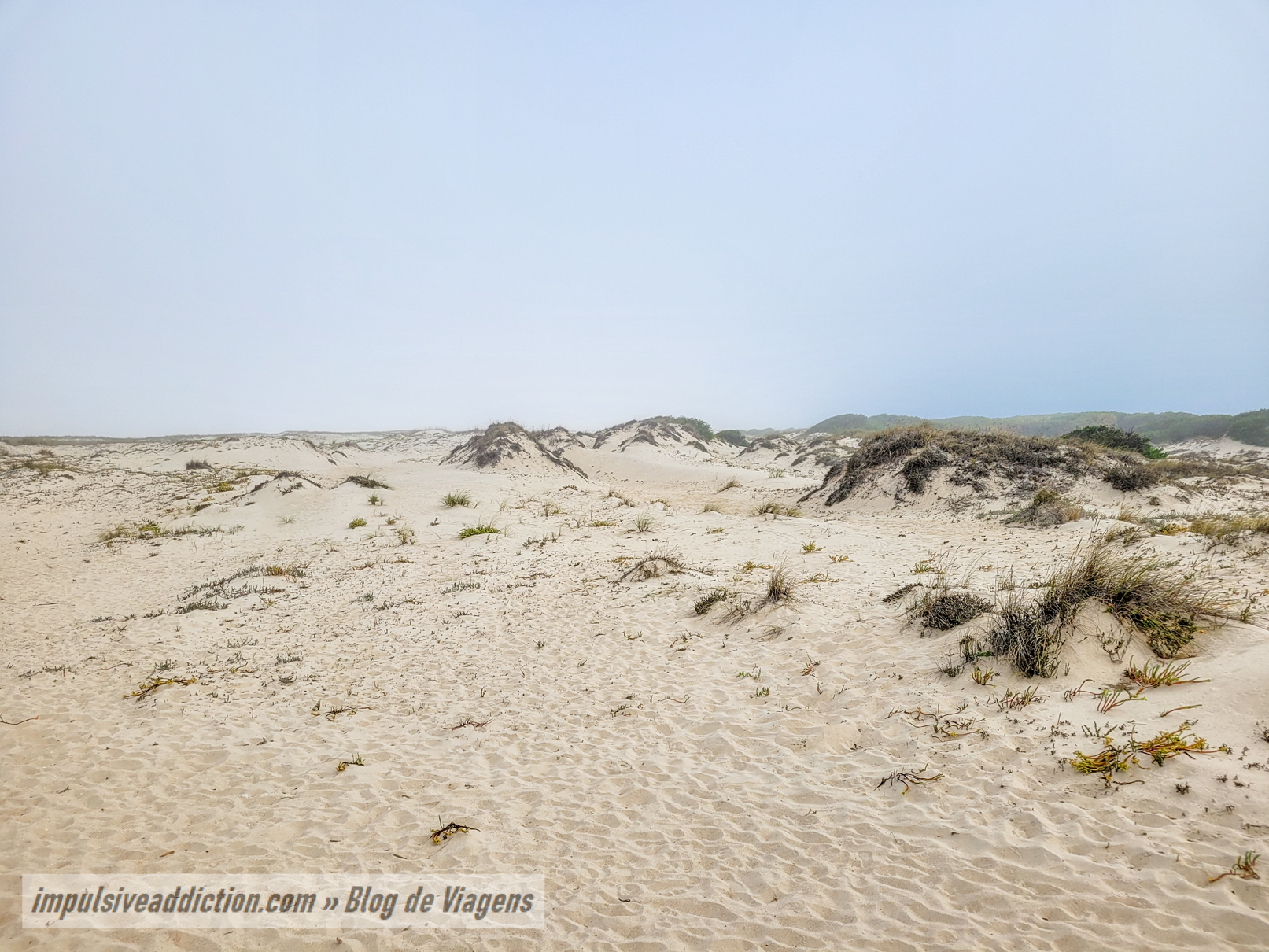
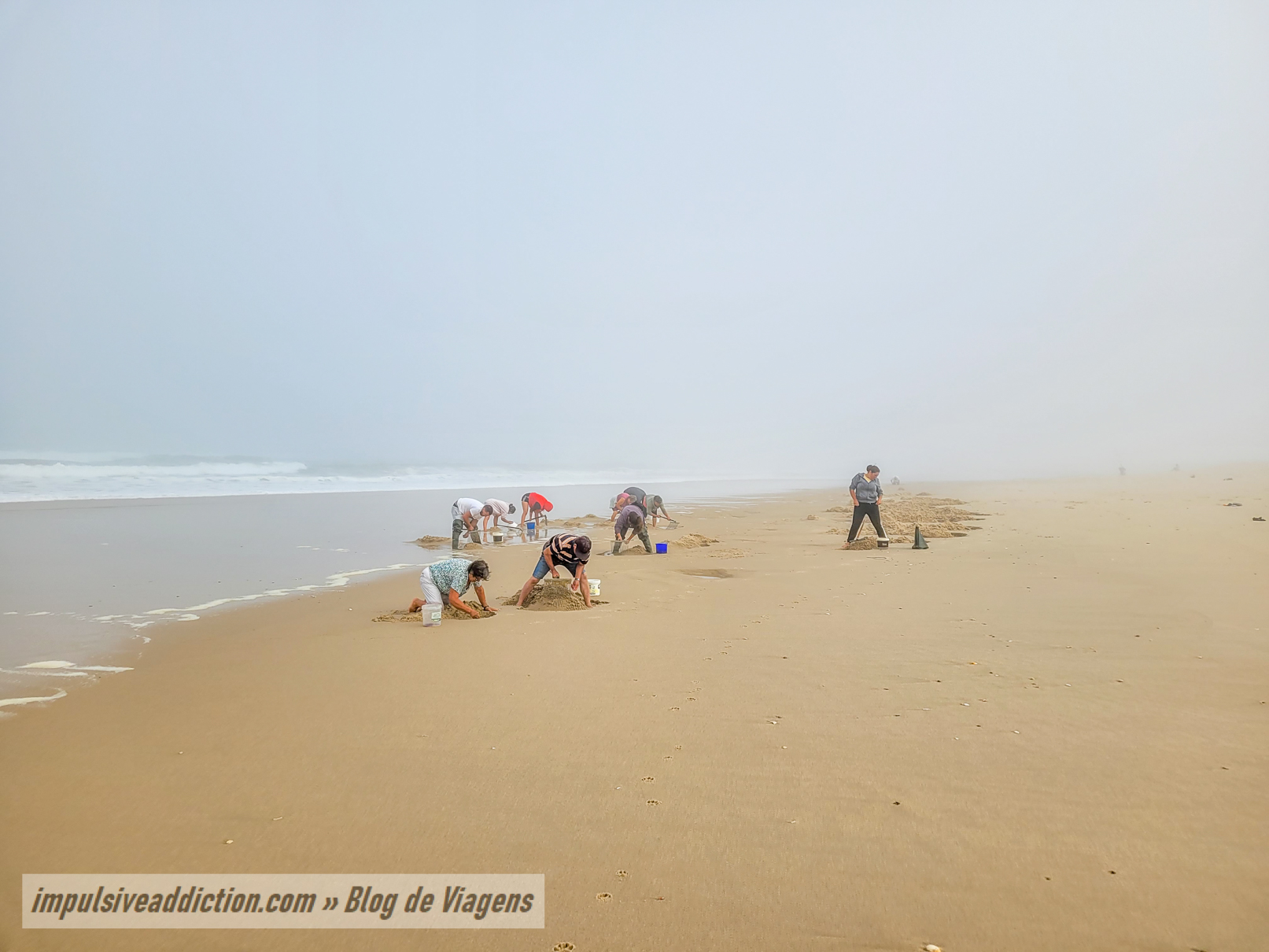
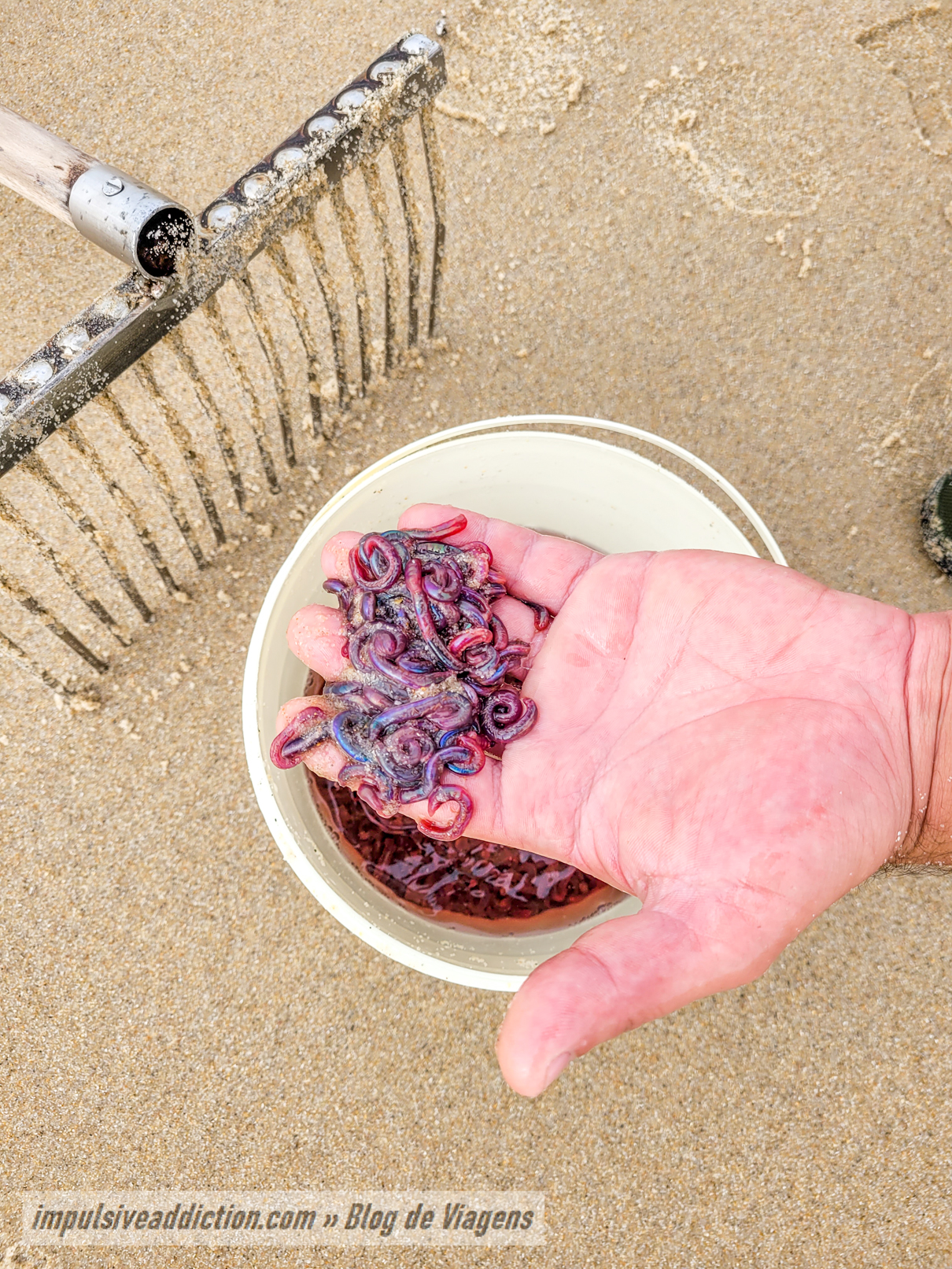
Optional Things to do in Aveiro
The following places are all in the city center of Aveiro and nearby surroundings. They are those places that I don’t consider essential in a city itinerary, and that’s why they are optional only for those who have more time to spend. I present them in no particular order.
1. University of Aveiro and Crasto Pedestrian Bridge
Impossible not to mention the University of Aveiro in this post, as it was here that I studied during my degree. 😉 Its history goes back to 1973, and today it has more than 15,000 students, according to official data.
I’m sure you’ll love visiting the University main avenue, where the rectory and some of its main departments are located. You will cross Crasto Pedestrian Bridge after, which in my student days served to reach a secondary university canteen. 😉 The landscape is very beautiful from this bridge, since underneath it is a special section of Ria de Aveiro.
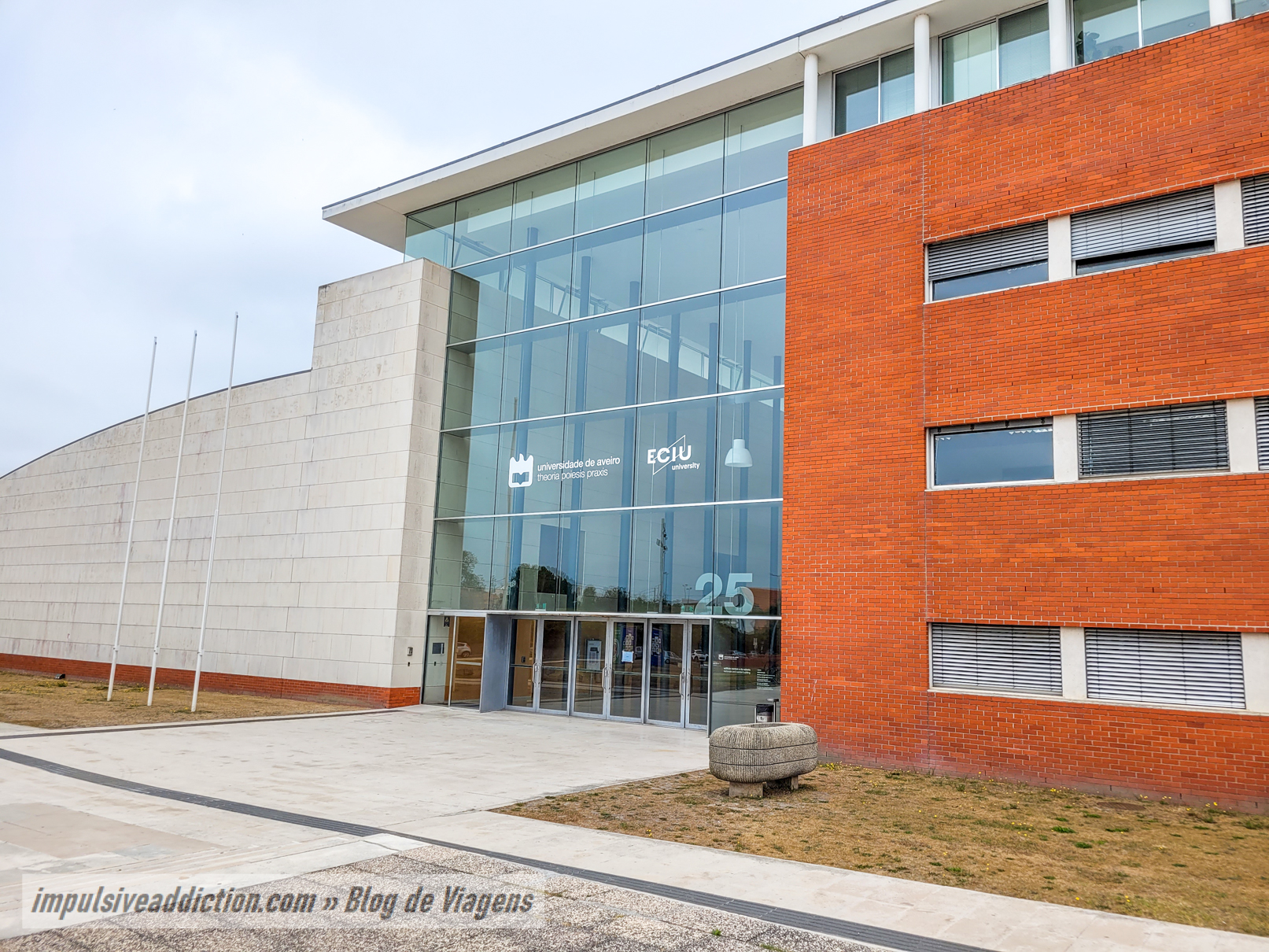
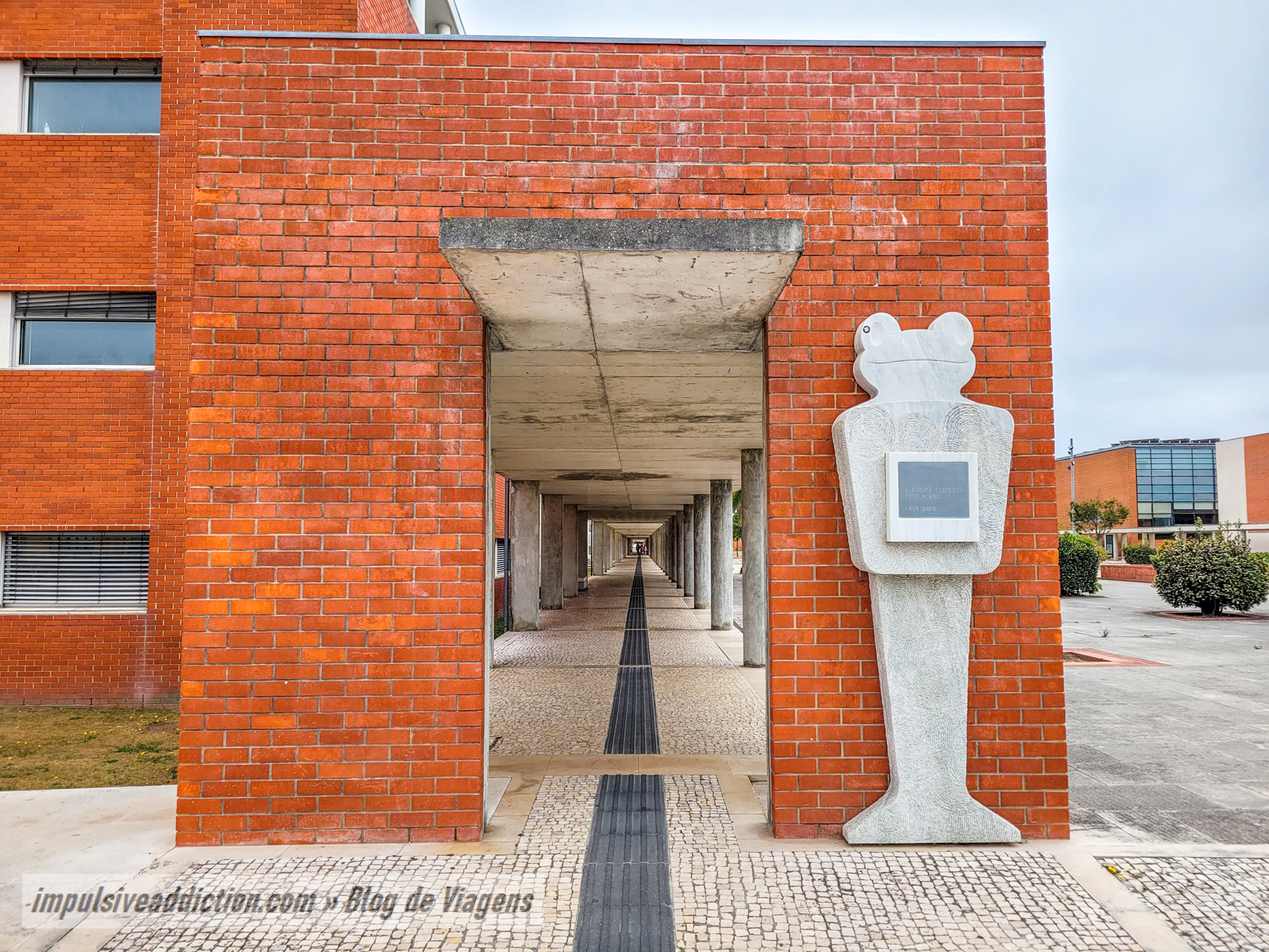
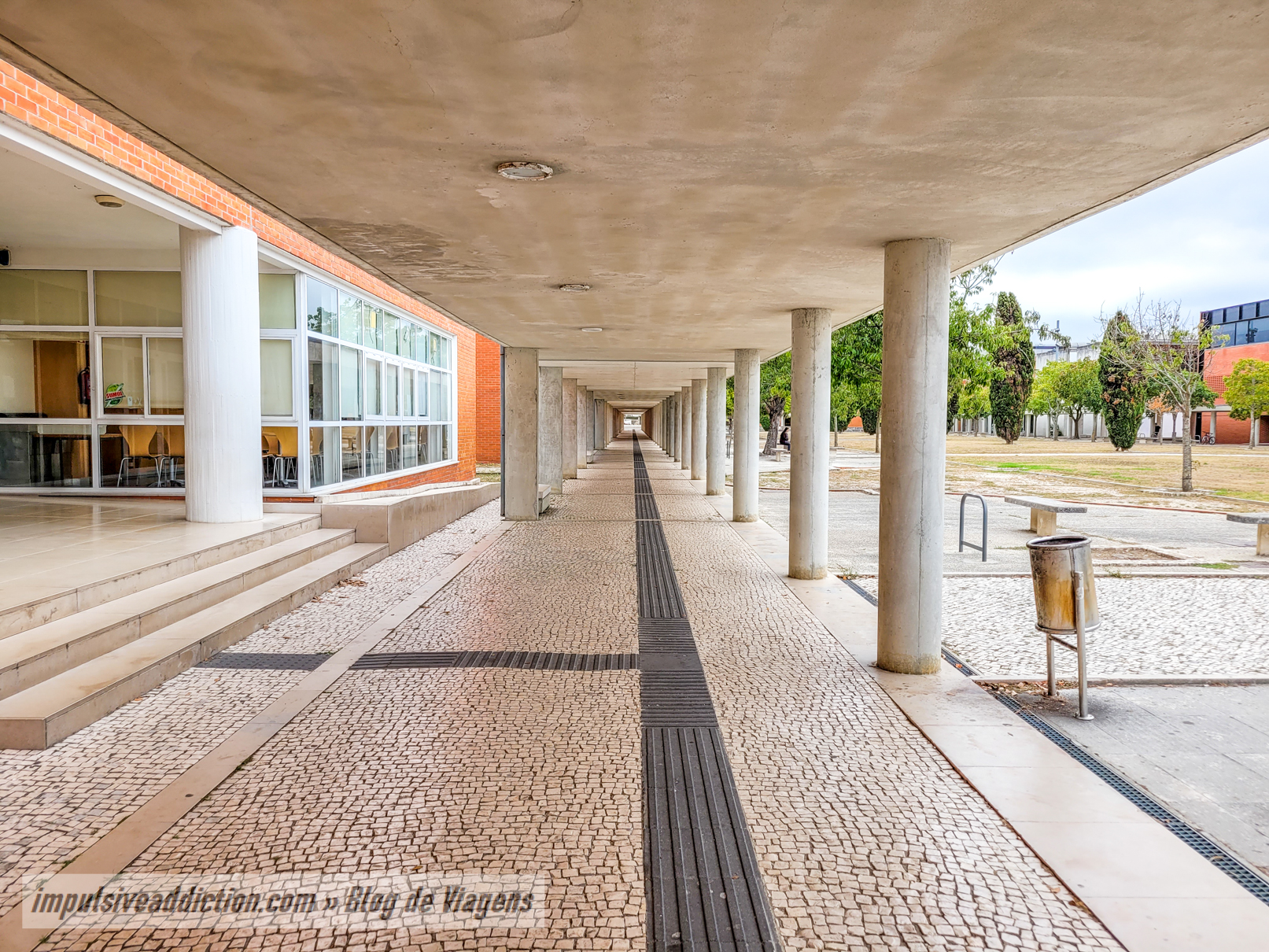
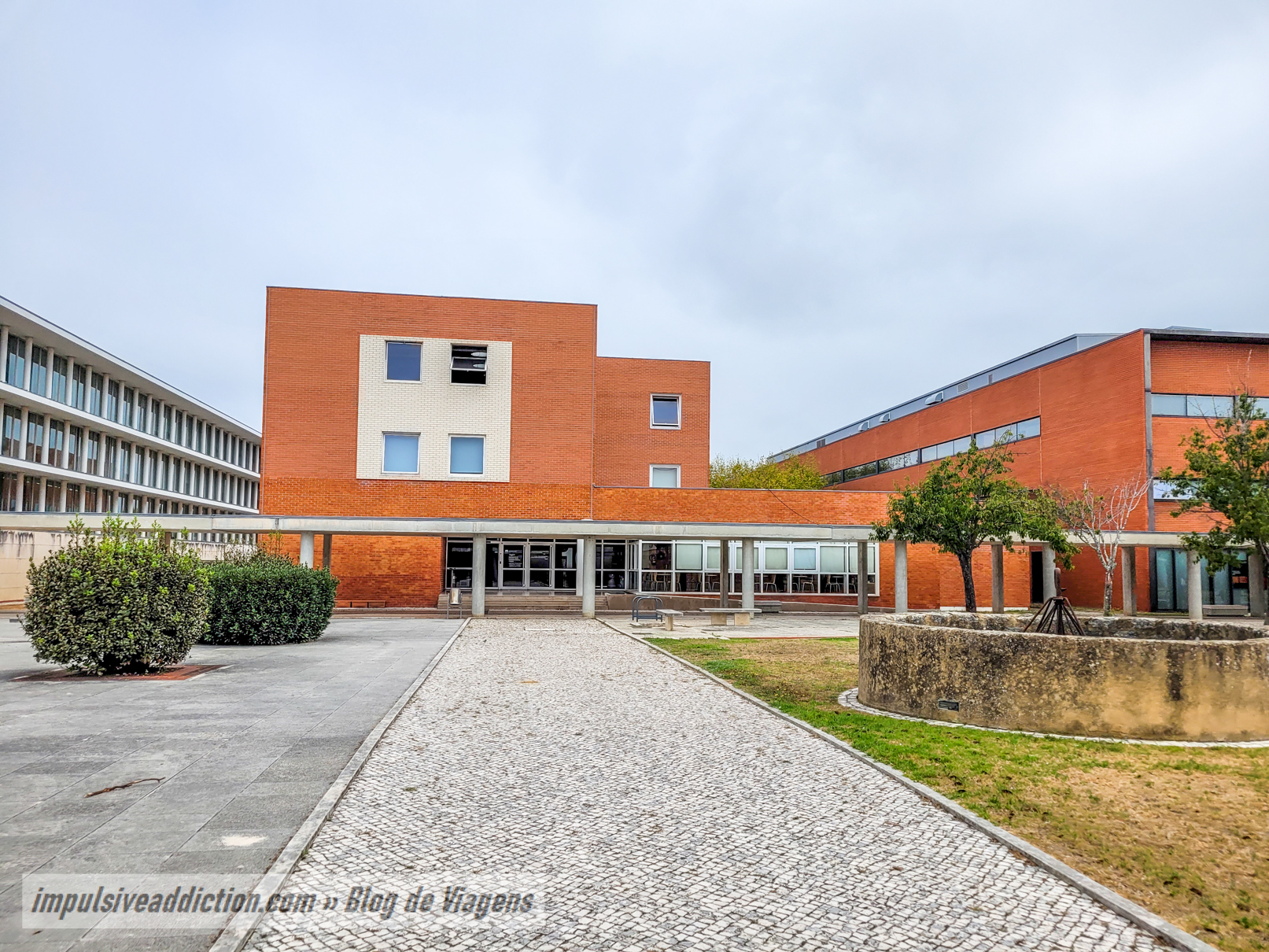
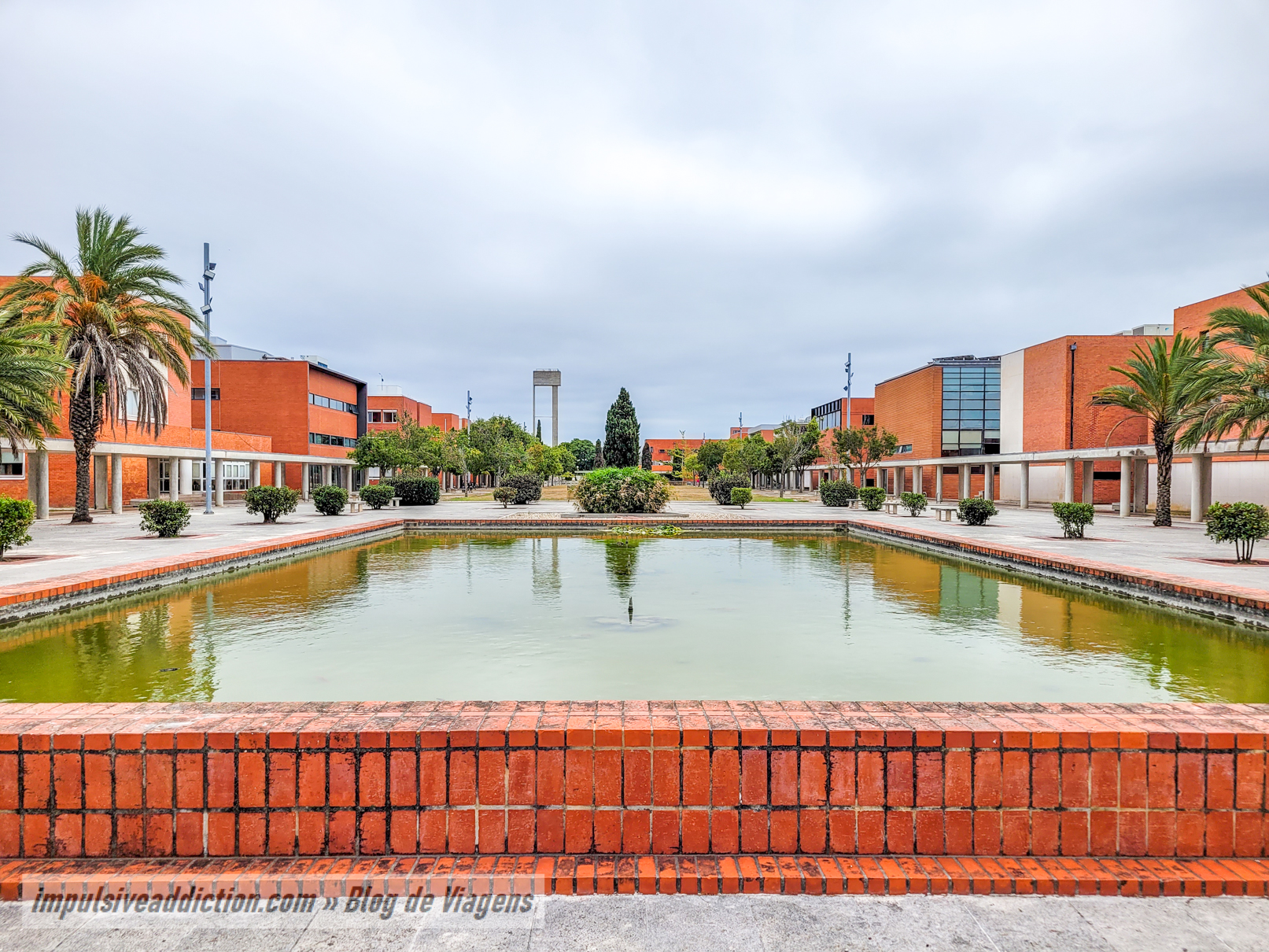
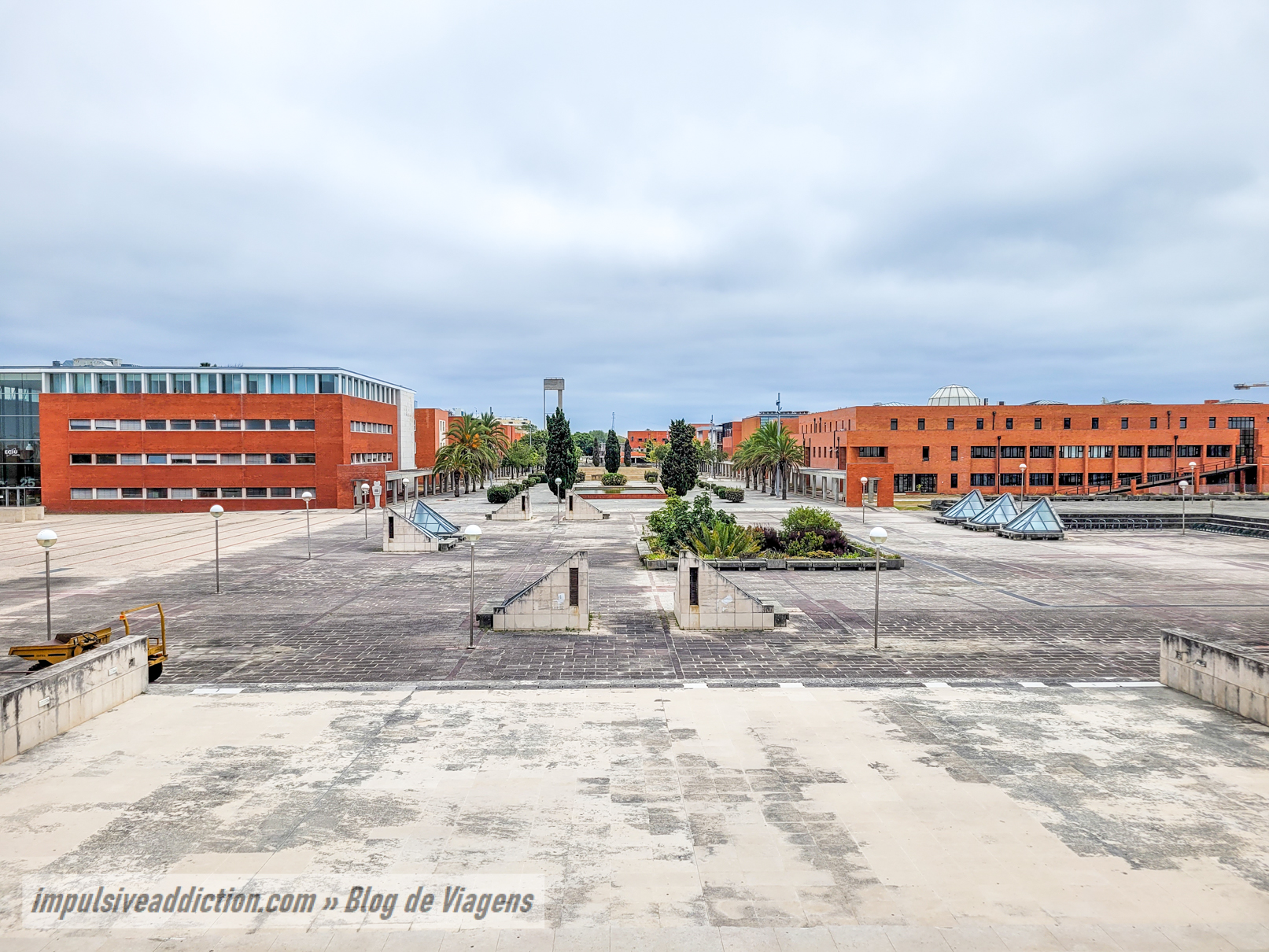
2. Salt flats of Santiago da Fonte and Marginal Avenue of the University
Check the Salt Flats of Santiago da Fonte, which by the way are also owned by the University of Aveiro. How about taking a walk around there, trying to find a good spot for birdwatching?
I leave you with a tip to walk along Rua da Pega to your next destination, also known as the Marginal Avenue of the University. That’s where I lived during my first two years studying in Aveiro, and I really enjoyed it! 😉
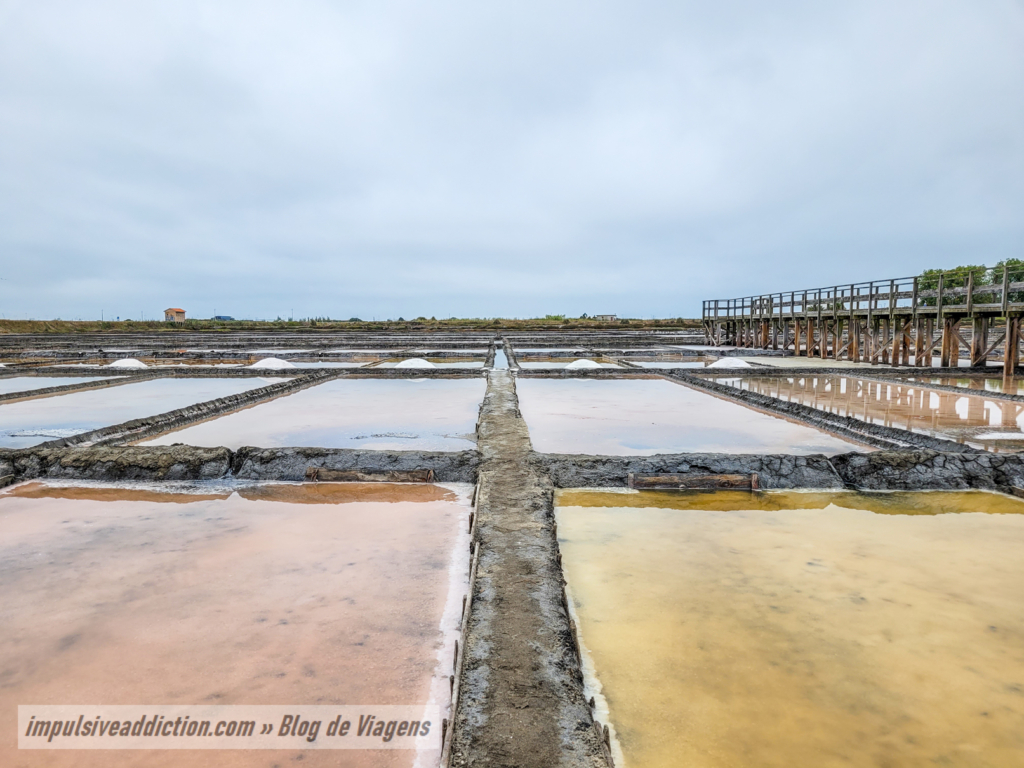
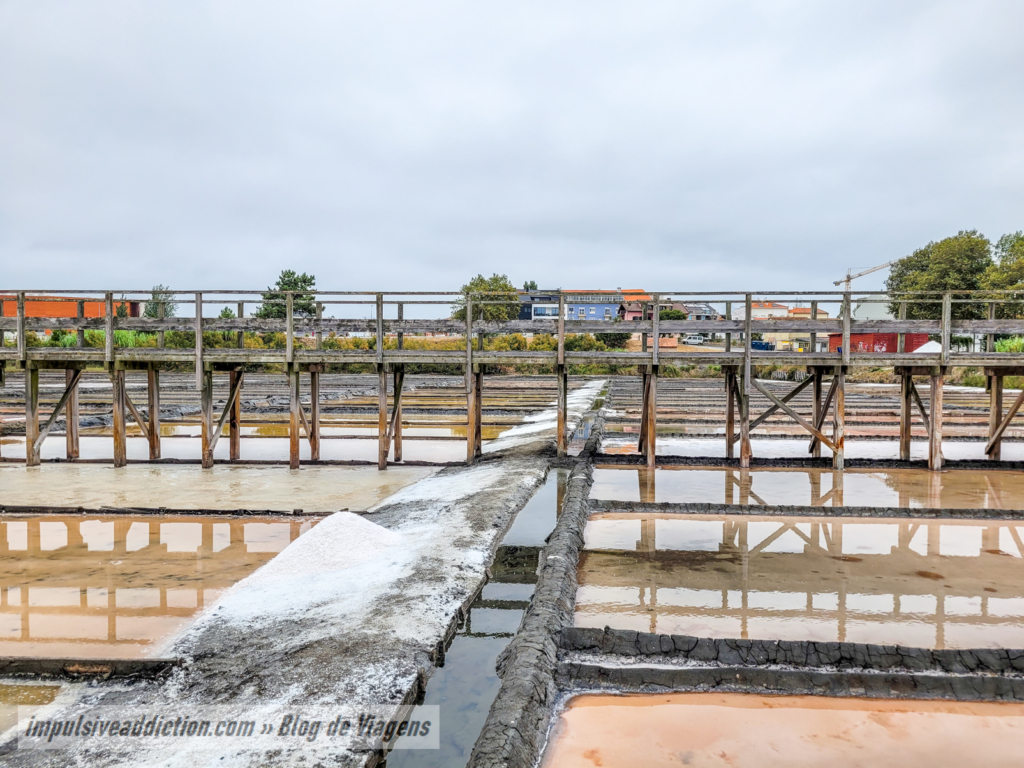
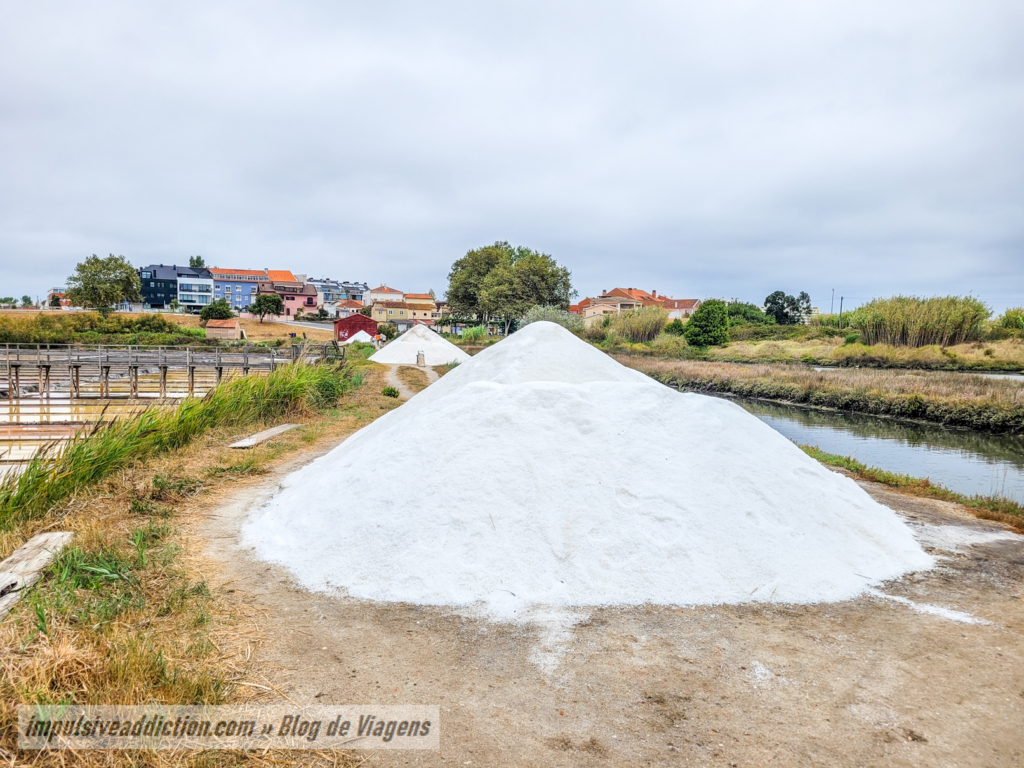
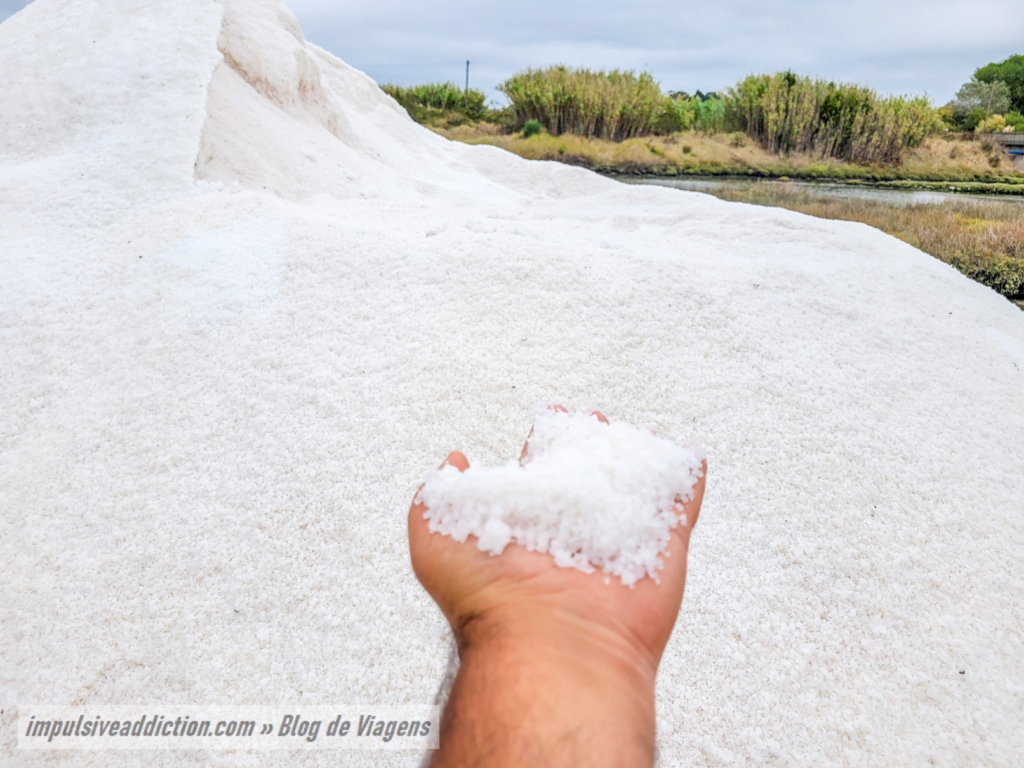
3. Alboi Garden and Chapel of the Holy Martyrs
Alboi Garden could almost be considered as a continuation of the City Park of Aveiro, due to its proximity. It is a small square in the center of a housing complex in the center of Aveiro, which contains a playground and even a monument to Music.
Be sure to visit the Chapel of the Holy Martyrs and the Science Center next to it, also close to the city park. 😉
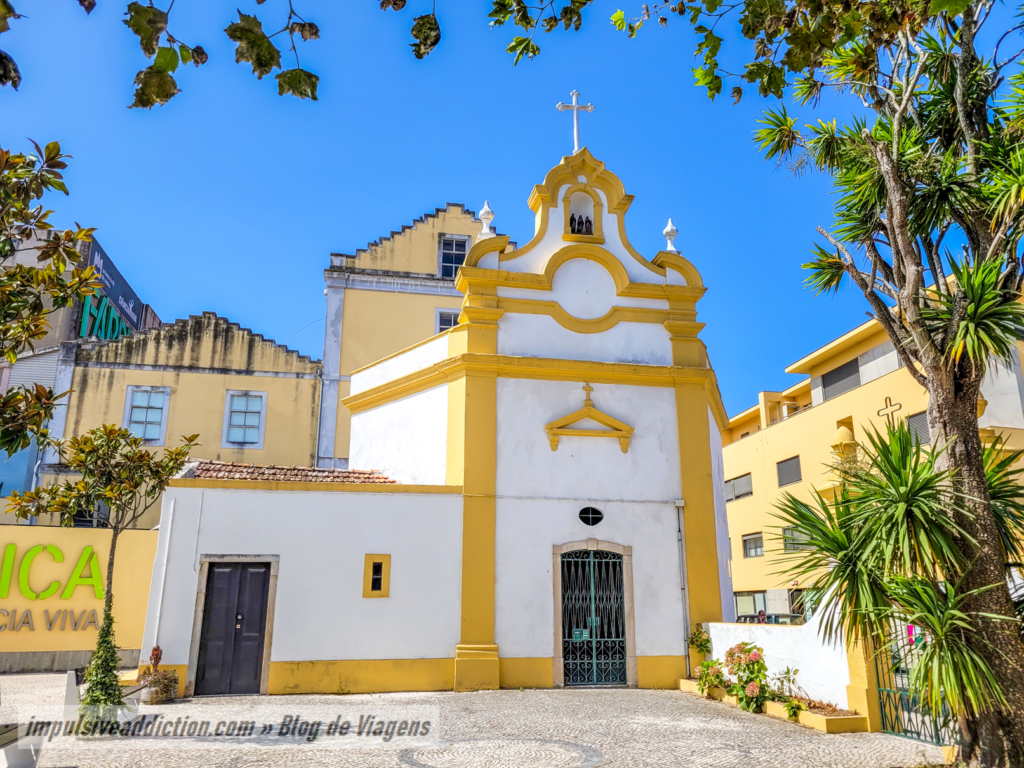
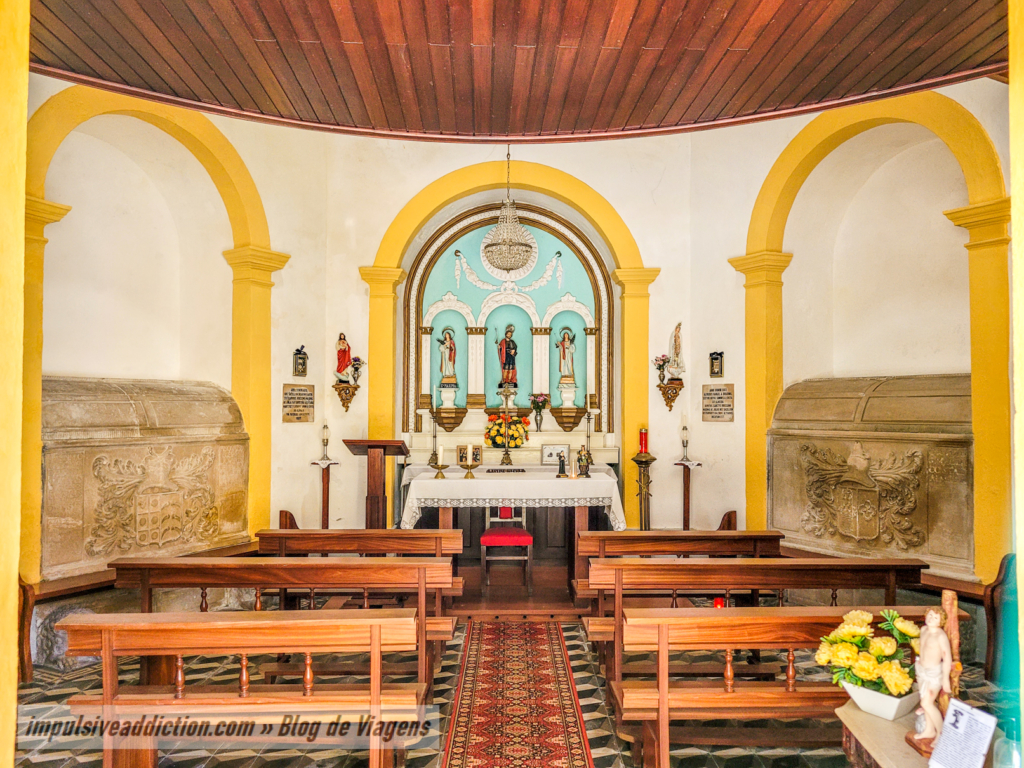
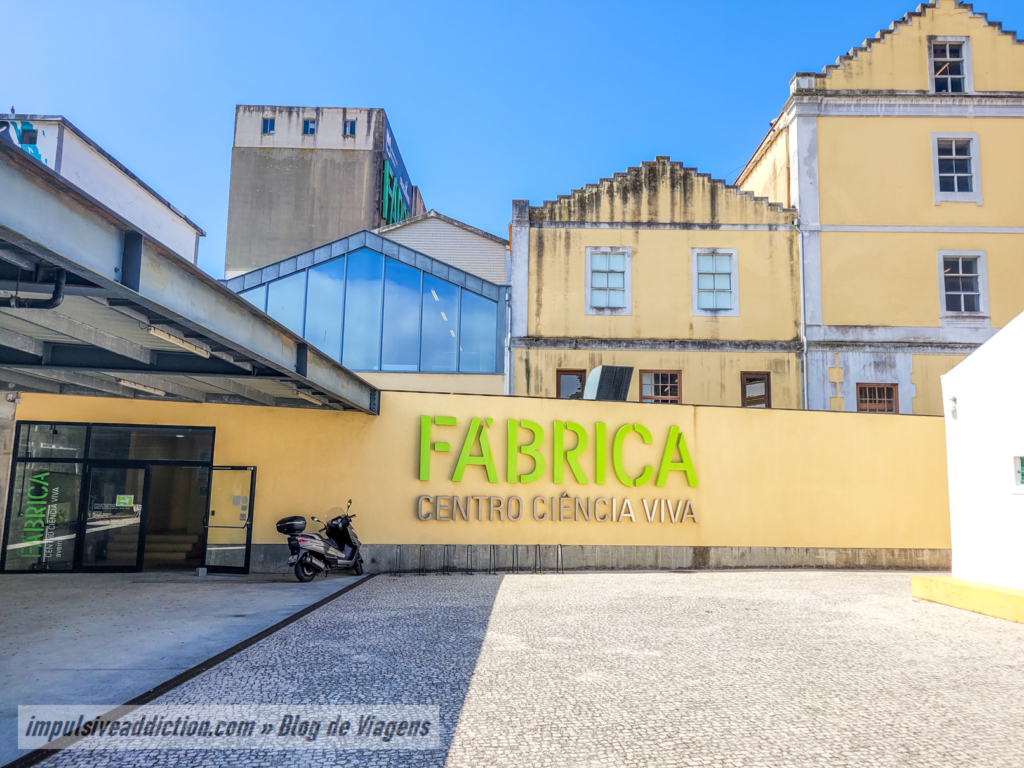
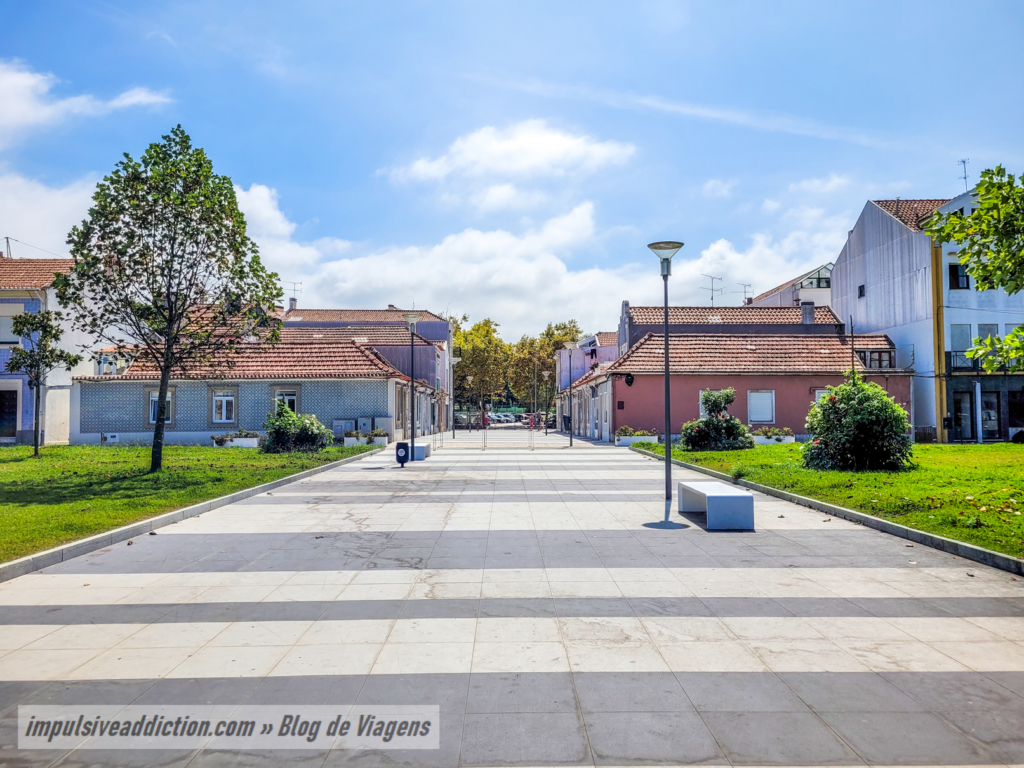
4. São Roque Canal and Valentine’s Bridge
Next is São Roque Canal, which you’ve already visited by boat, if you opted for the cruise I recommended above for the essentials of the city center. On the canal stands out the Bridge of Carcavelos, also known as the Valentine’s Bridge, one of the oldest and most emblematic of the city of Aveiro, built in 1953.
Don’t forget the circular Bridge of Botirões, Lavadouros bridge and the Chapel of Nossa Senhora das Febres.
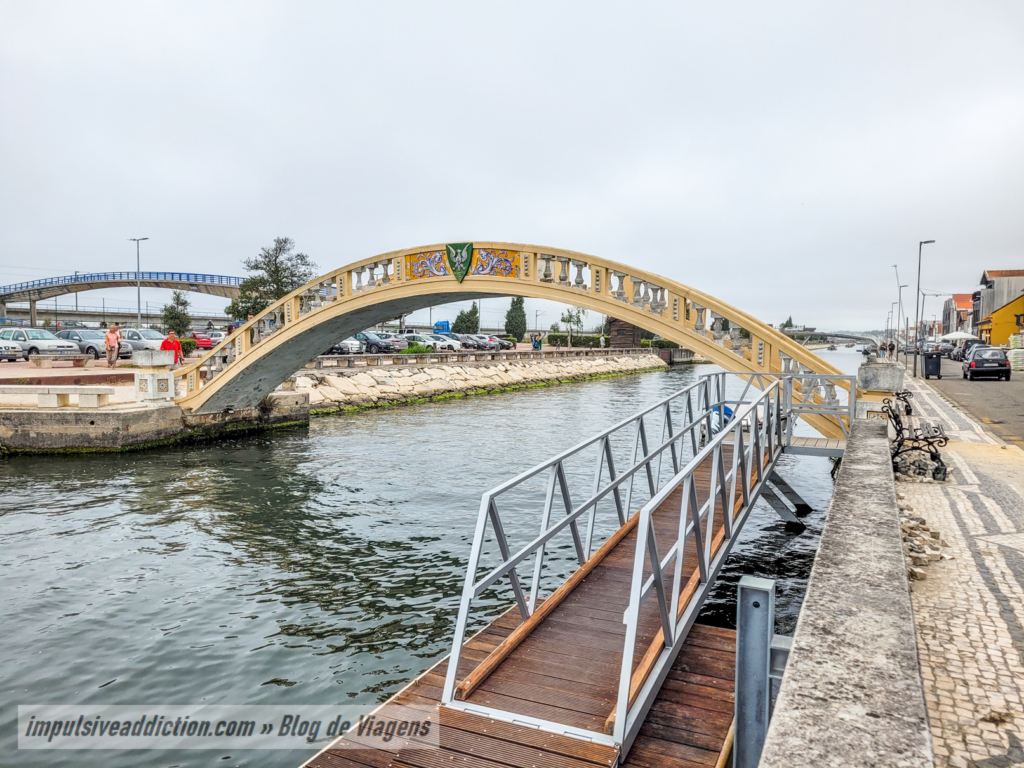
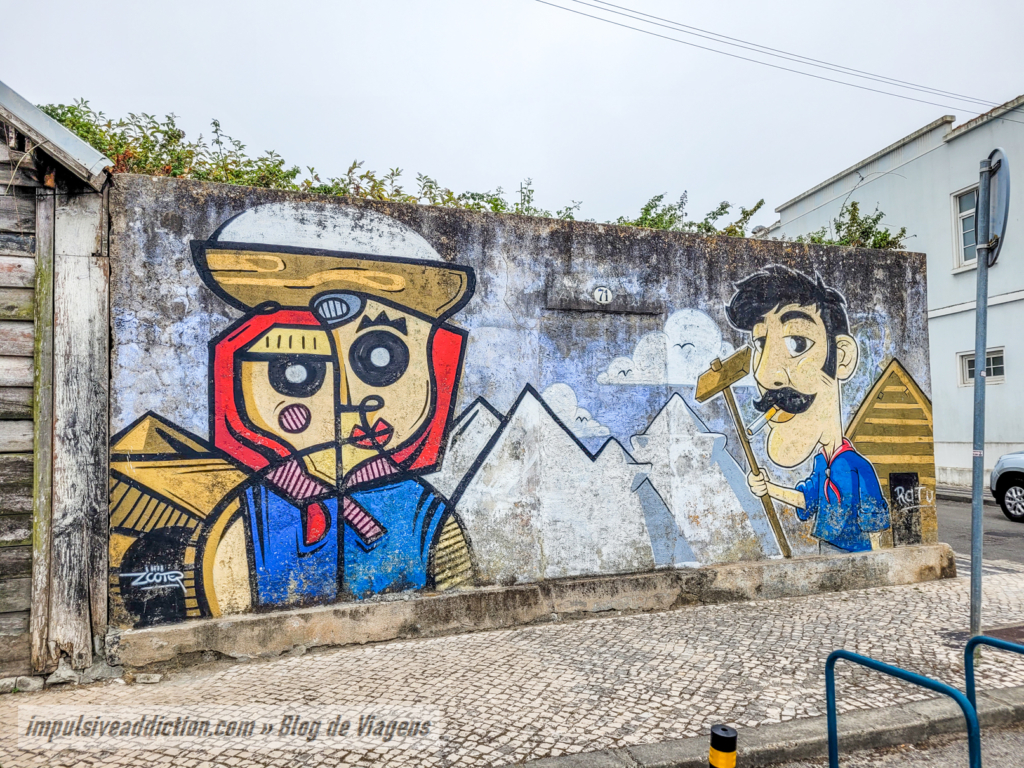
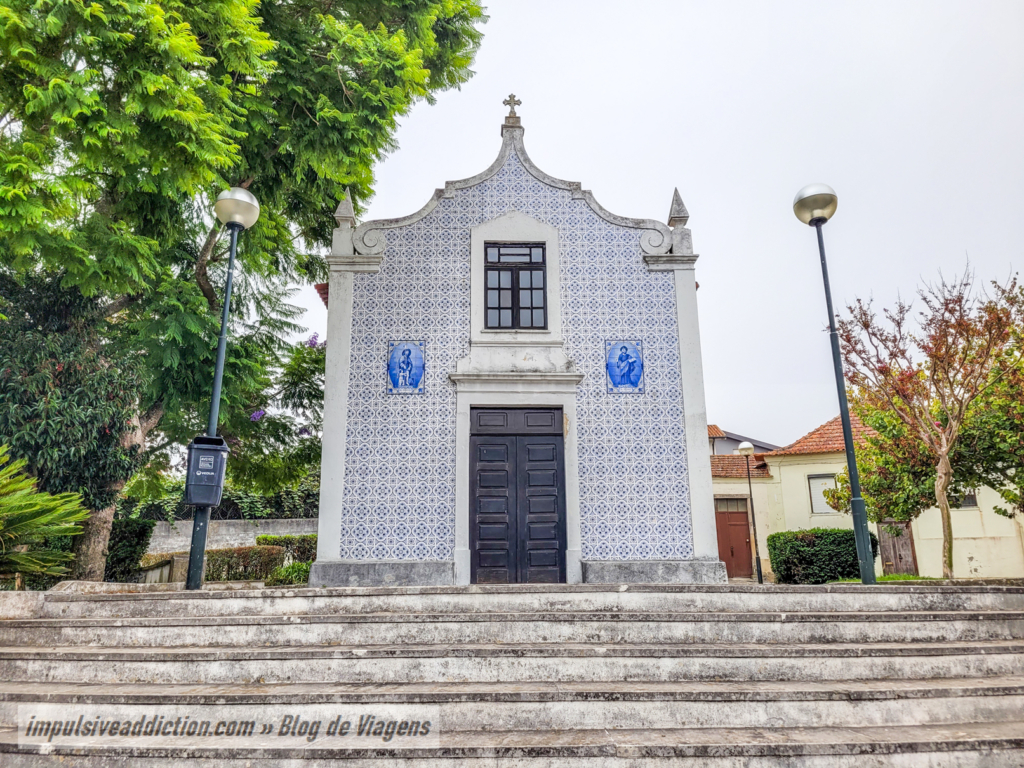
5. Chapel of São Gonçalinho
The Chapel of São Gonçalinho is dedicated to São Gonçalo de Amarante, and dates back to the 18th century, with its hexagonal shape standing out.
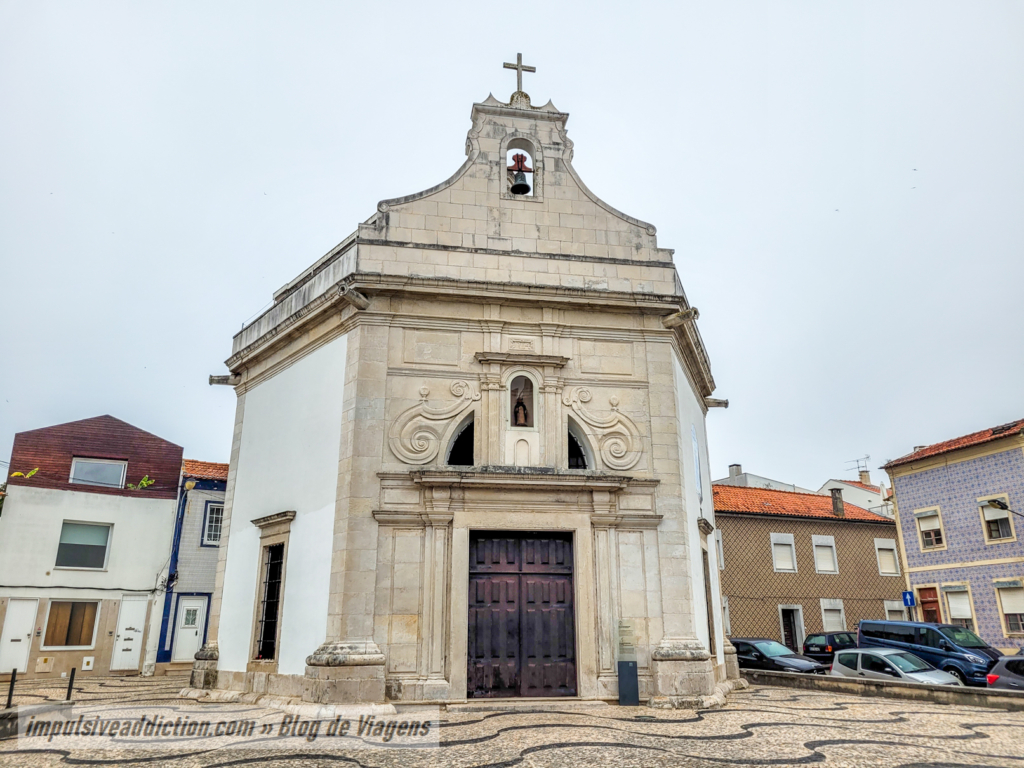
6. Church of Nossa Senhora da Apresentação
The Church of Nossa Senhora da Apresentação, in turn, is older, from the beginning of the 17th century. The tiles on the façade, and the monument in honor of São João Evangelista, found in the churchyard, stand out.
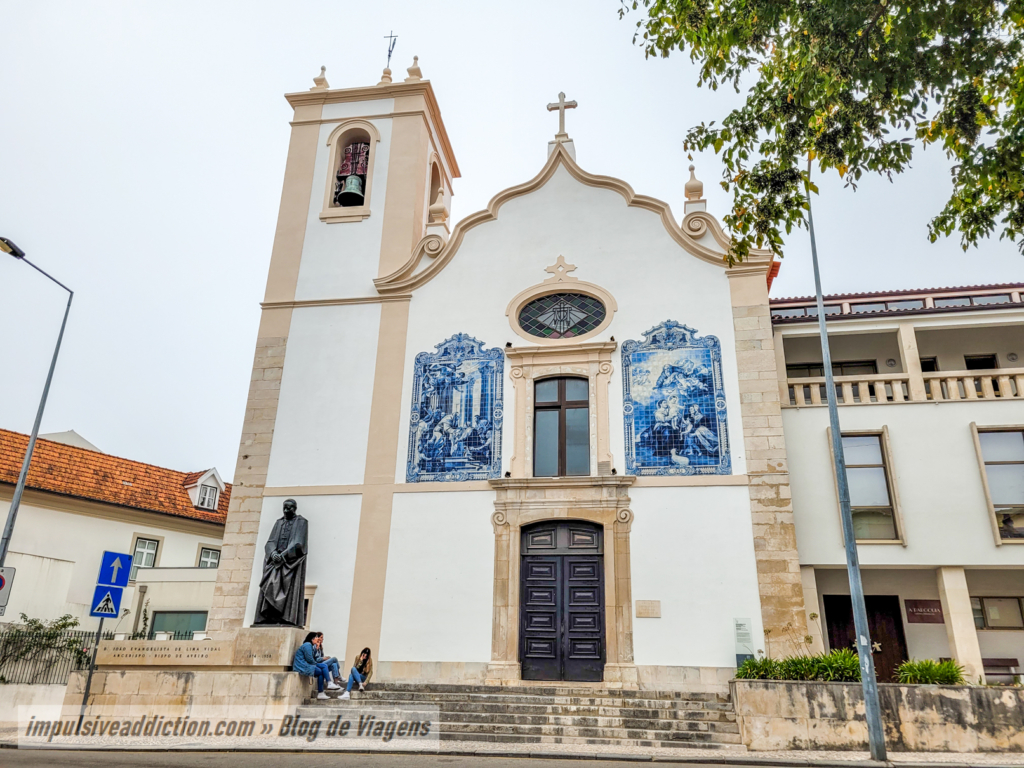
7. Carmo Convent Church
Another optional church will be the one at Carmo Convent, of Carmelite Friars.
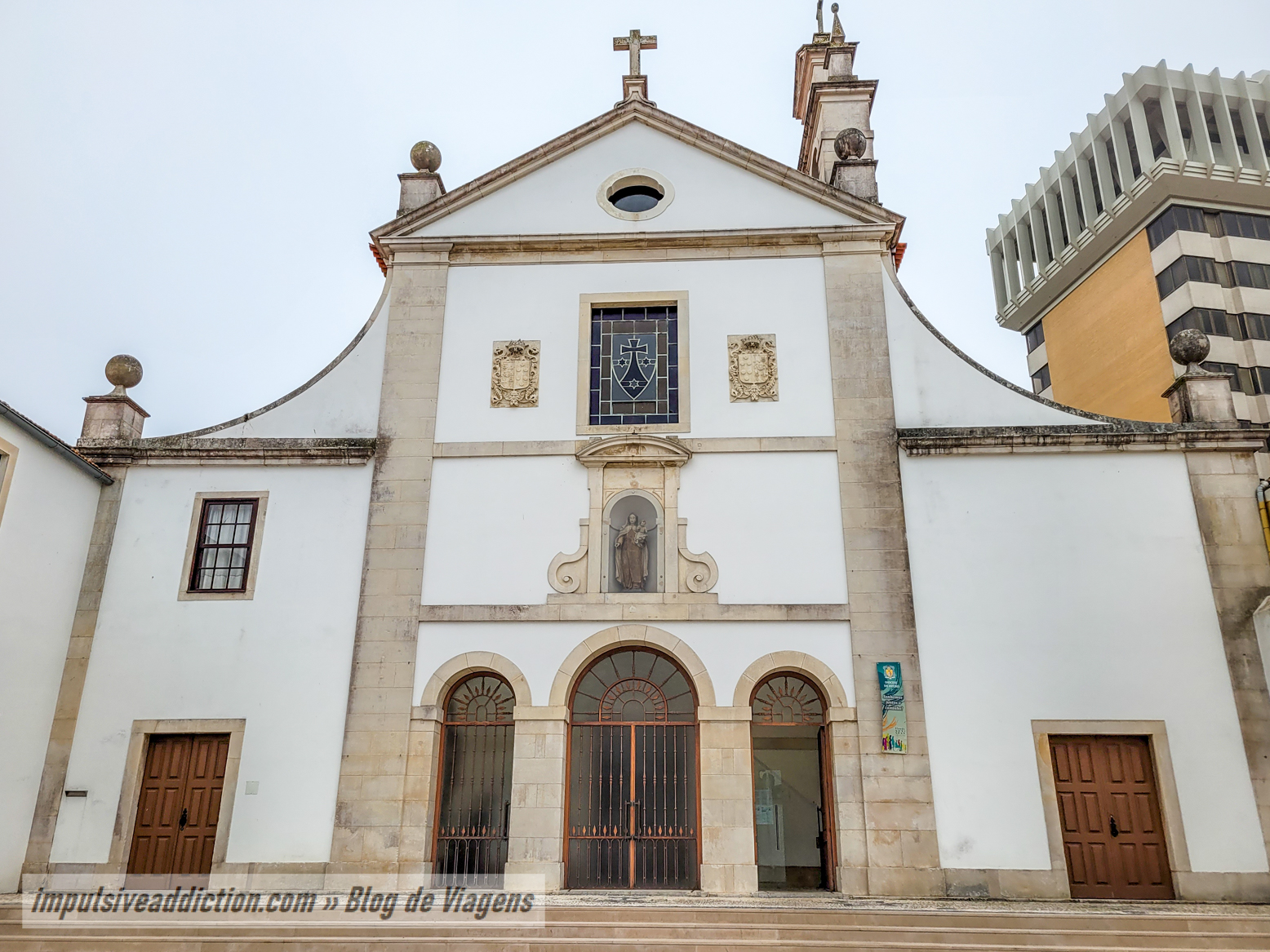
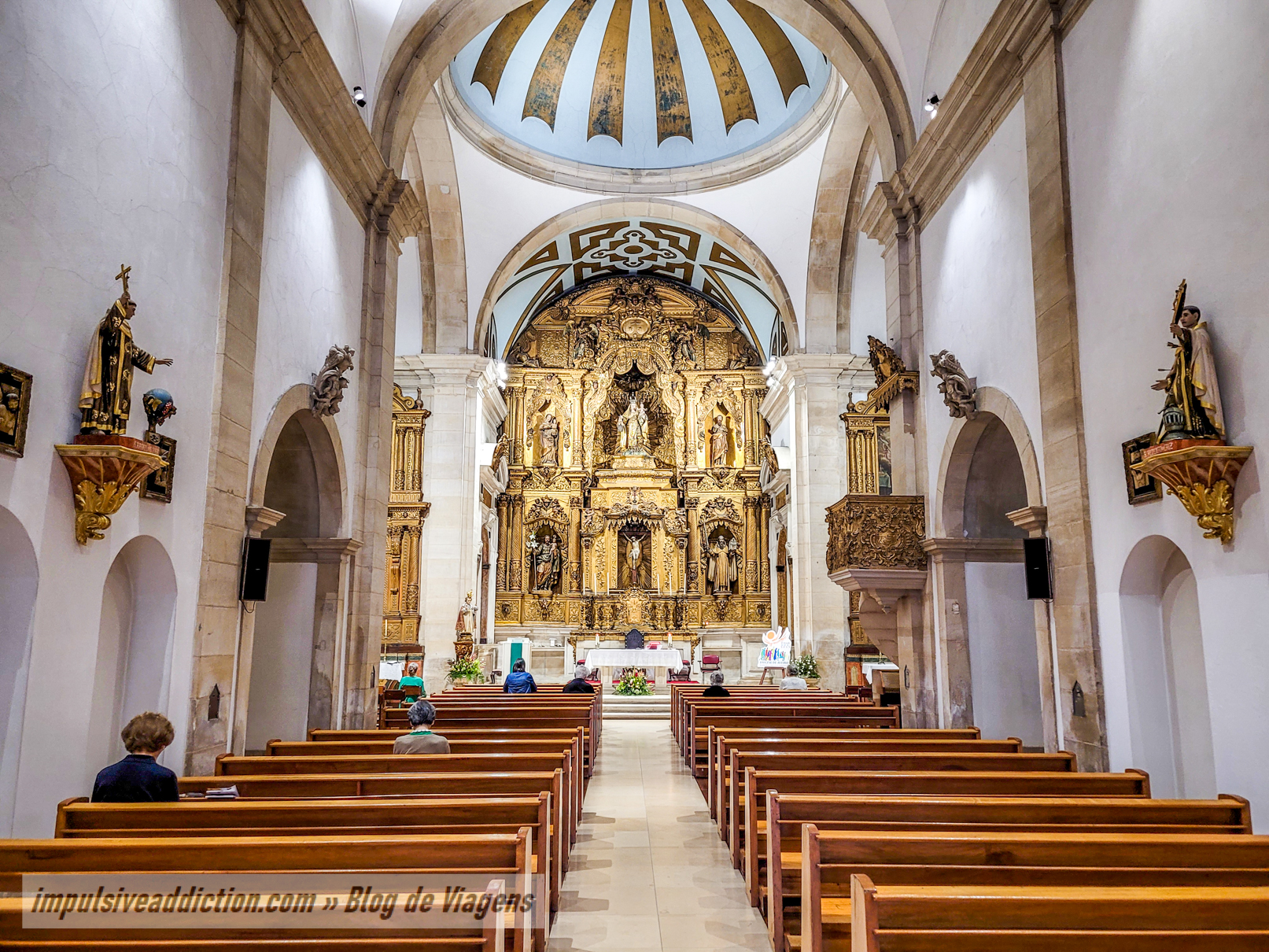
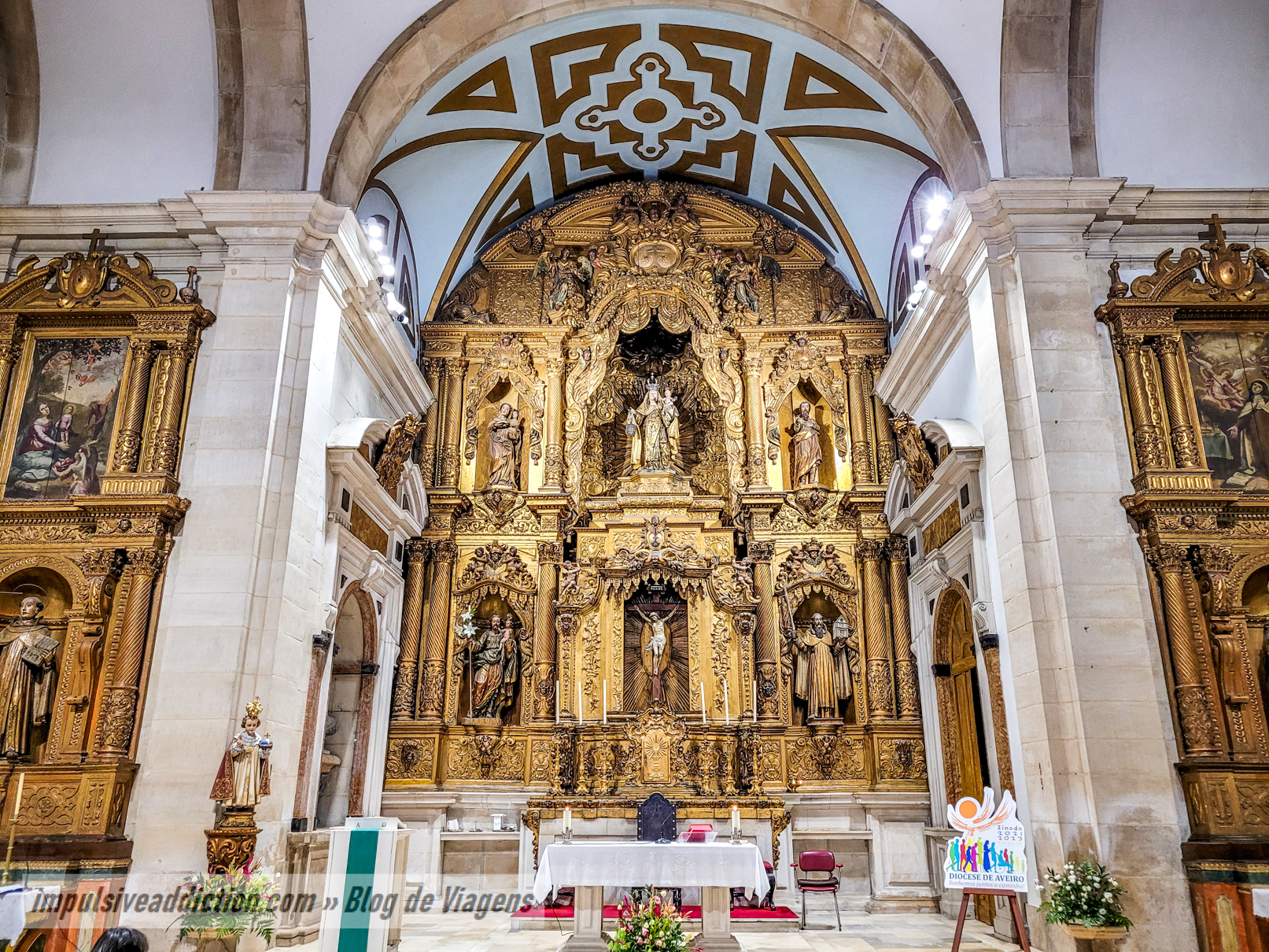
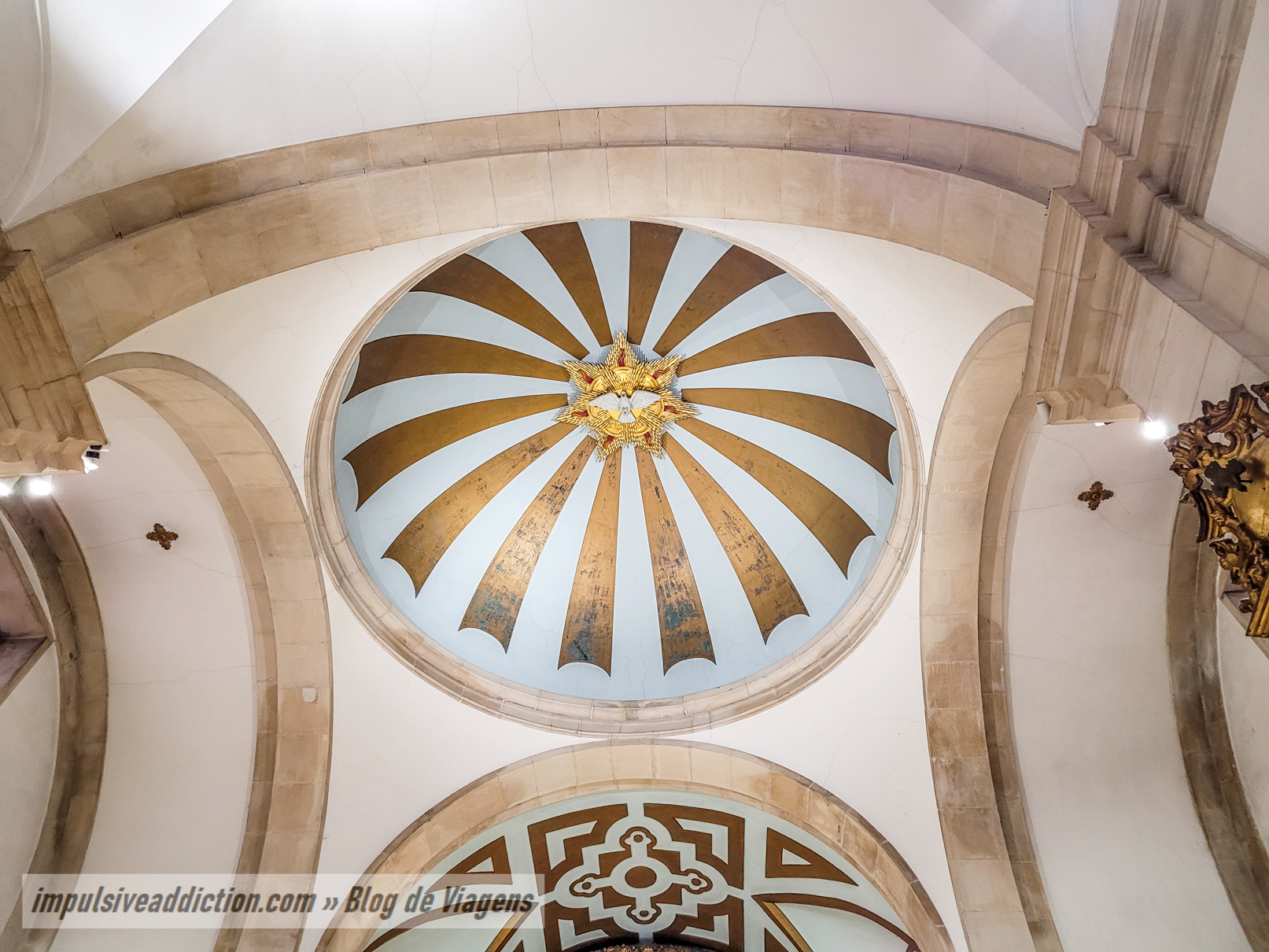
8. Art Nouveau on Rua do Carmo
Close the previous church, on Rua do Carmo, there are some buildings with excellent Art Nouveau details, such as:
- House Silva Rocha.
- The building of Pompeu Figueiredo.
- And the Palace of Rua do Carmo.
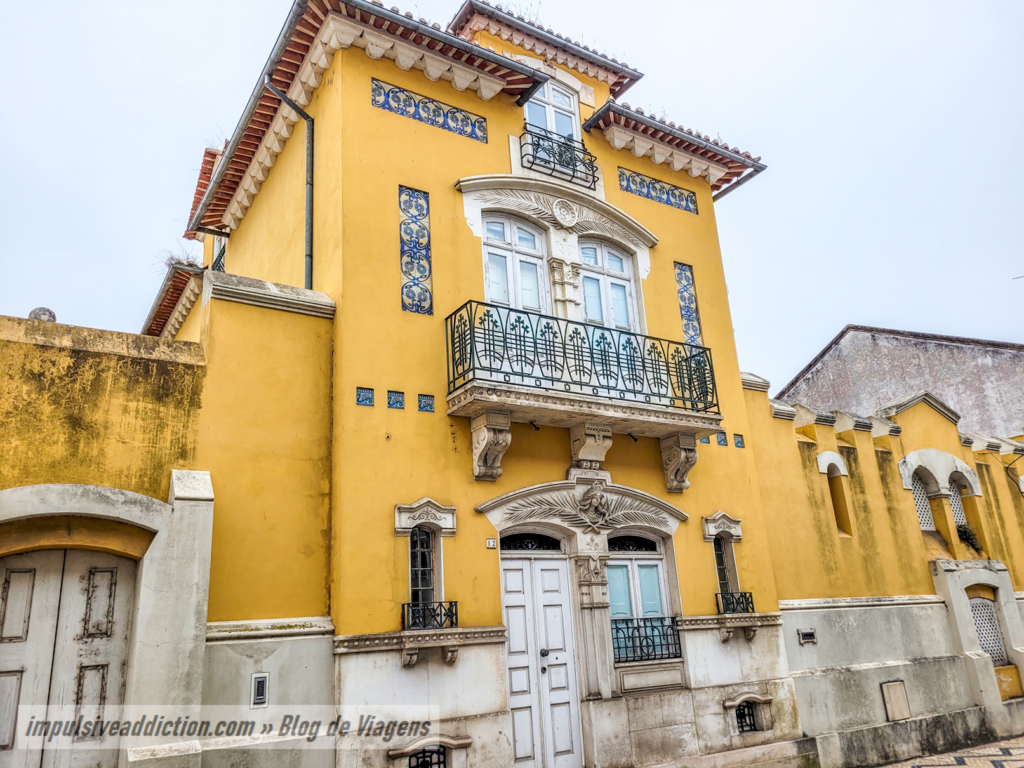
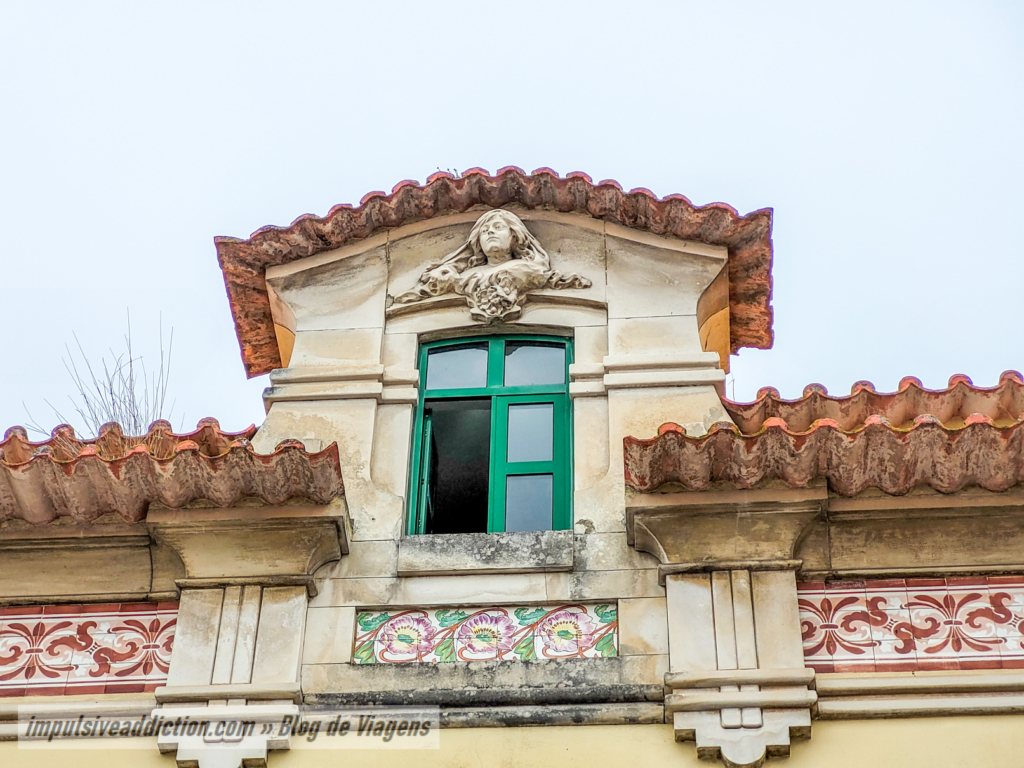
9. Chapel of Nossa Senhora da Alegria
I also write about the Chapel of Nossa Senhora da Alegria, from the 16th century. It is very simple in appearance, but there are modern tile panels next to it.
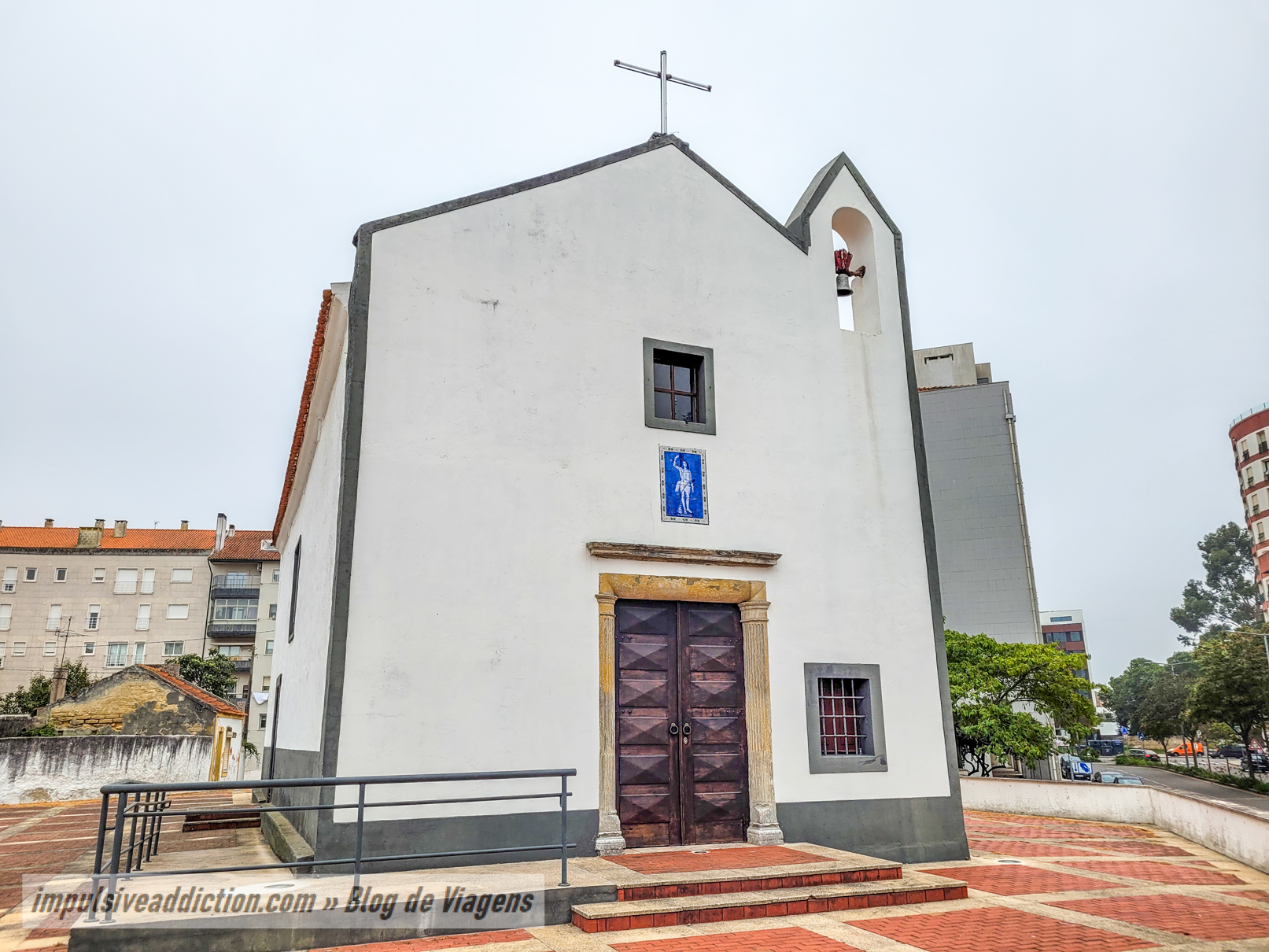
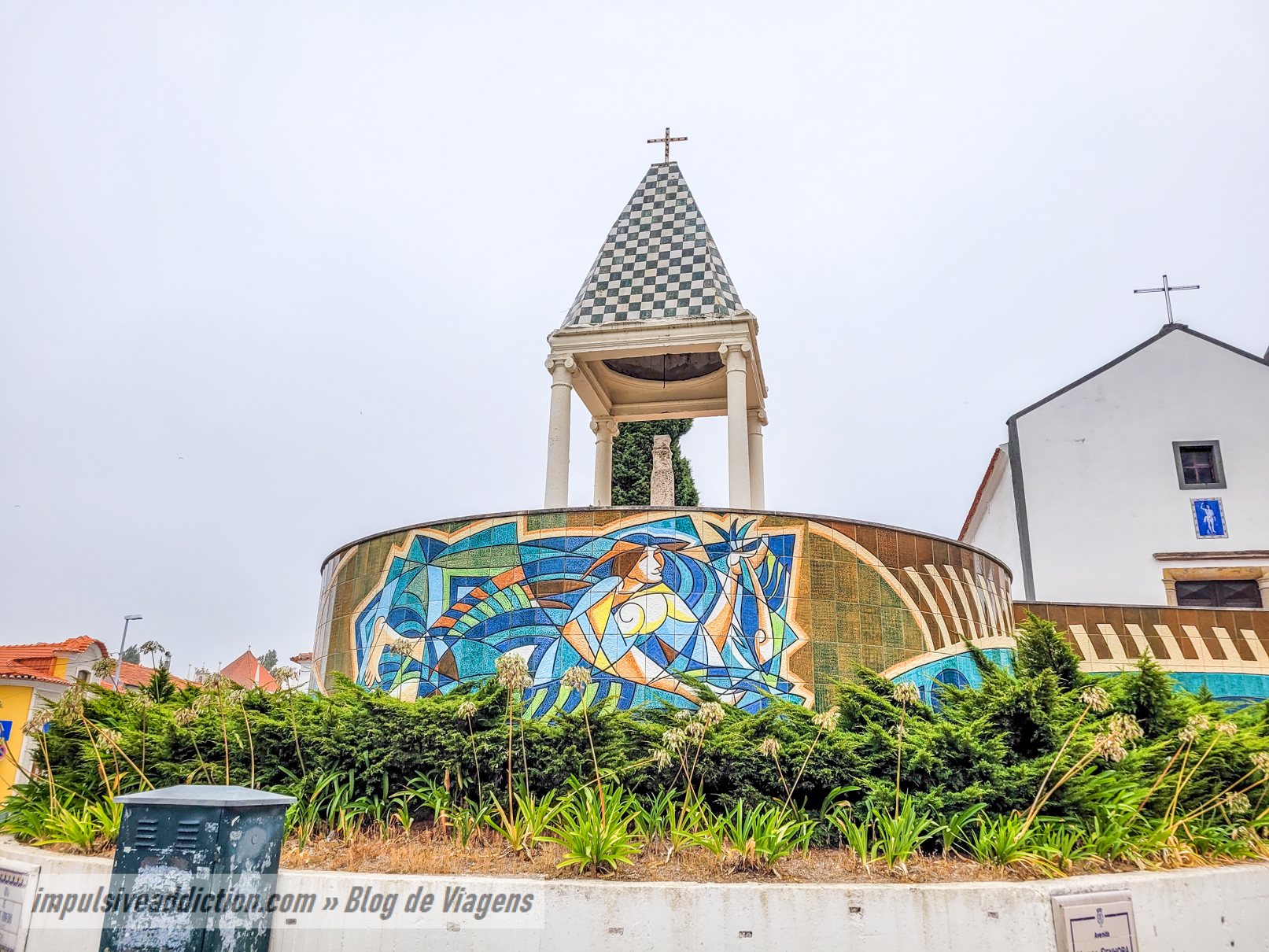
10. Chapel of Senhor das Barrocas
To finish, I mention the chapel of Senhor das Barrocas. It dates back to the first half of the 18th century, and I highlight its well-decorated porticoes, and the surrounding small garden and square.
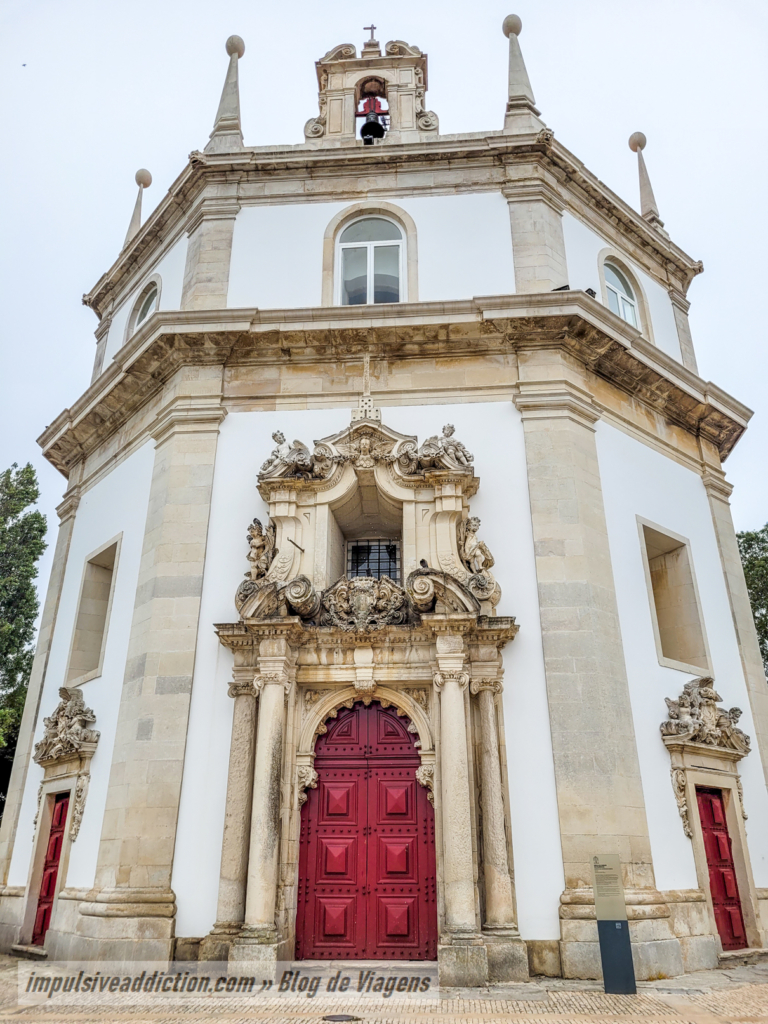
Art Nouveau itinerary to visit Aveiro
Throughout this post I have been mentioning some of the most emblematic buildings in the city of Aveiro, decorated with Art Nouveau elements. If you really don’t want to leave this city without seeing them up close, my first recommendation is to visit the Museum of Art Nouveau, located in the beautiful House of Major Pessoa.
Afterwards, go admire the facades of the buildings located on Rua João Mendonça, in addition to the previous house, pass by the Obelisk of Liberty, and also by Rua do Carmo, with another nucleus of architecture in this artistic style.
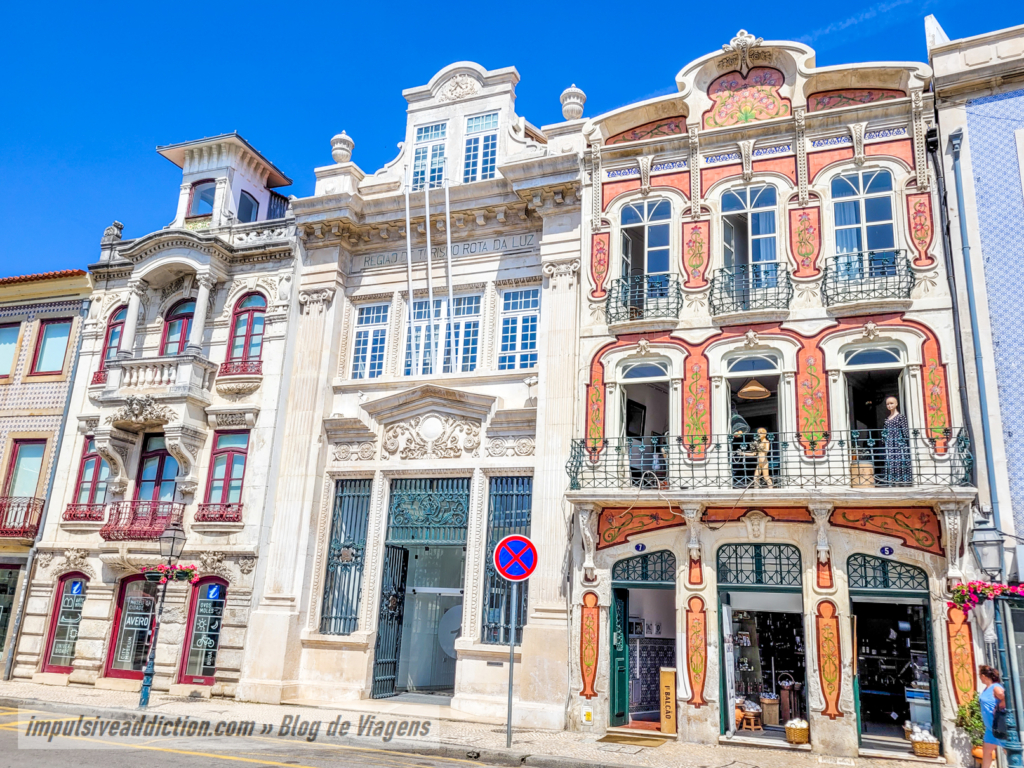
Itinerary to visit Aveiro in 1 day
If you only have 1 day to tour the city of Aveiro, you should focus on the essentials I mentioned in this article, regarding the historic center. Do everything you can from that list, with an emphasis on:
- Take a Moliceiro Boat Tour on the central canals of the city of Aveiro.
- Admire the Art Nouveau in the buildings on Rua João Mendonça.
- Visit the Museum of Santa Joana and the Cathedral of Aveiro.
- Visit Republic Square and enjoy the nightlife of Praça do Peixe, if possible.
- Eat the typical and sweet tripas of Aveiro. 😉
- Walk through the City Park of Aveiro, especially along the Gardens of Love and of Infante Dom Pedro.
- Do some quick shopping at the Forum of Aveiro and then walk to Fonte Nova Pier where the old Factory Jerónimo Pereira Campos is located.
- Add a lace of friendship to one of the bridges on Canal do Cojo.
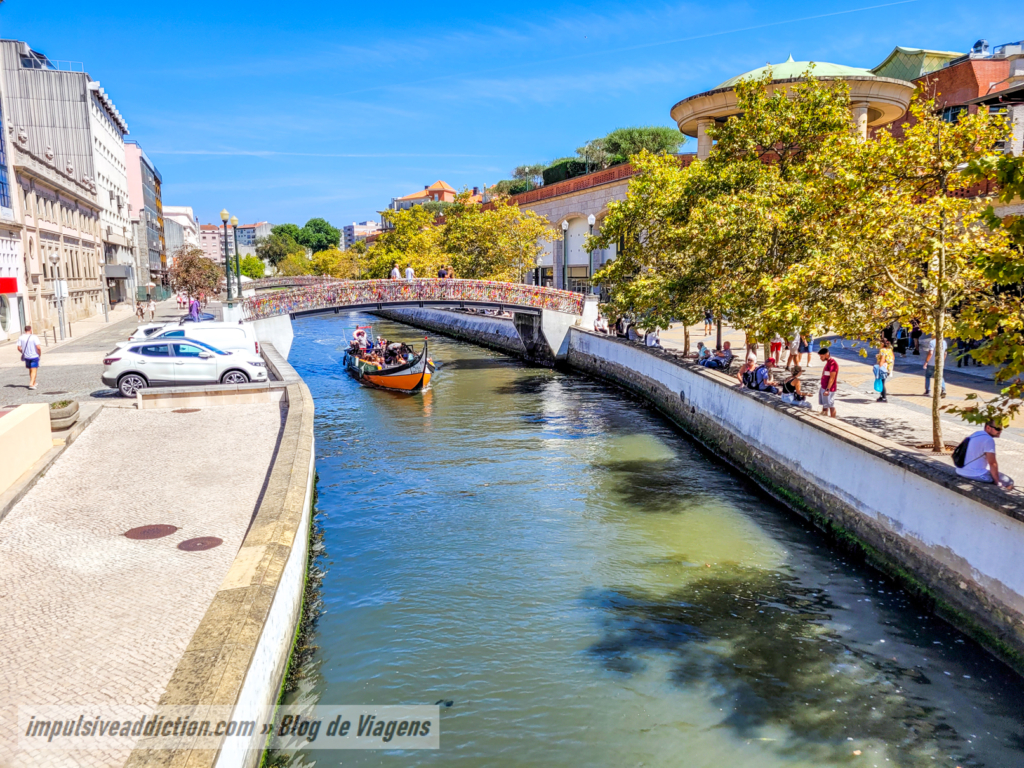
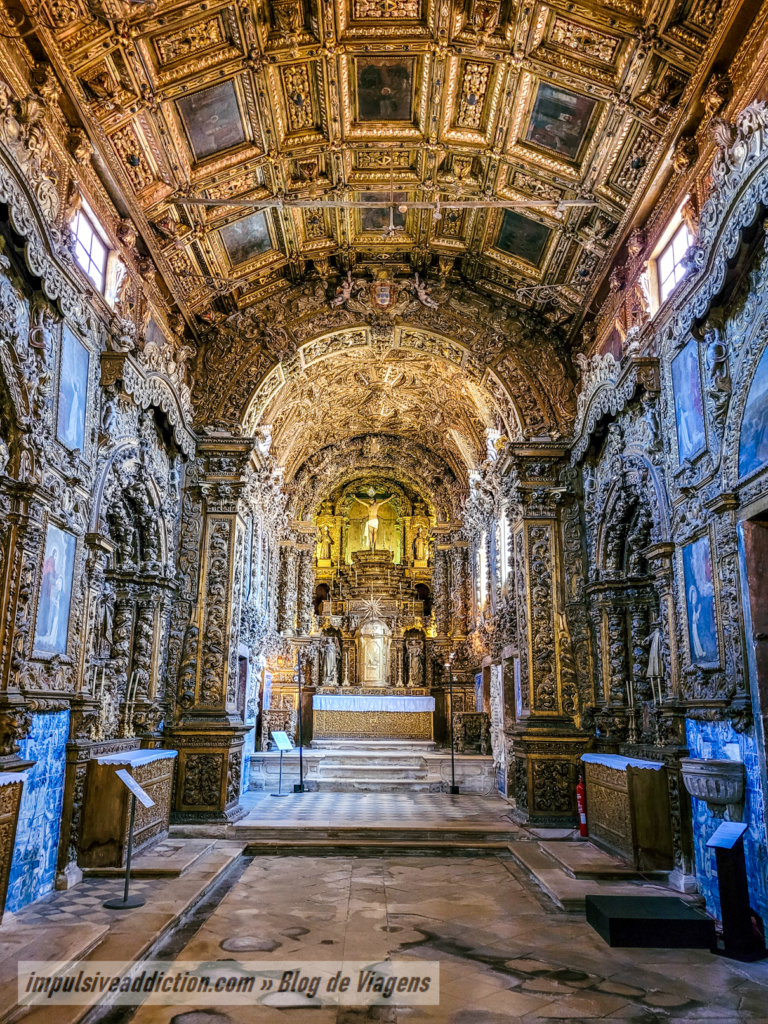
Itinerary to visit Aveiro in 2 days
In my opinion, a 1-day itinerary to visit Aveiro is insufficient to get to know the city in the detail it deserves. It would be perfect to have 2 days, for example a weekend, during which you’ll even have enough time to take a relaxed free BUGA ride.
With 2 days available, my recommendation is that you finish the list of essential things to do in Aveiro historic center presented in this post, setting off then to discover the surroundings:
- Marinha da Troncalhada Eco-Museum.
- The Salinic Spa of Marinha da Noeirinha.
- The Colored Houses of Costa Nova and the two beaches in the region: Costa Nova beach and Barra beach. Stroll along the available wooden walkways and don’t forget the existing guided tours.
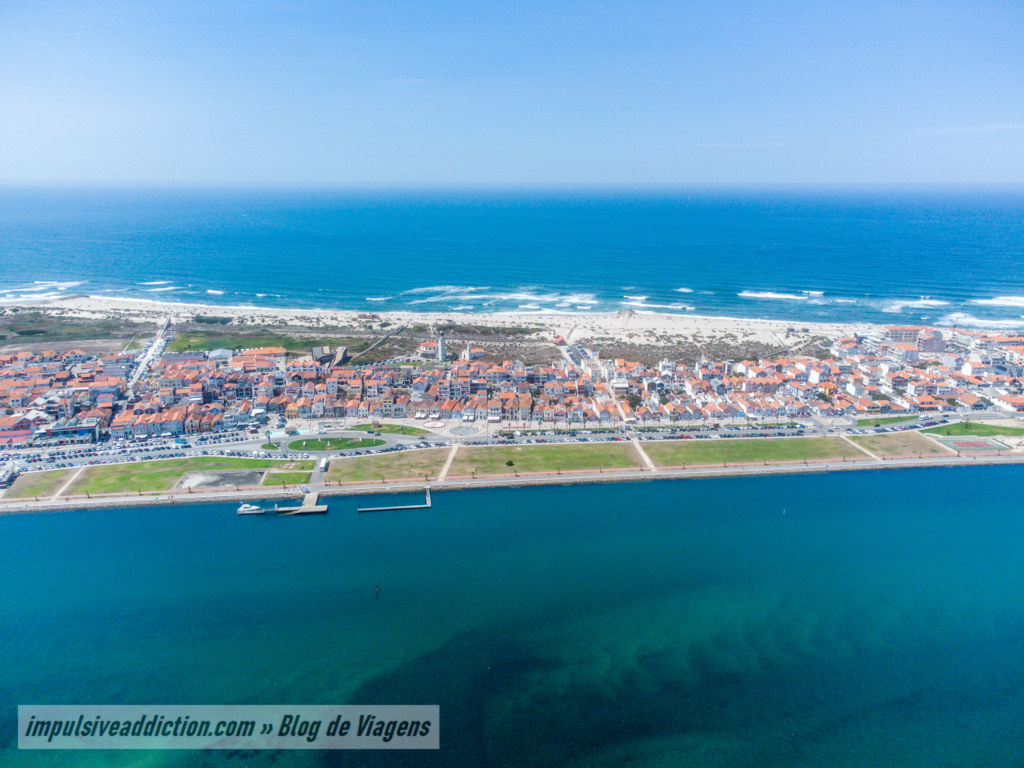
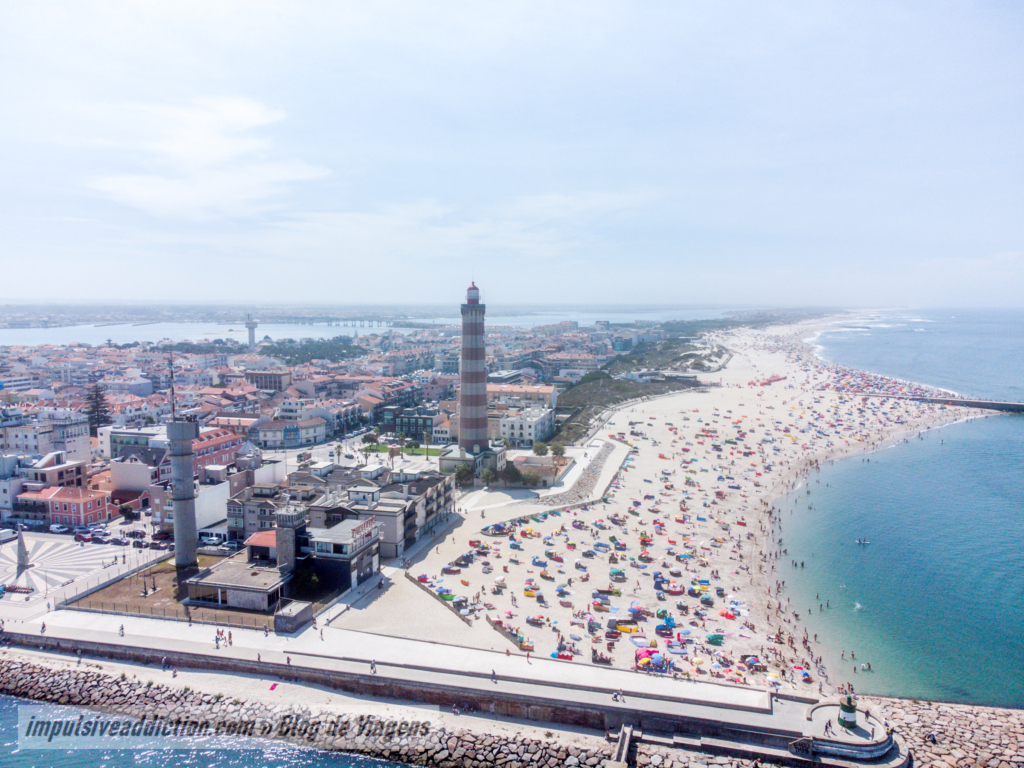
Itinerary to visit Aveiro in 3 days
Do you have 3 days for an itinerary to visit Aveiro? Then you will get to know more about the municipality of Ílhavo, in addition to Costa Nova and Barra area. I recommend visiting Vista Alegre and the Maritime Museum of Ílhavo, with emphasis on the main nucleus with the Codfish Aquarium. More interesting than Santo André Ship-Museum will be the Cod Port of Aveiro, full of huge fishing vessels.
On this third day, choose also to trail along the spectacular walkways of Ria de Aveiro, starting at Esgueira Pier. How about experimenting Paddle Surfing in Aveiro Estuary.
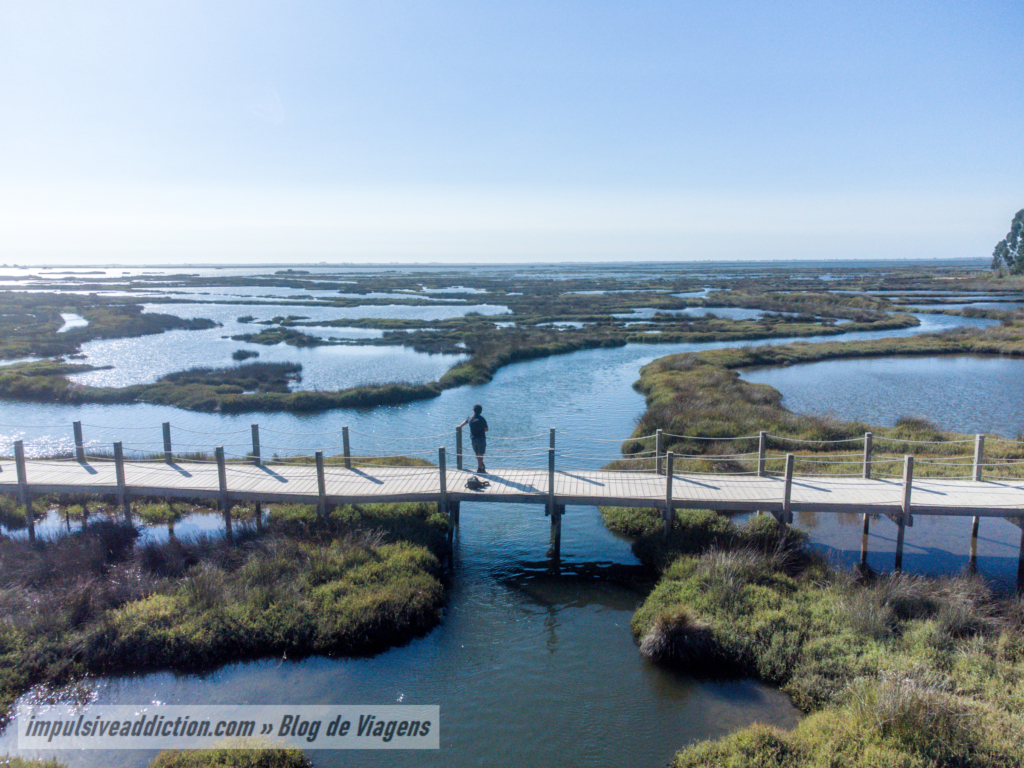
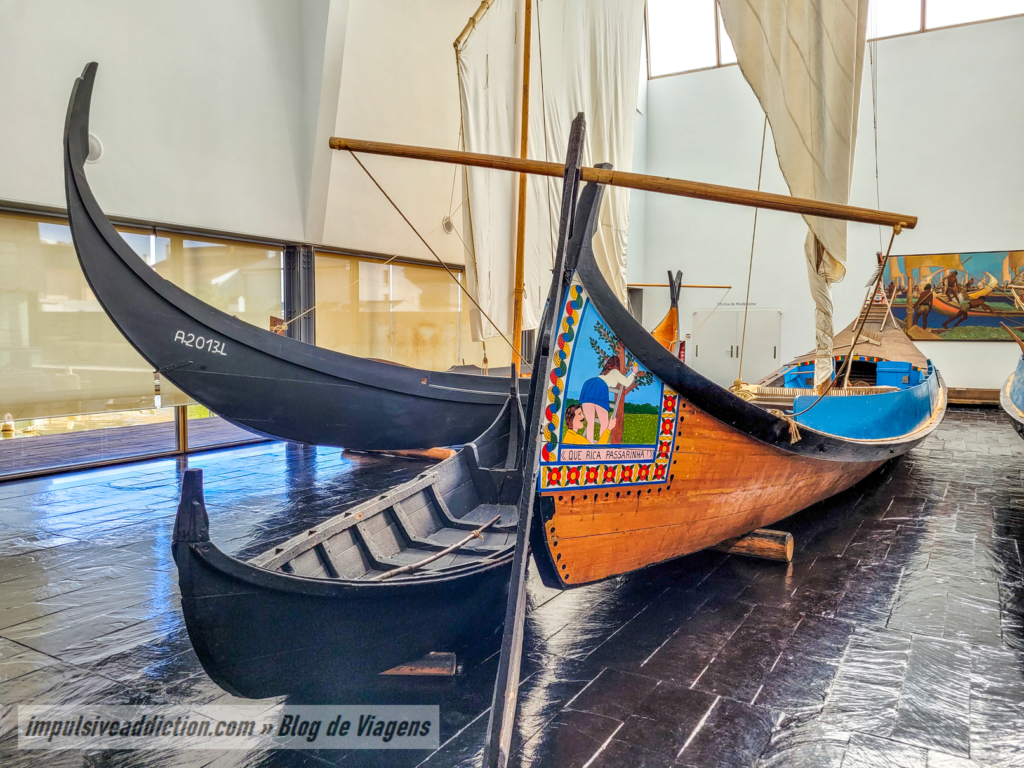
Itinerary to visit Aveiro in 4 or 5 days
After 3 days, all the essential things to do in Aveiro and nearby surroundings will be finished, so the focus may shift to the region of Murtosa and Estarreja, with superb landscapes of Ria de Aveiro. Go on a boat trip to São Jacinto and be sure to take your car with you on the boat, so you can drive next to Estarreja, passing through Torreira. Go admire the urban art of Estarreja.
How about heading to Ovar, known for its beautiful tiled houses? Have you heard about the beautiful tiled churches of Ovar: the Church of Cortegaça and the Church of Válega?
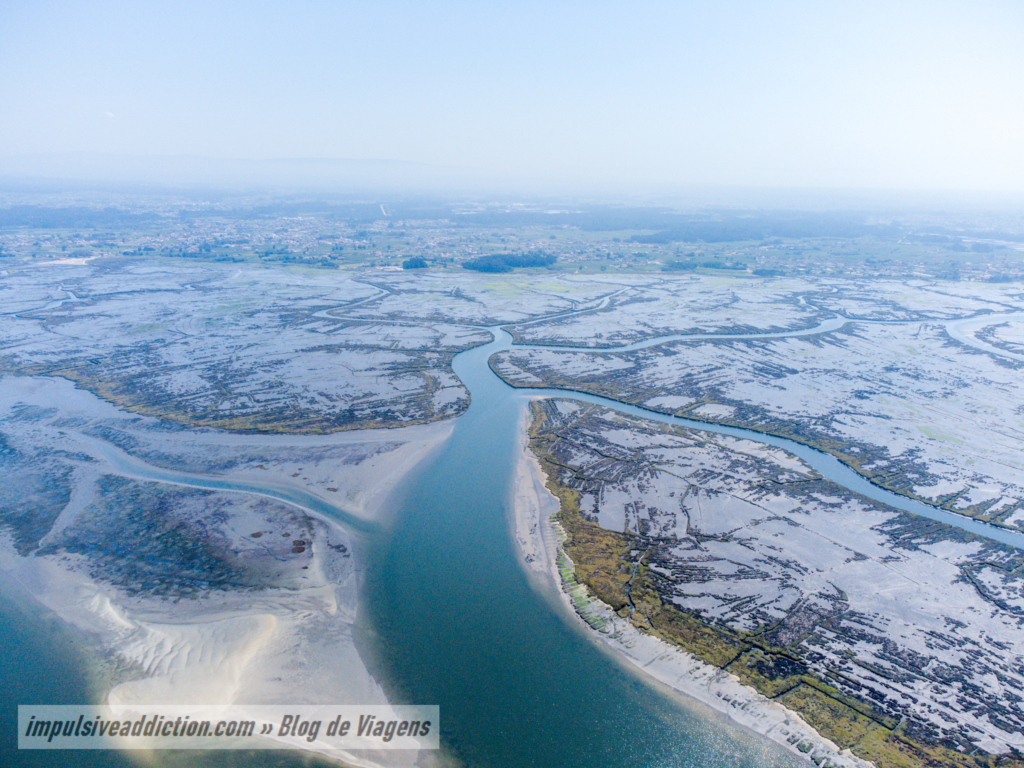
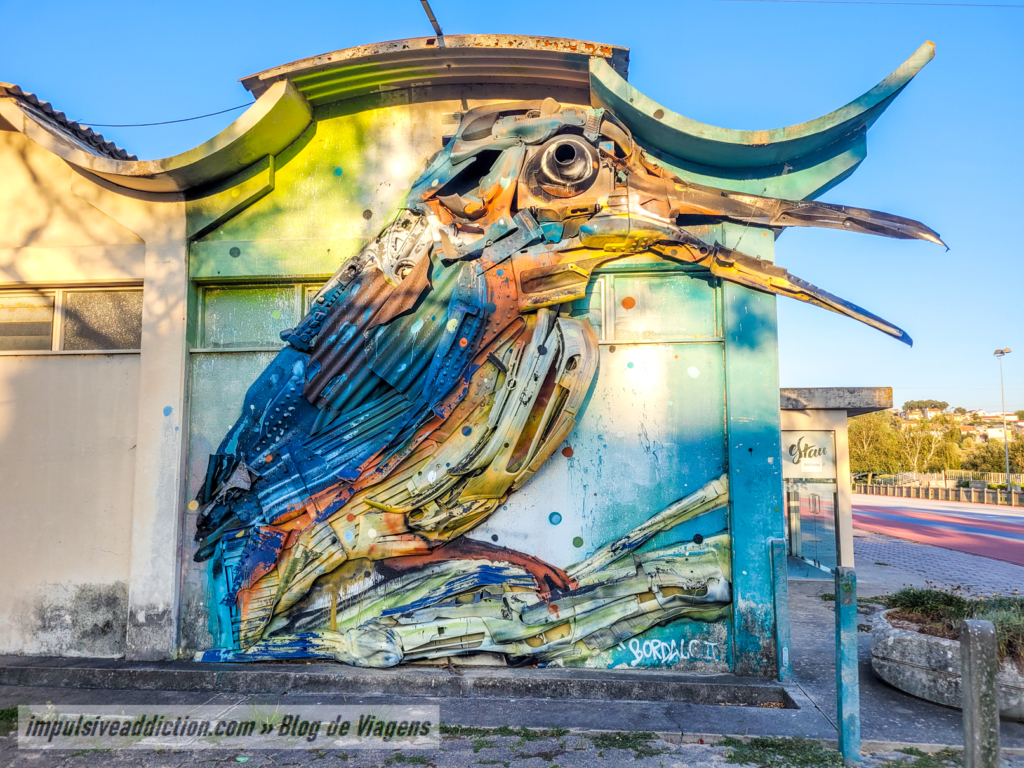
Other Itineraries and Travel Guides in Portugal
- N2 Portugal Road Trip Itinerary
- Madeira Itinerary and Travel Guide
- São Miguel Itinerary and Travel Guide (Azores)
- Terceira Itinerary and Travel Guide (Azores)
- Pico Itinerary in Azores
- Faial Itinerary in Azores
- Minho | Northern Portugal Itinerary
- Porto Itinerary and Travel Guide
- Things to do In Braga (Minho)
- Things to do in Guimarães (Minho)
- Things to do in Viana do Castelo (Minho)
- Peneda Gerês National Park Itinerary
- Douro Valley Itinerary
- Trás-os-Montes Itinerary
- Things to do in Bragança
- Montesinho Natural Park Itinerary
- Douro International Natural Park Itinerary
- Things to do in Coimbra
- Things to do in Leiria
- Things to do in Fatima
- Things to do in Nazaré
- Things to do in Peniche
- Things to do in Évora (Alentejo)
- Things to do in Beja (Alentejo)
- Algarve Road Trip Itinerary
- Things to do in Lagos (Algarve)
- Things to do in Portimão (Algarve)
- Things to do in Faro (Algarve)
- Things to do in Tavira (Algarve)
I hope you enjoyed this article and list of things to do in Aveiro. Don’t forget to leave your feedback below, or just comment about your own trip in my country.
